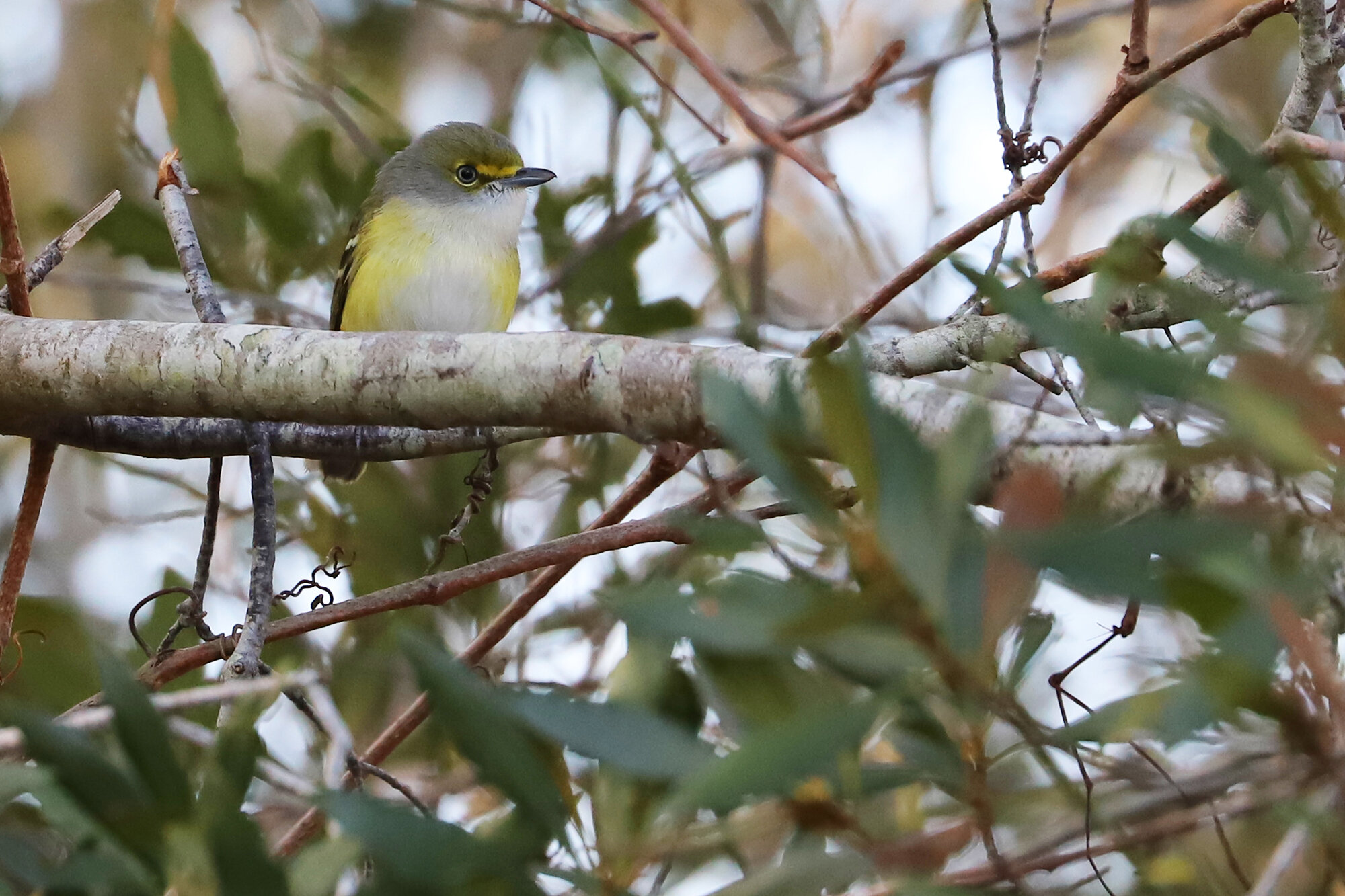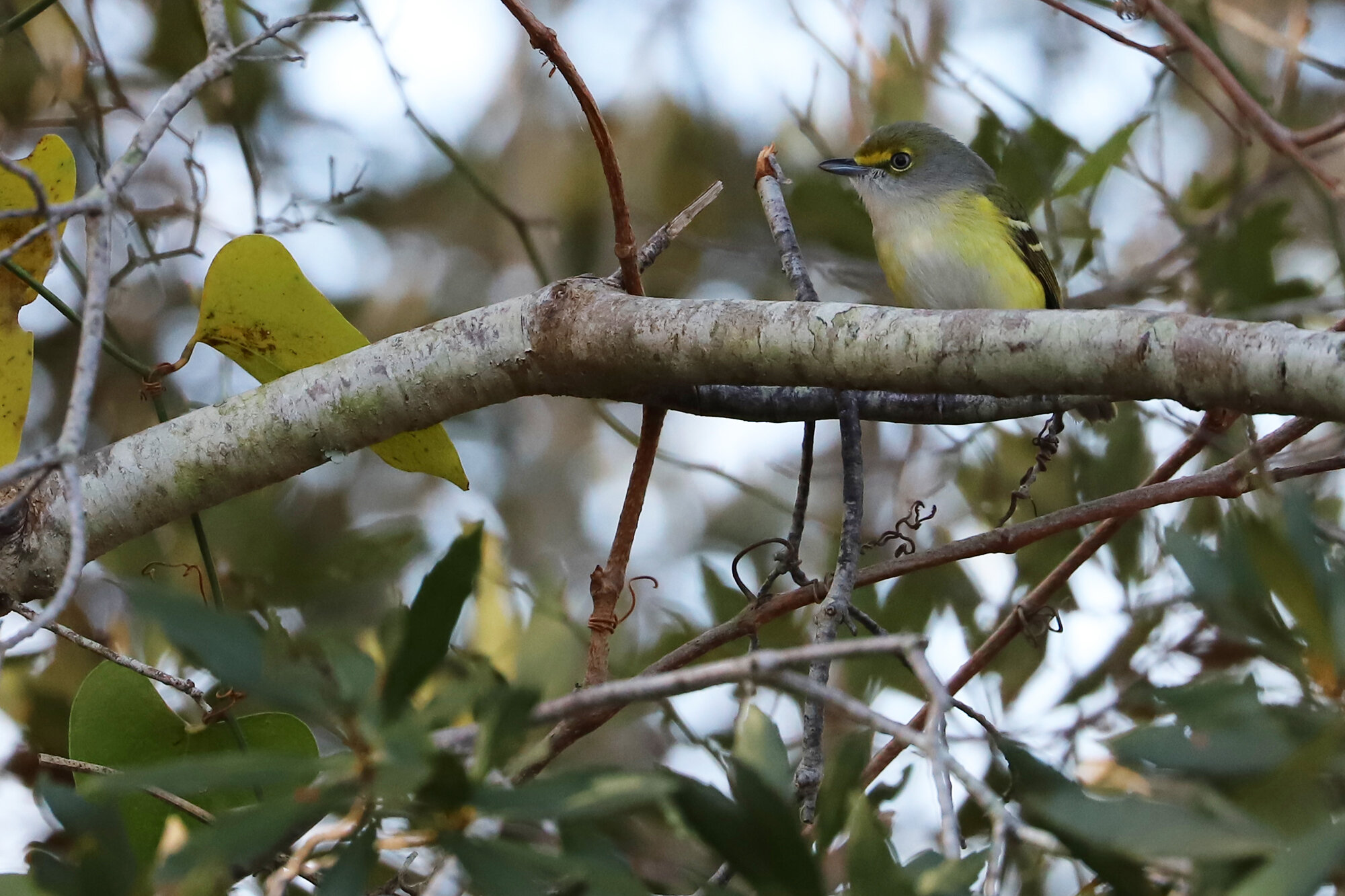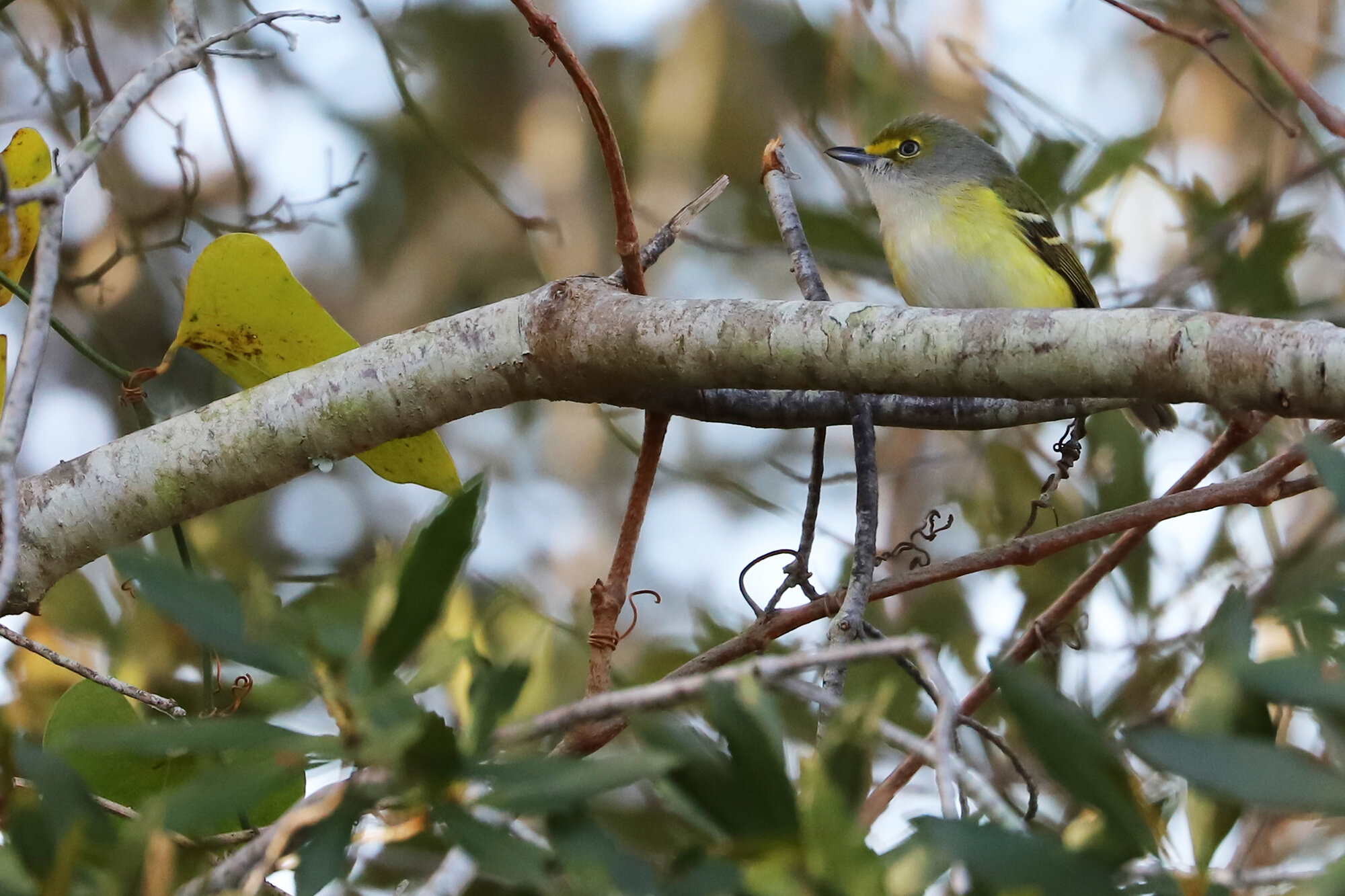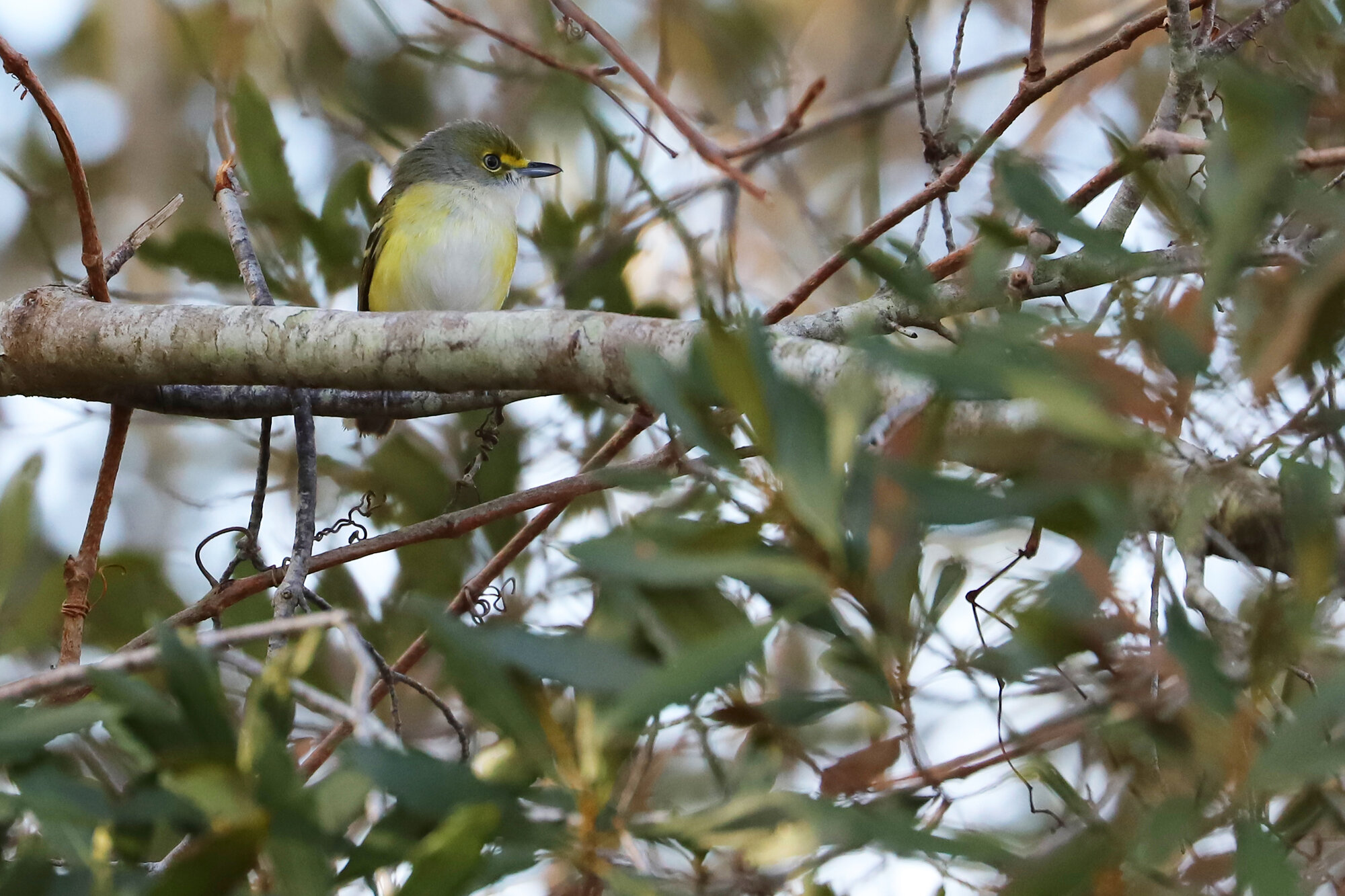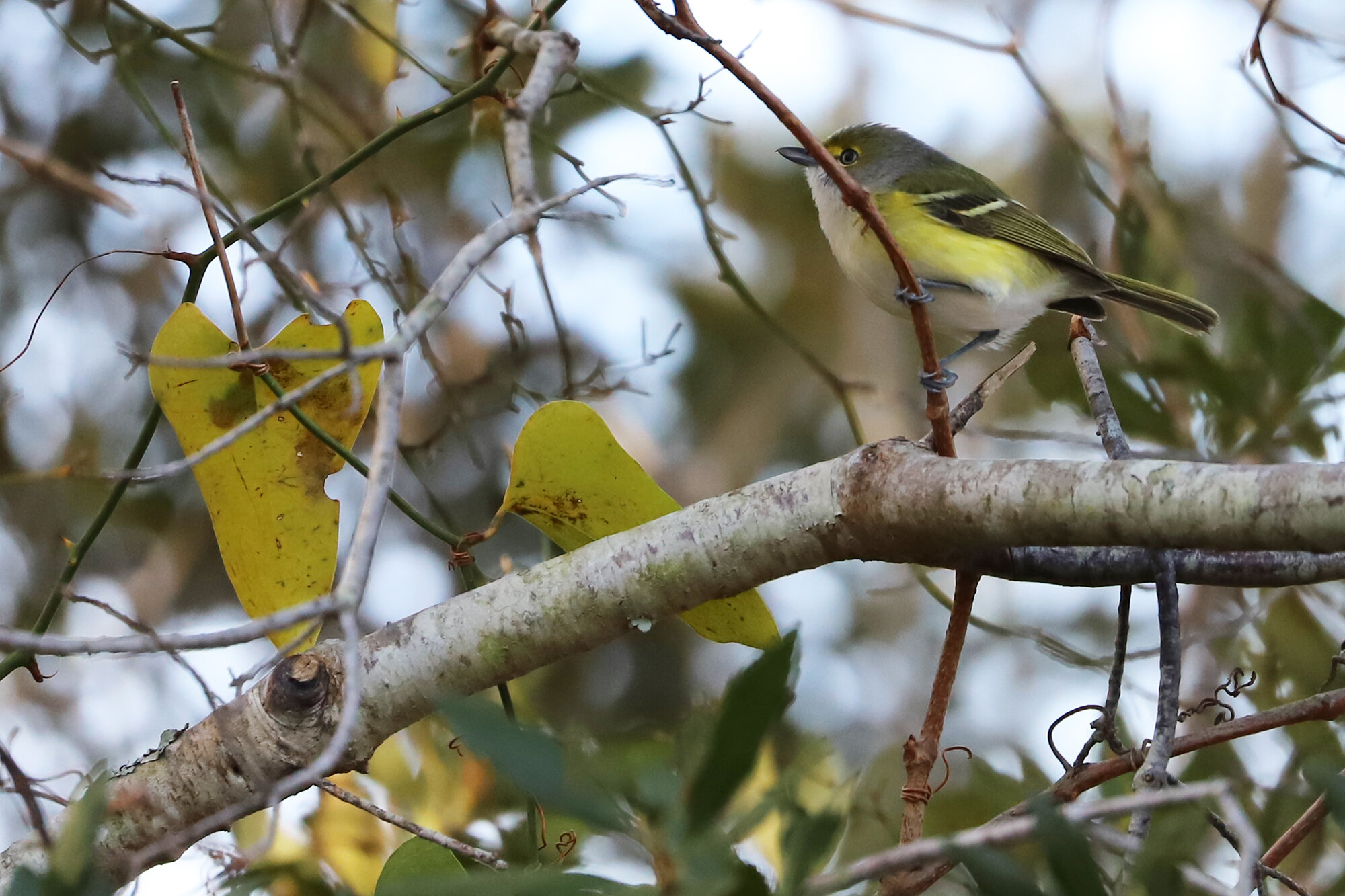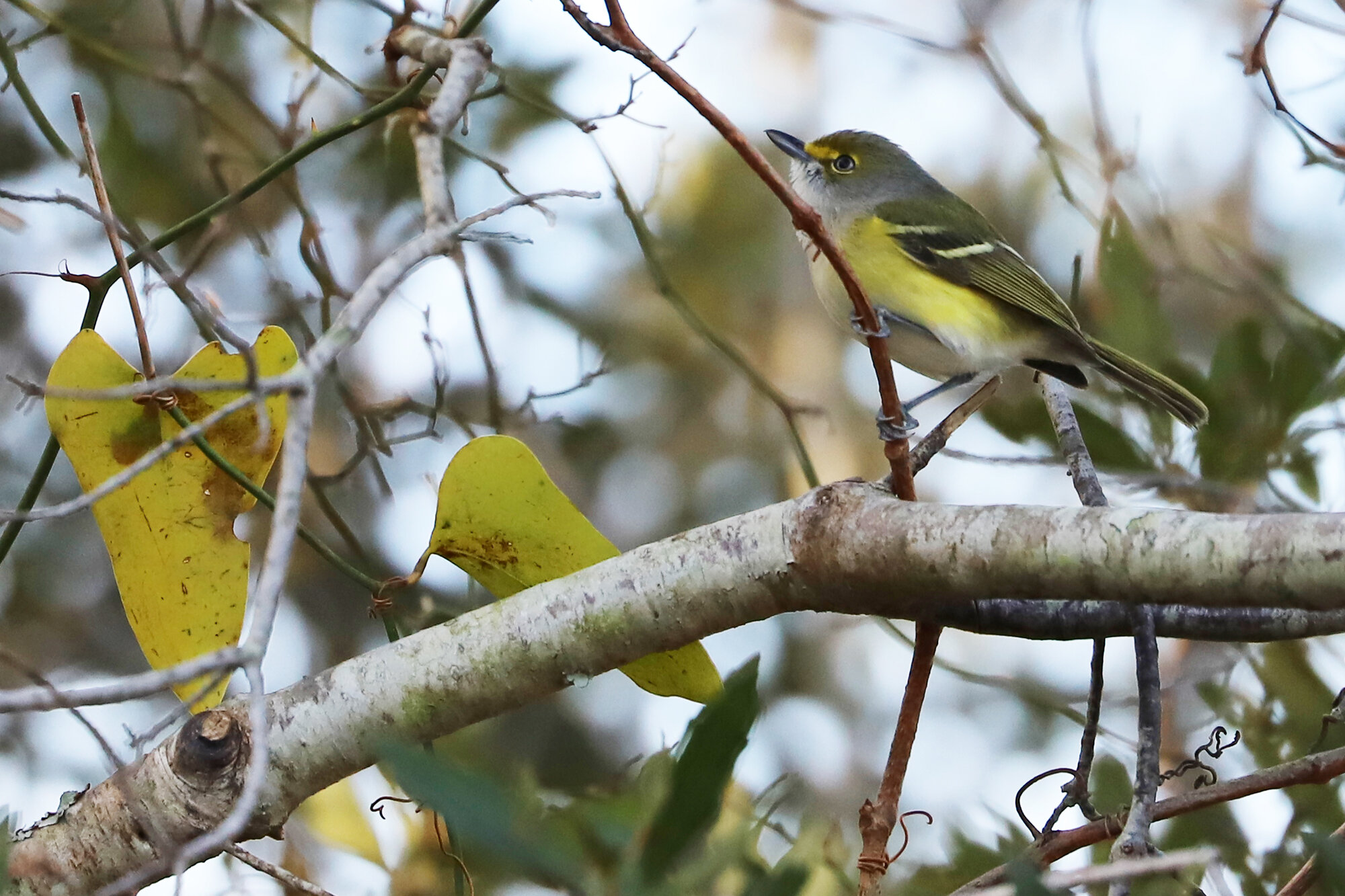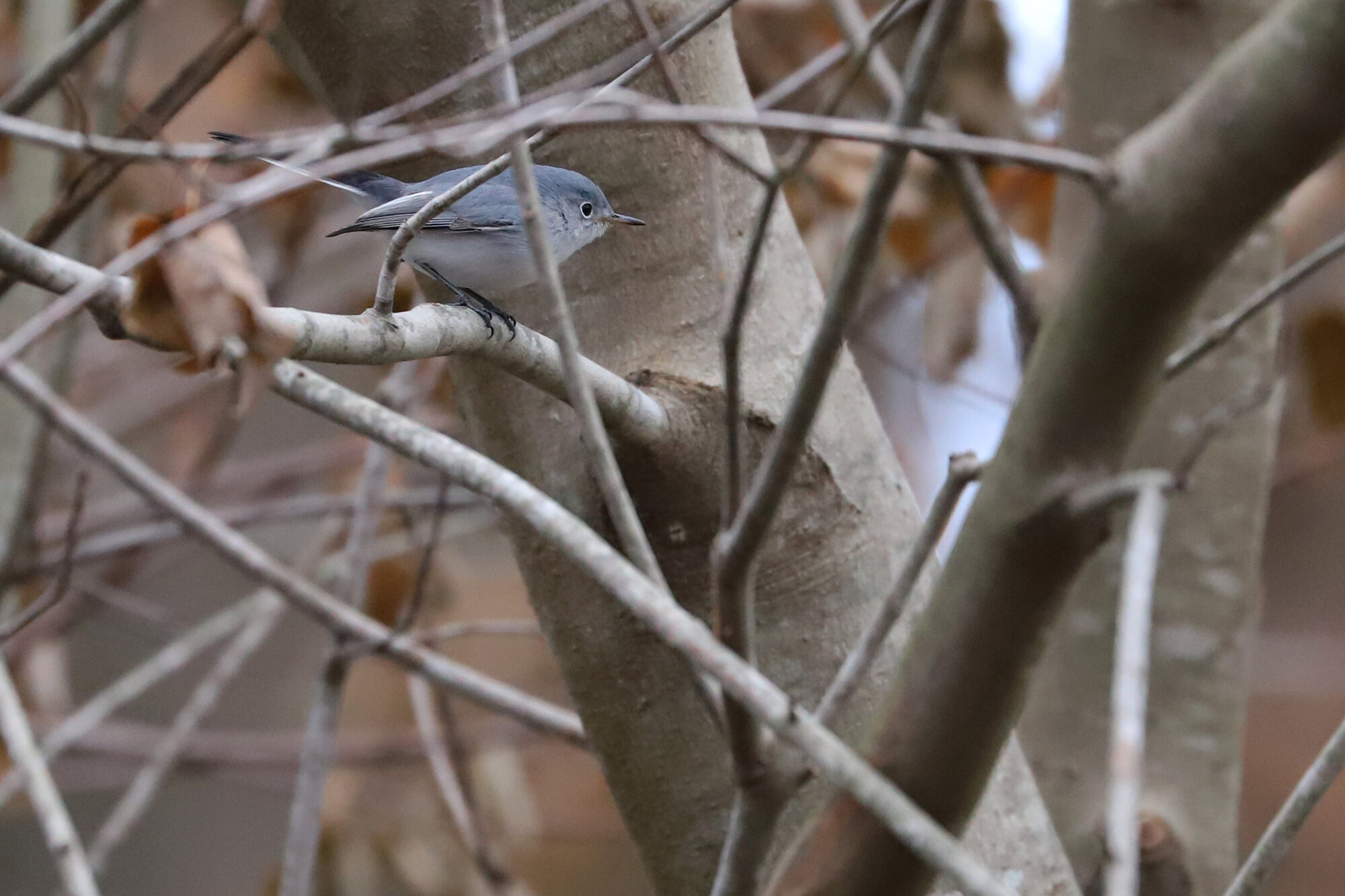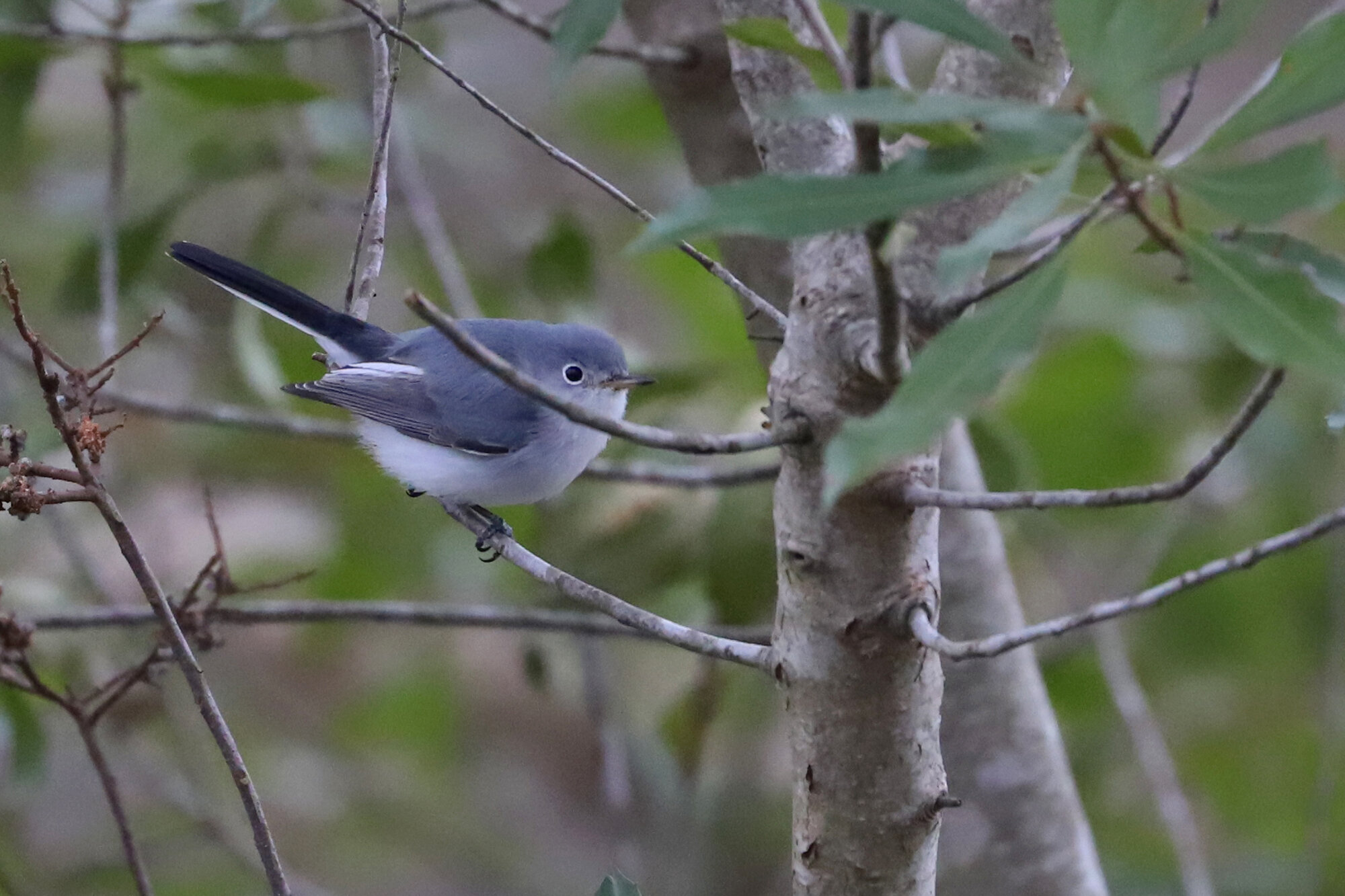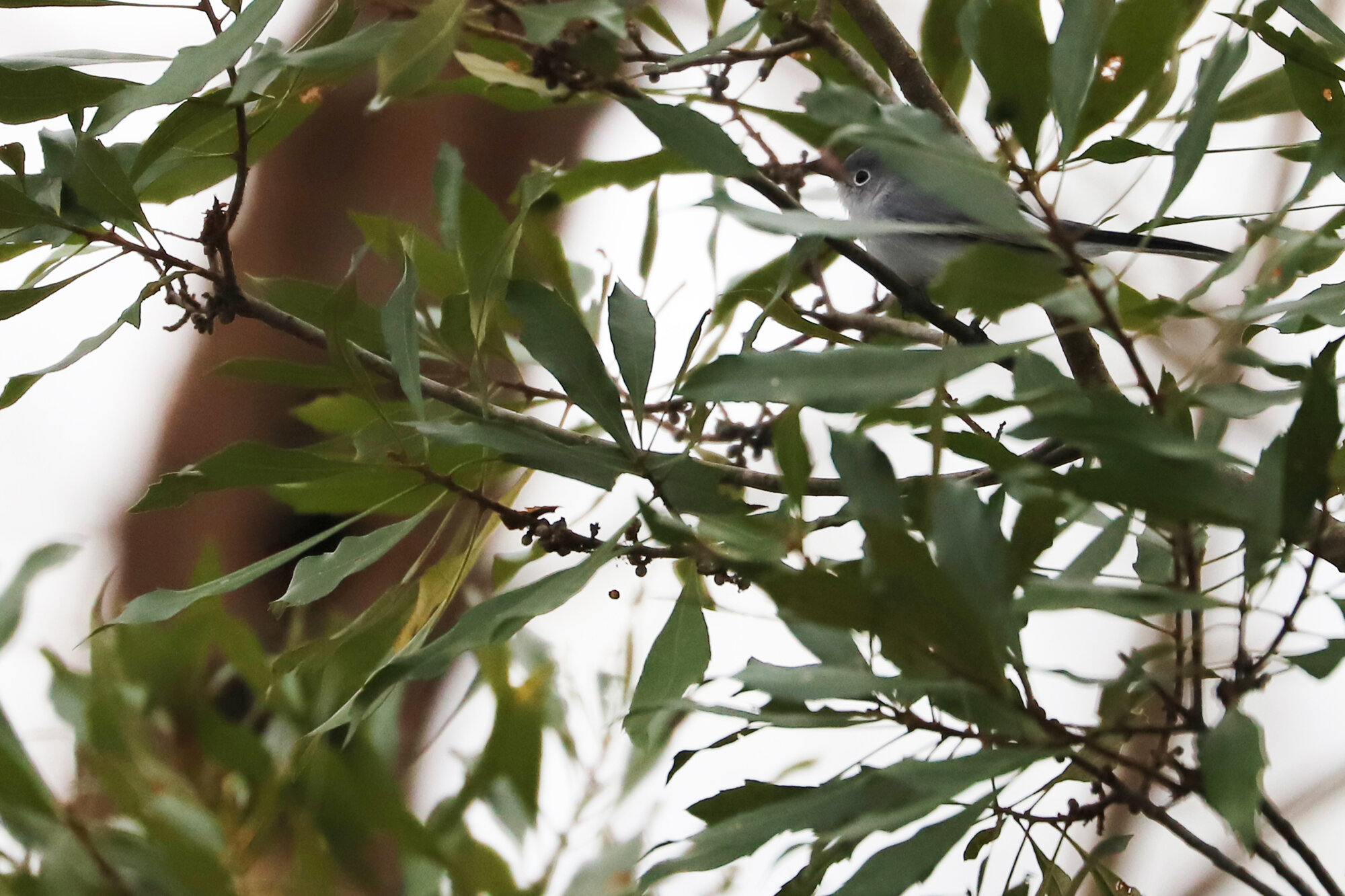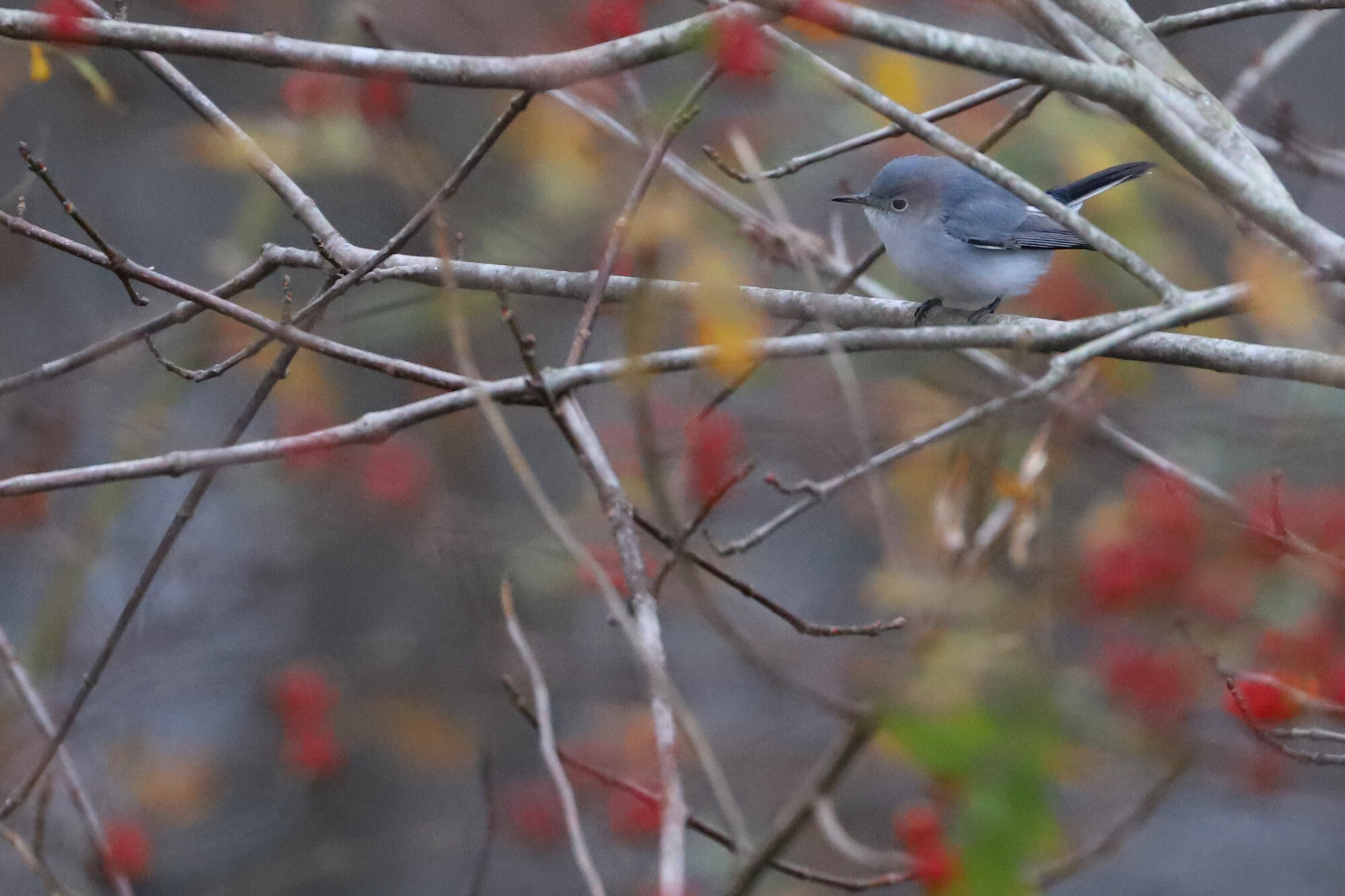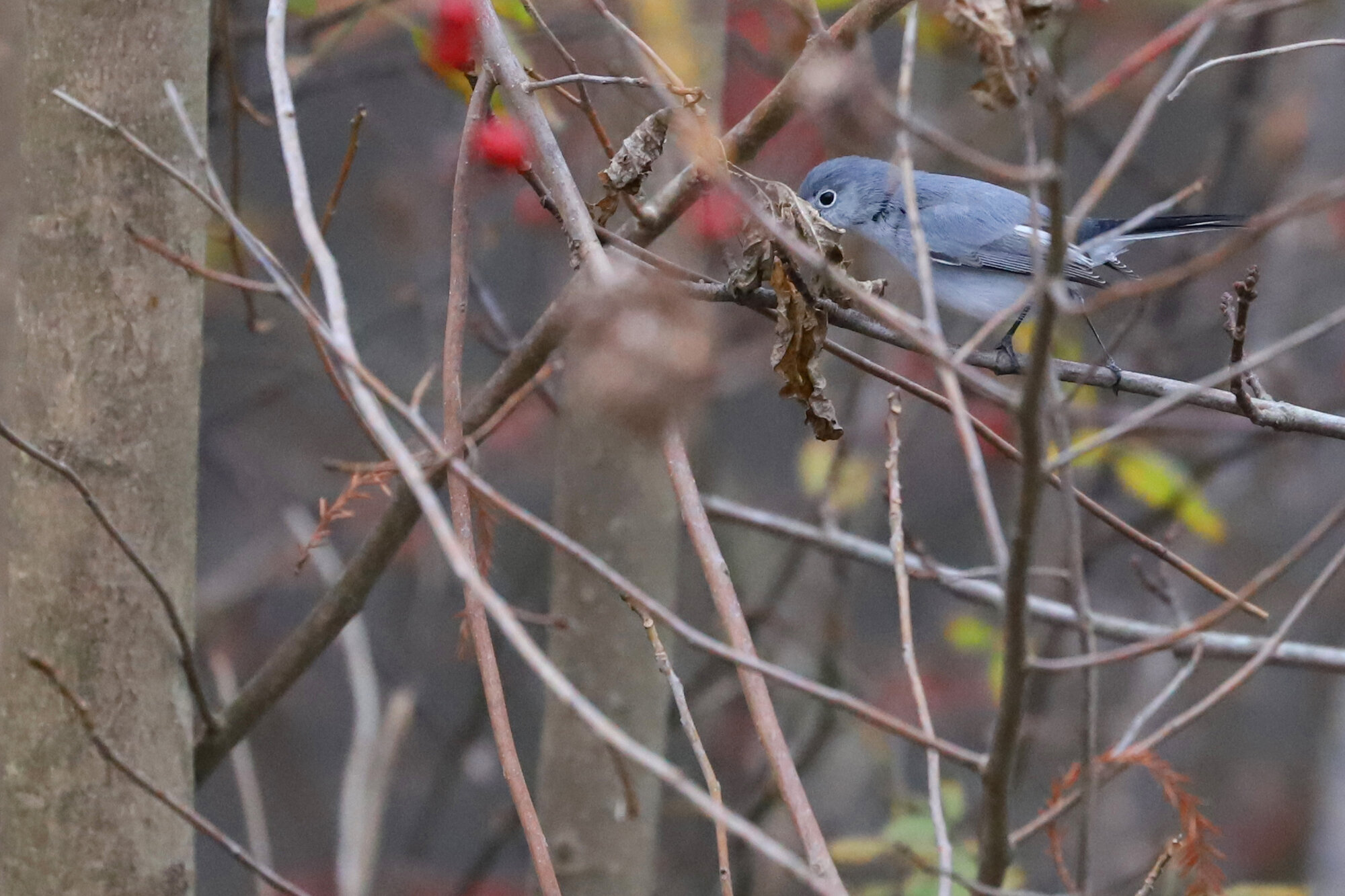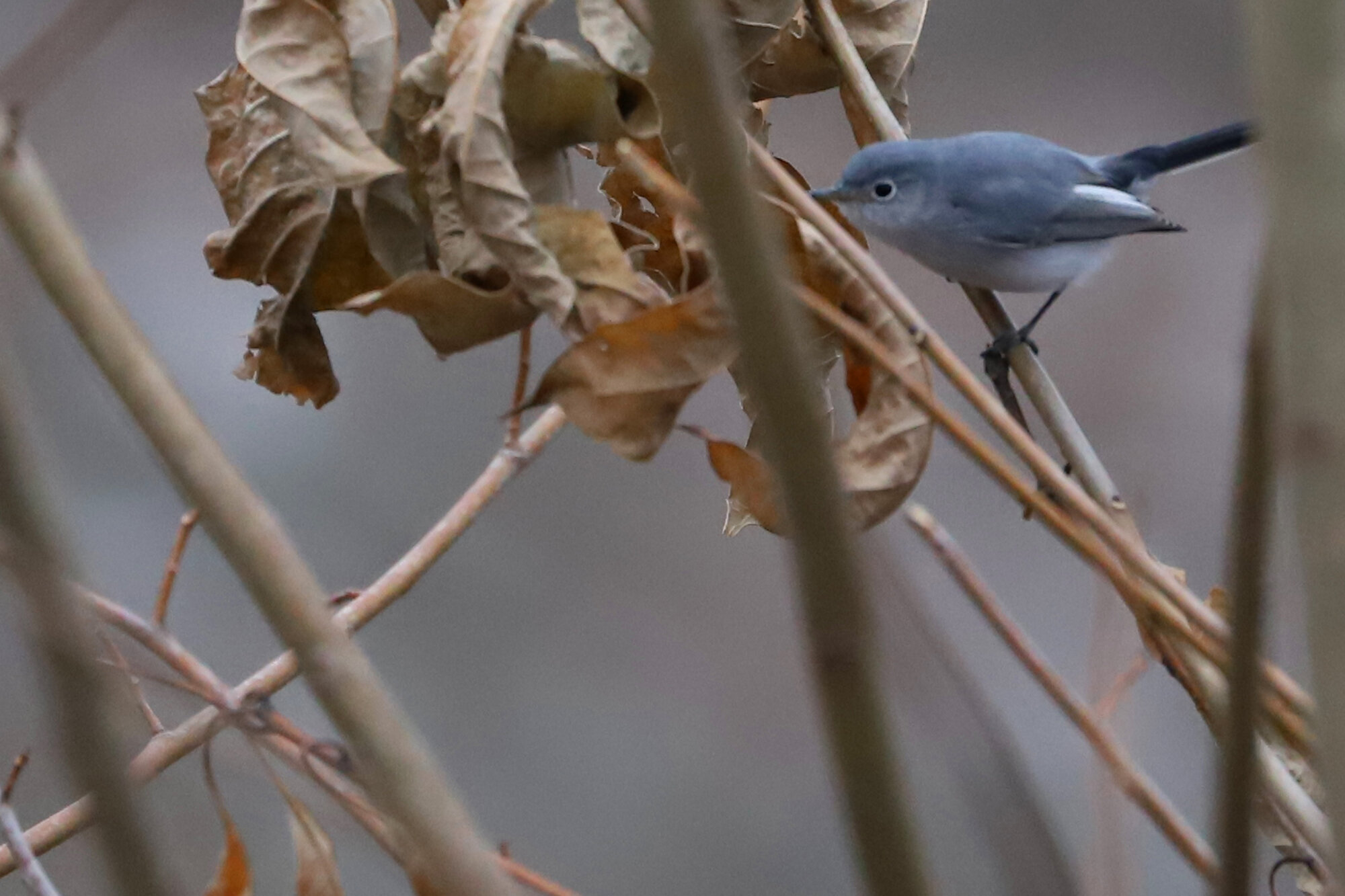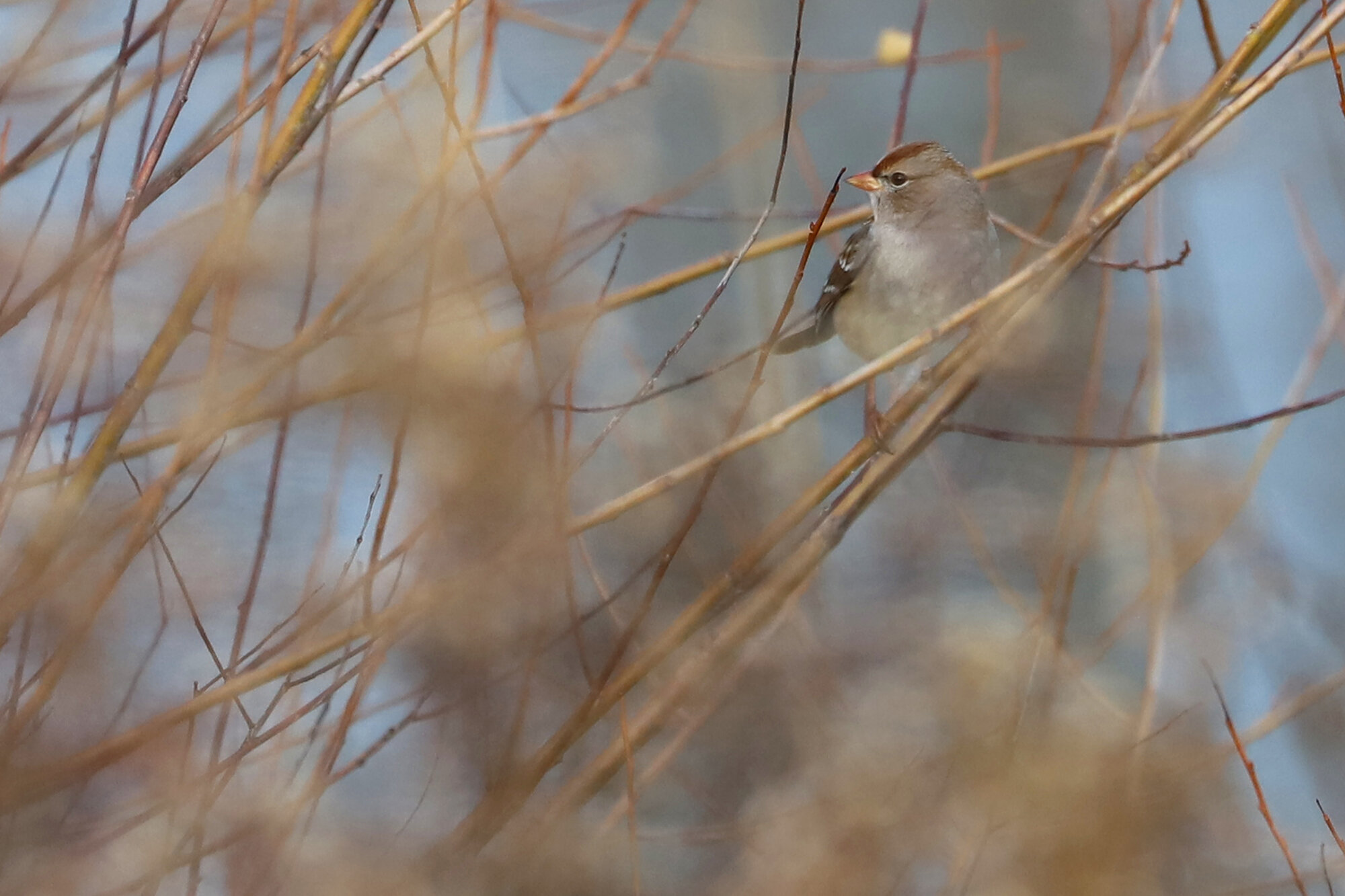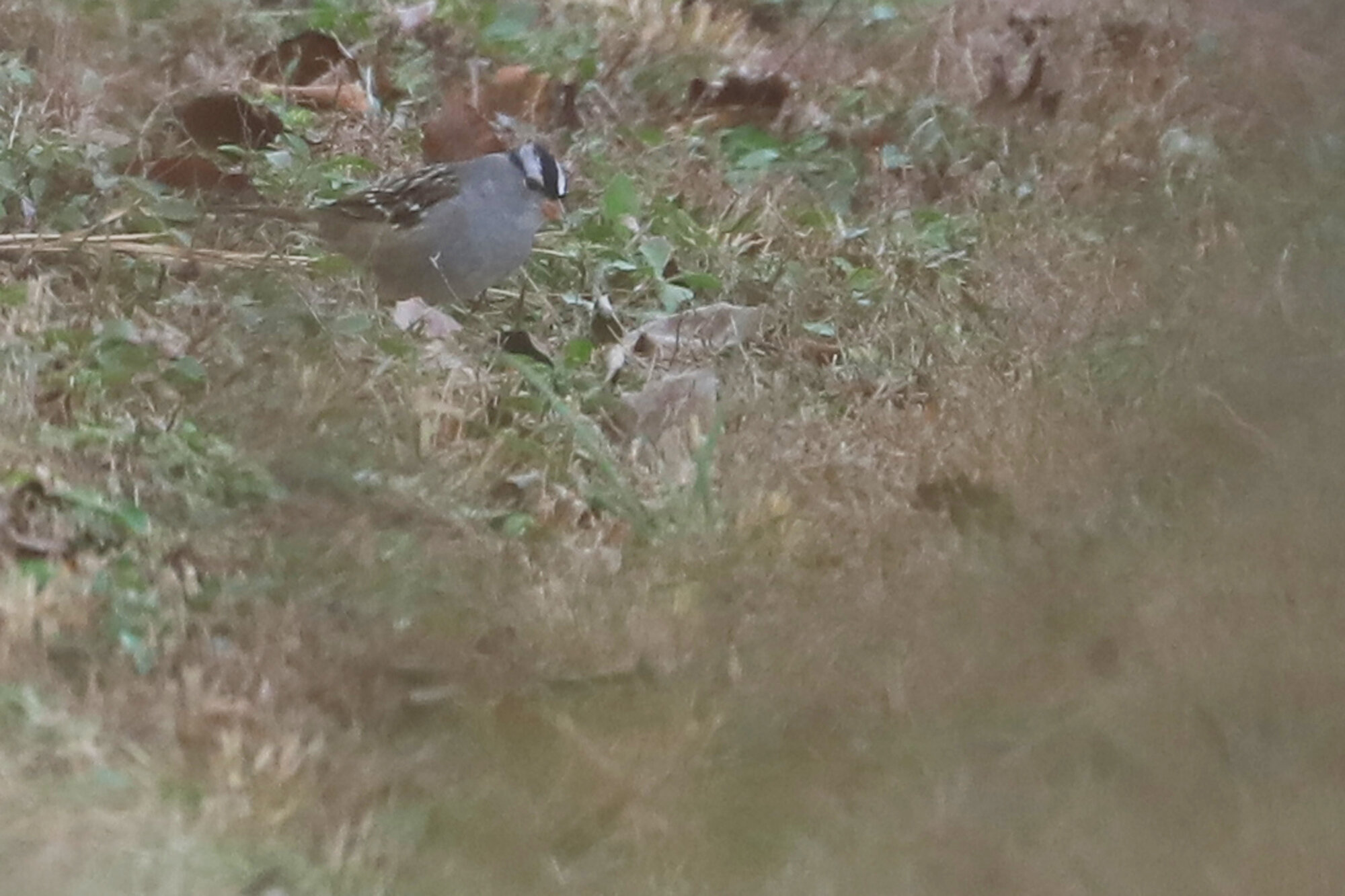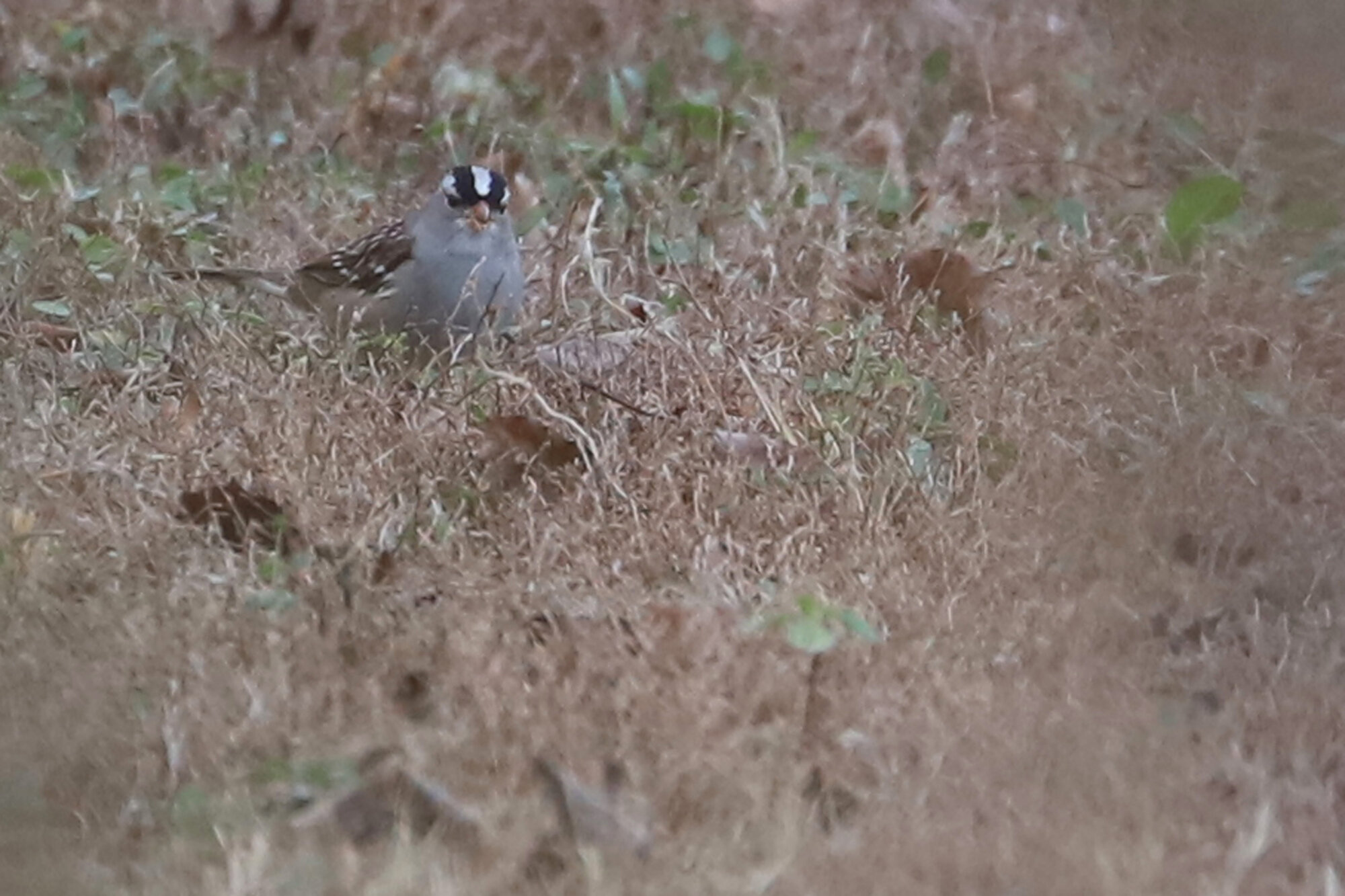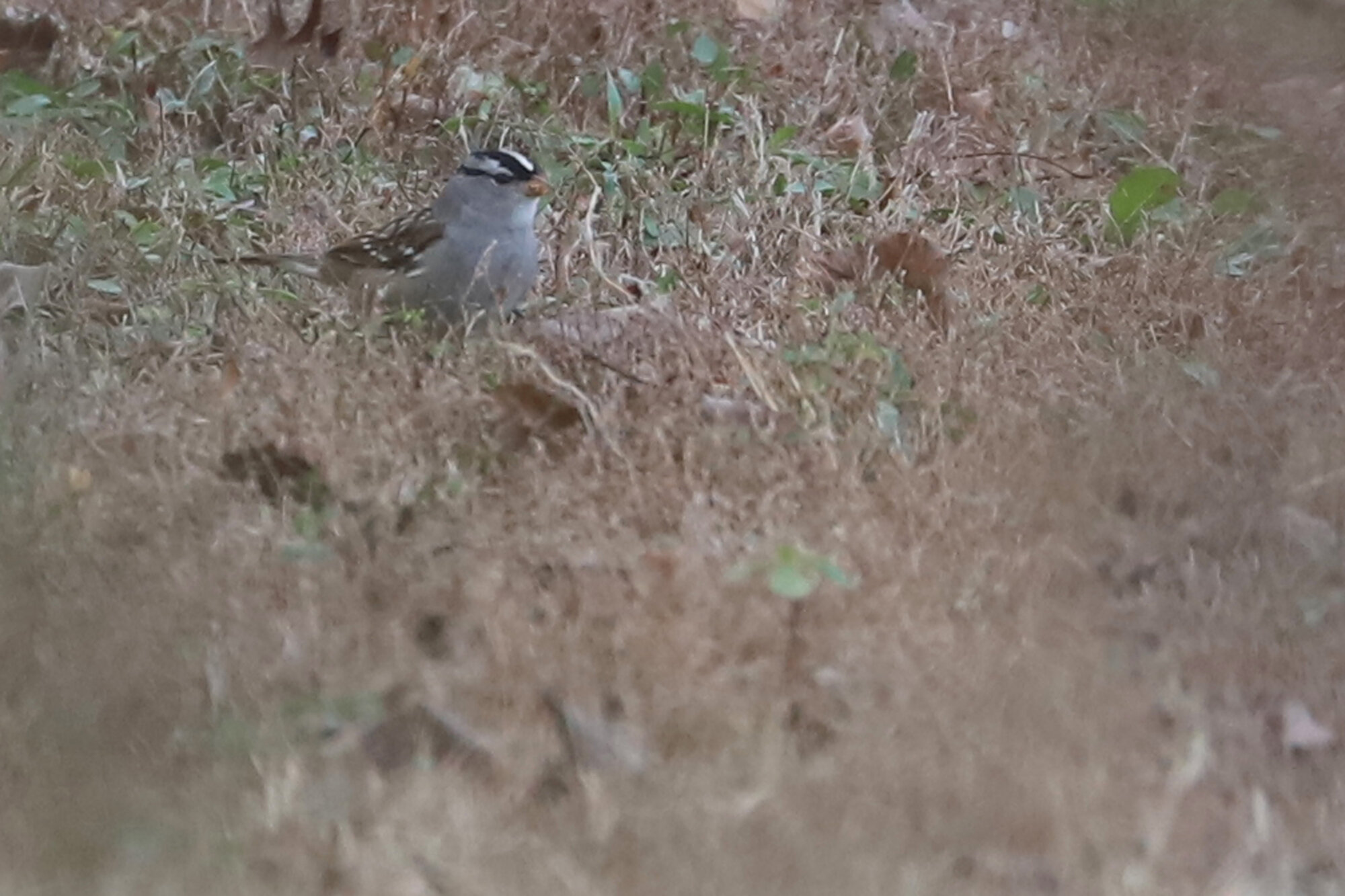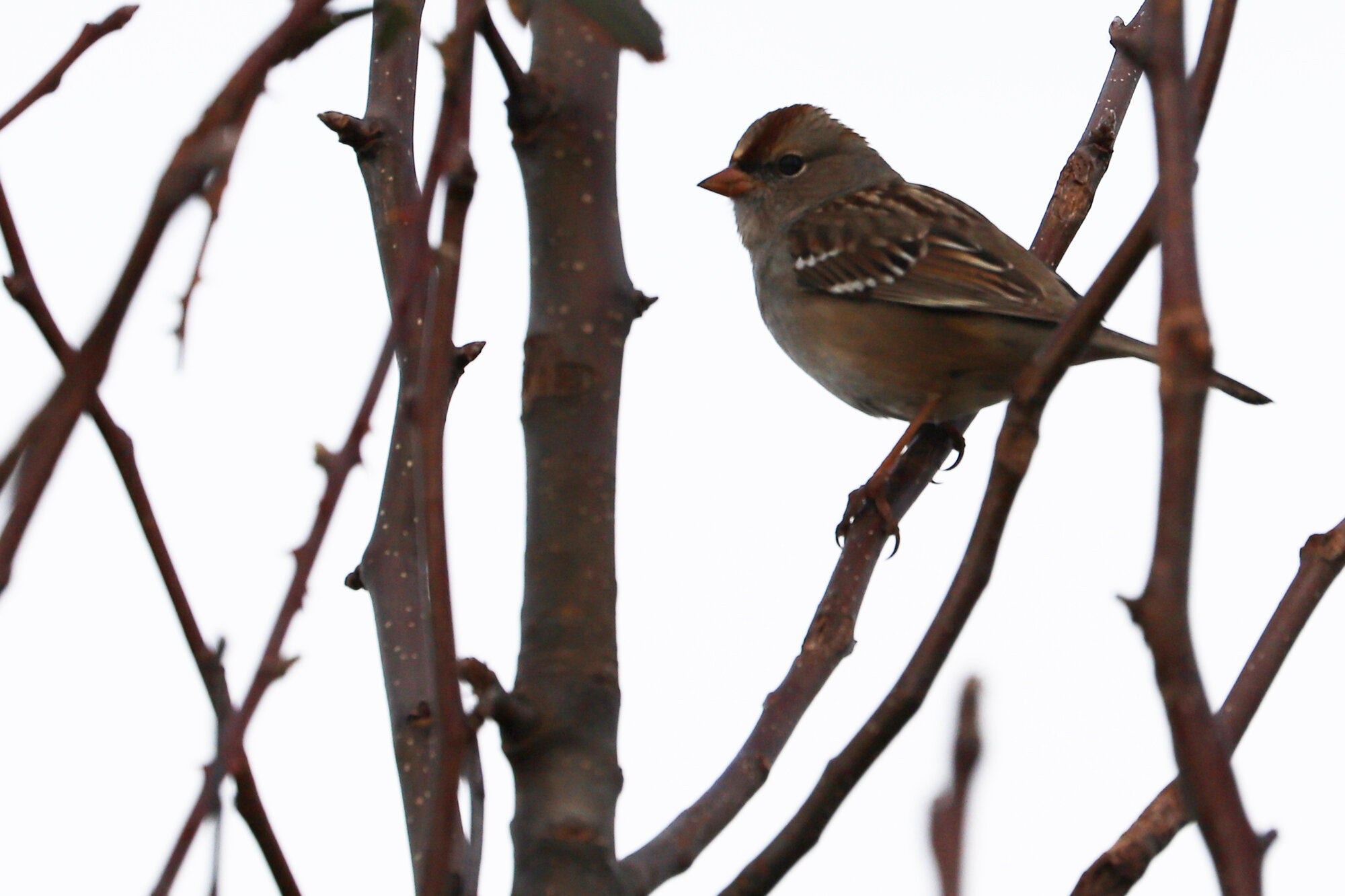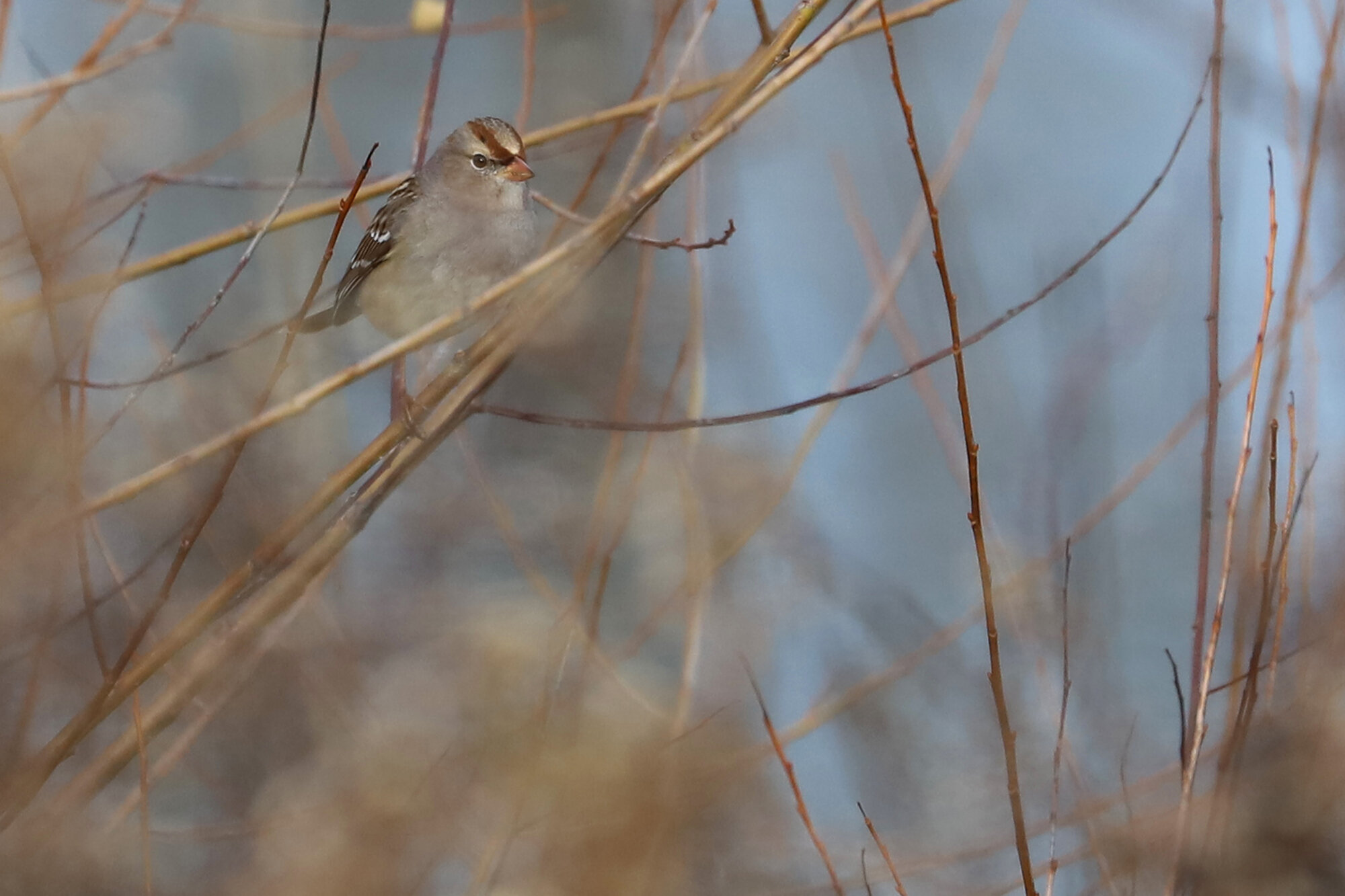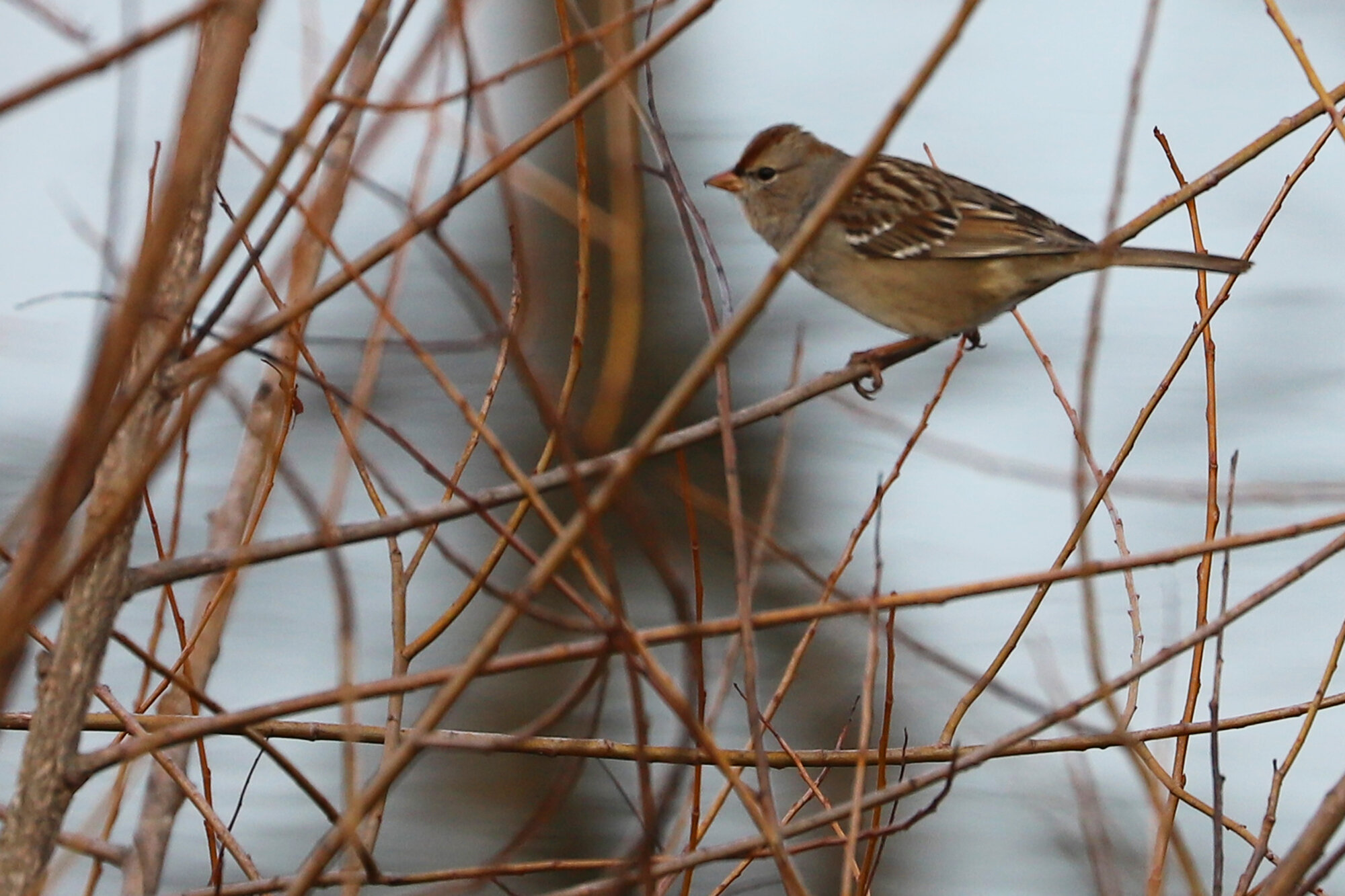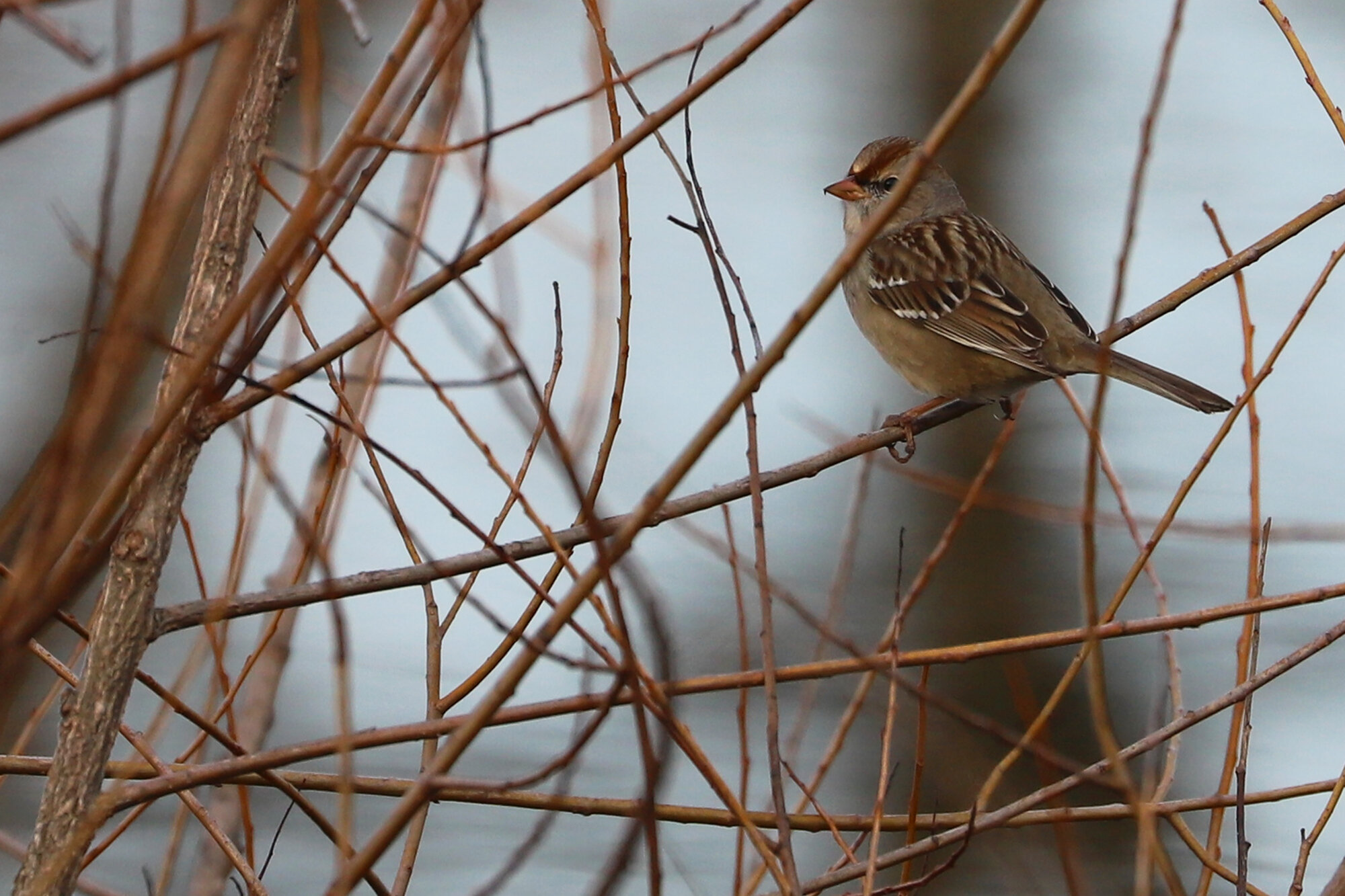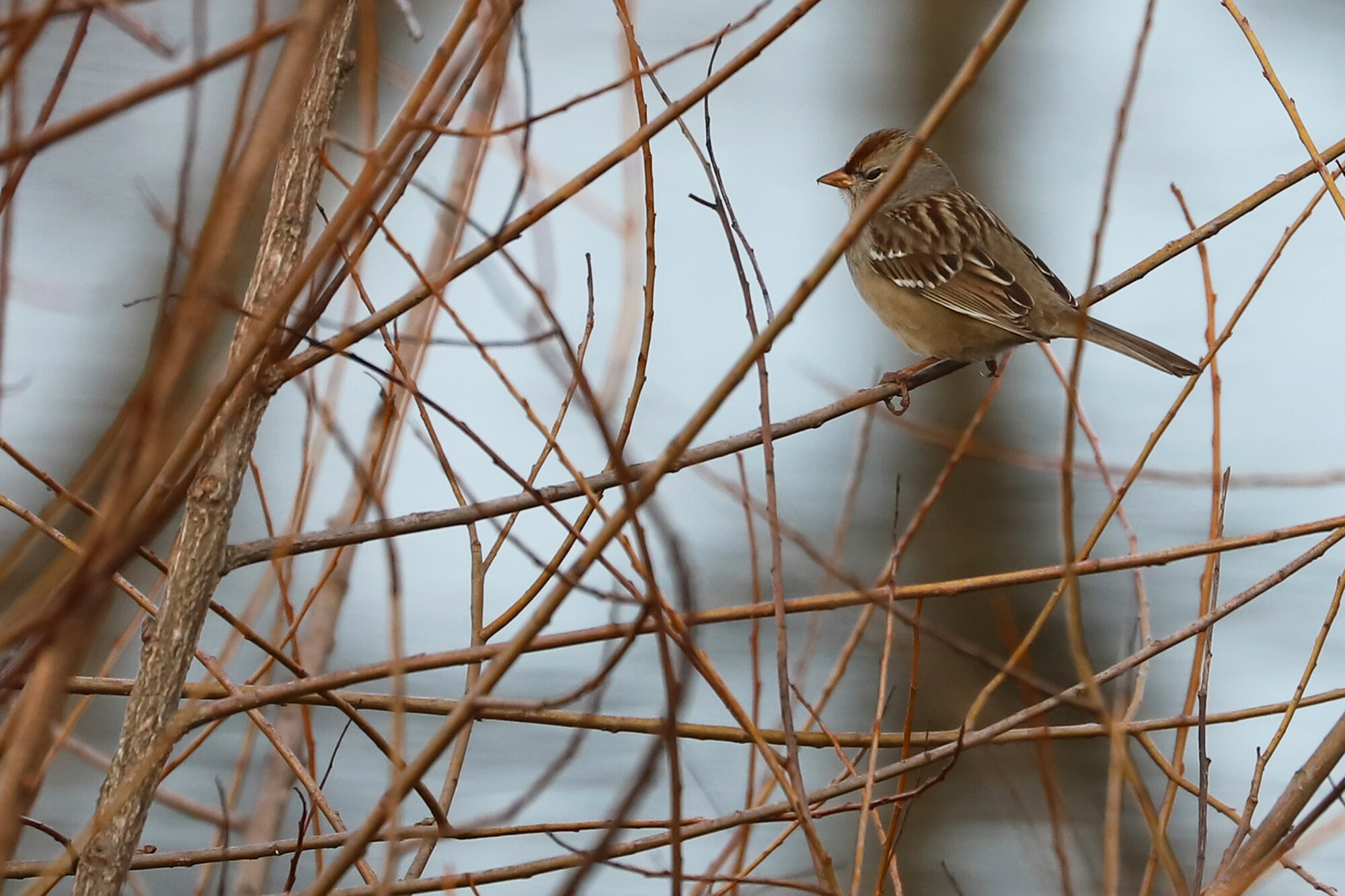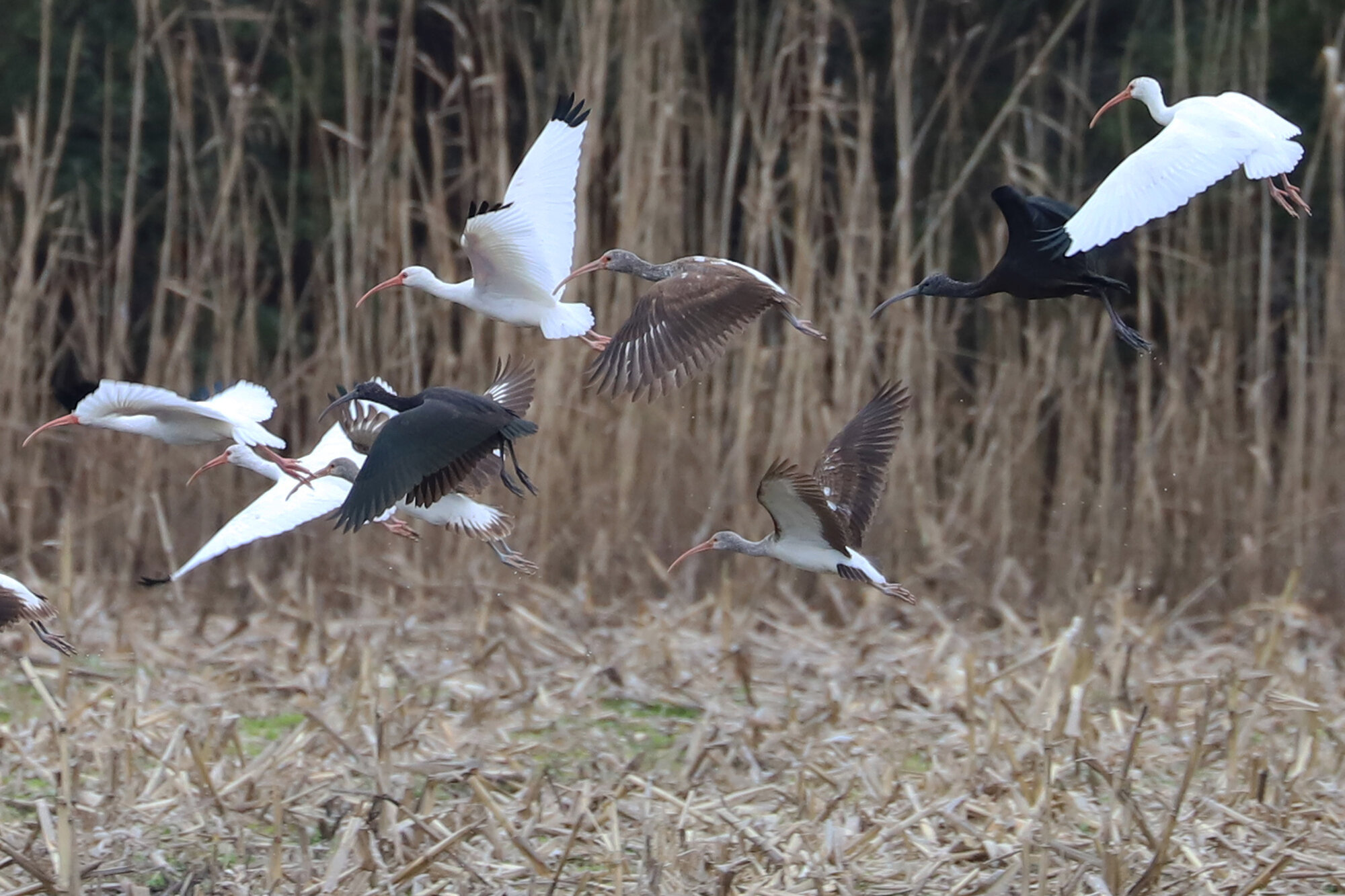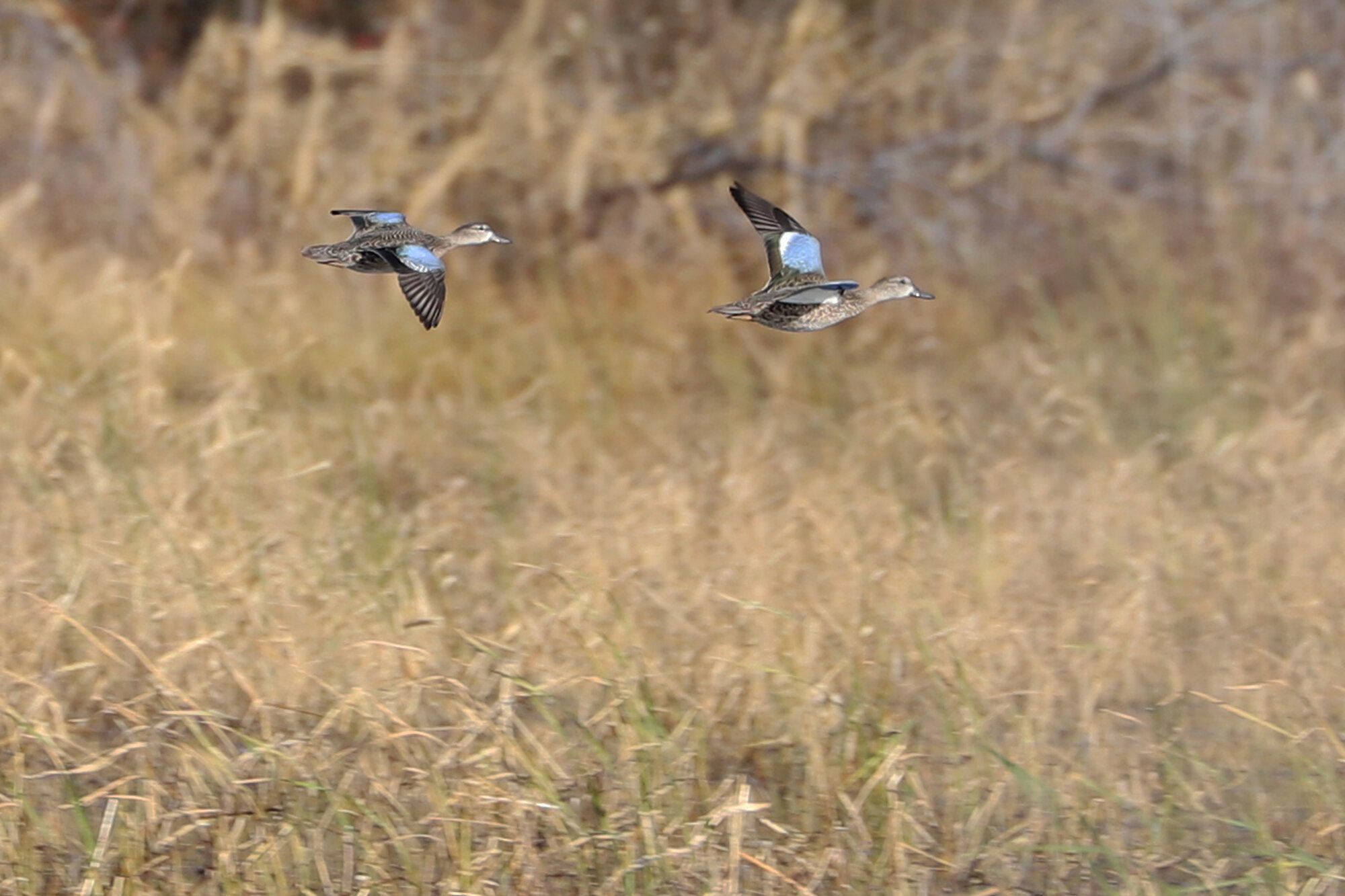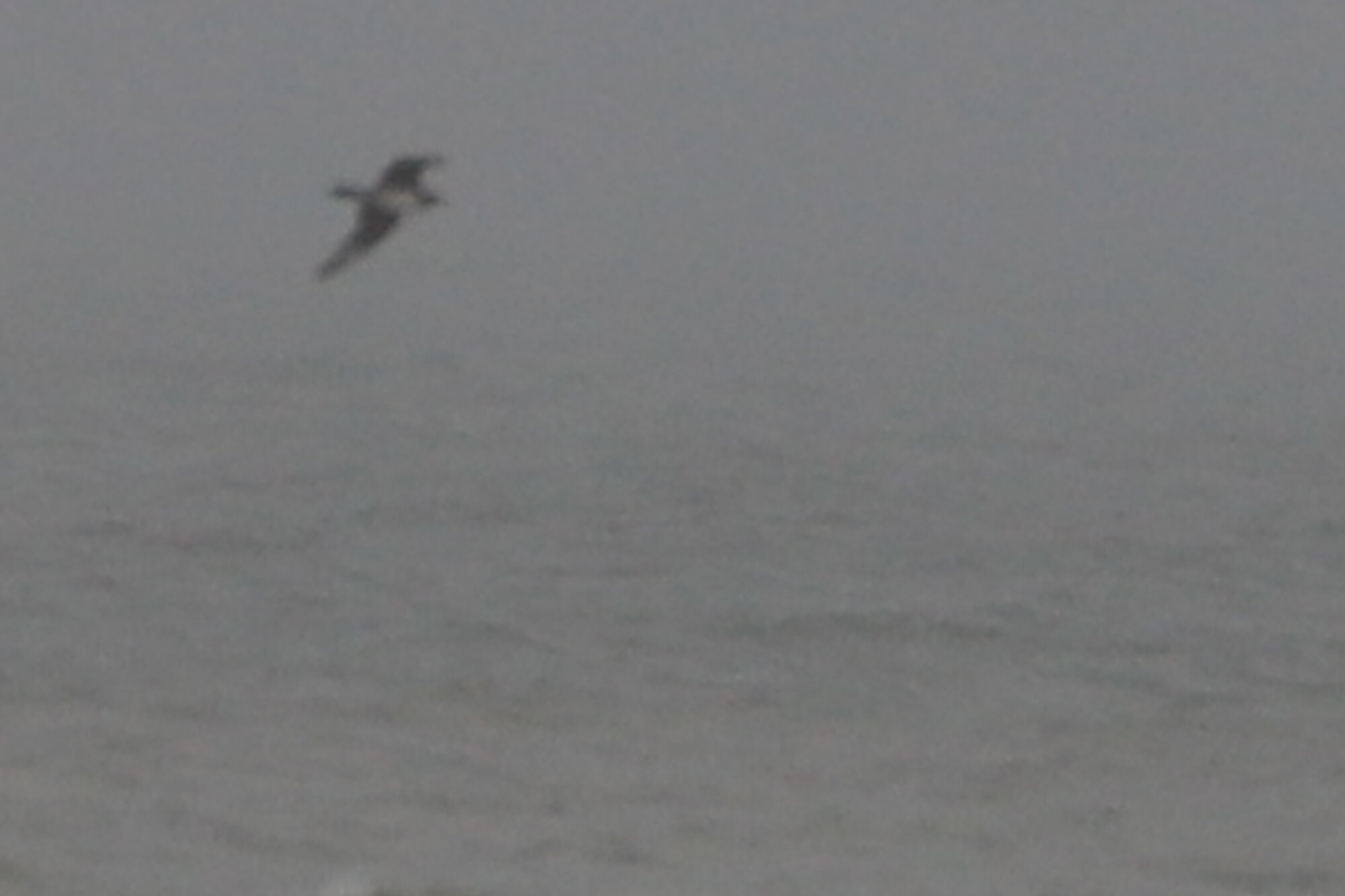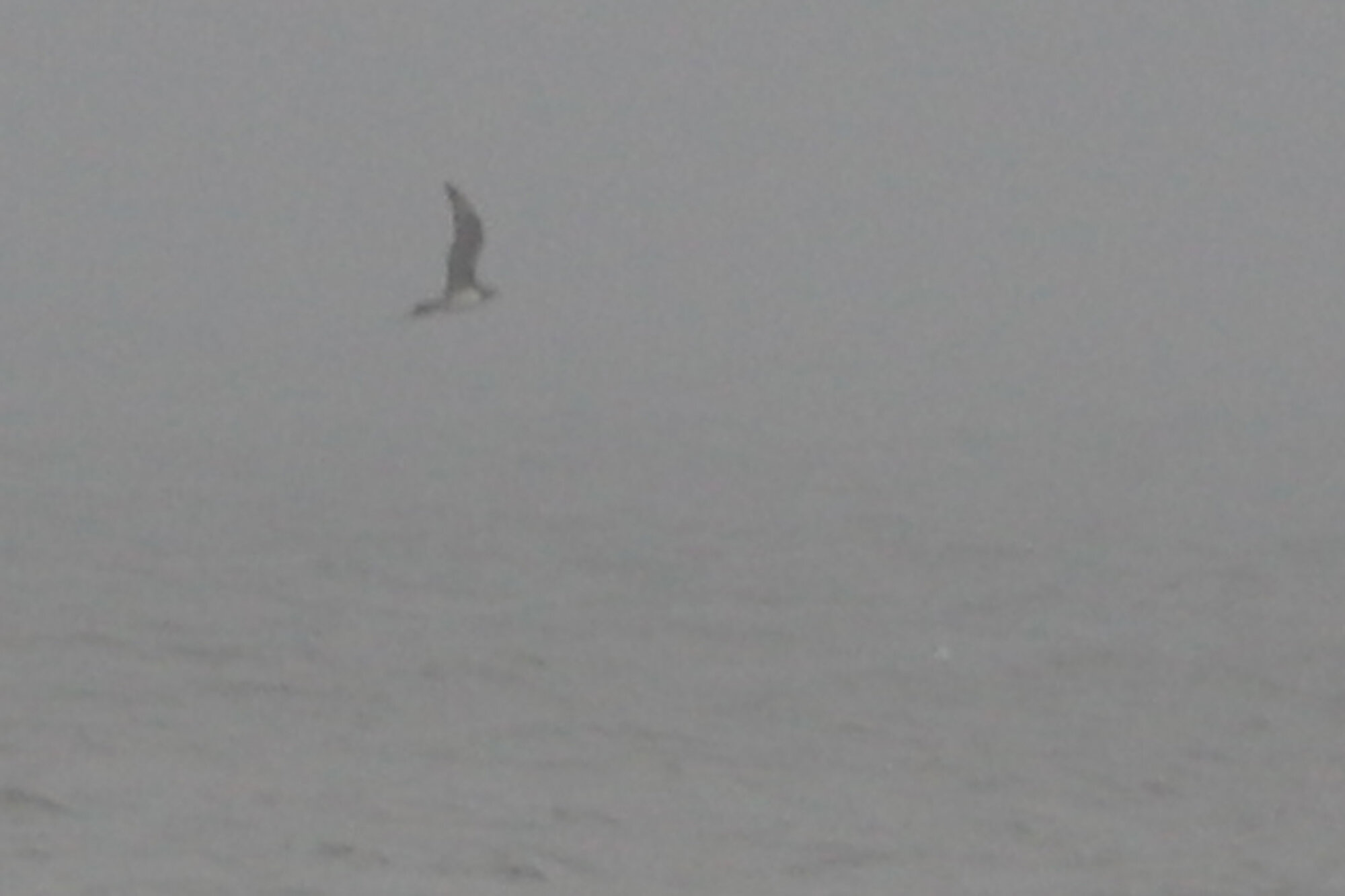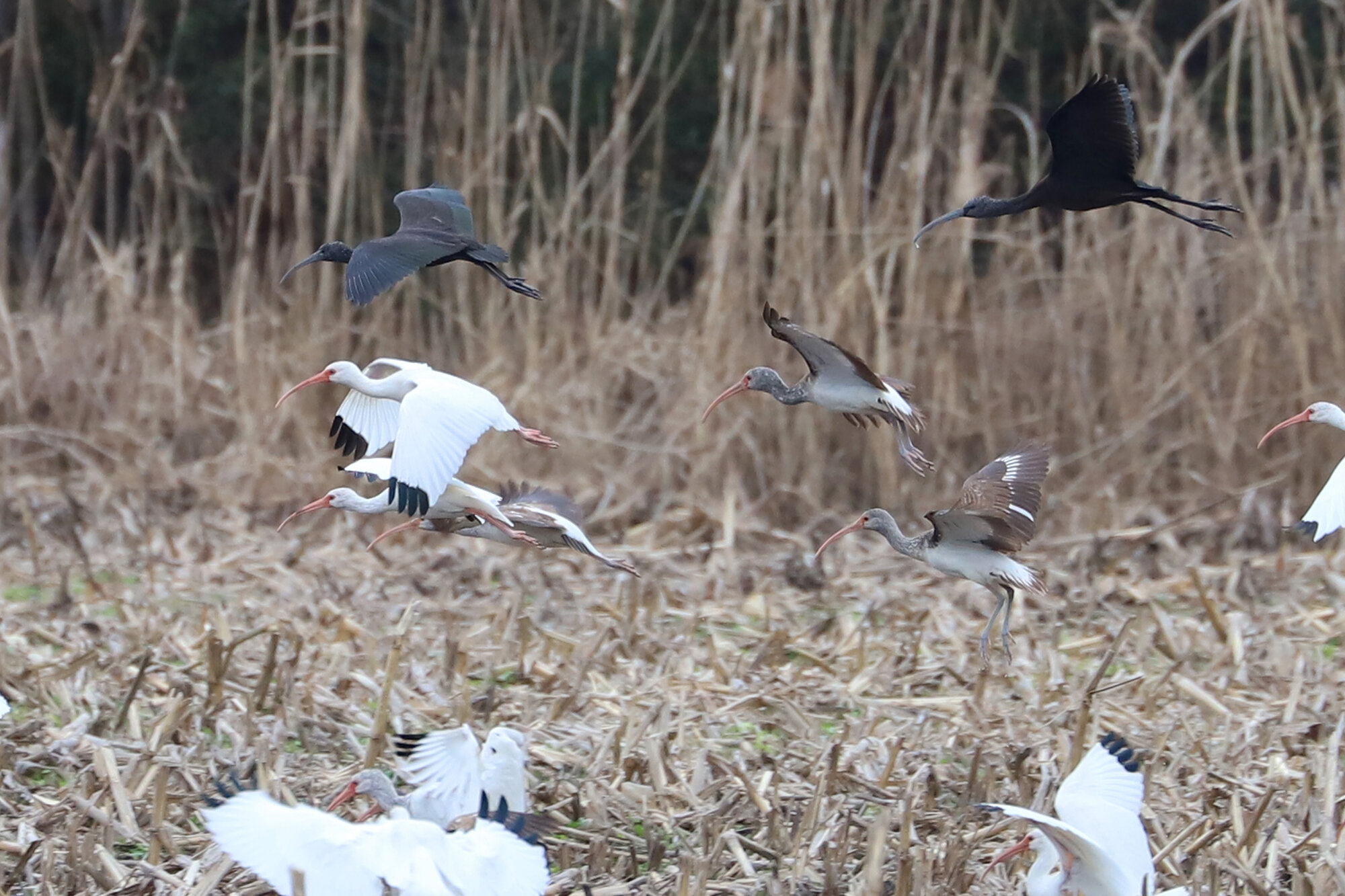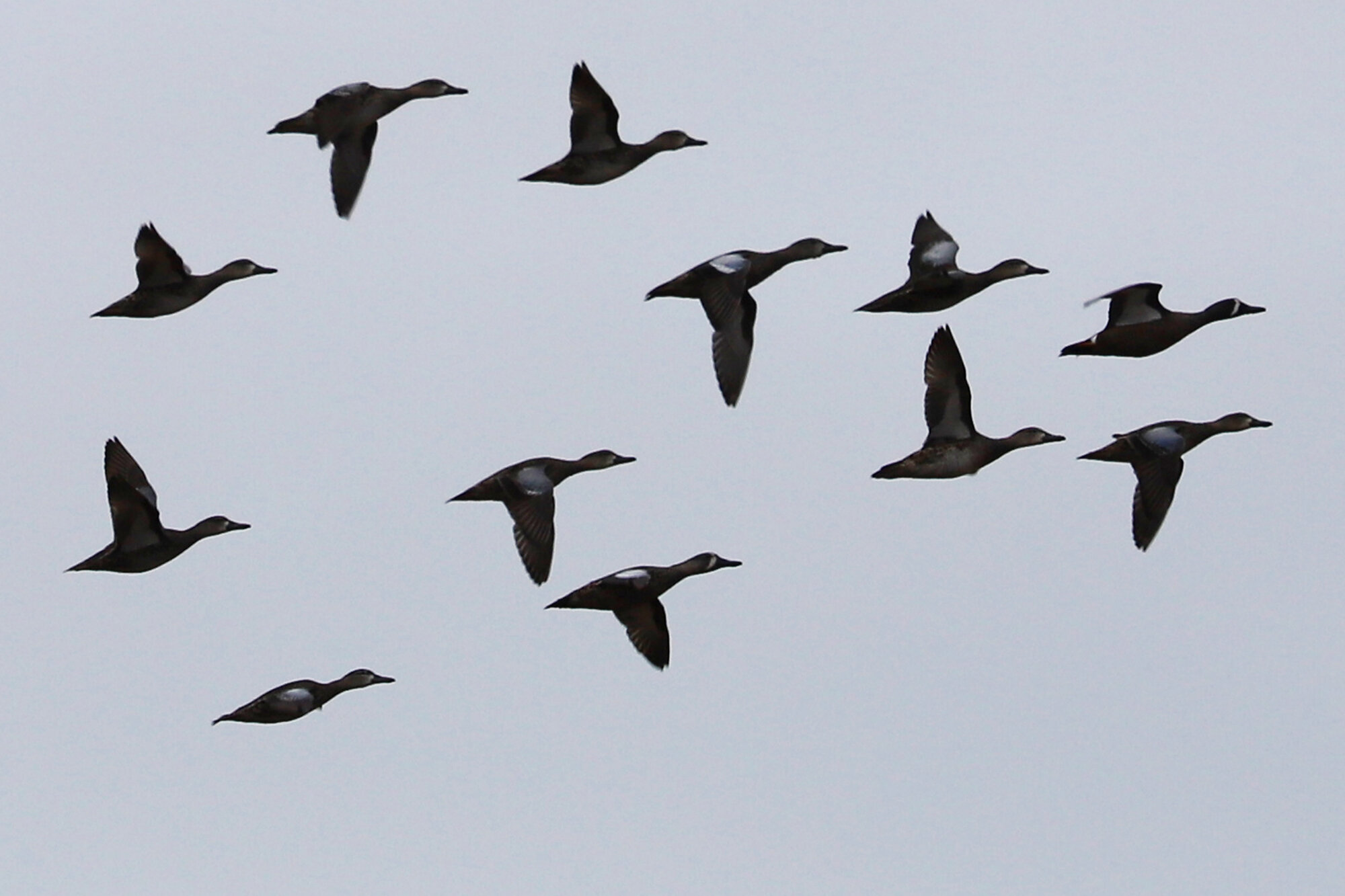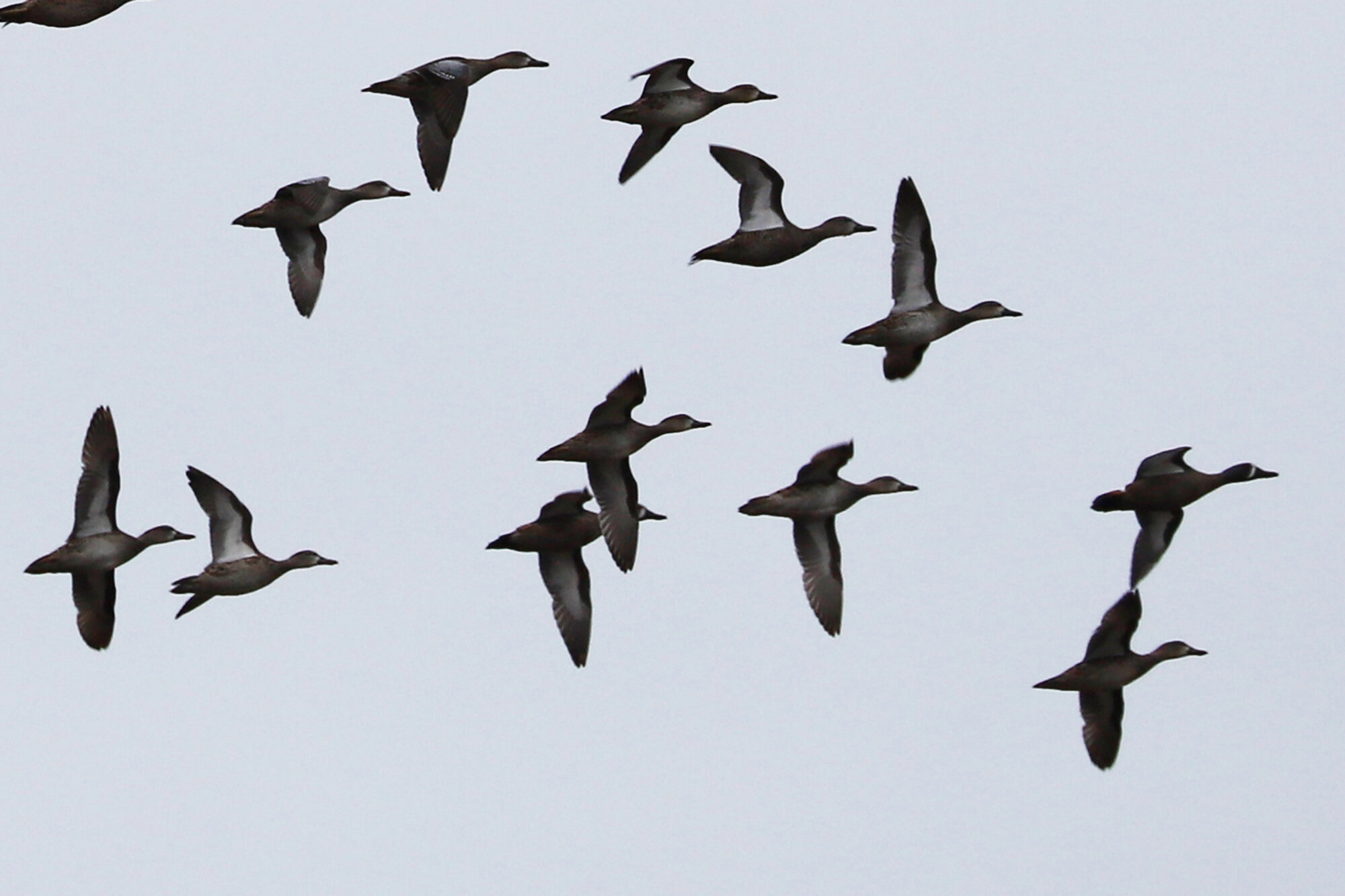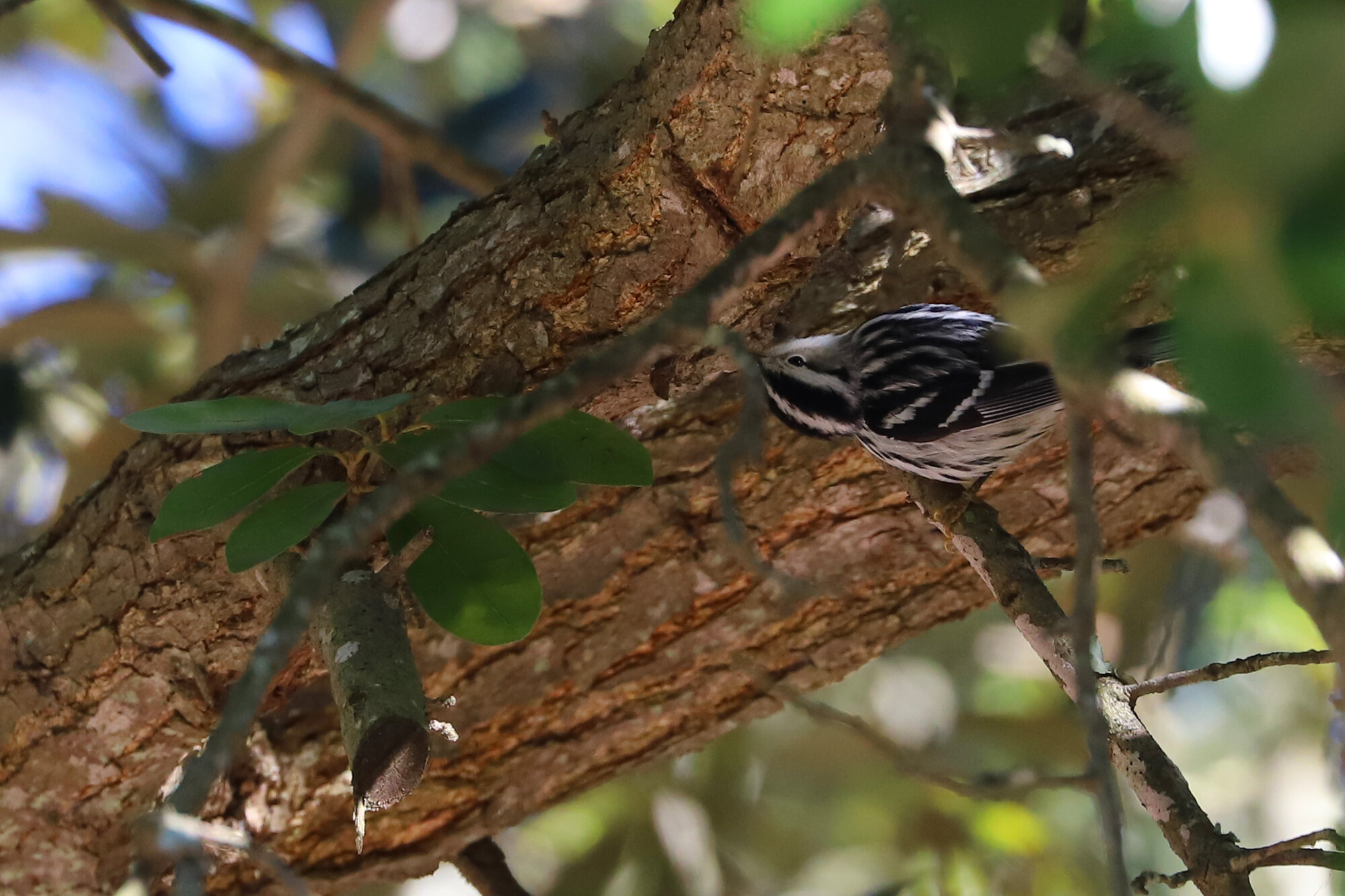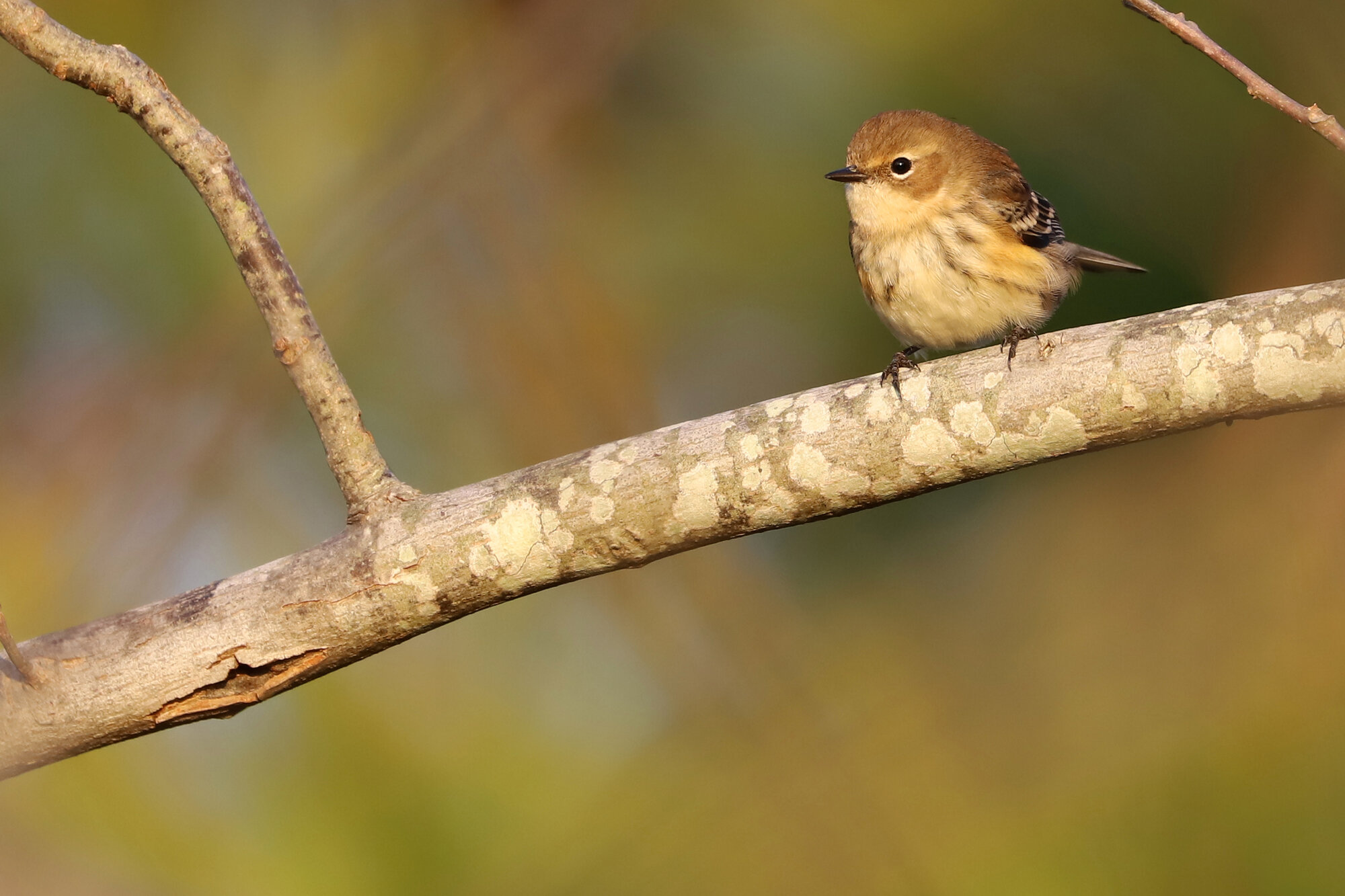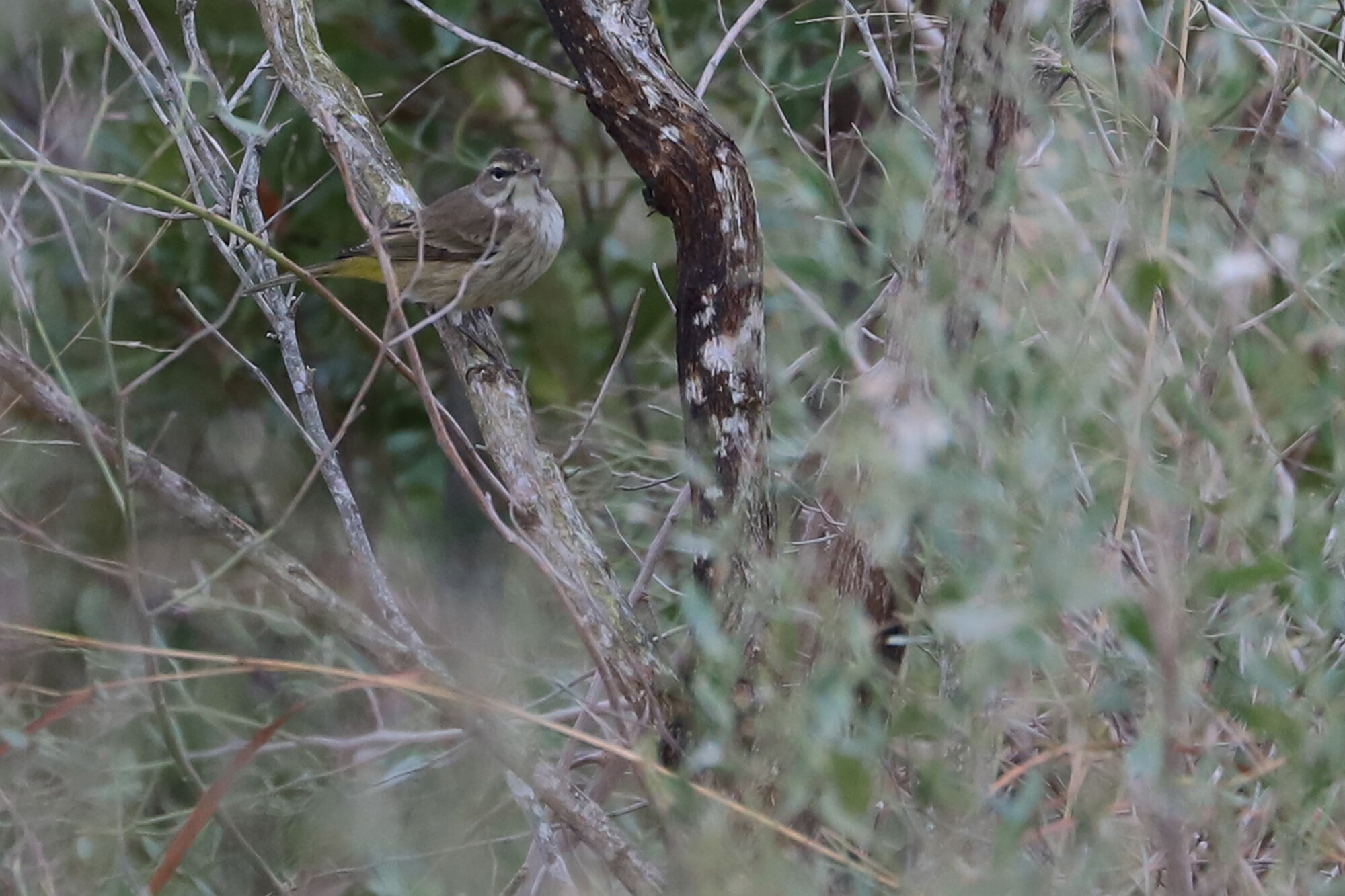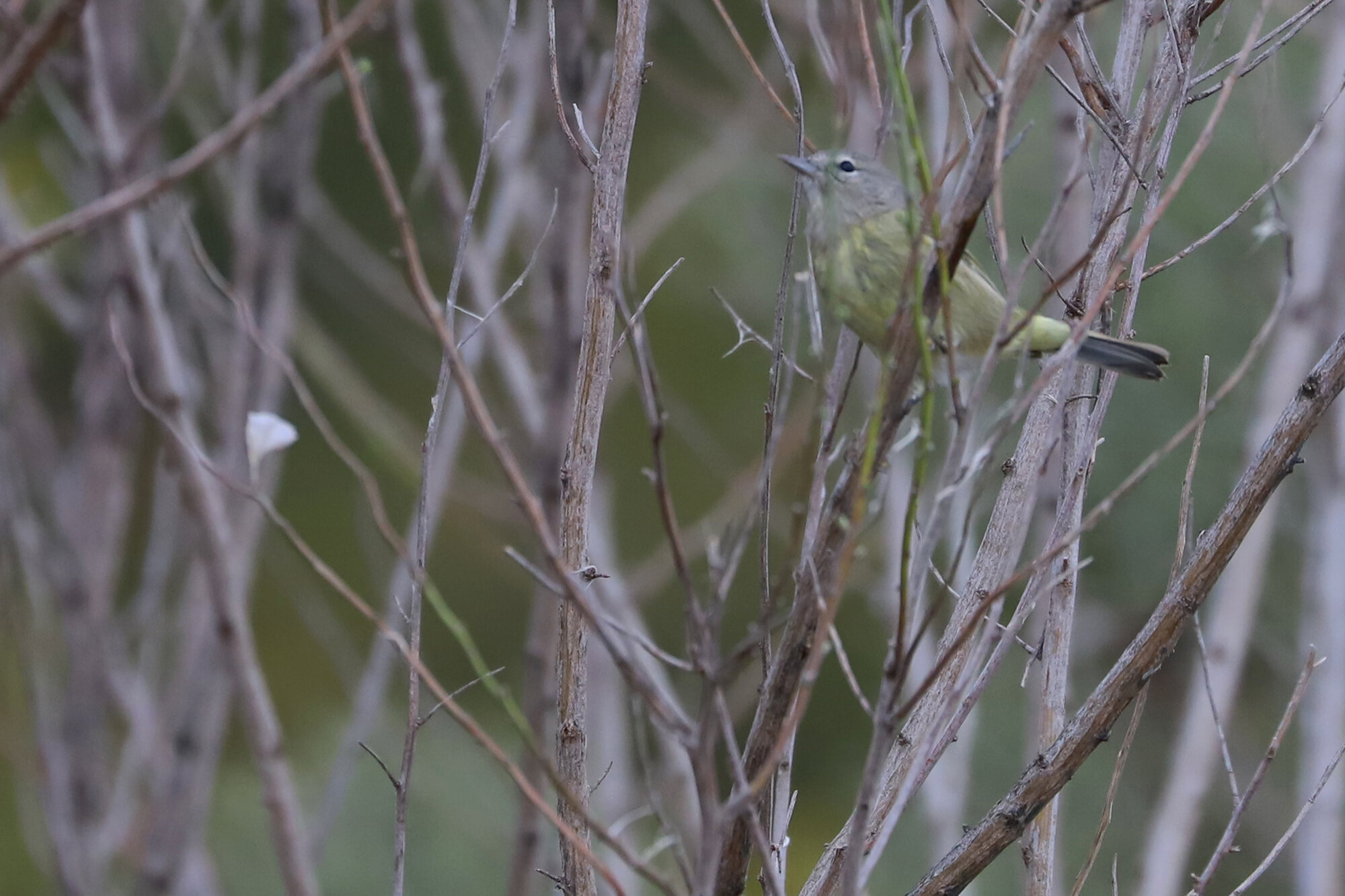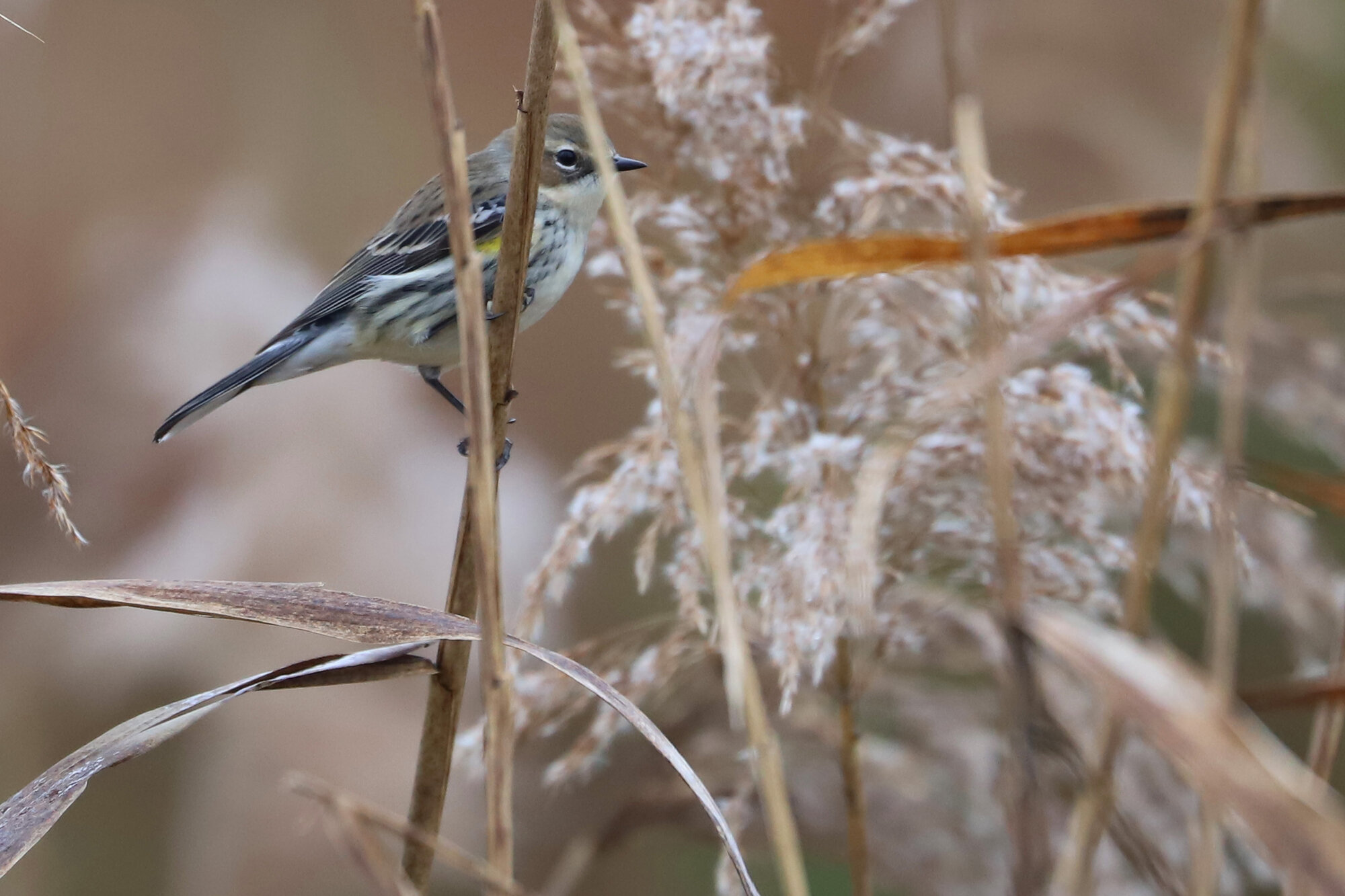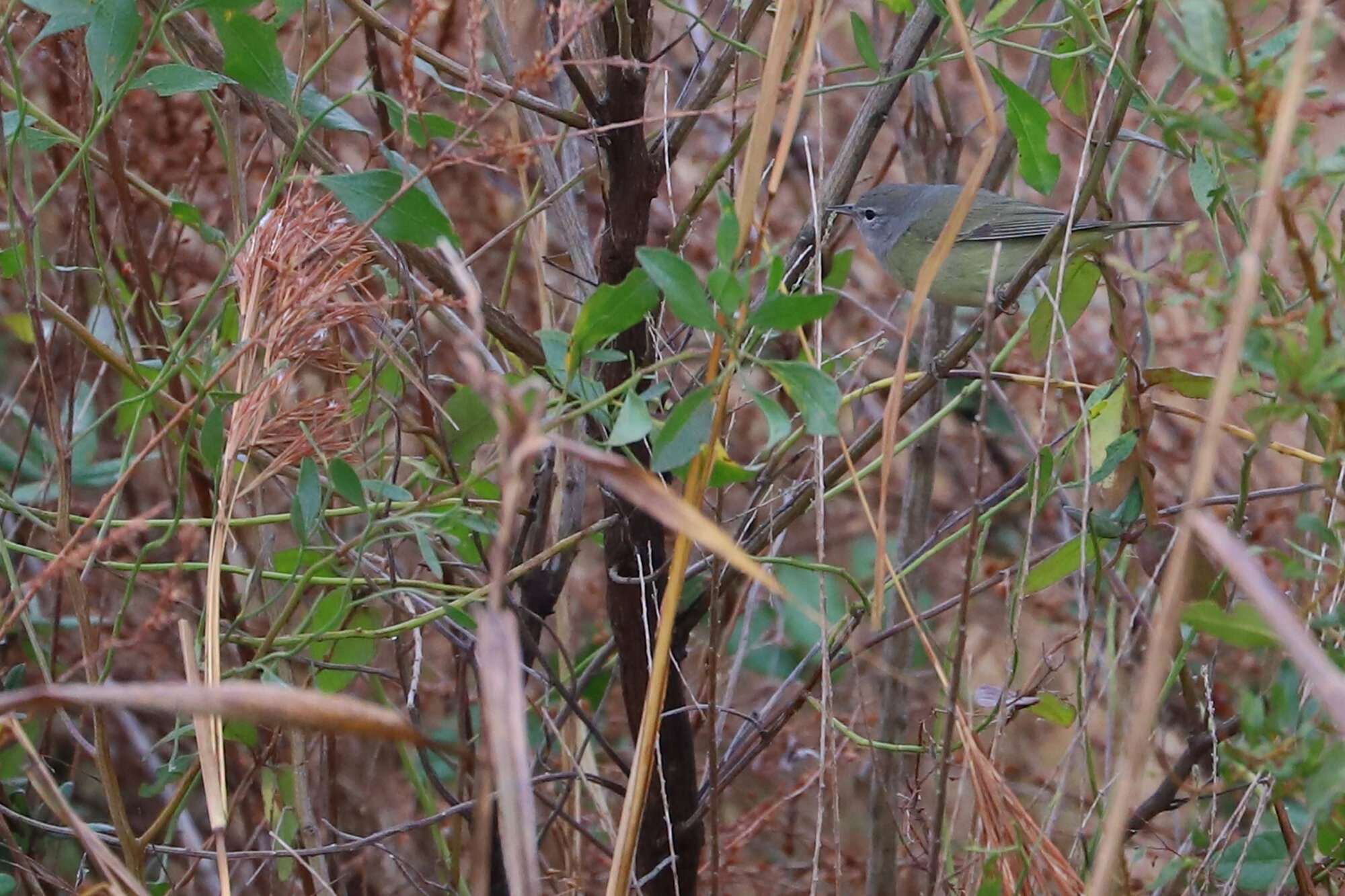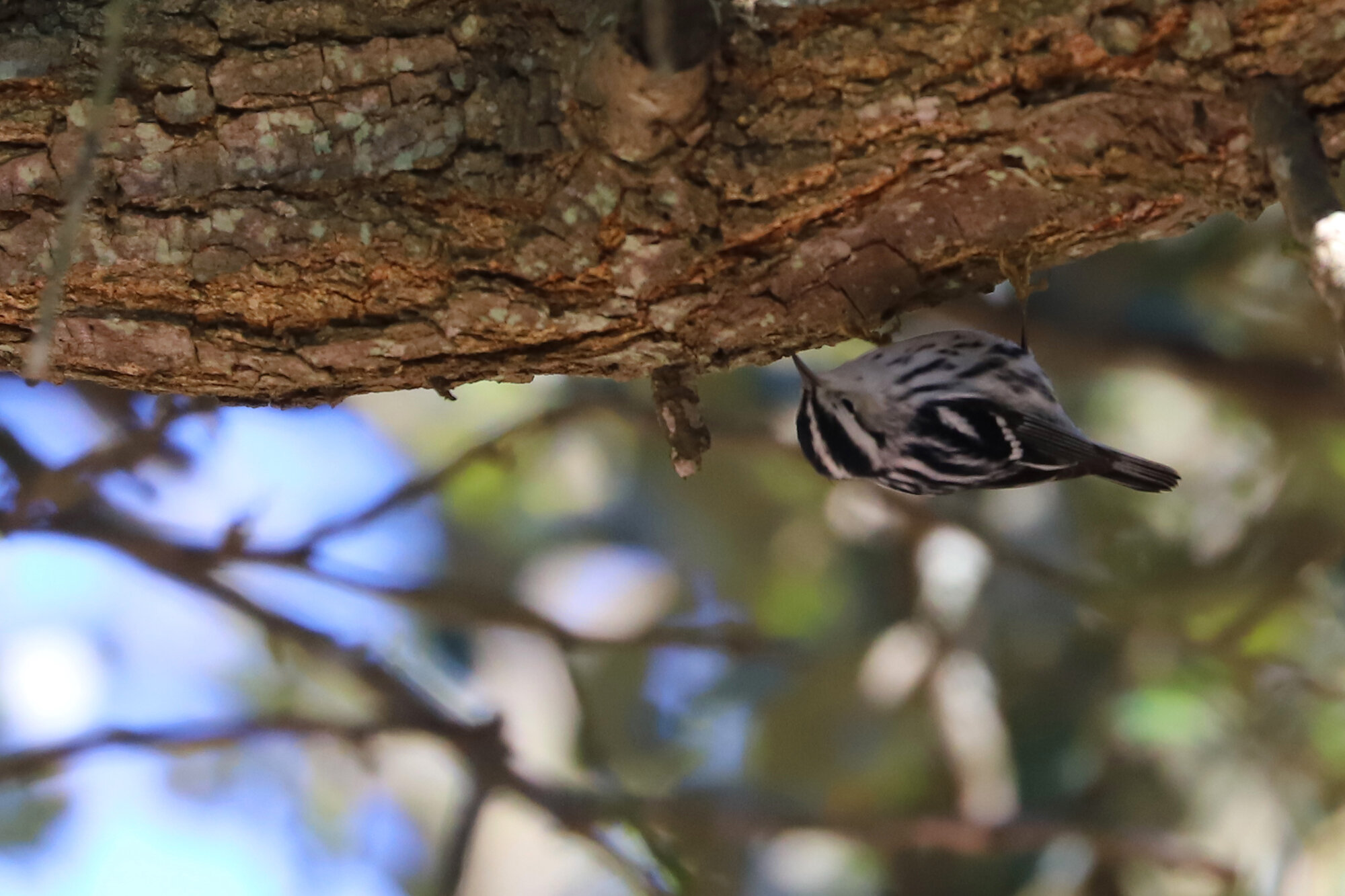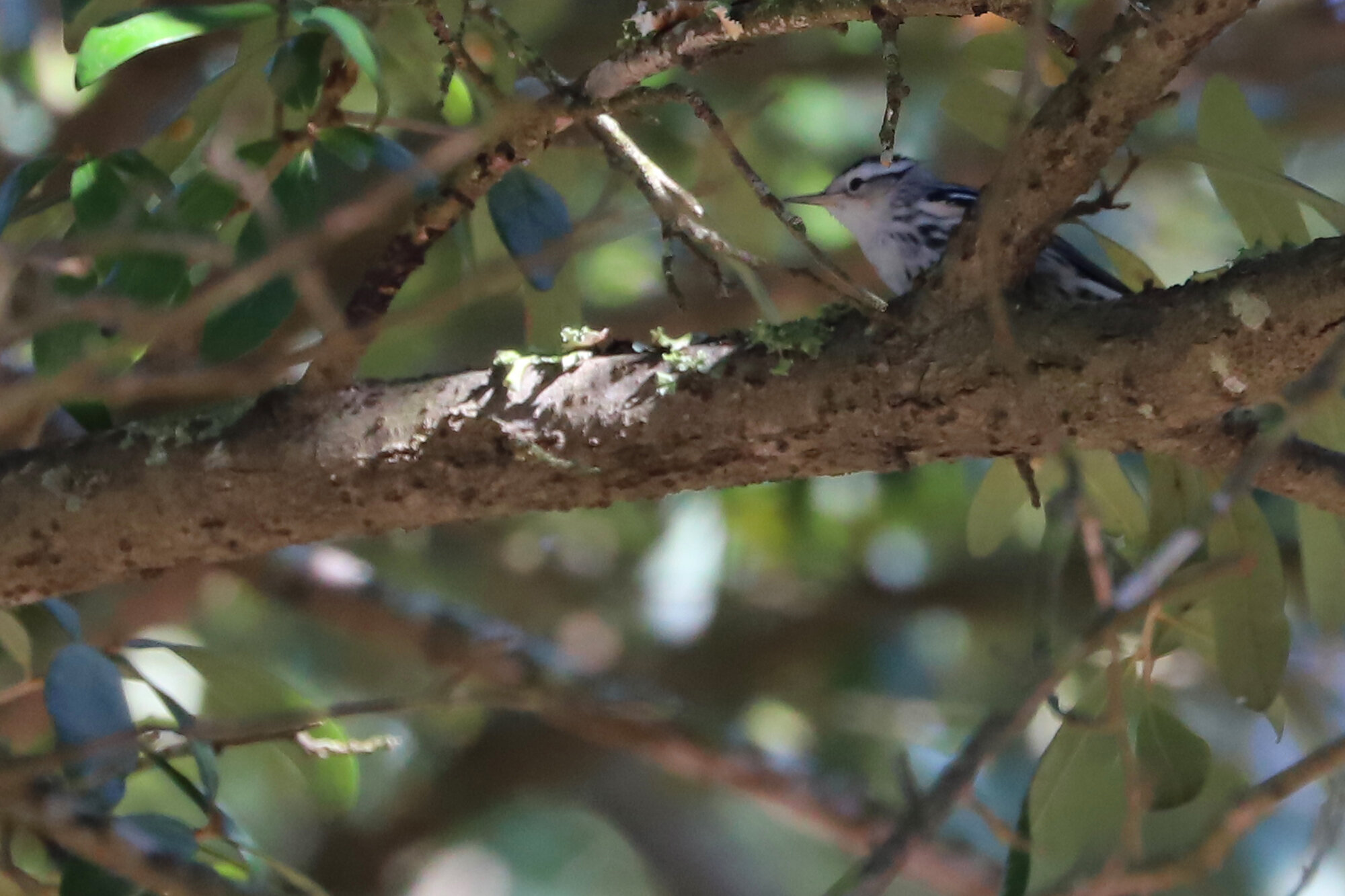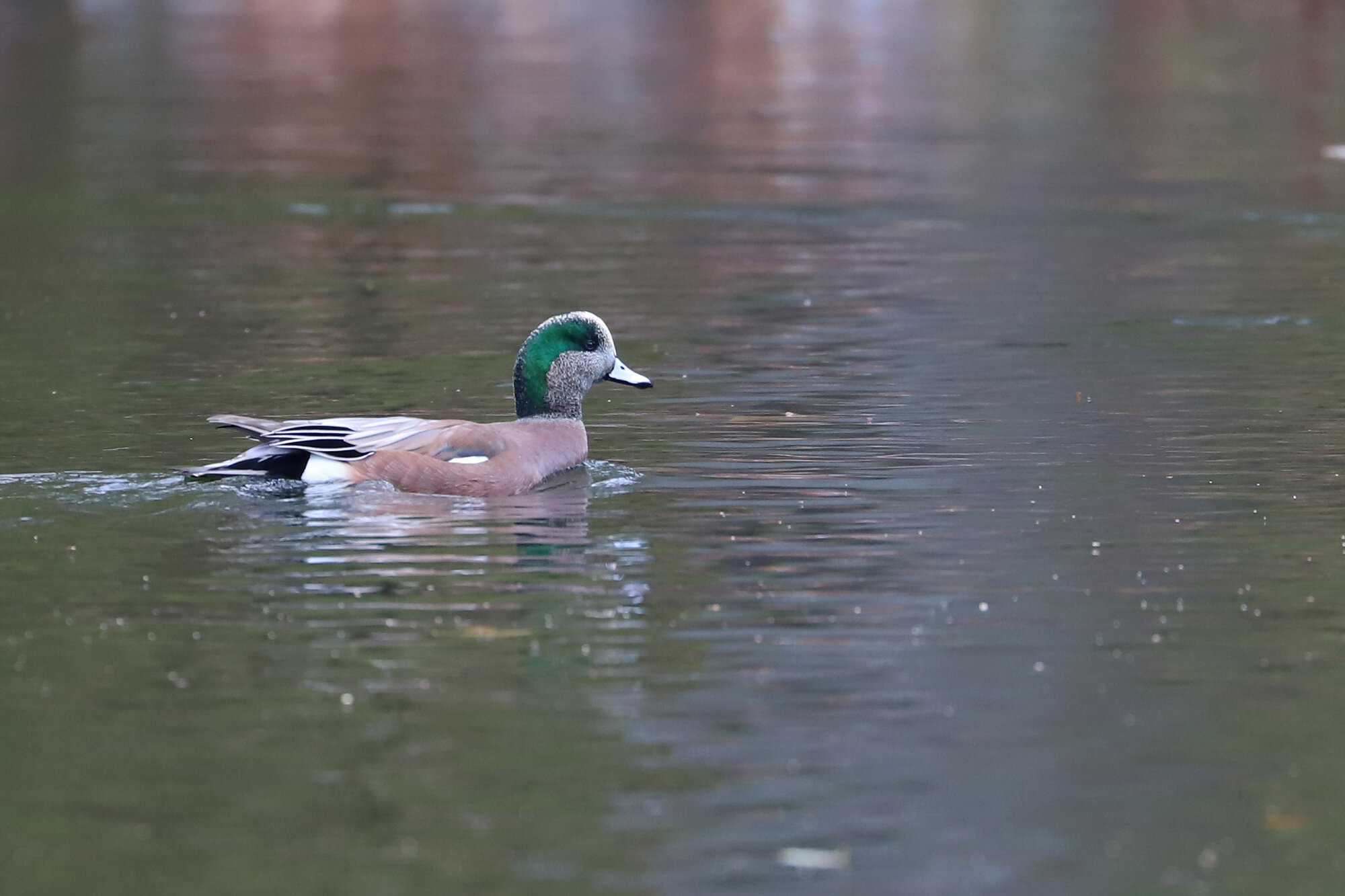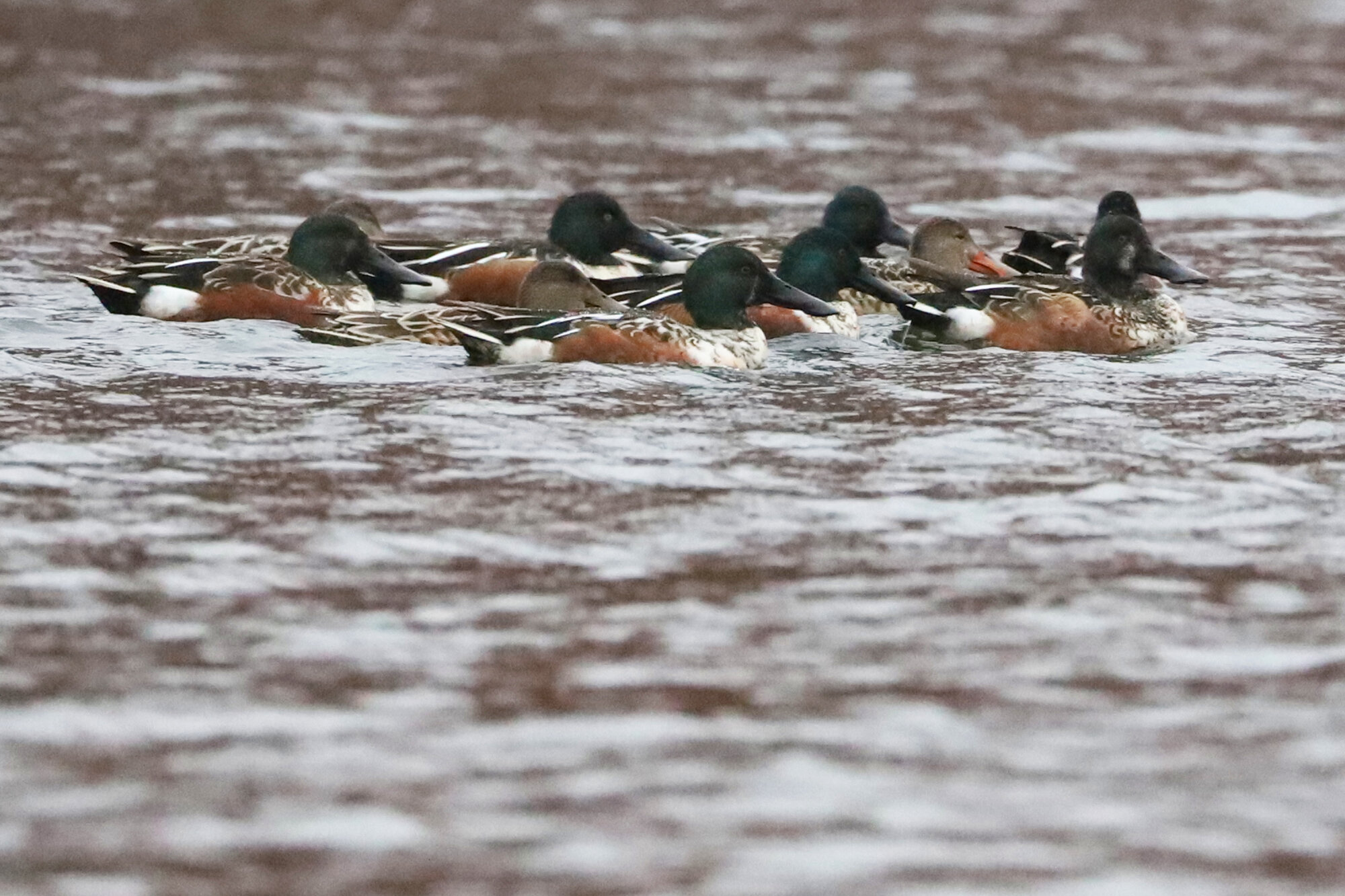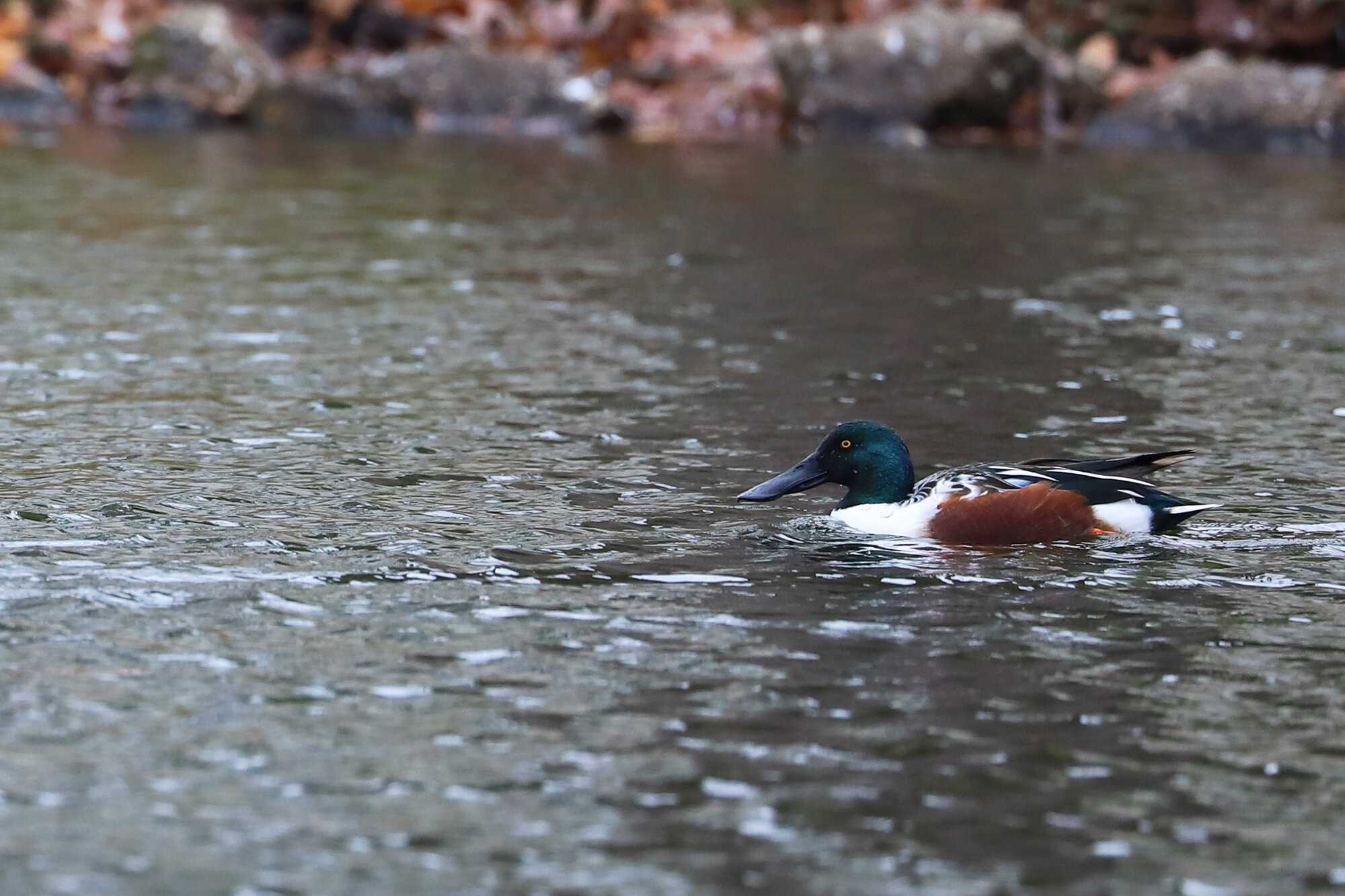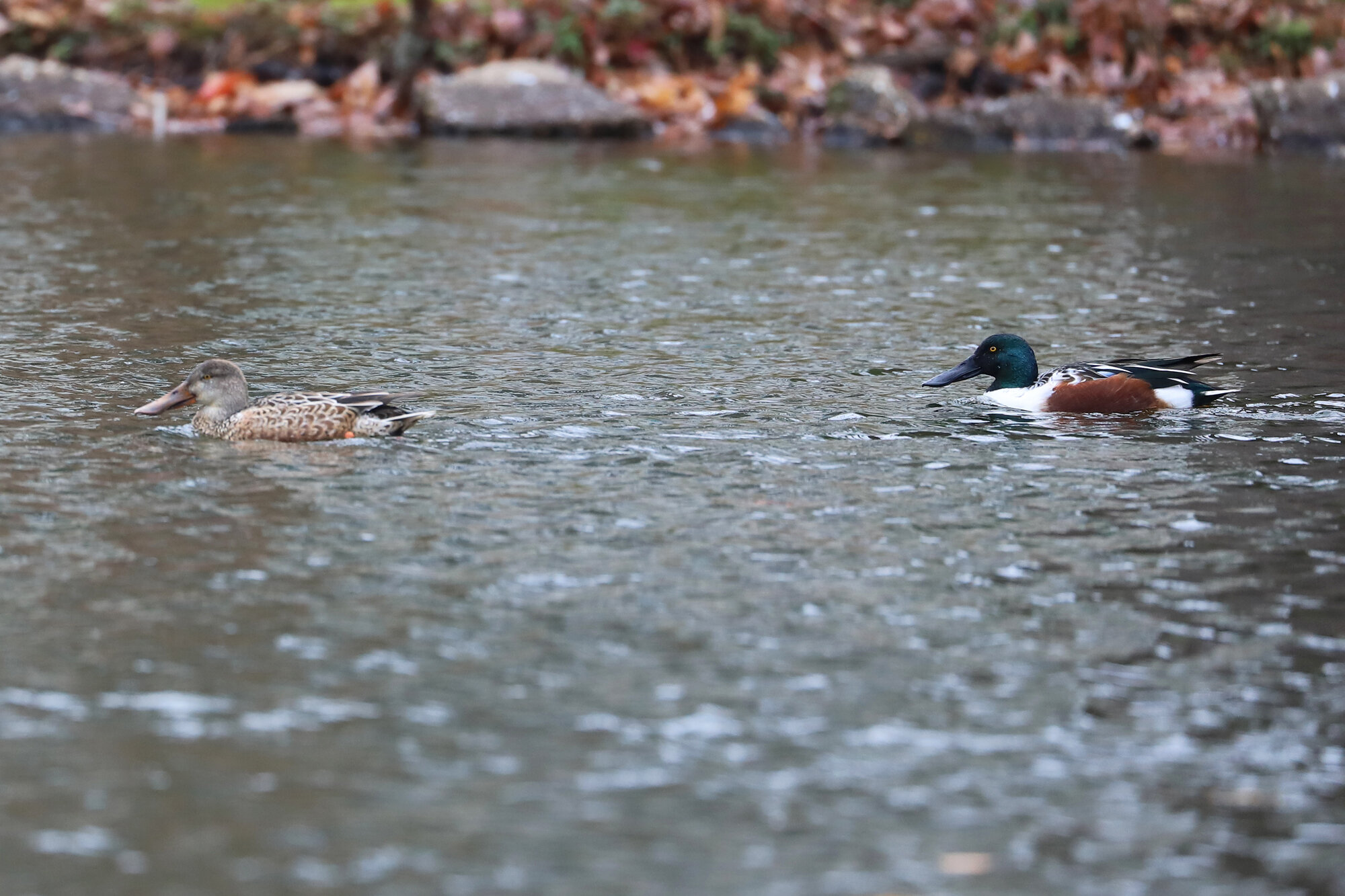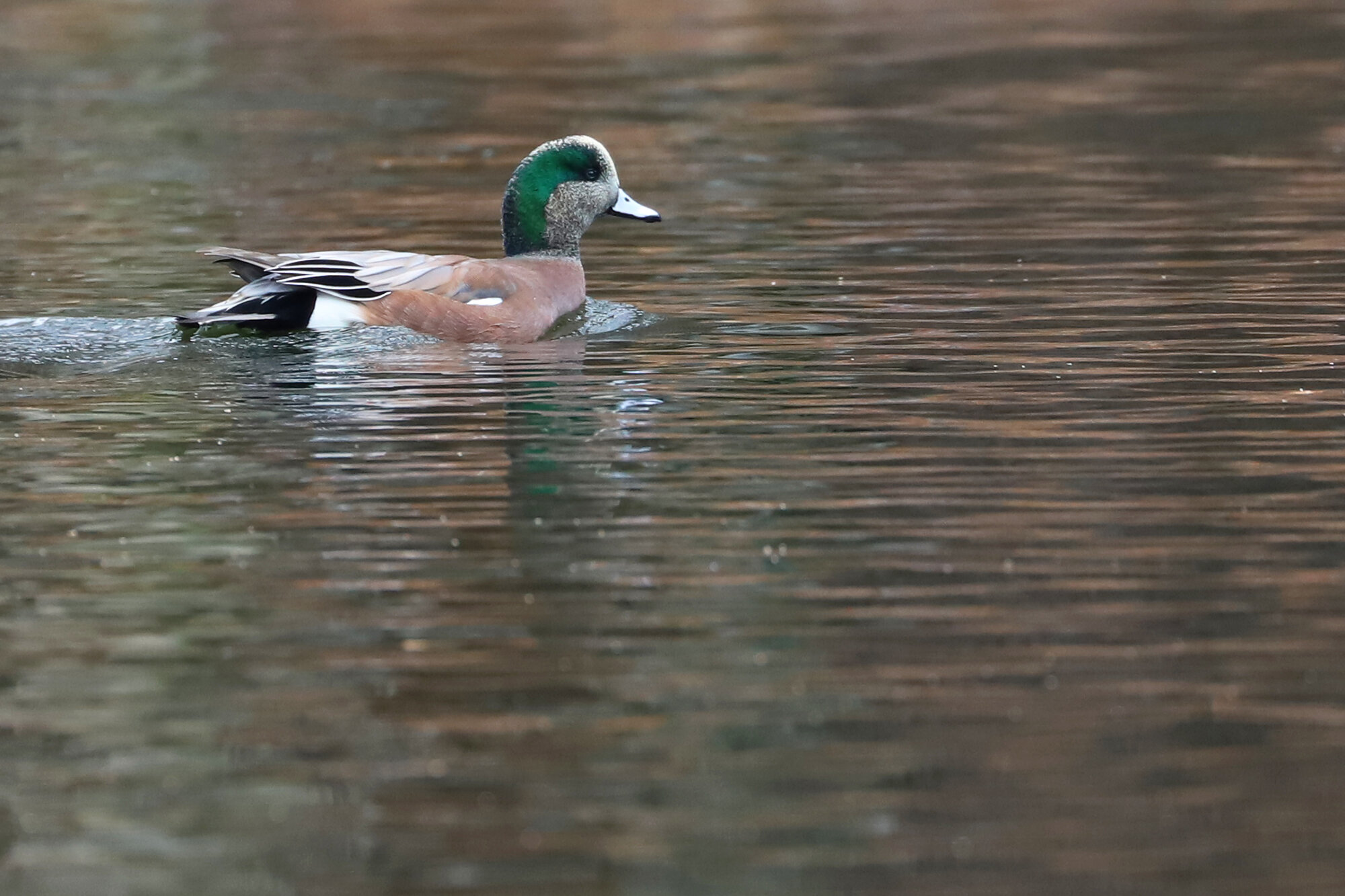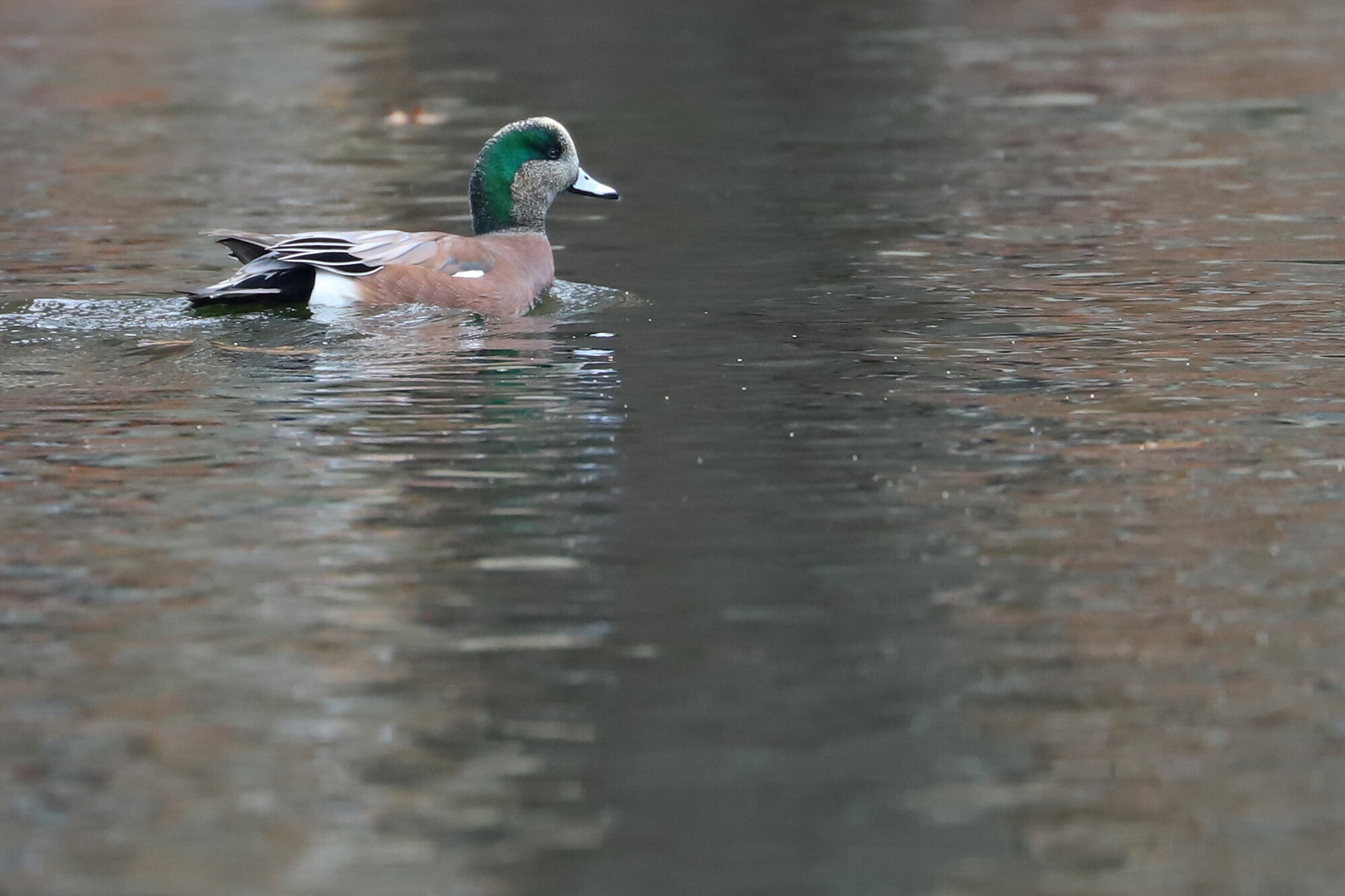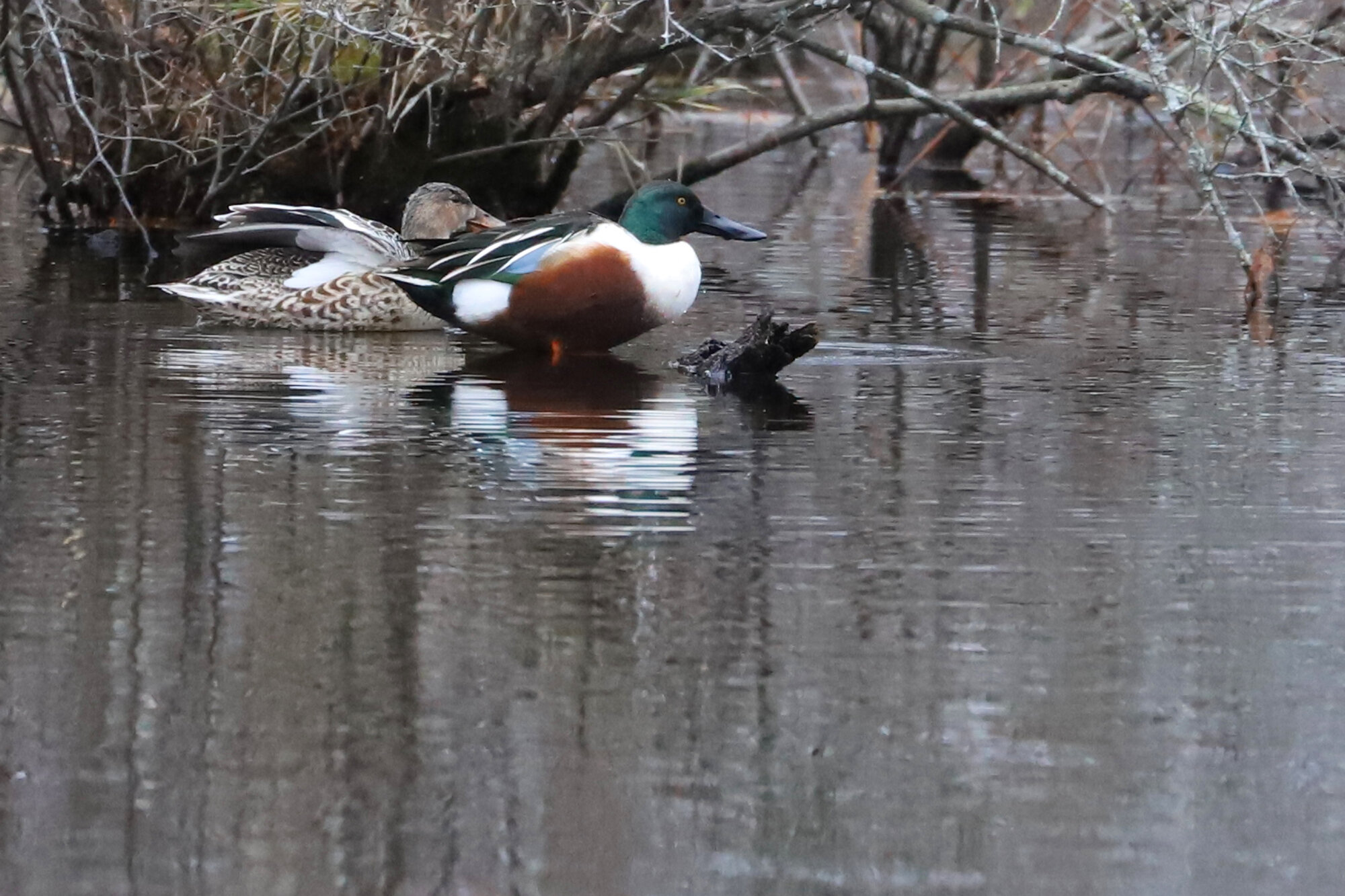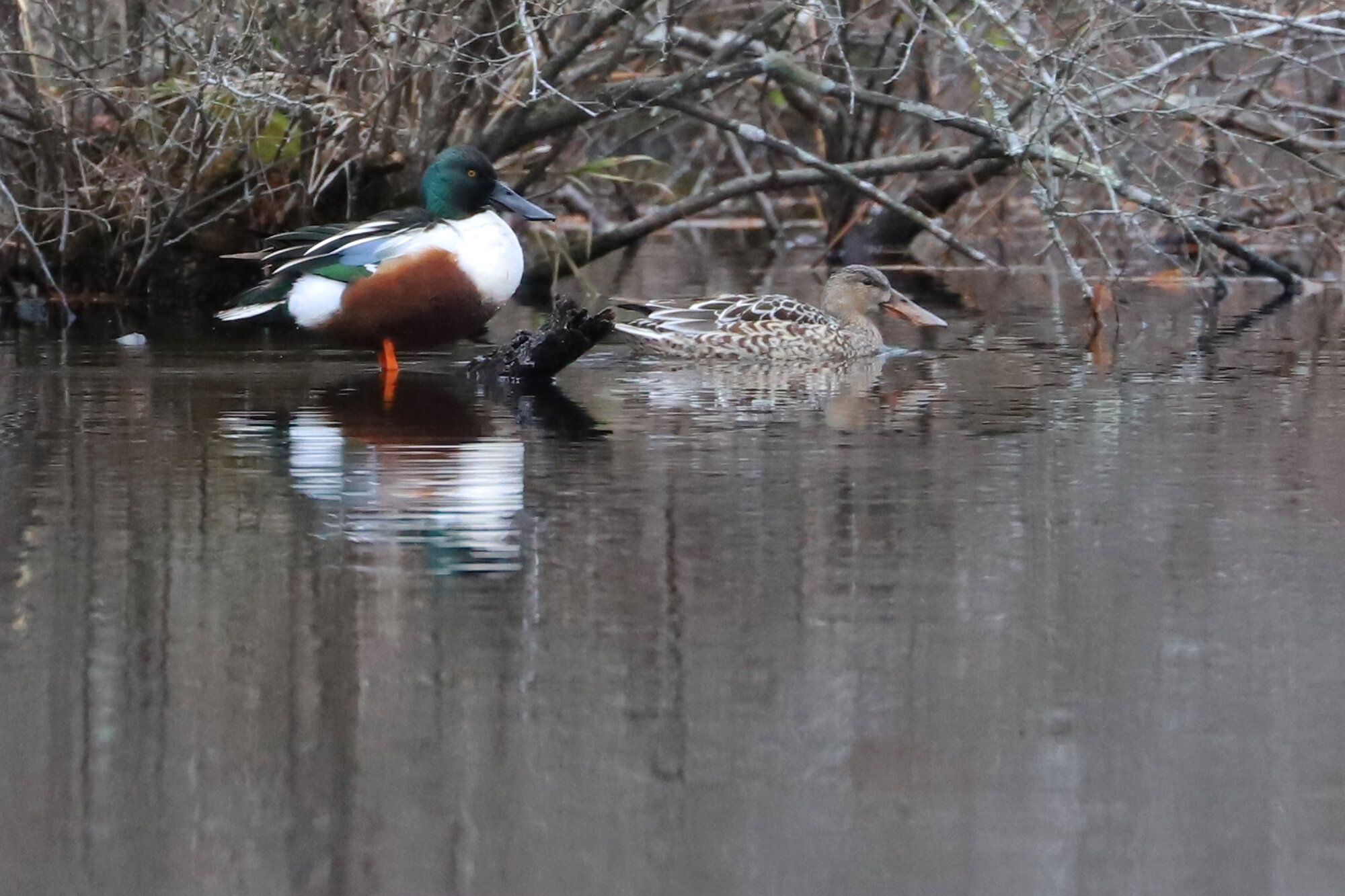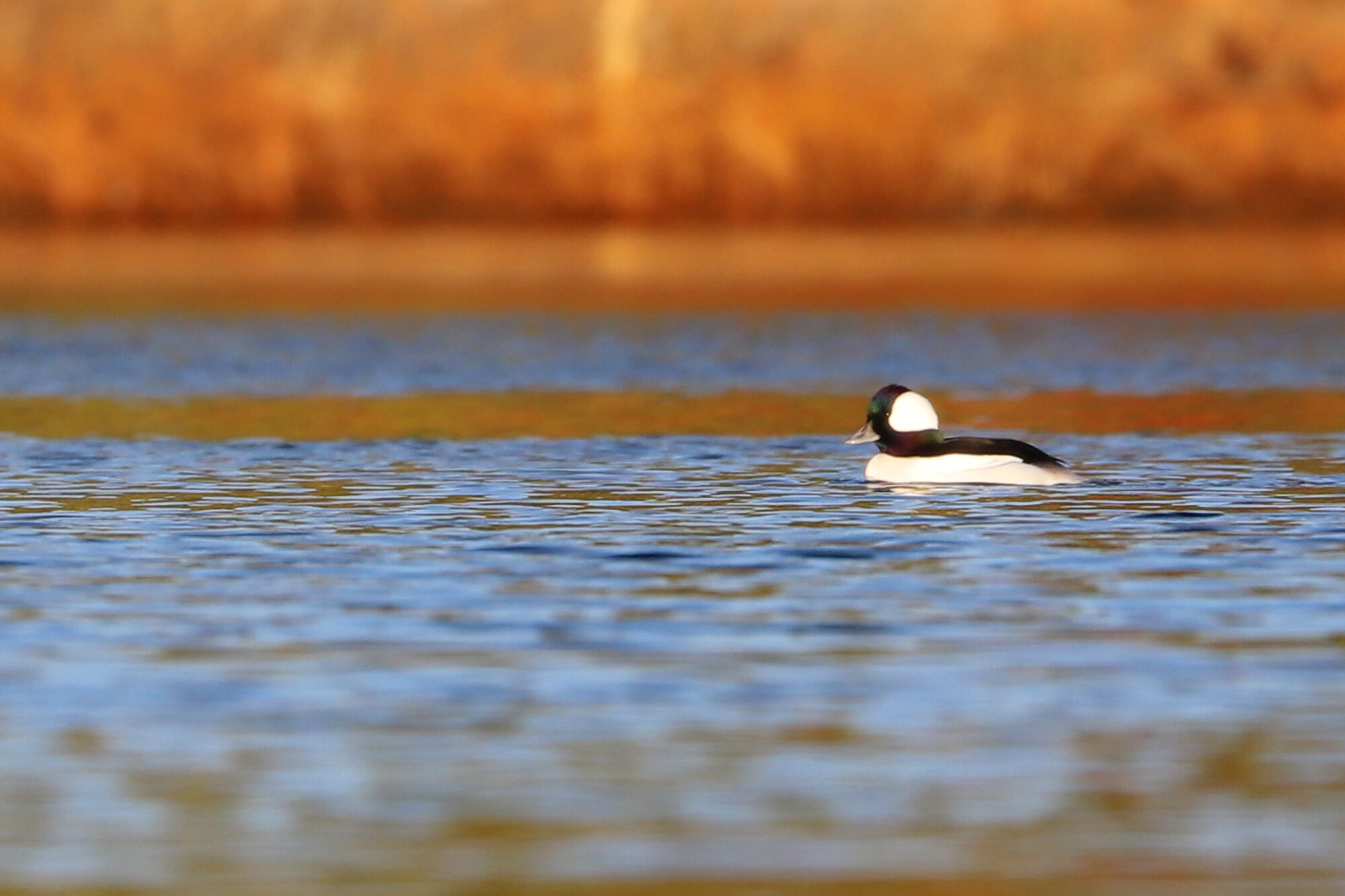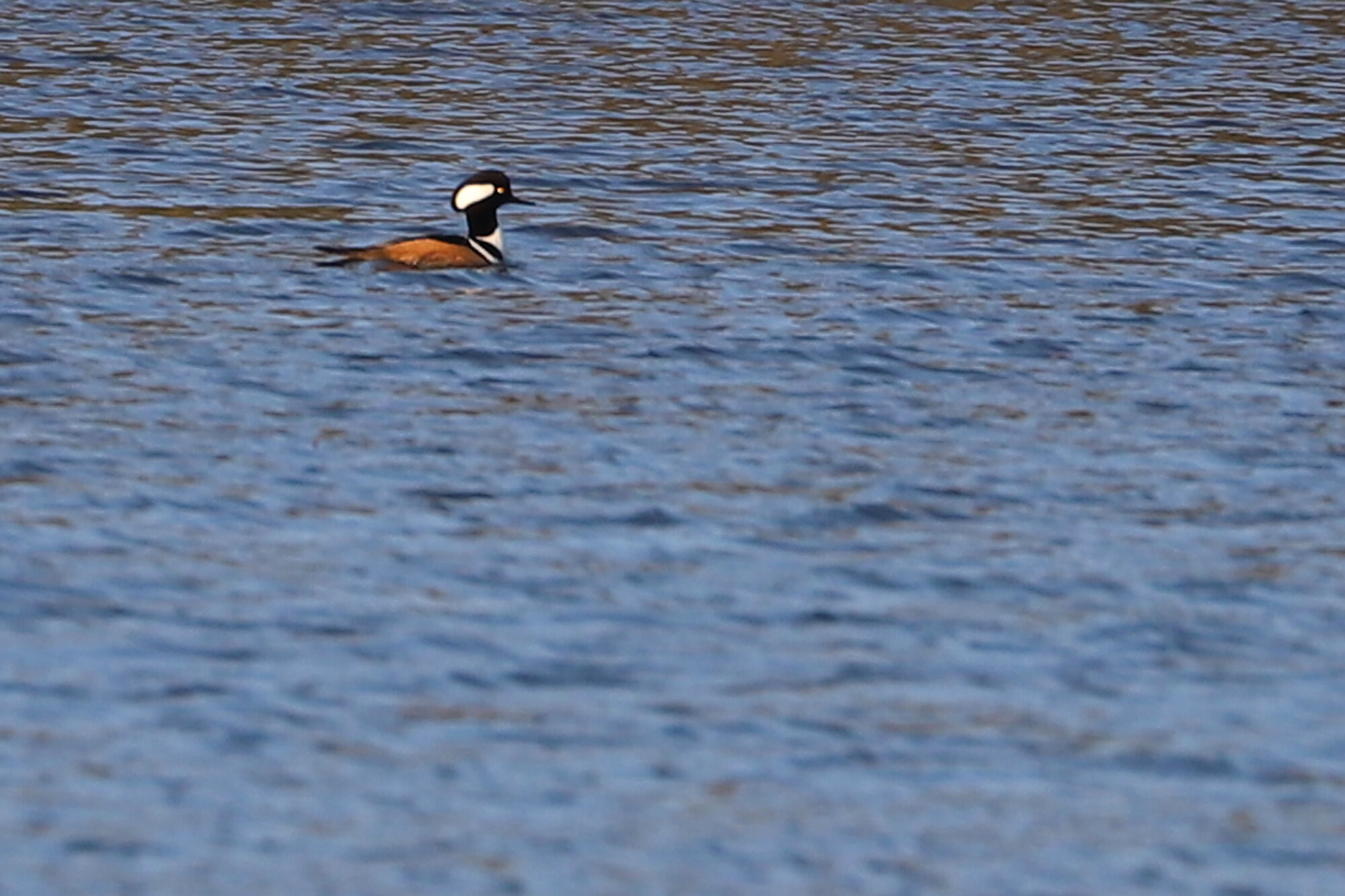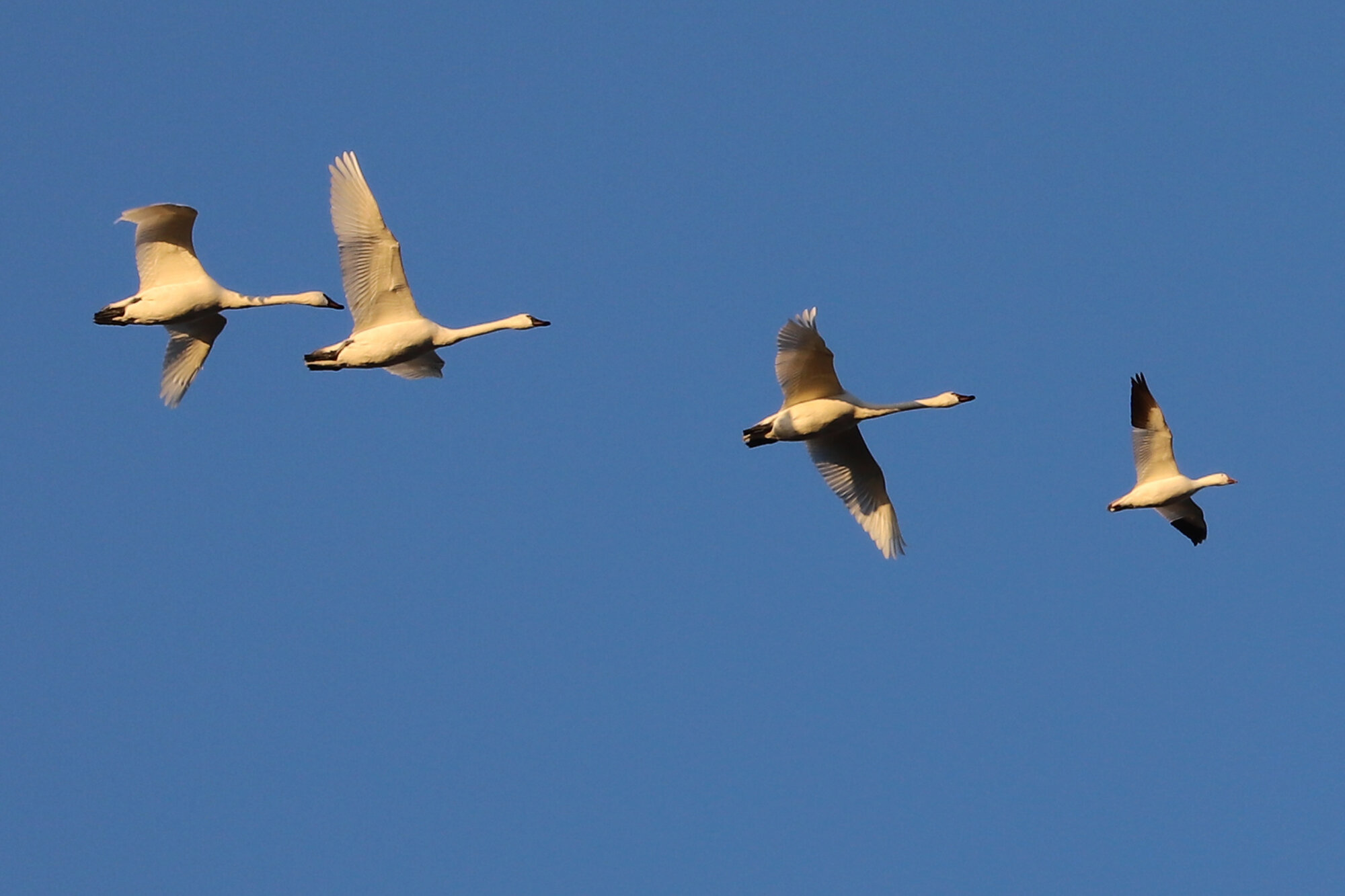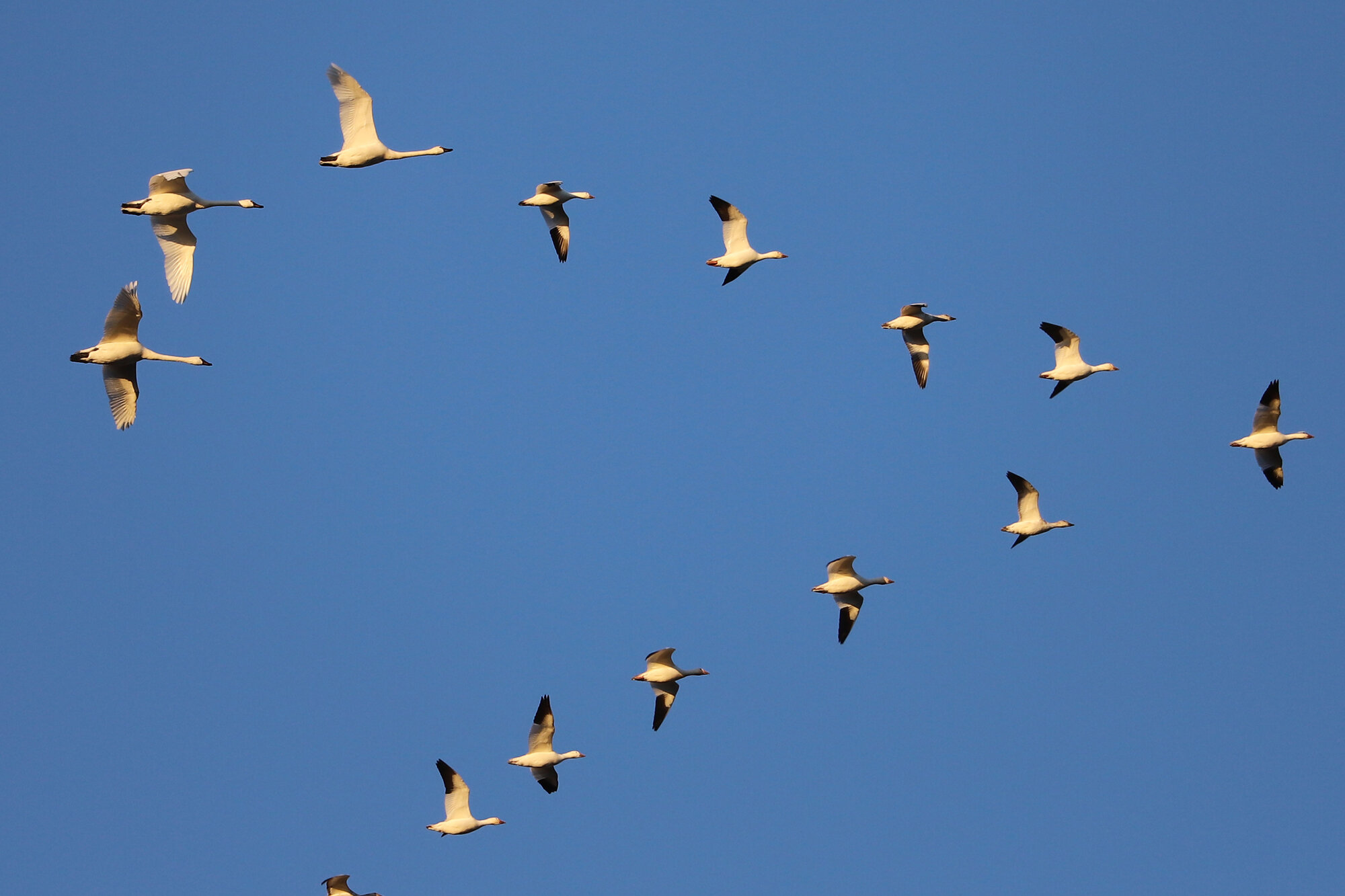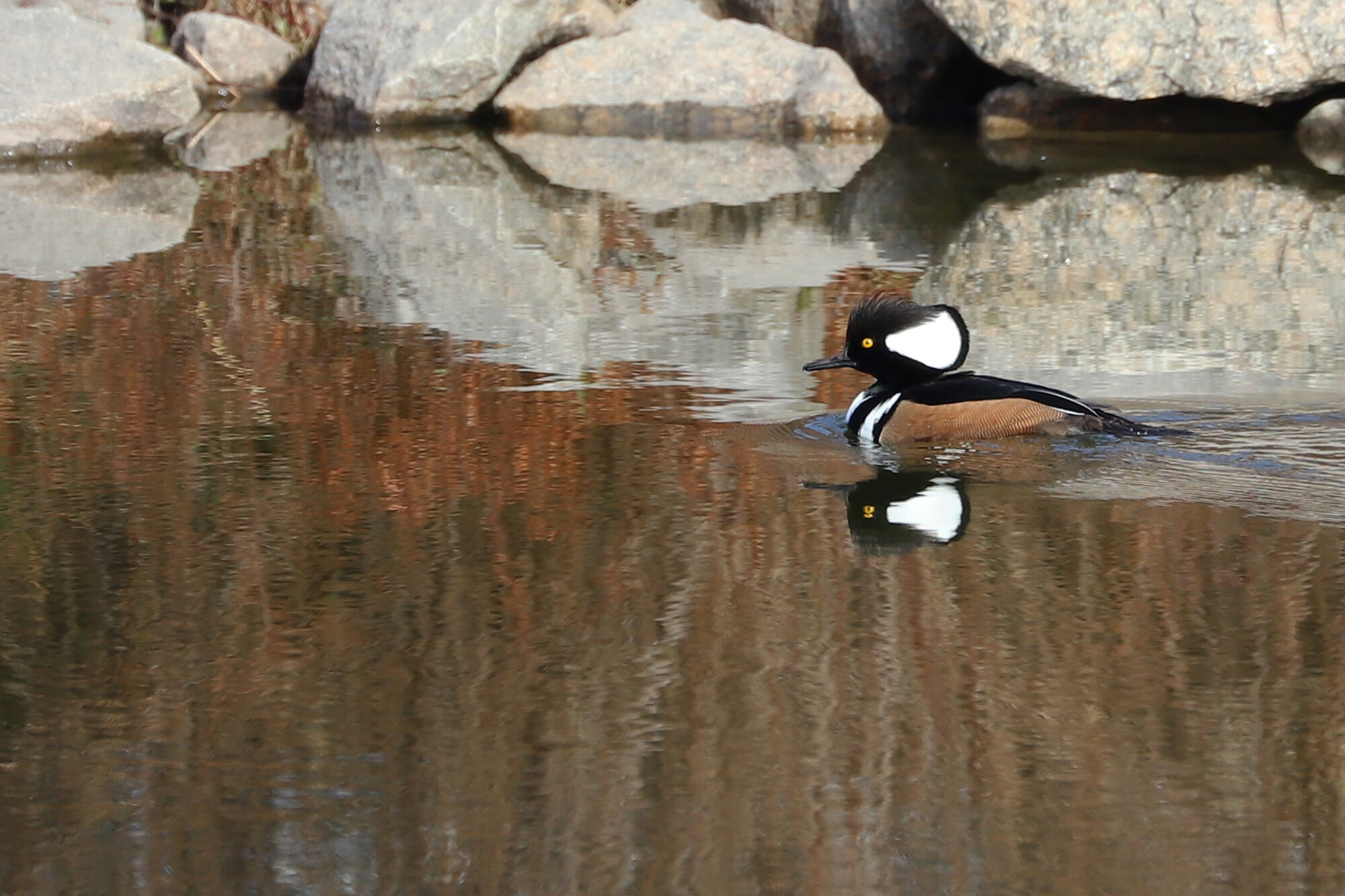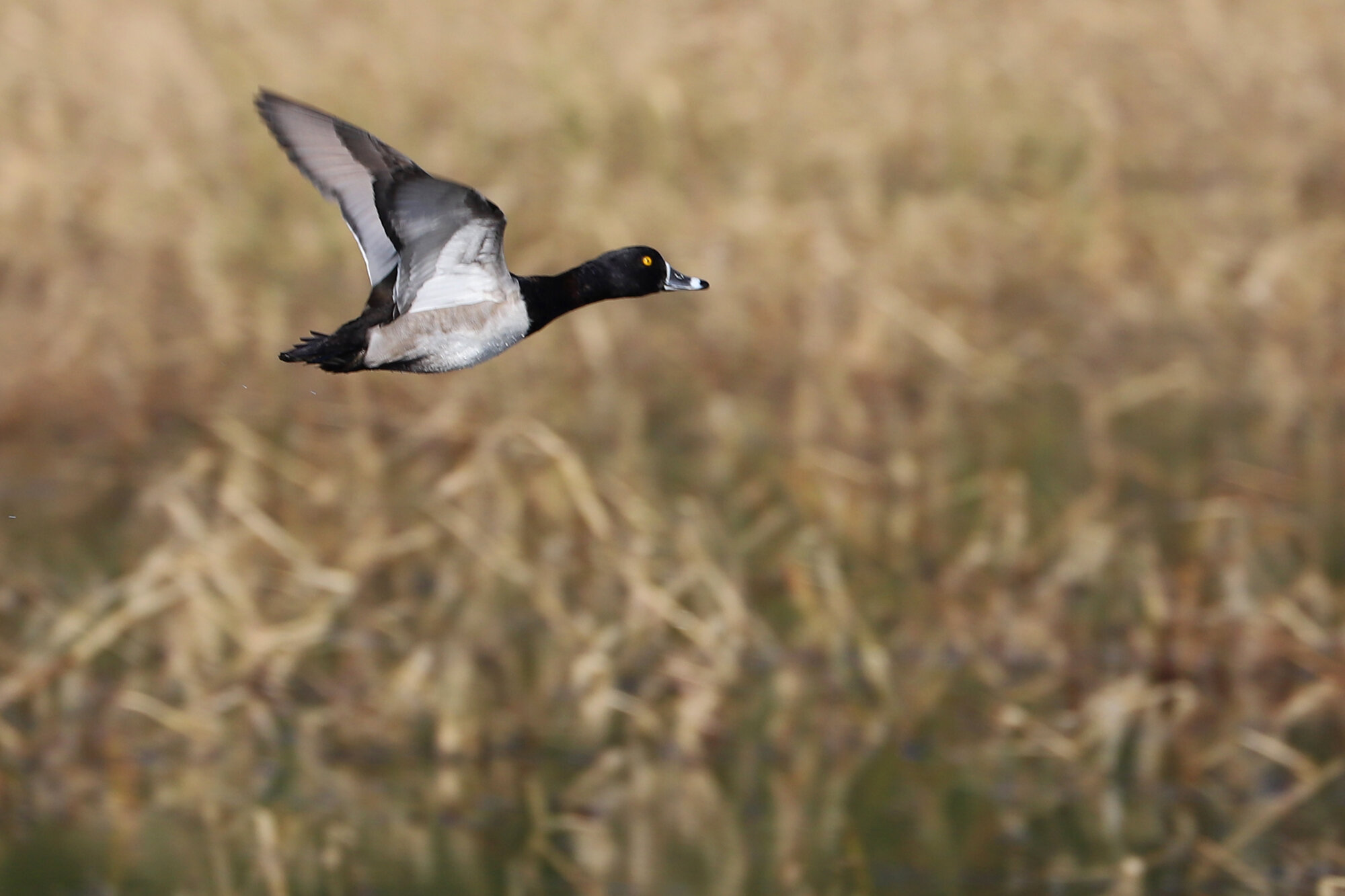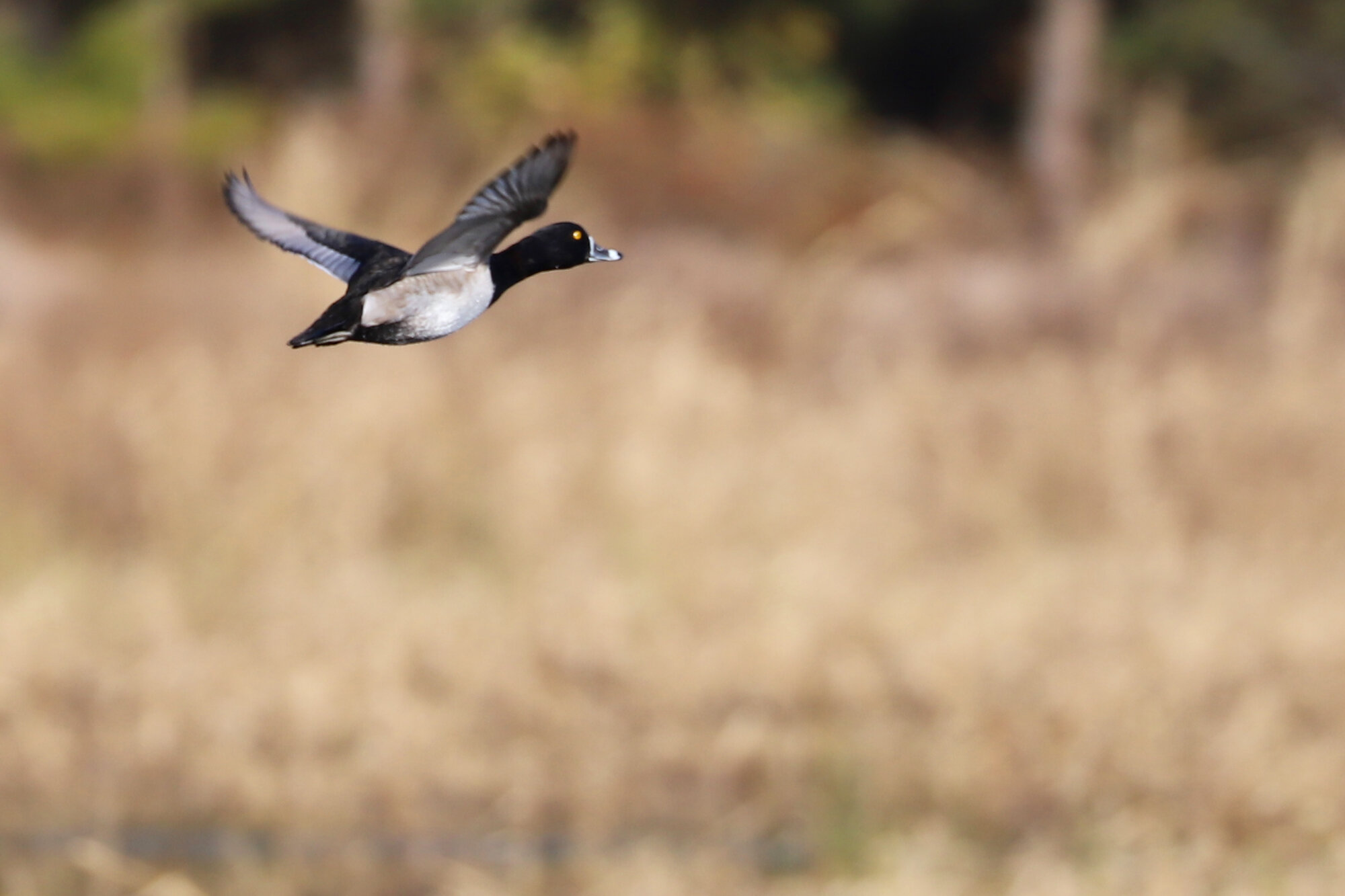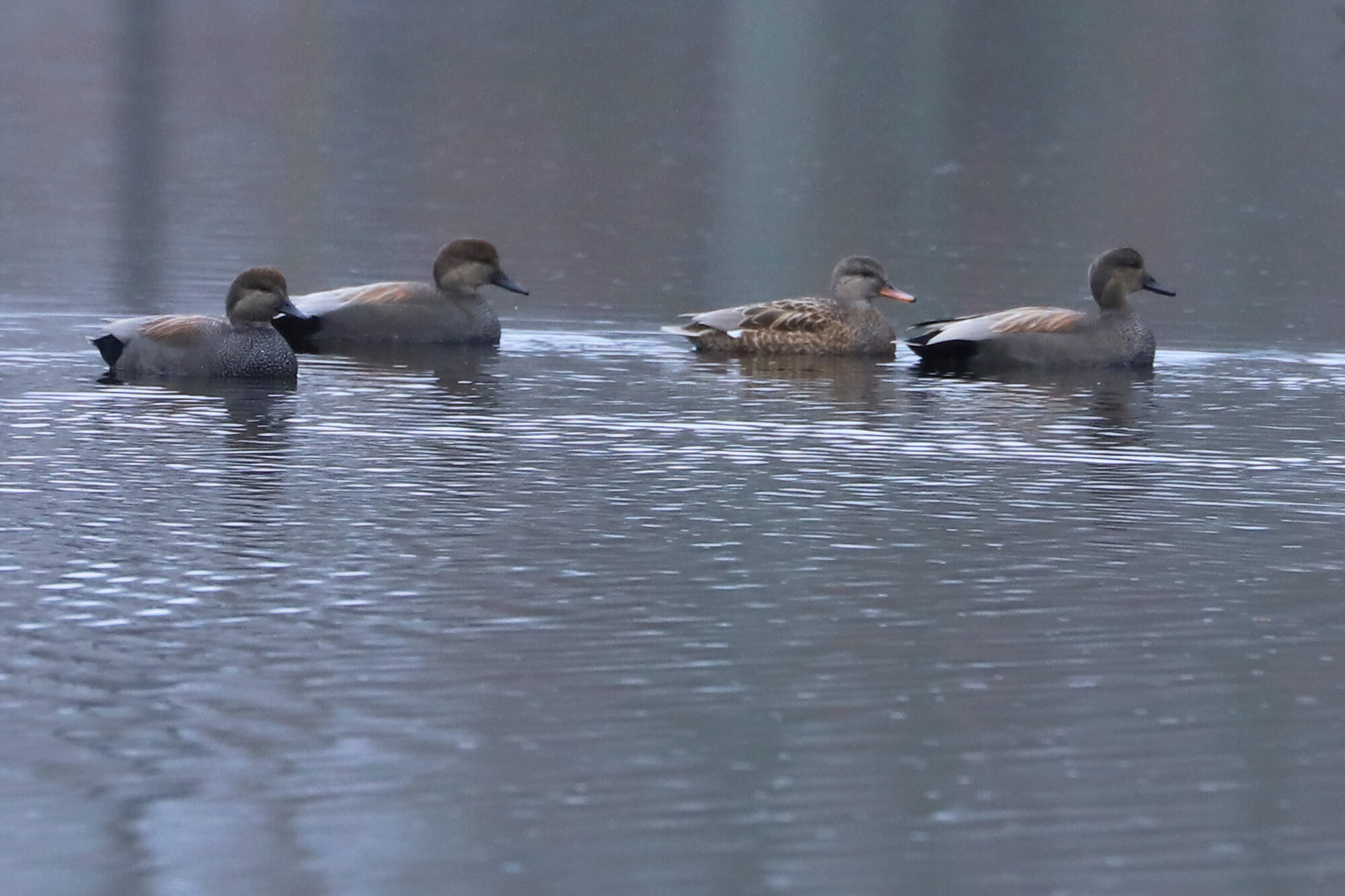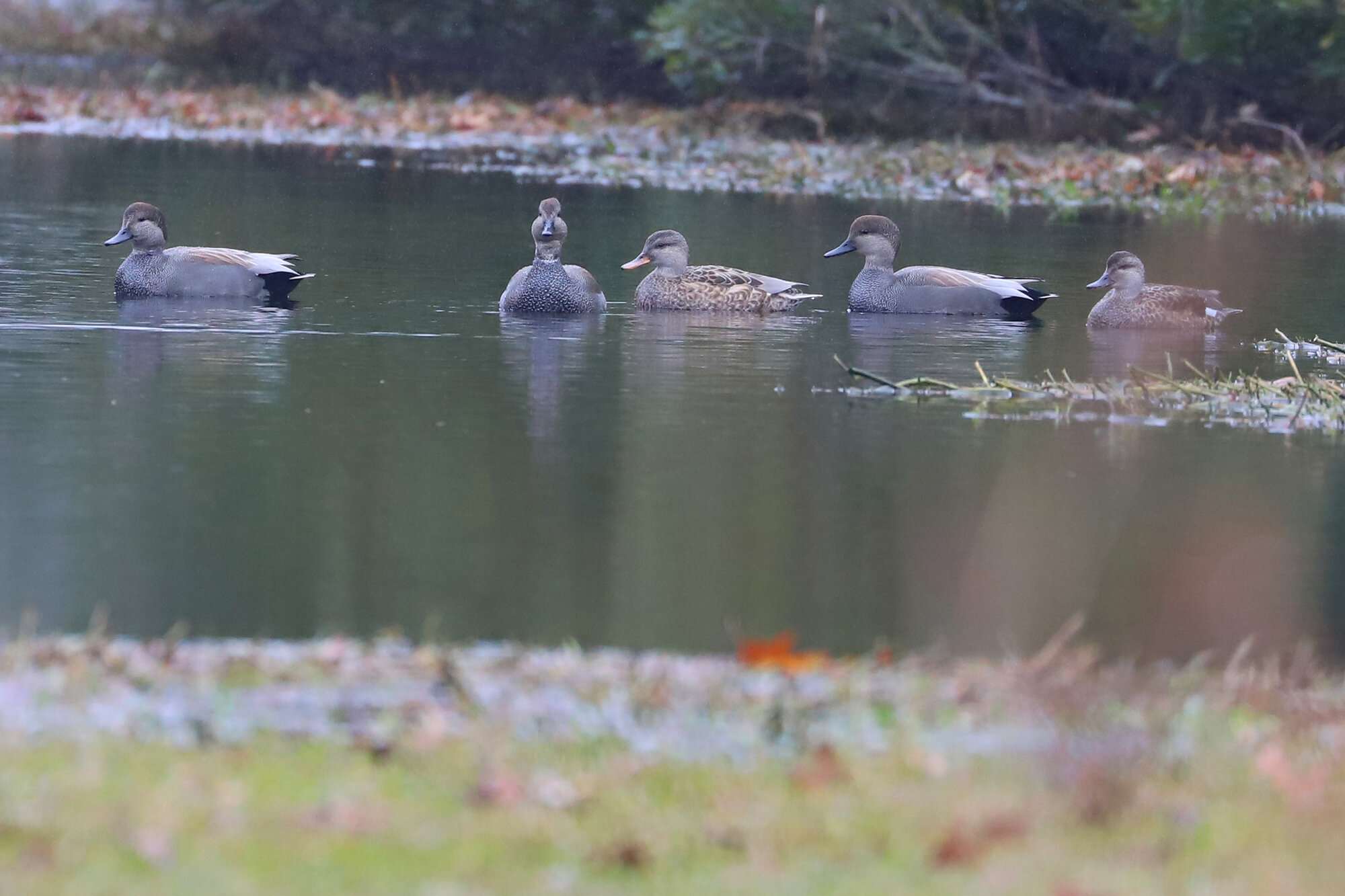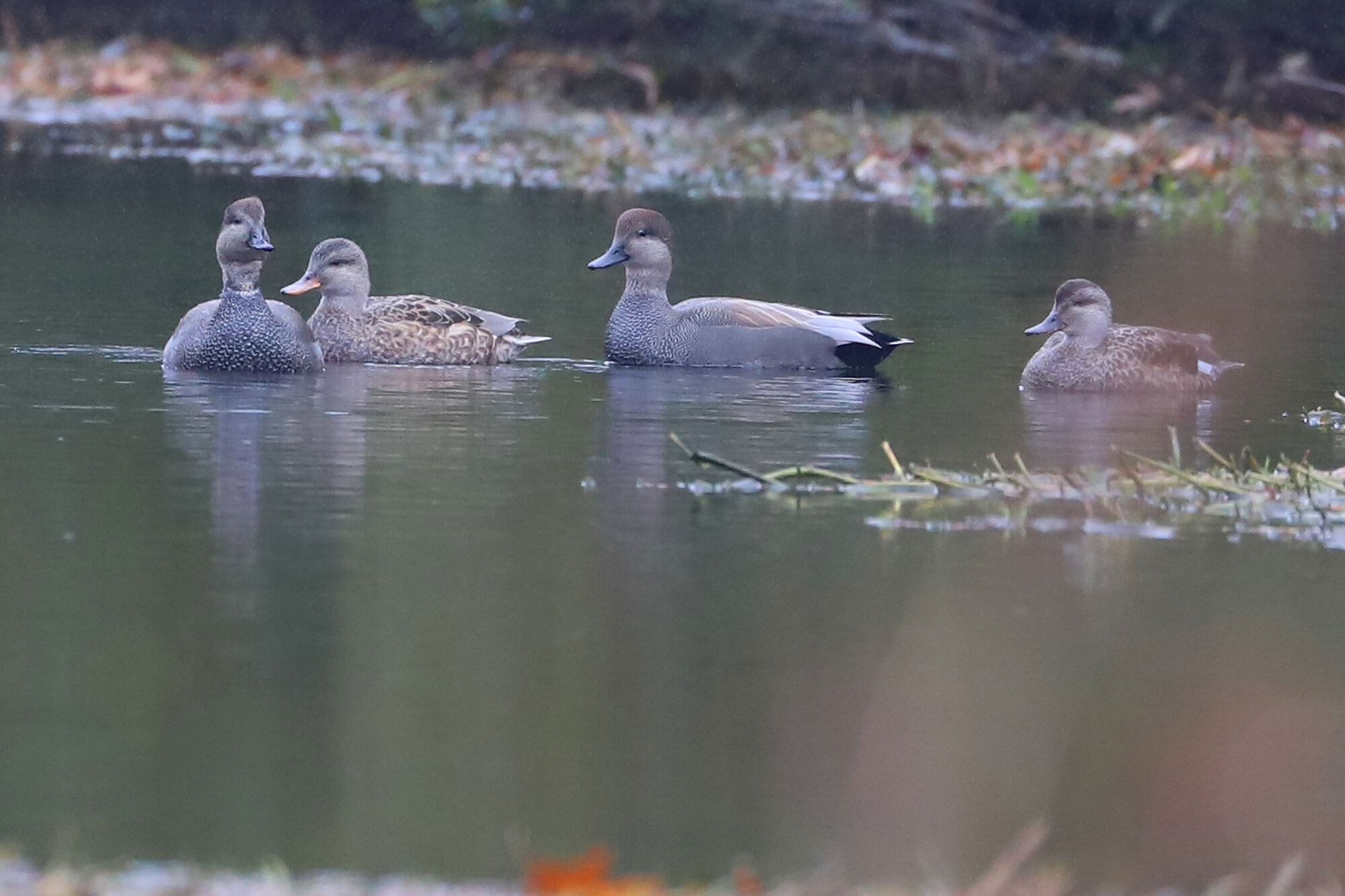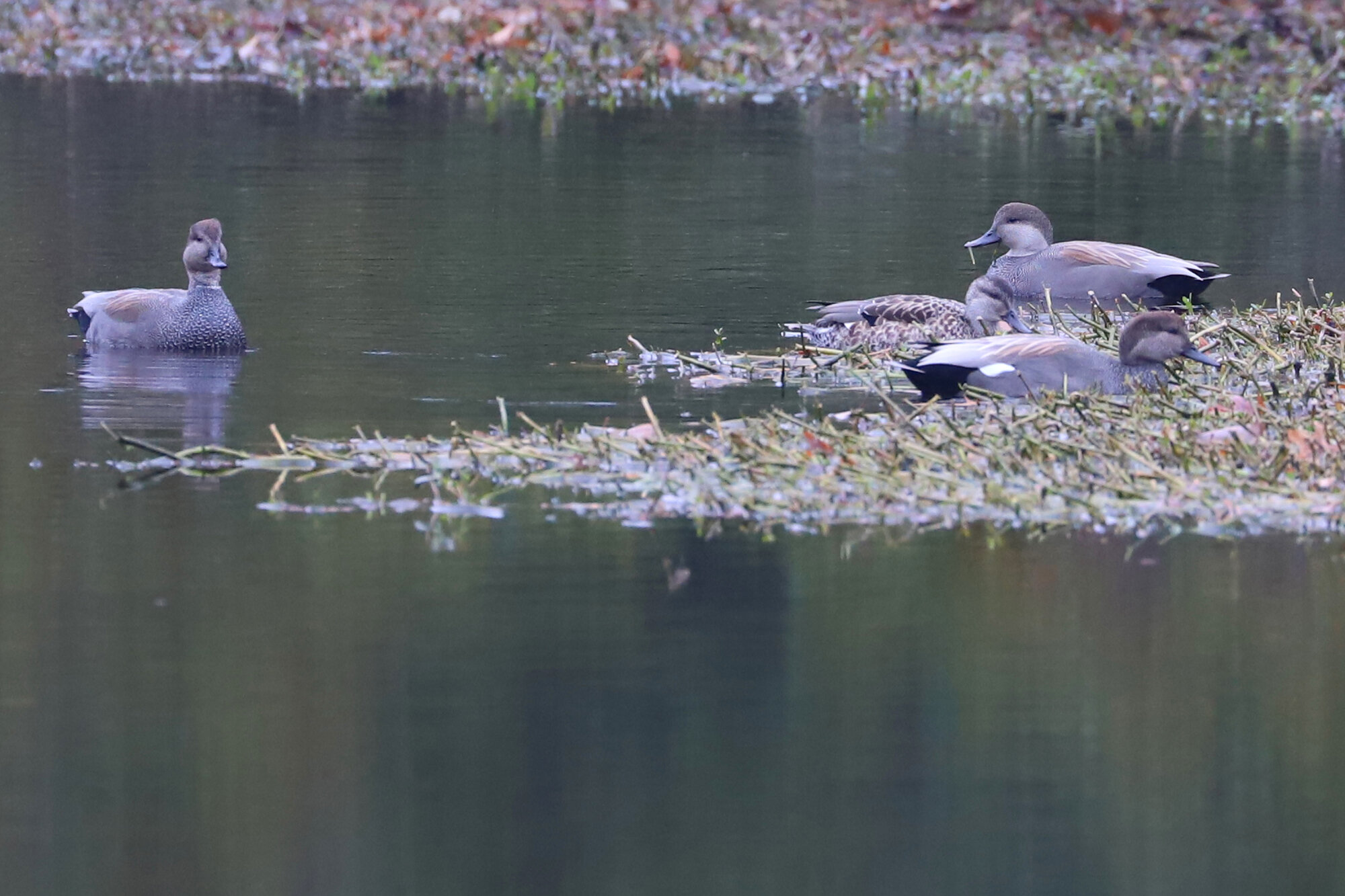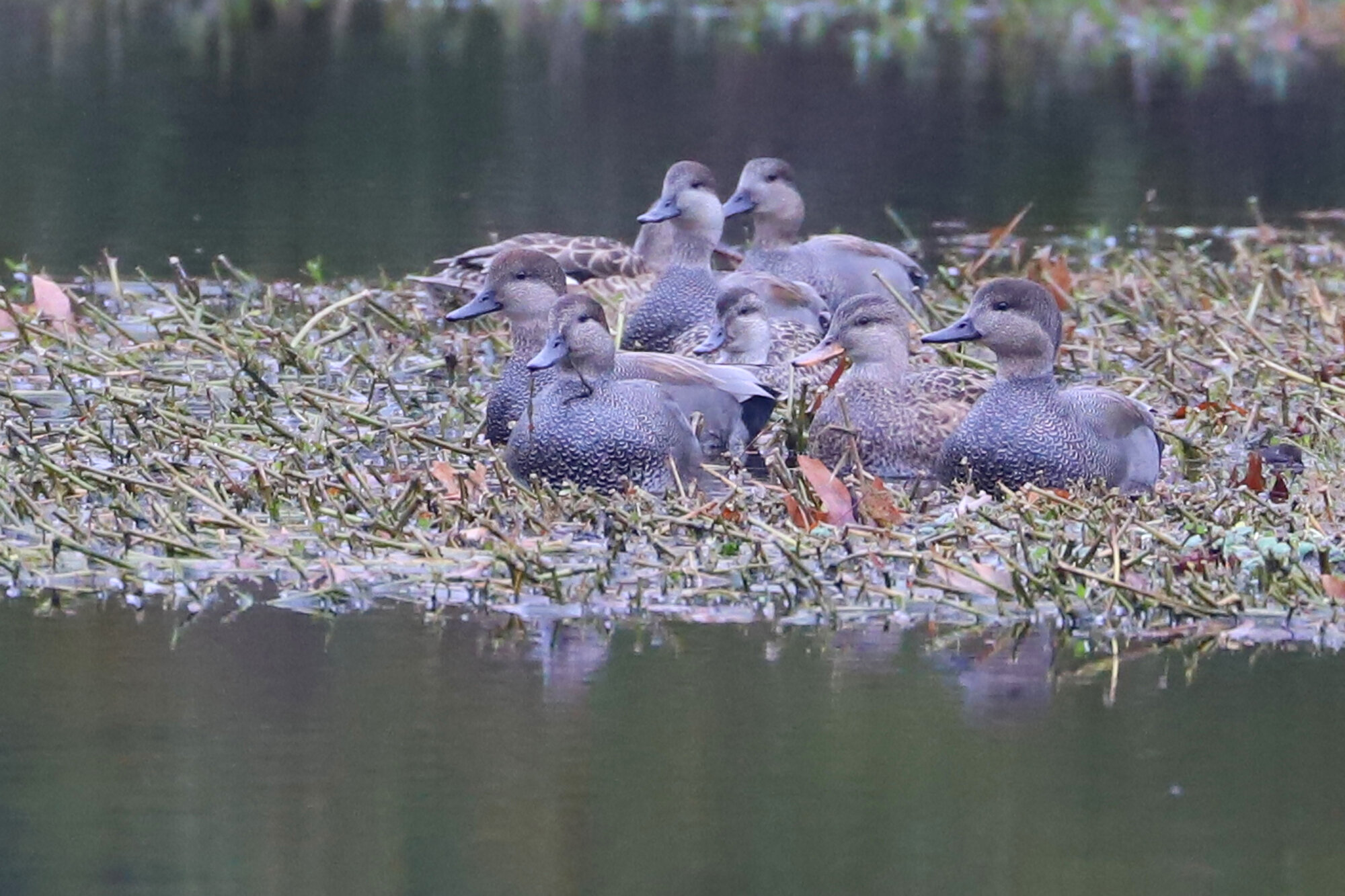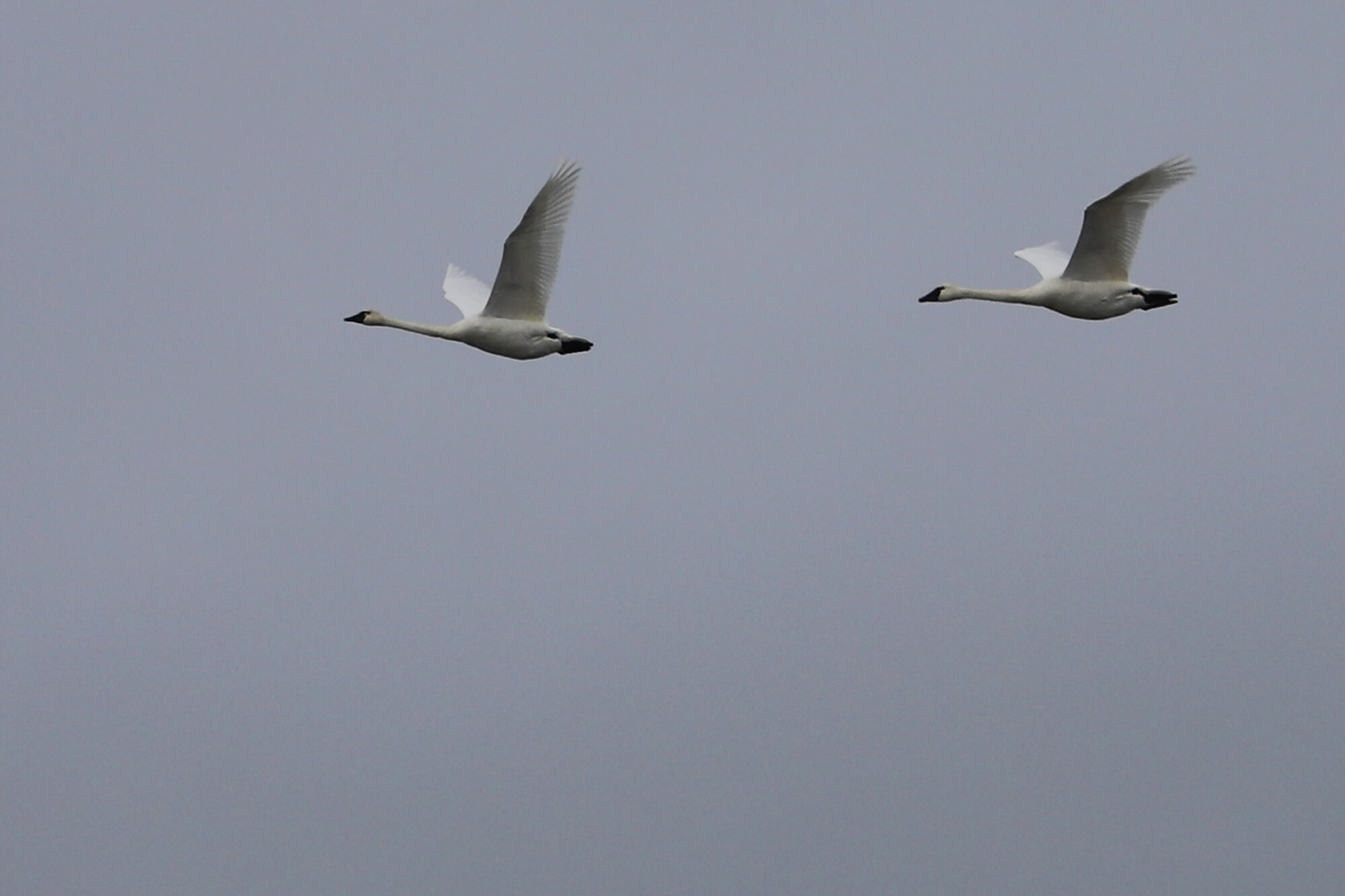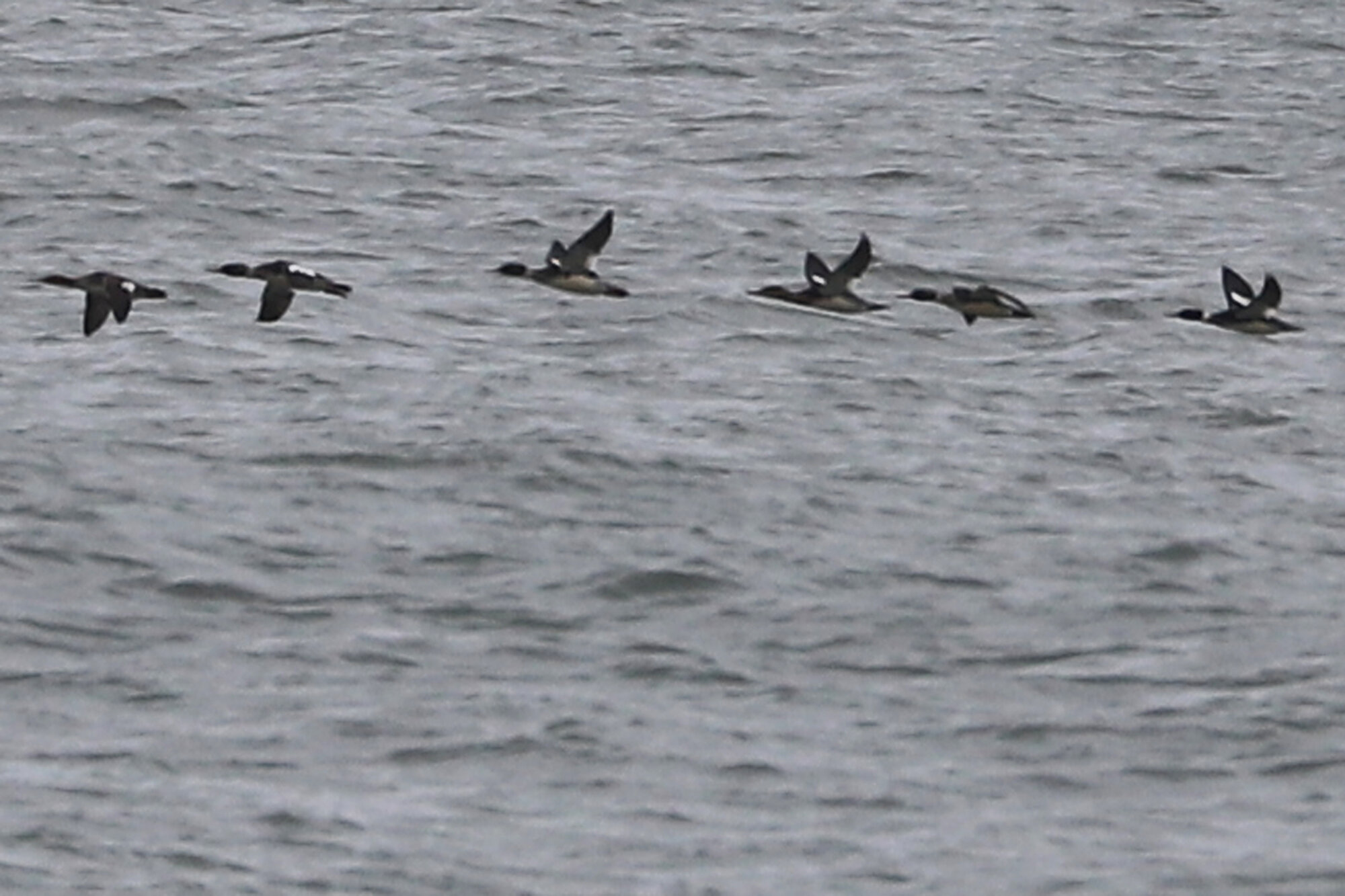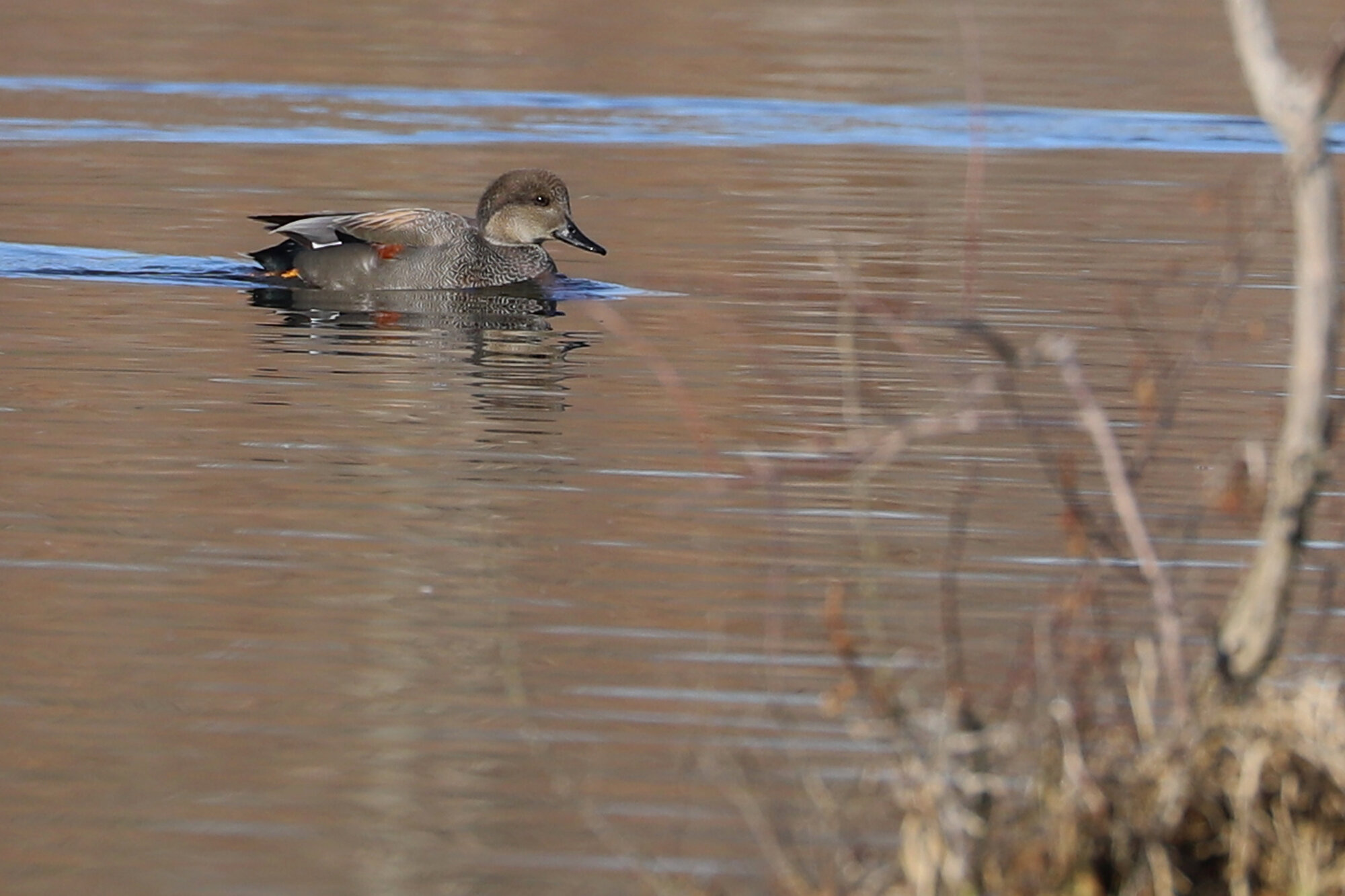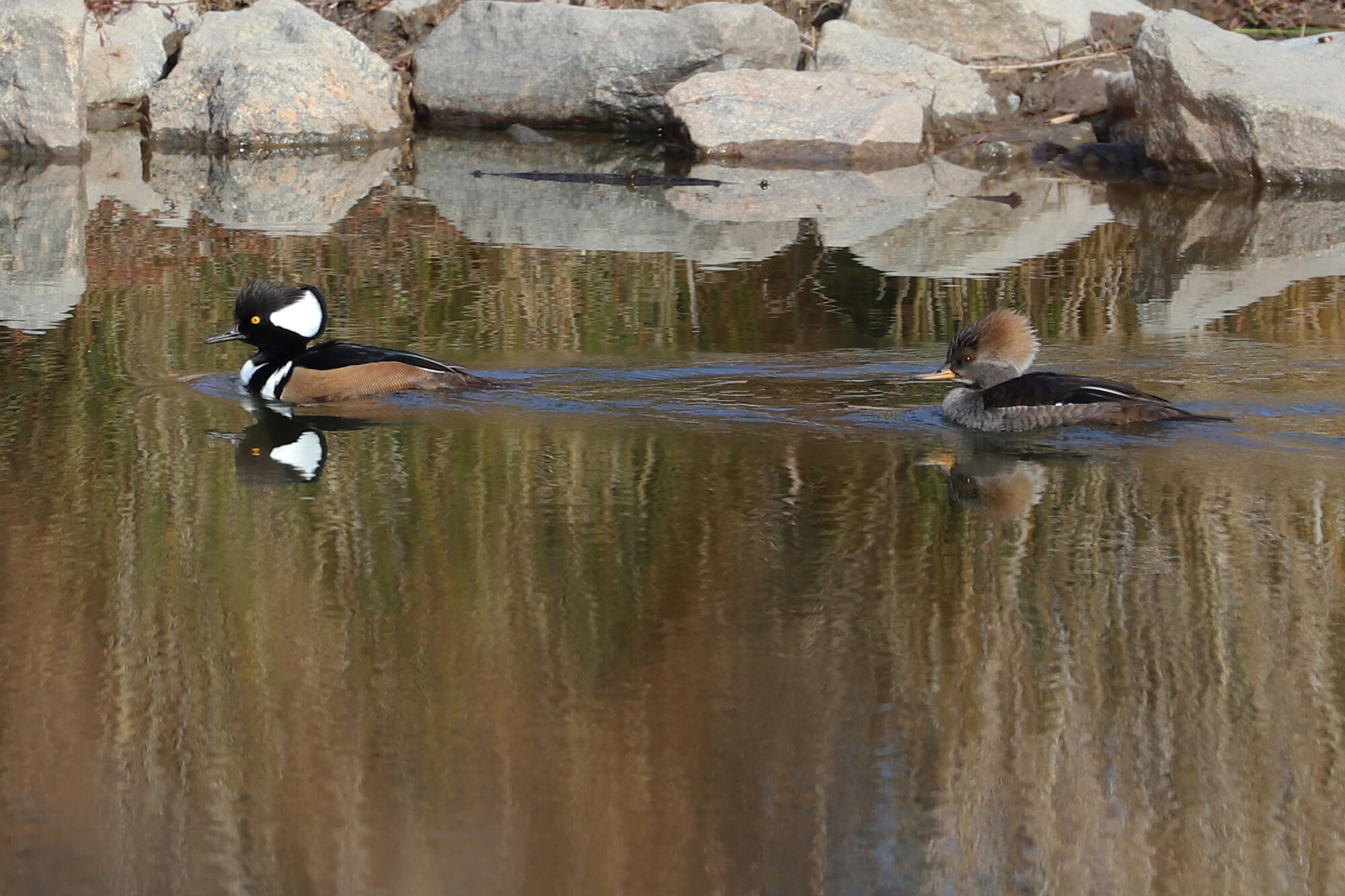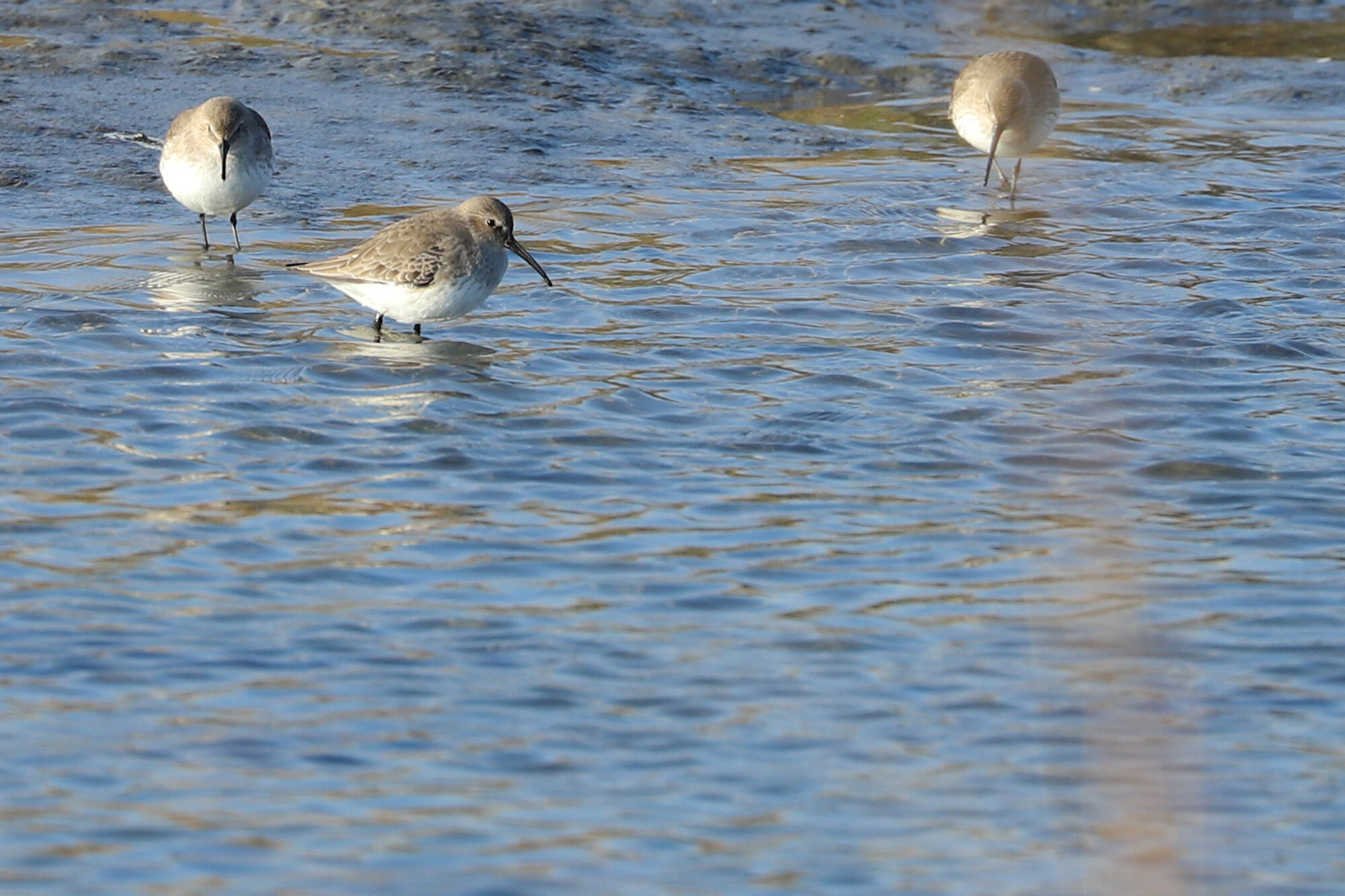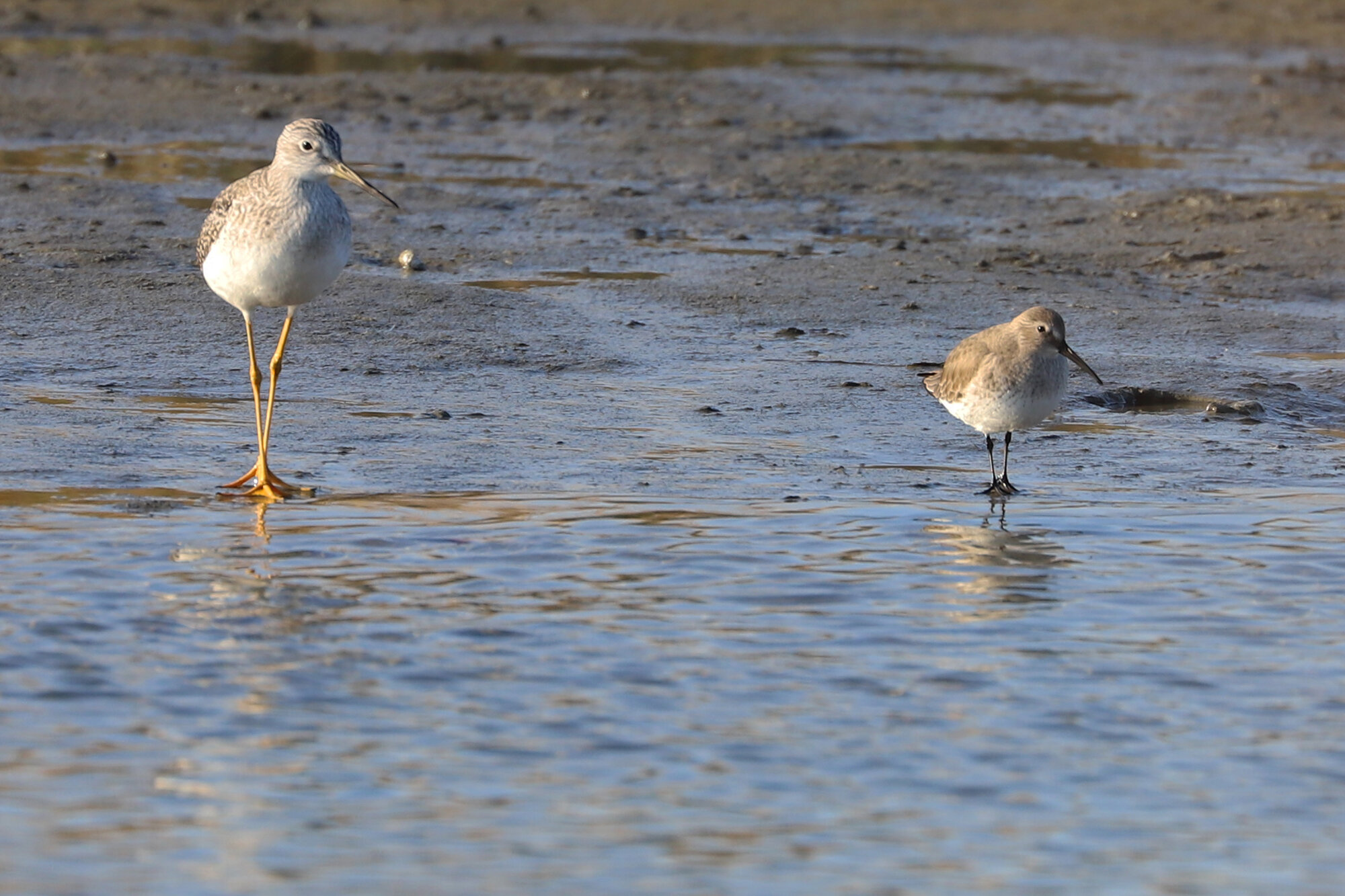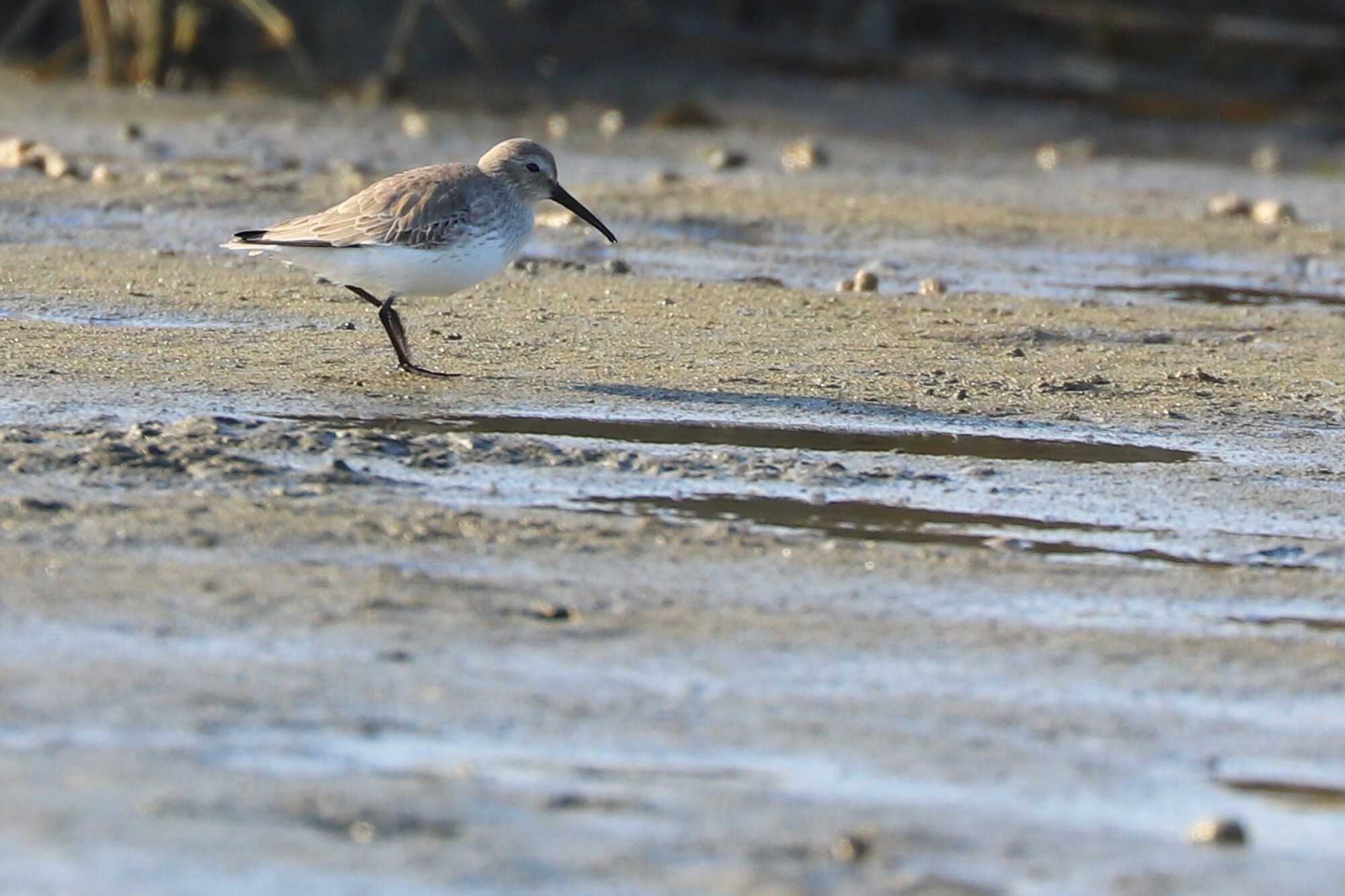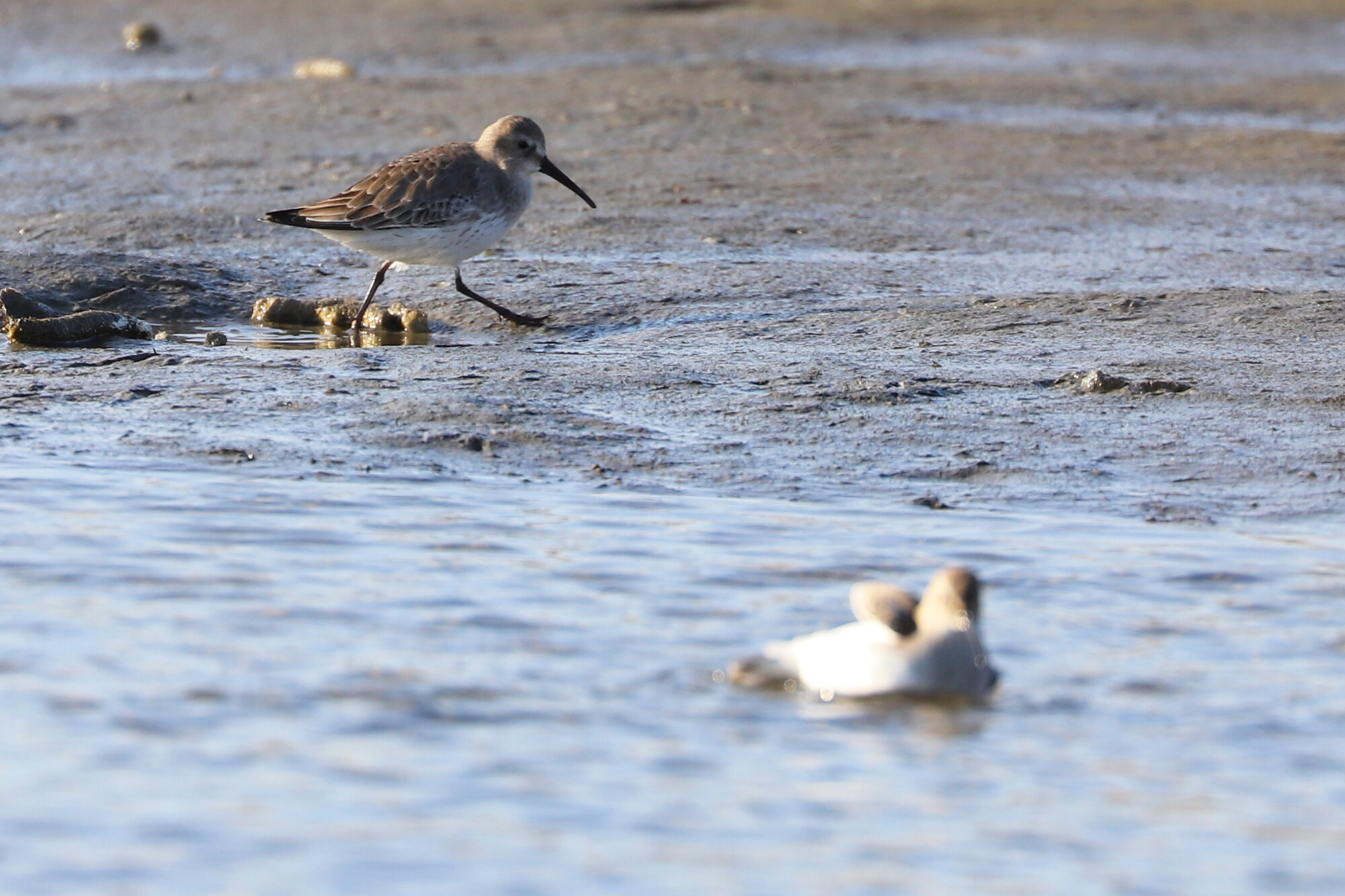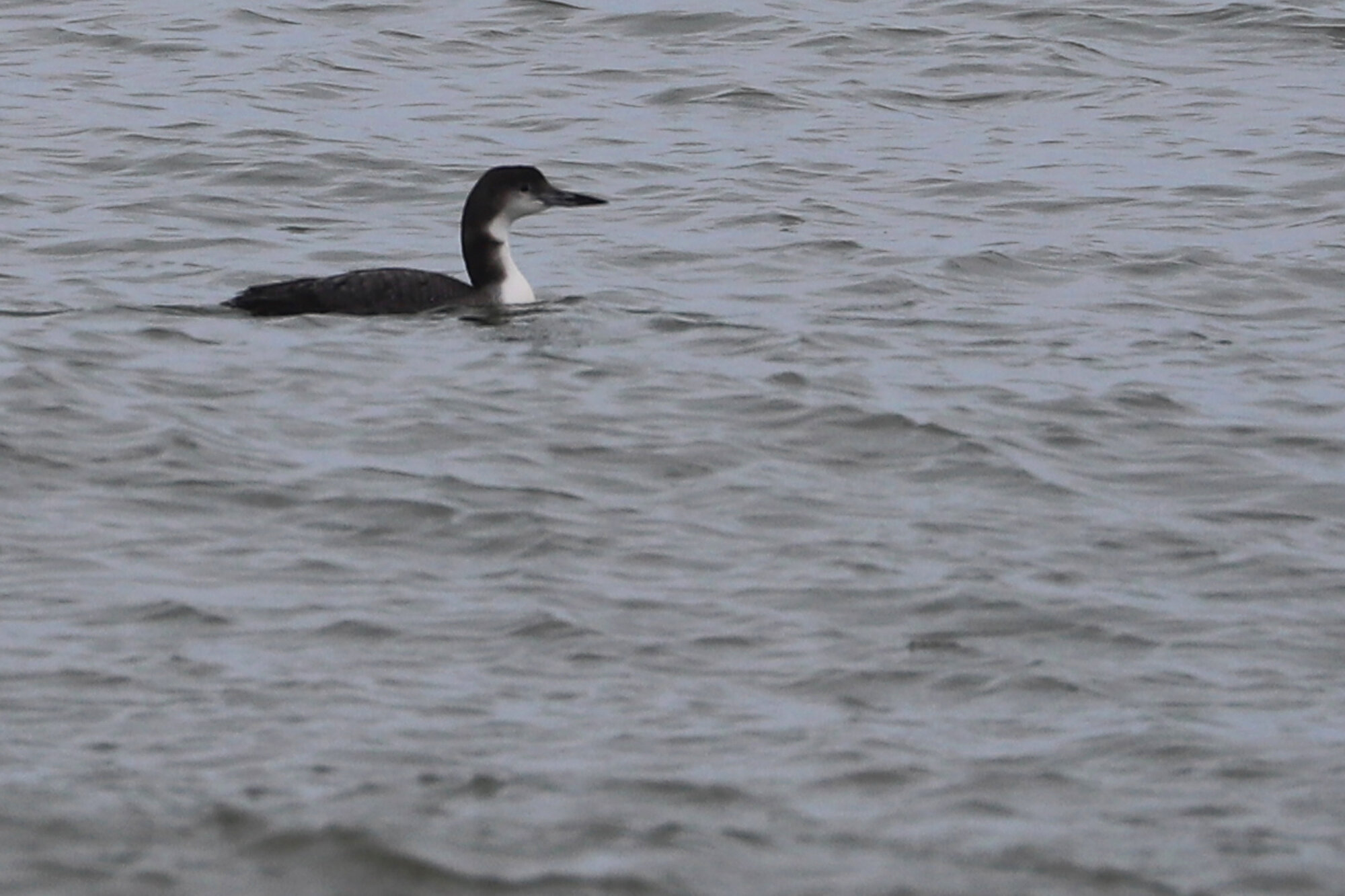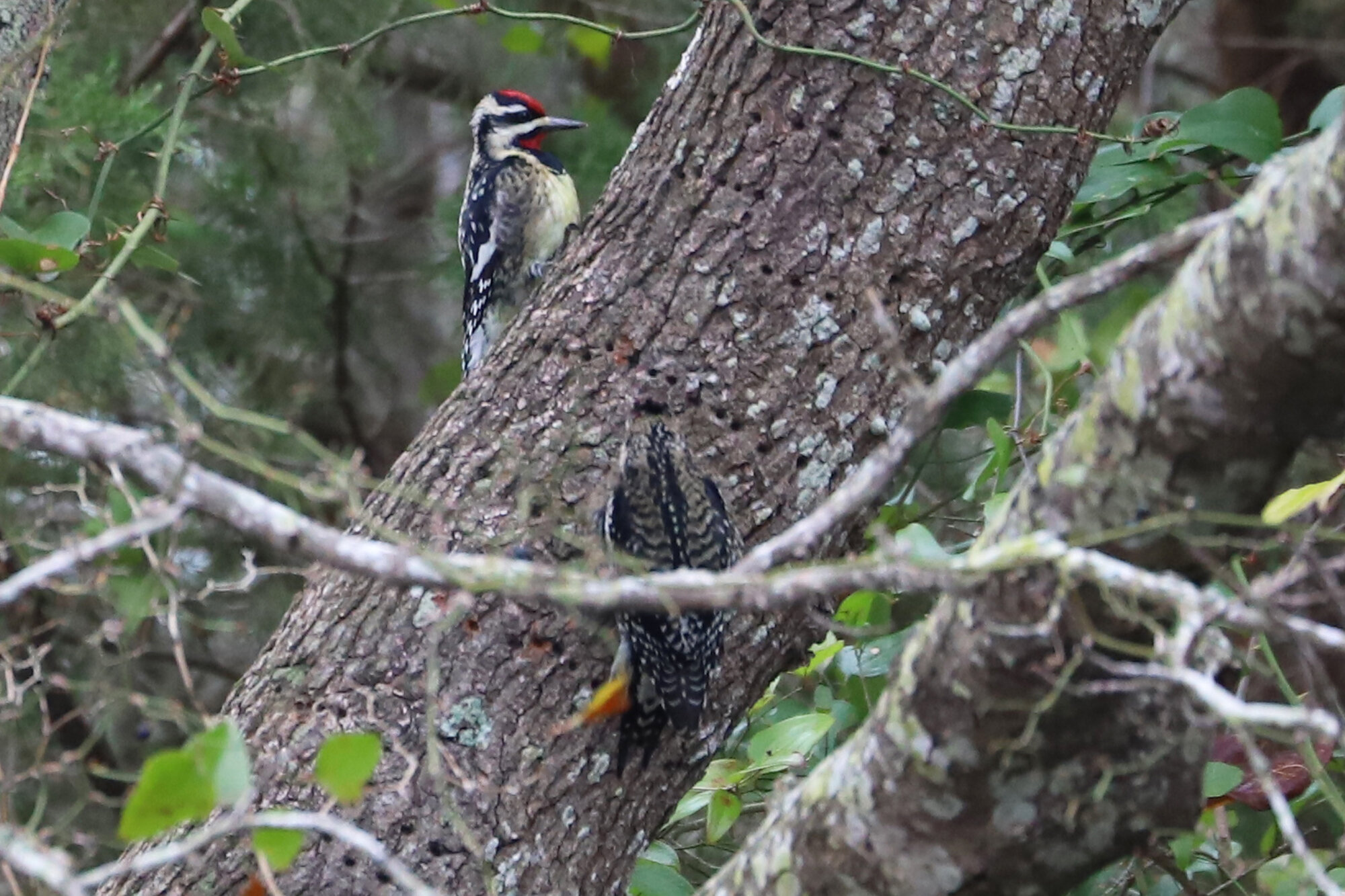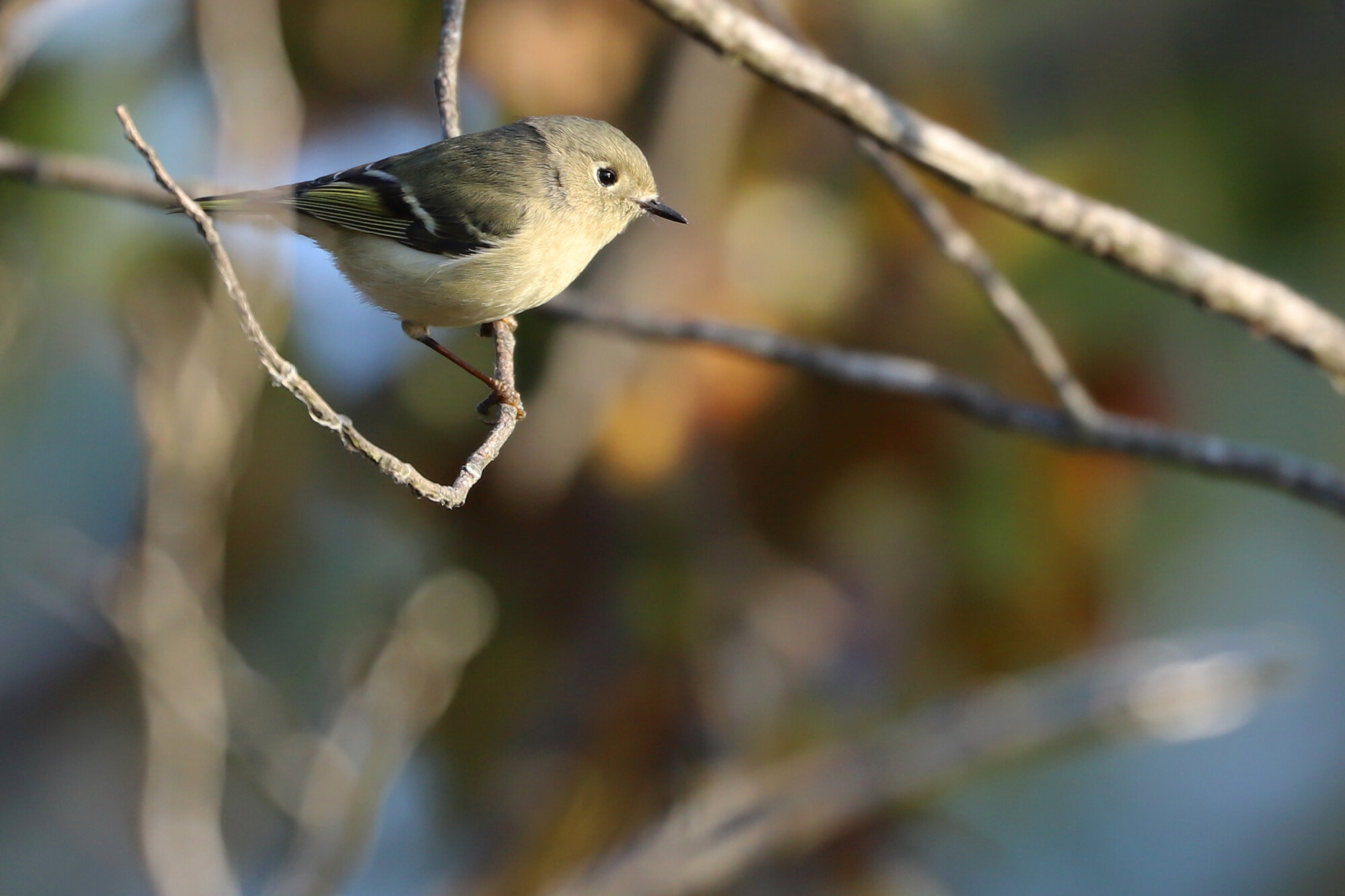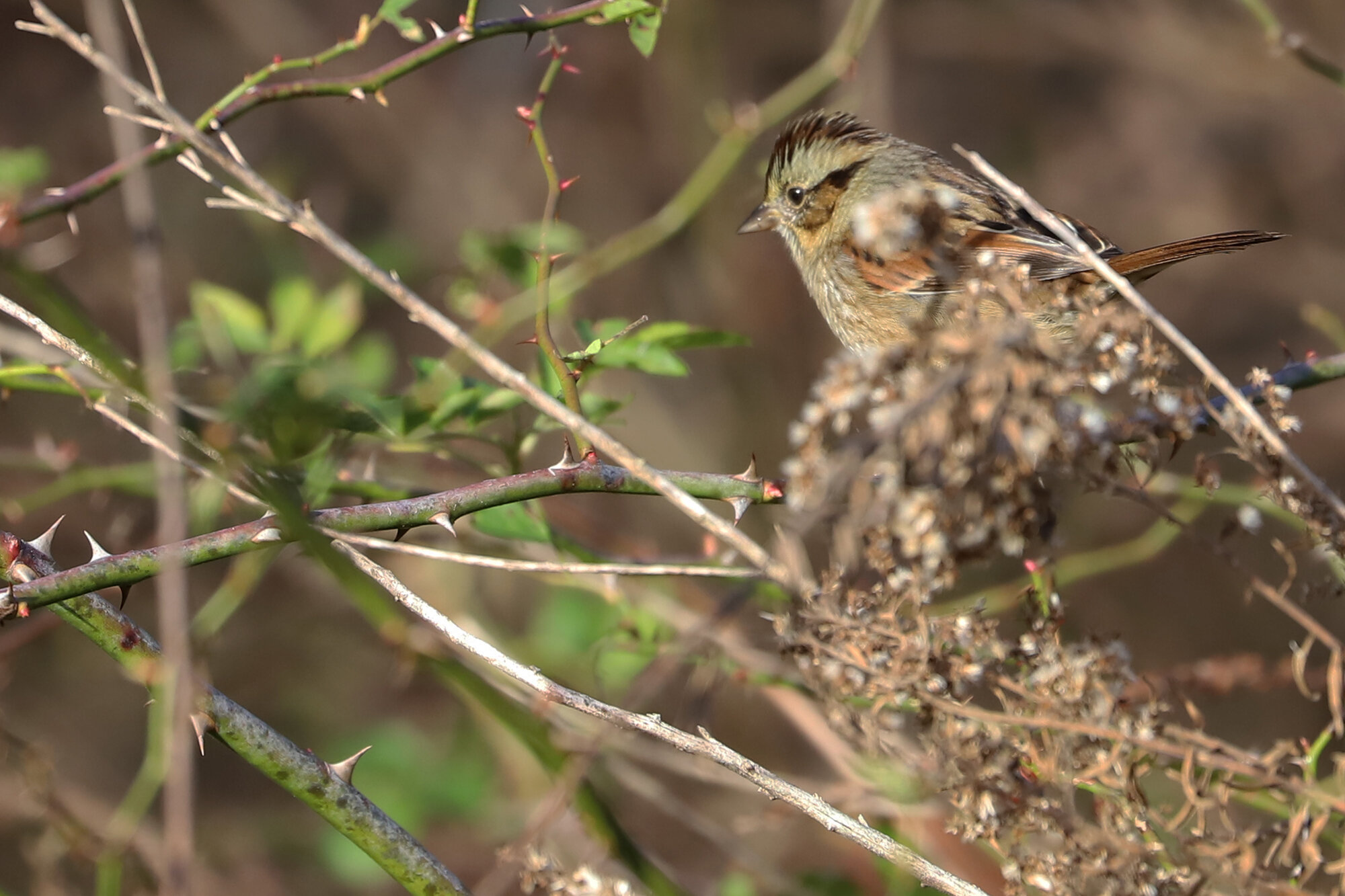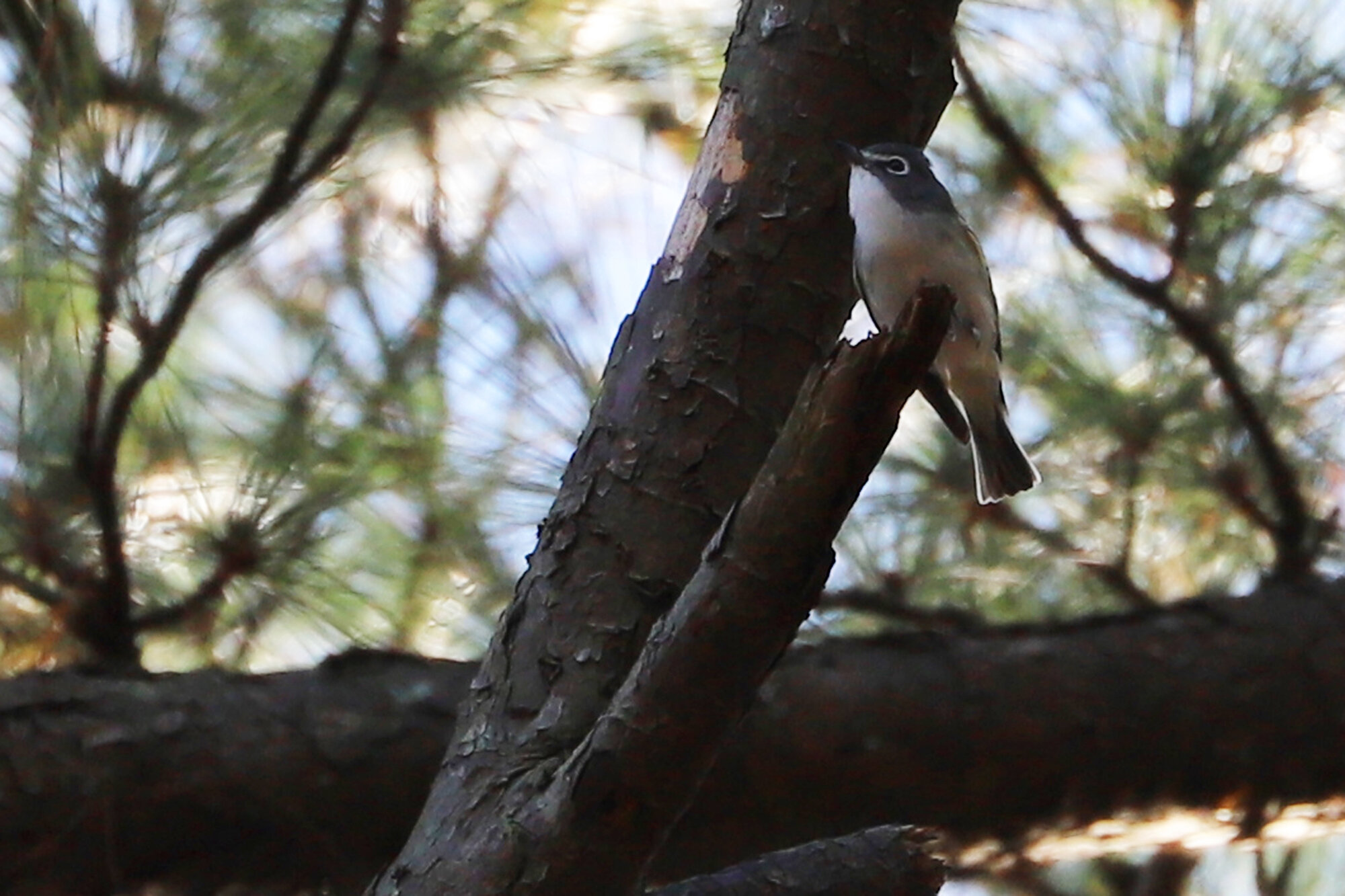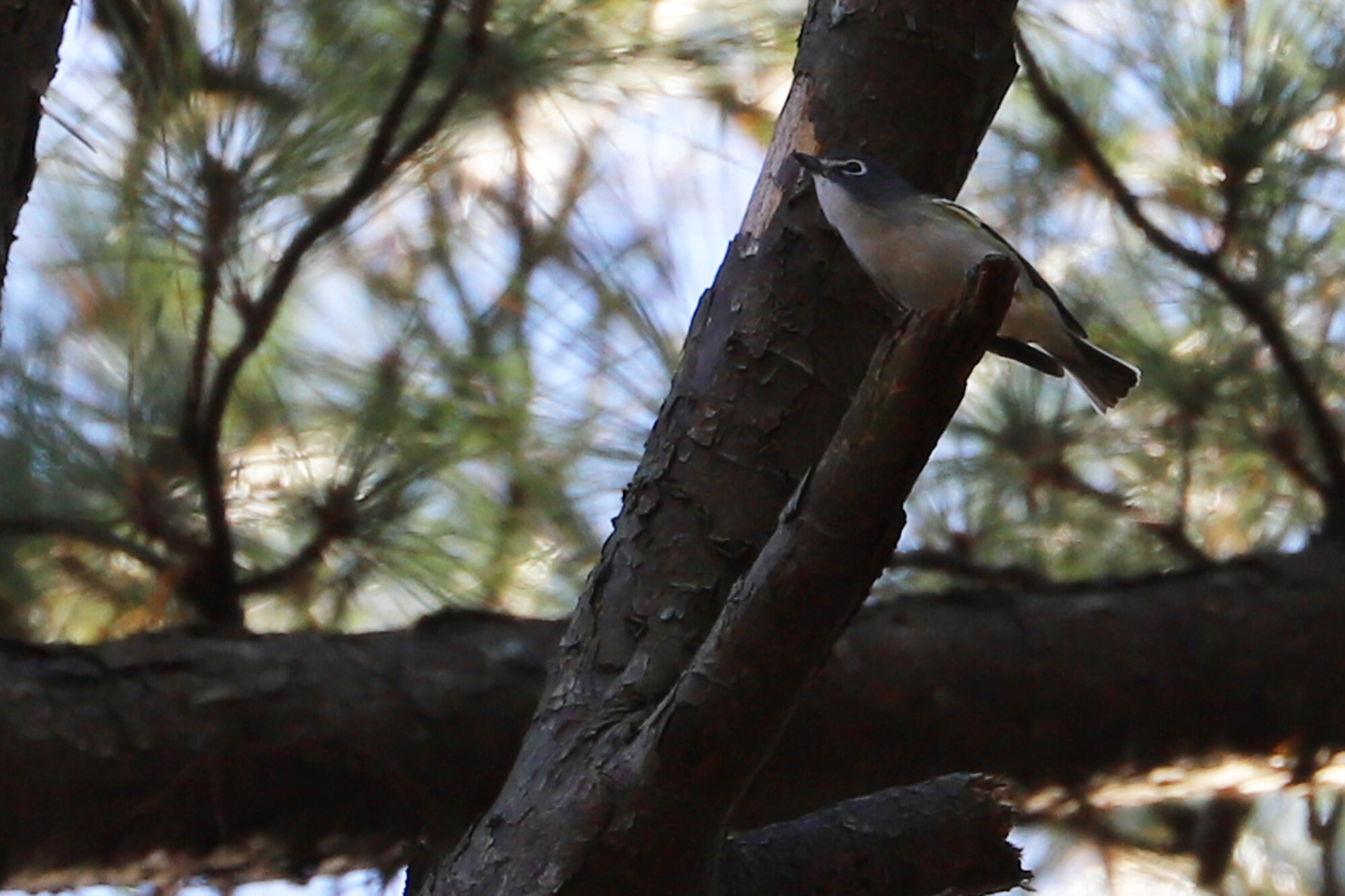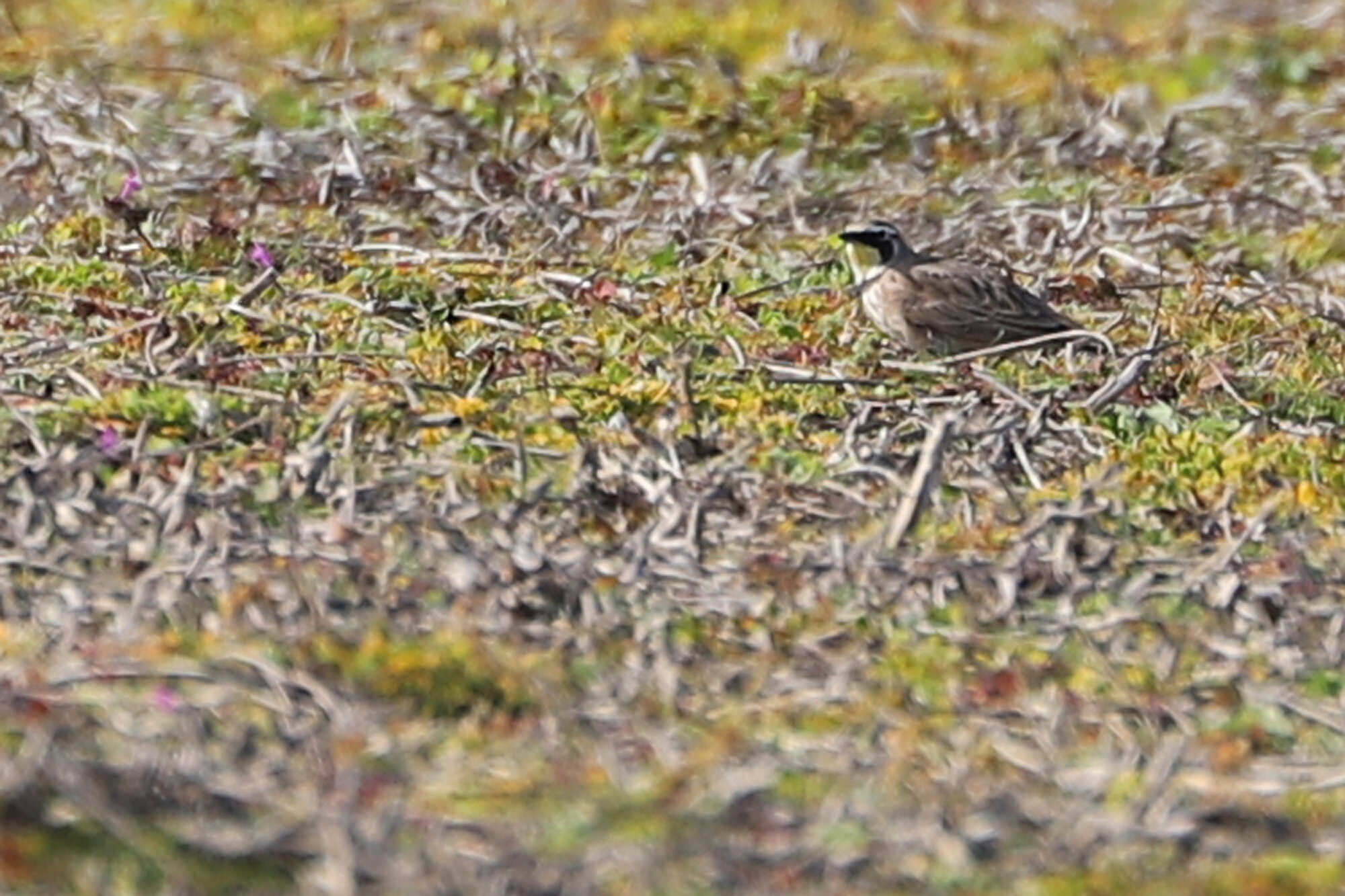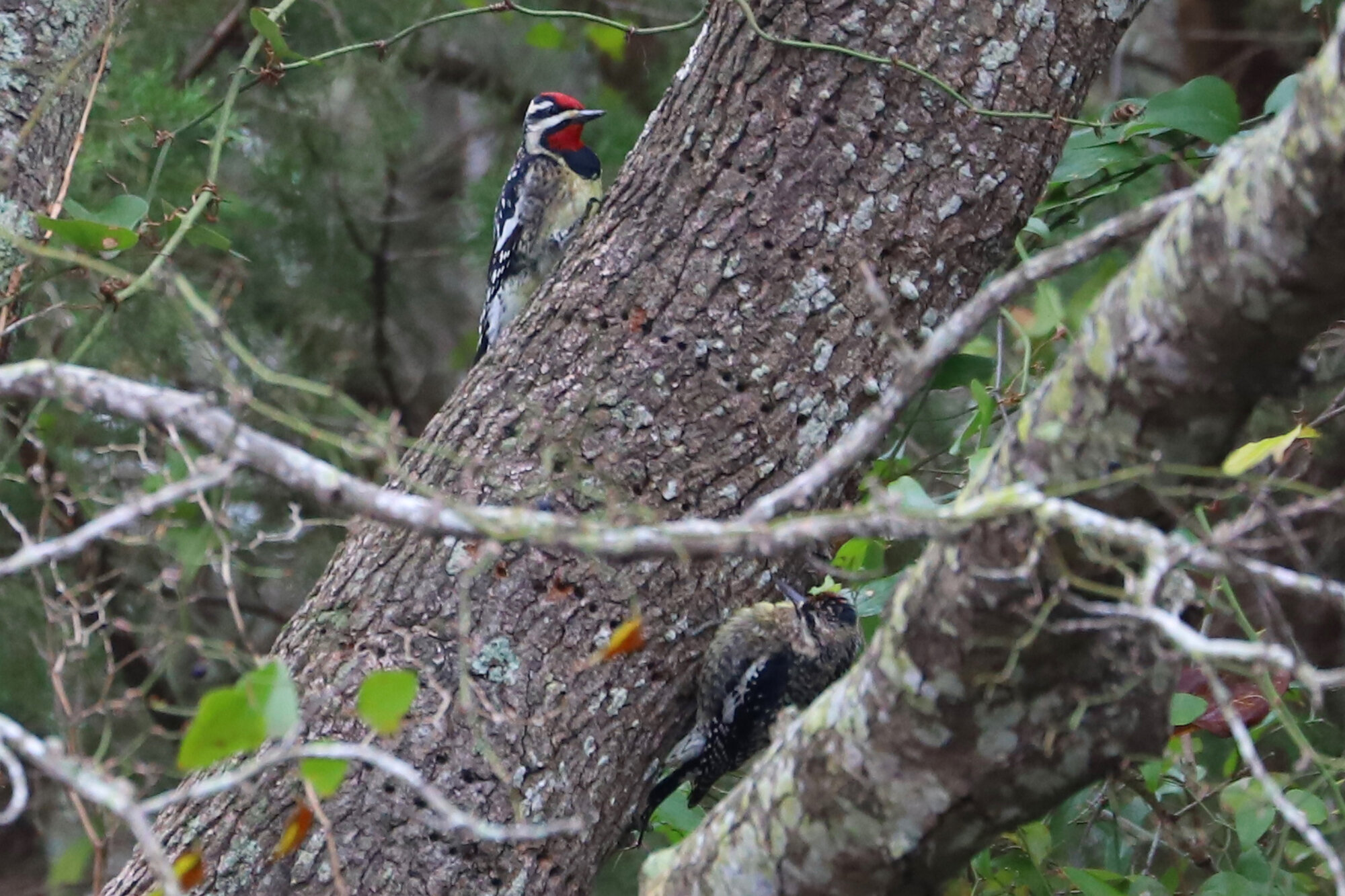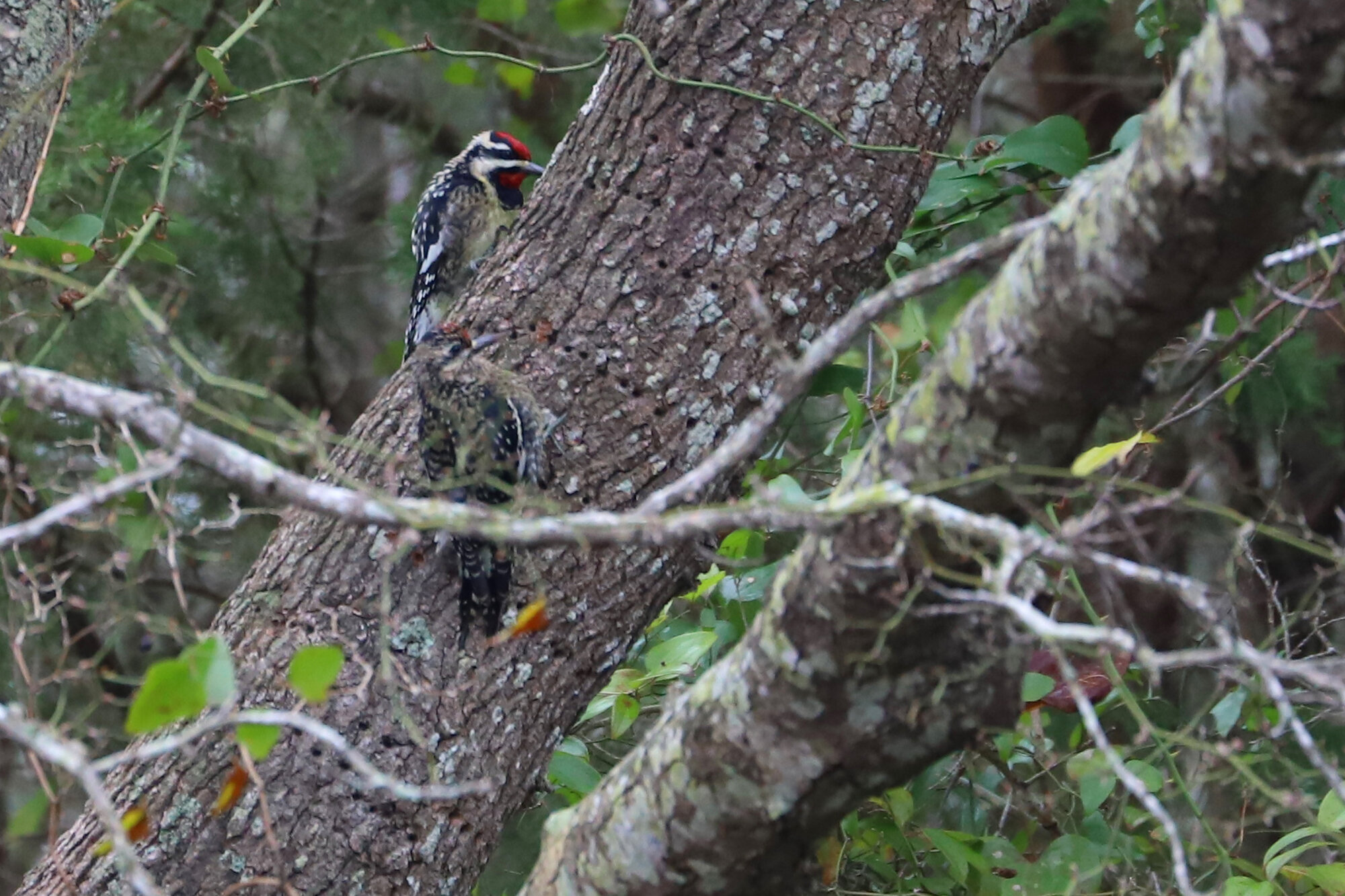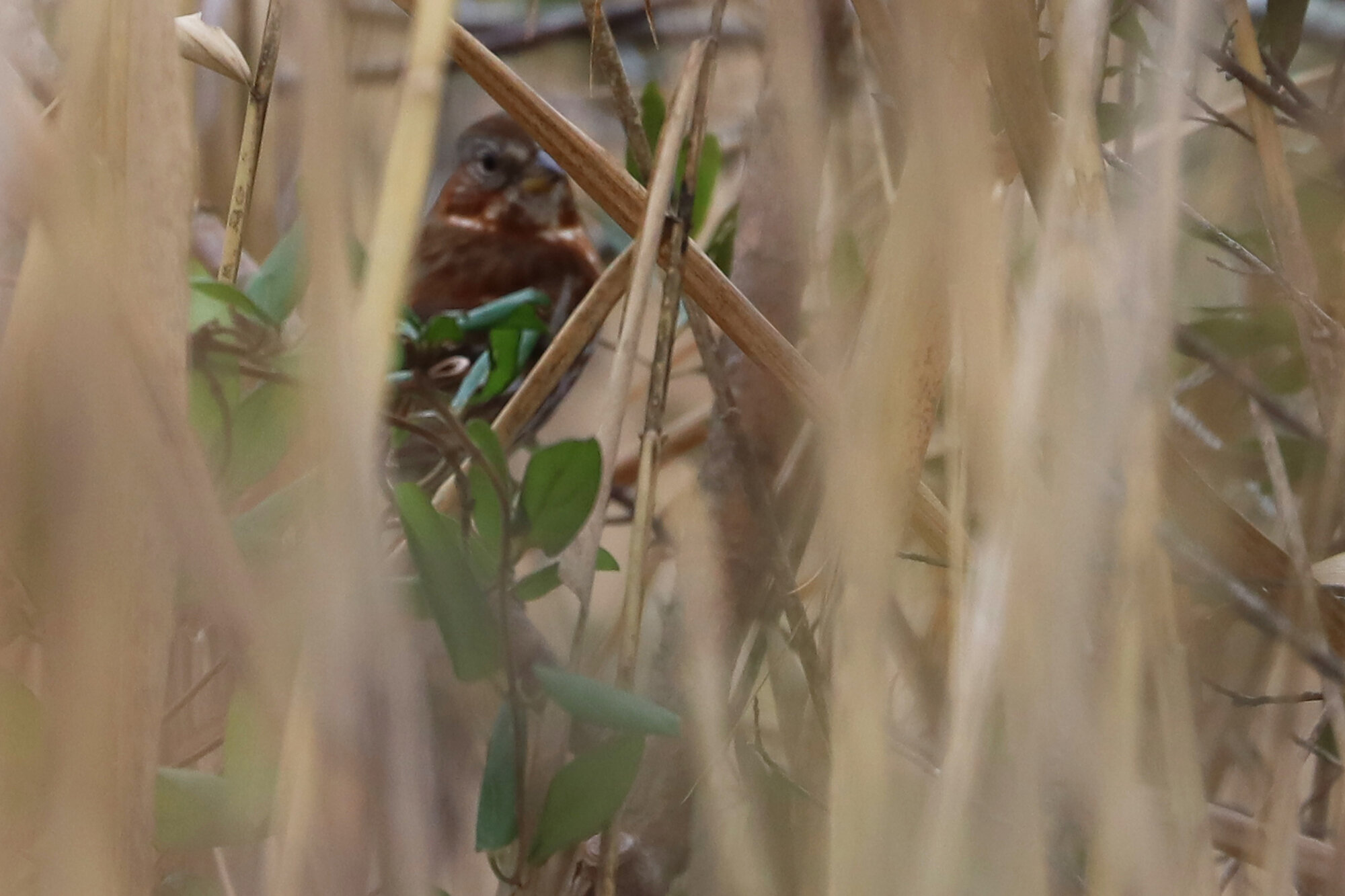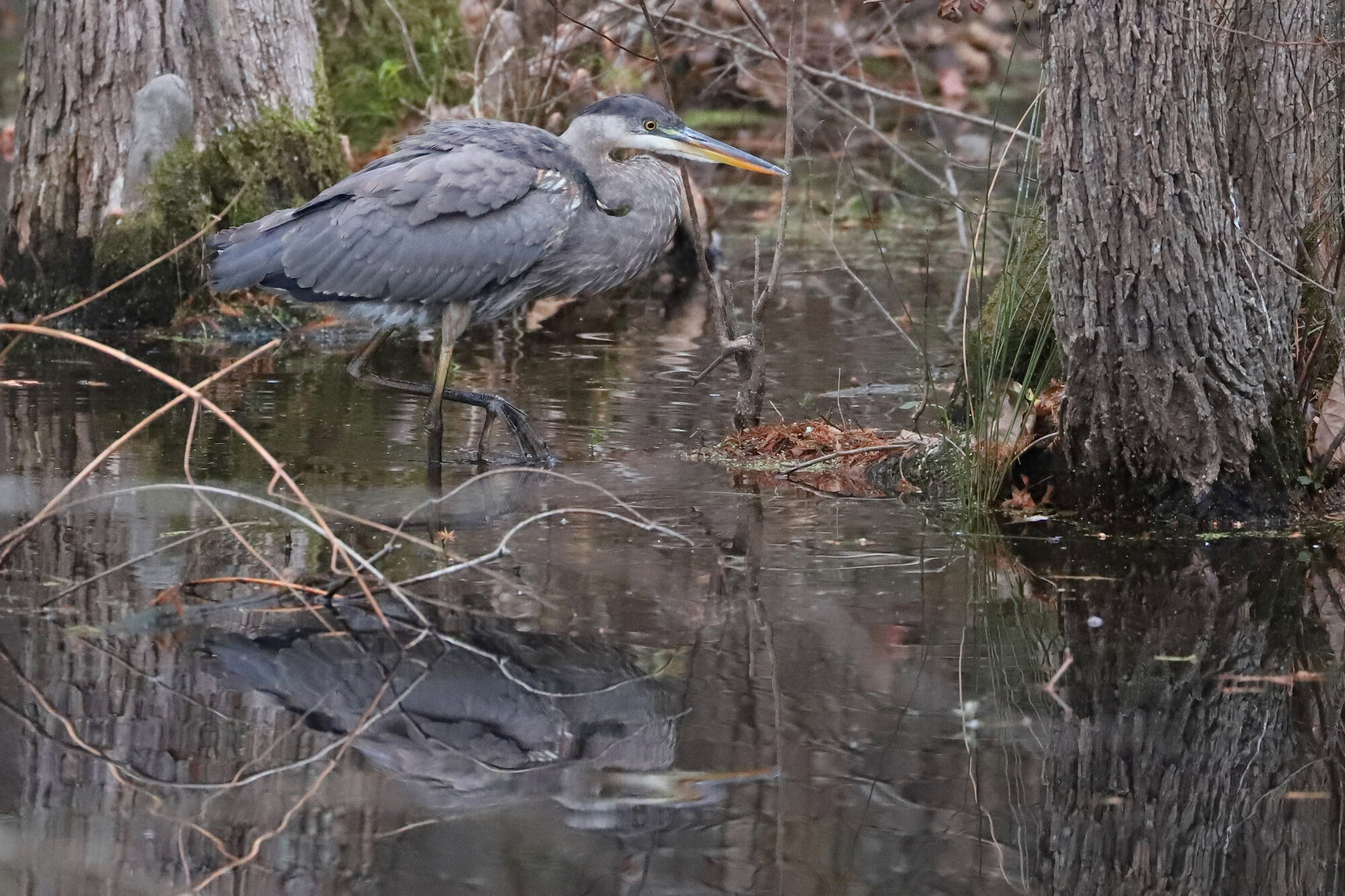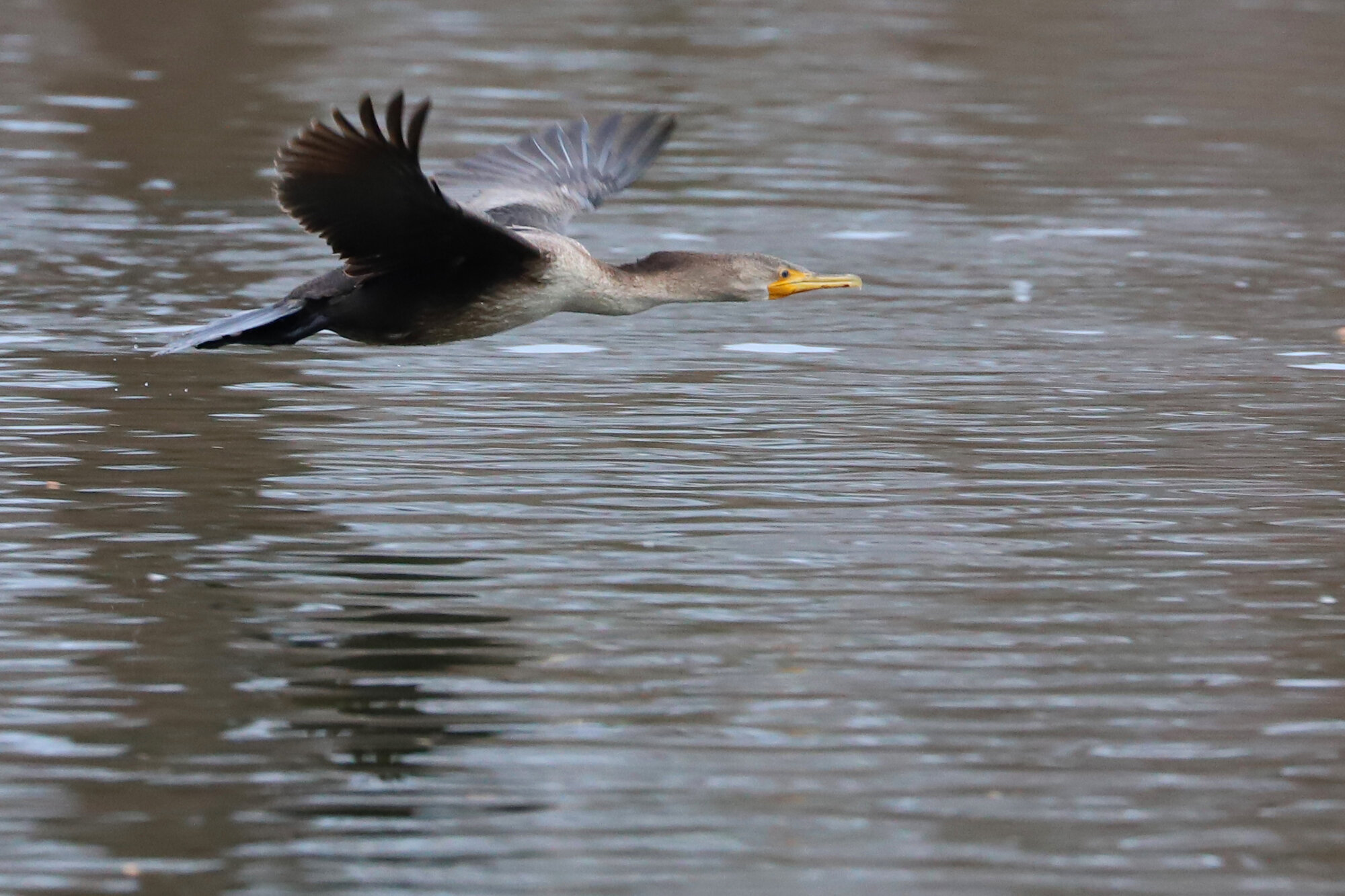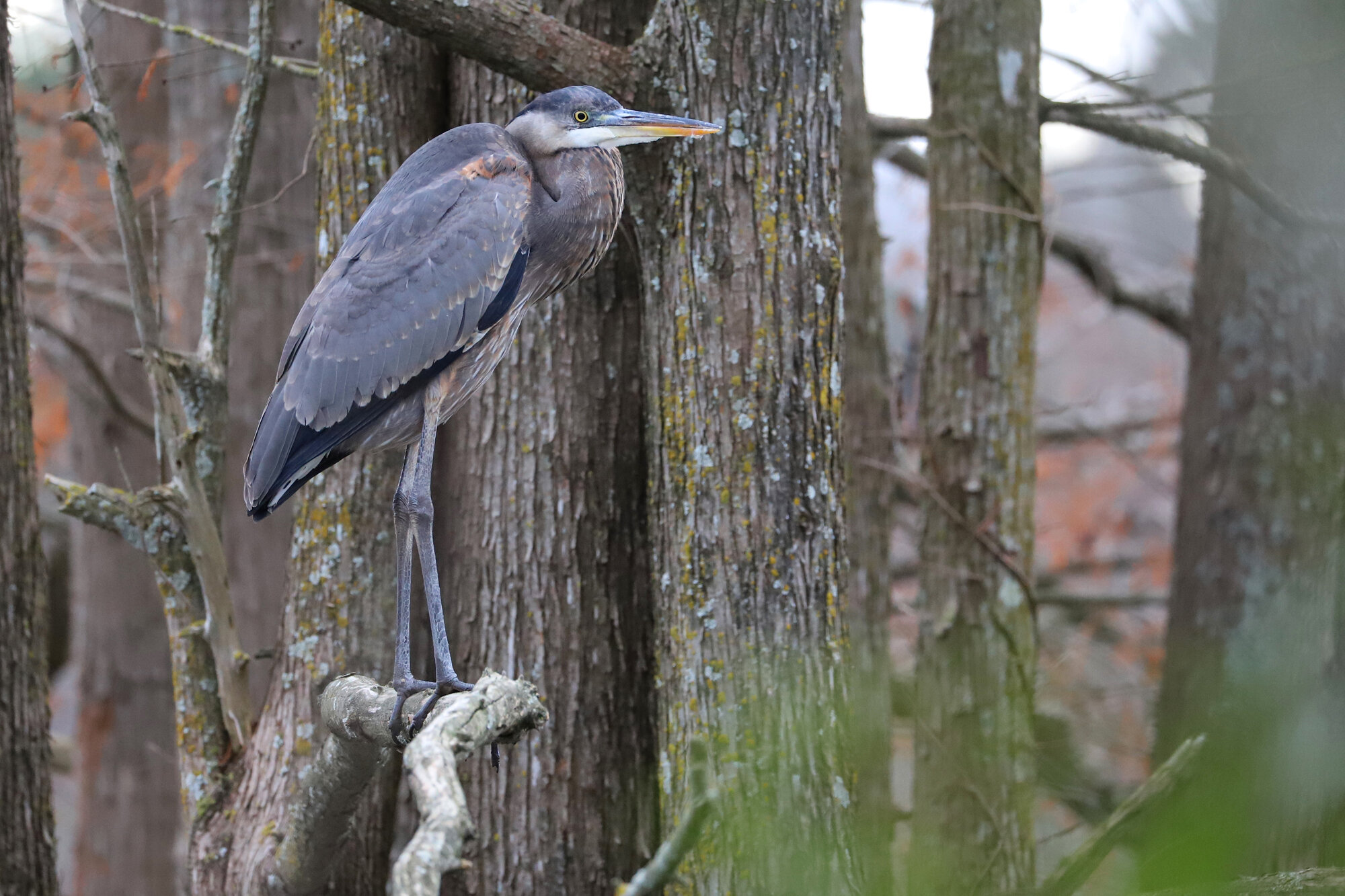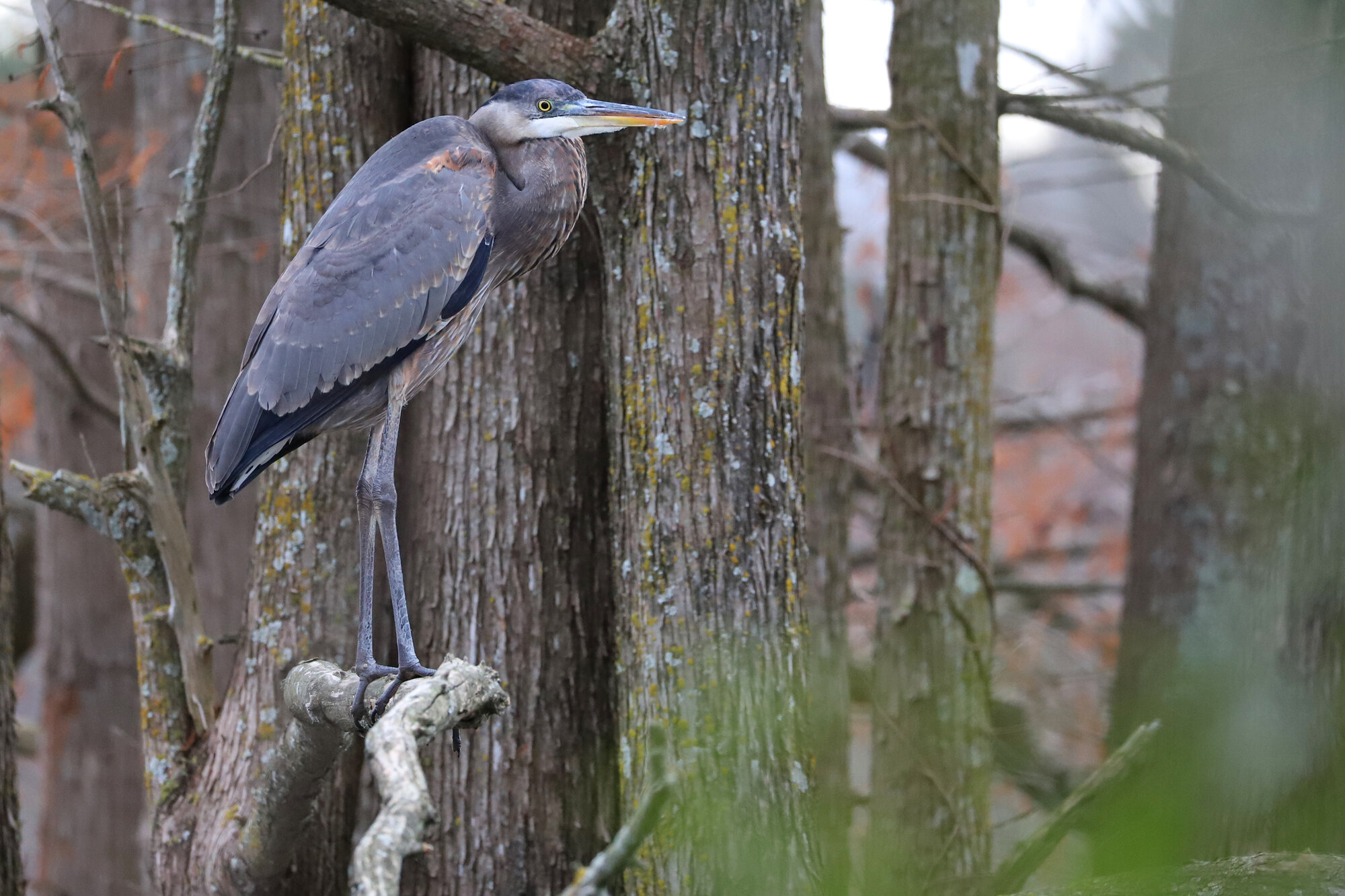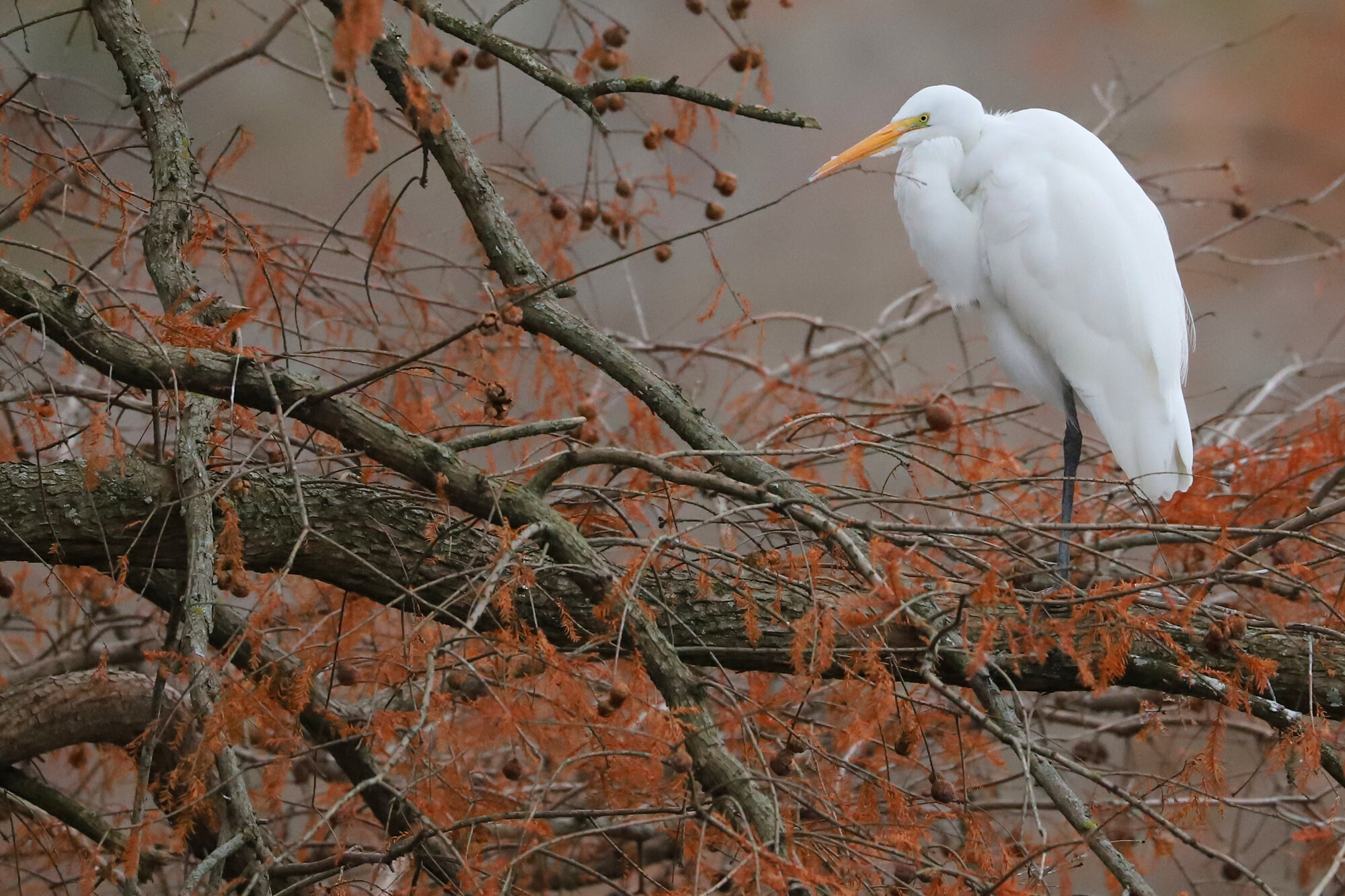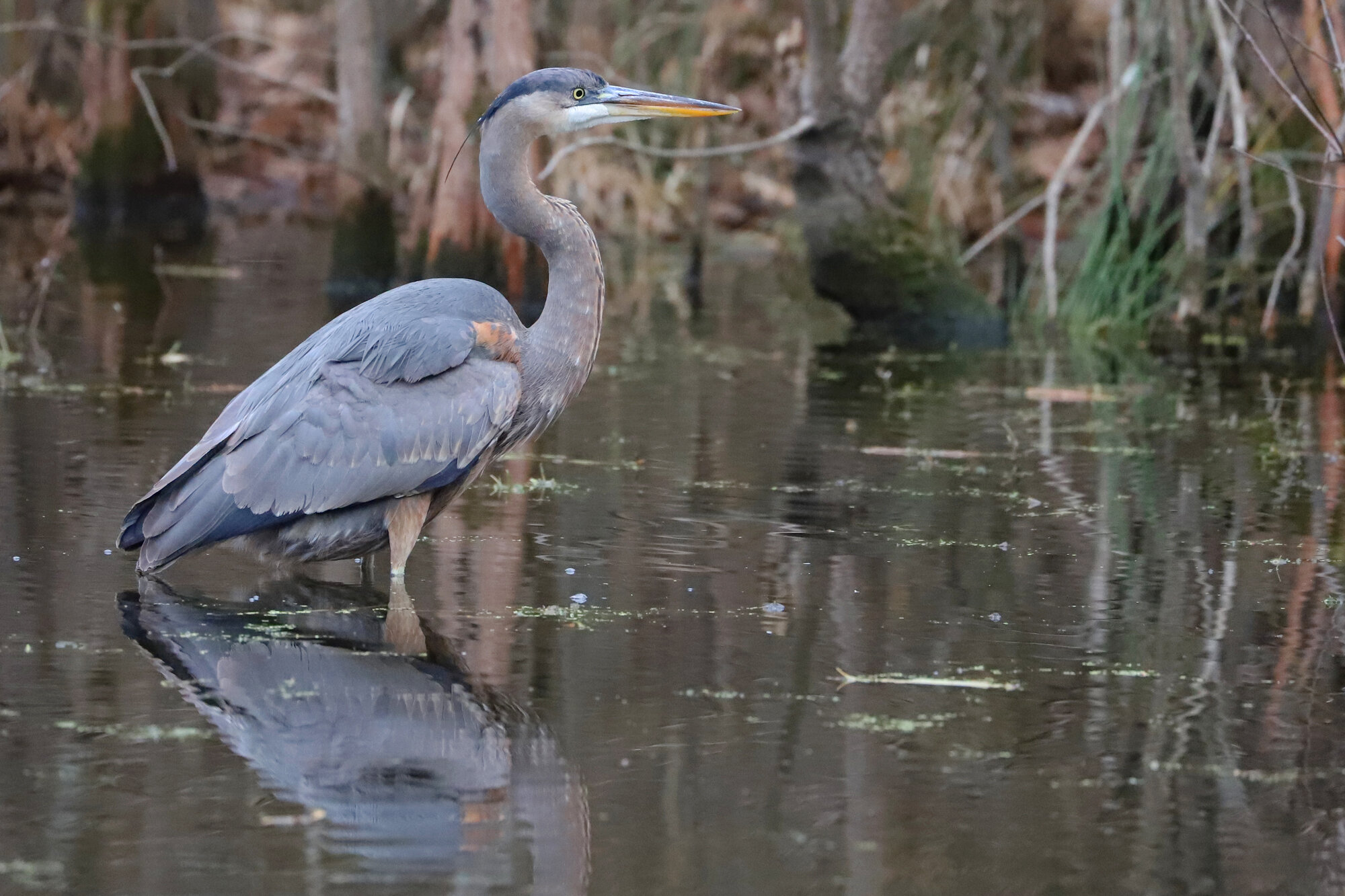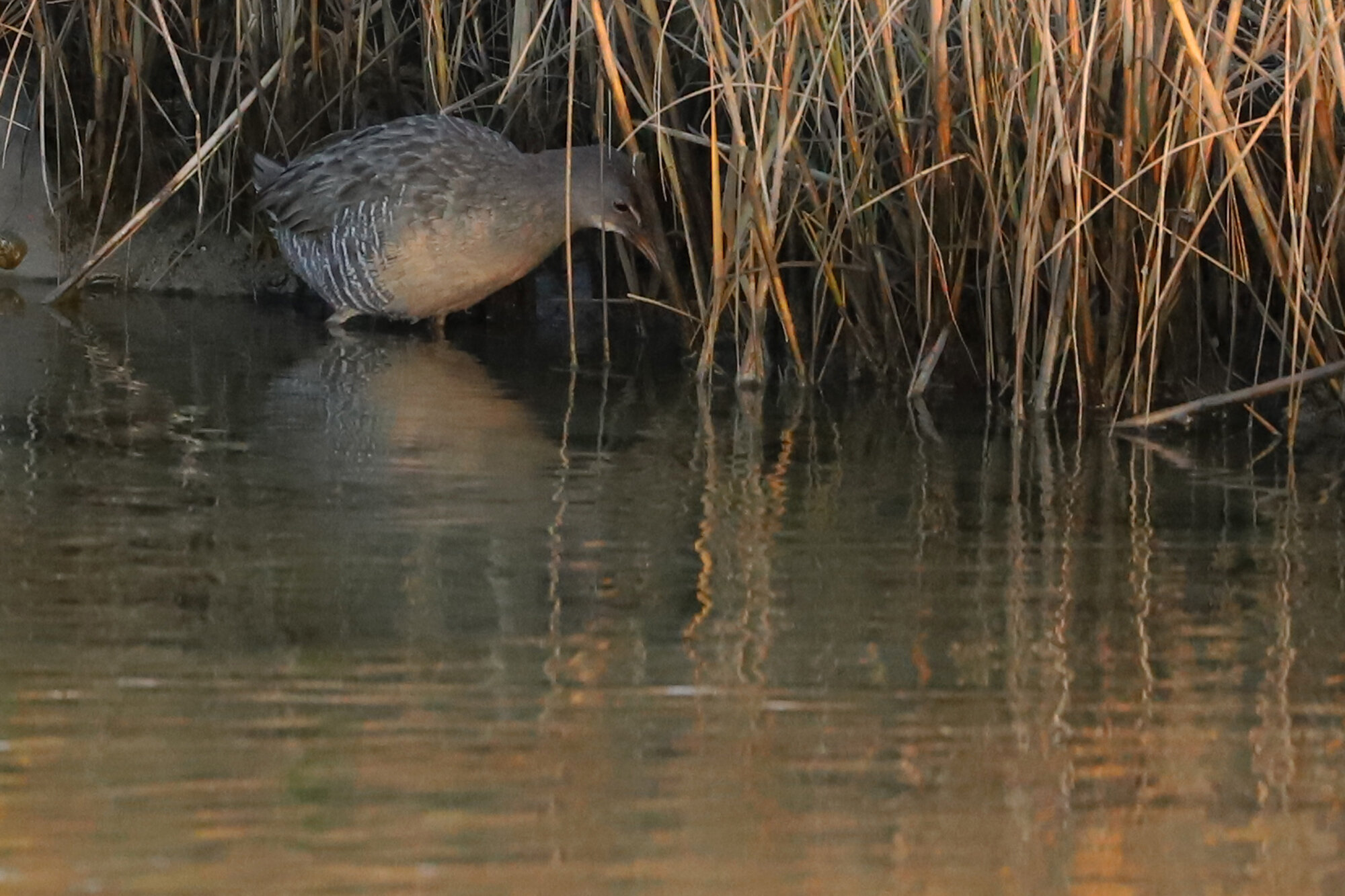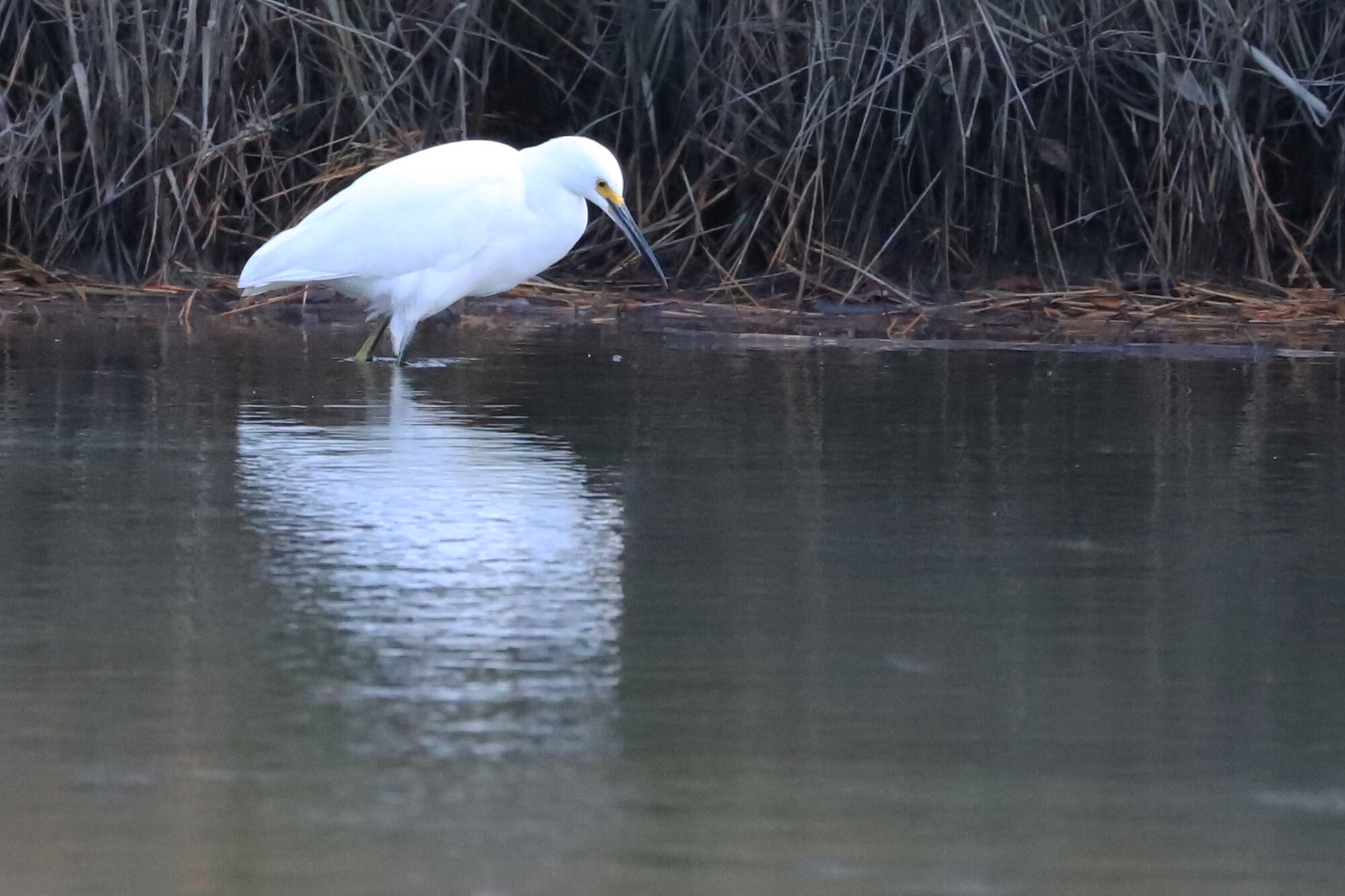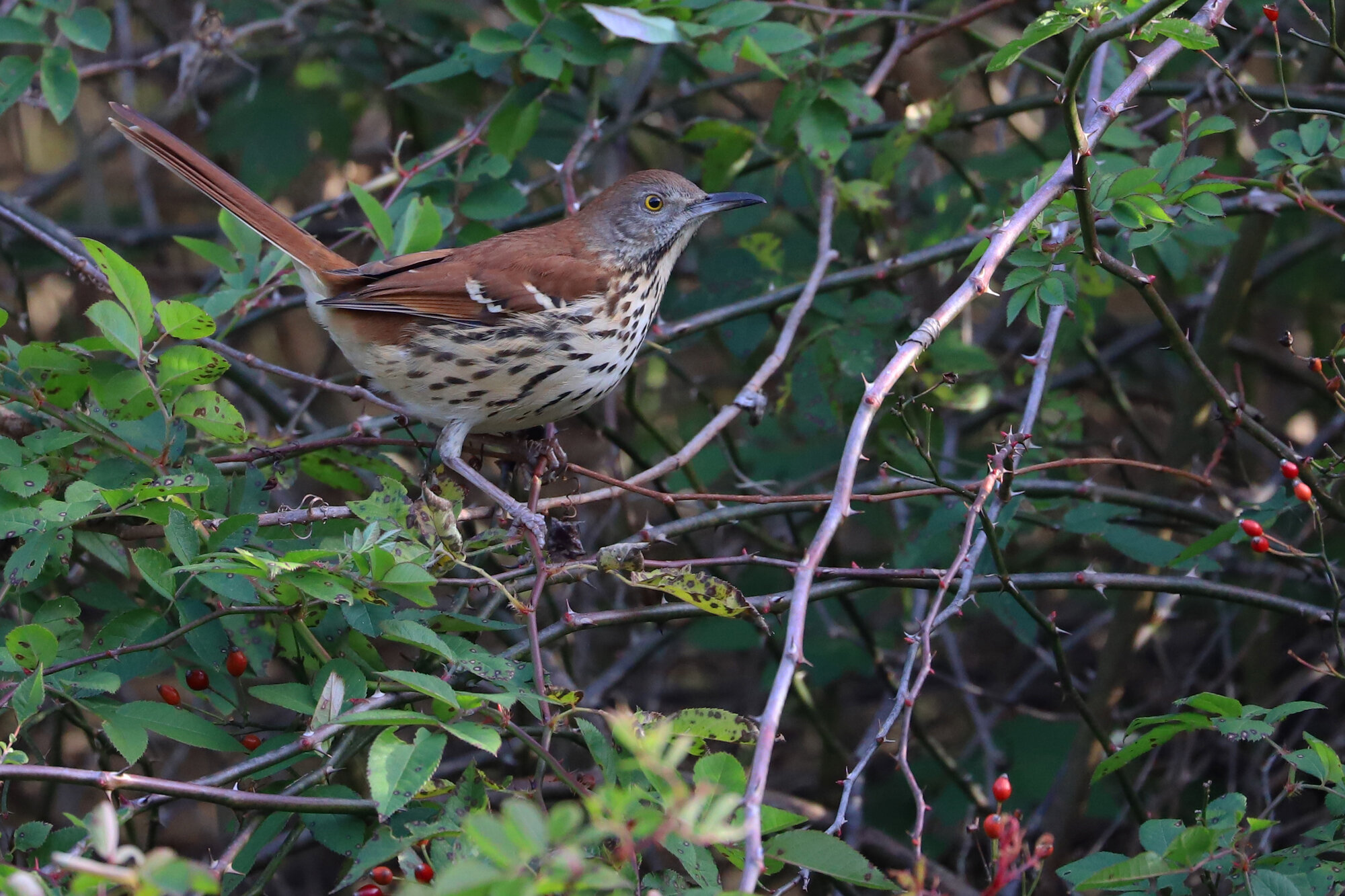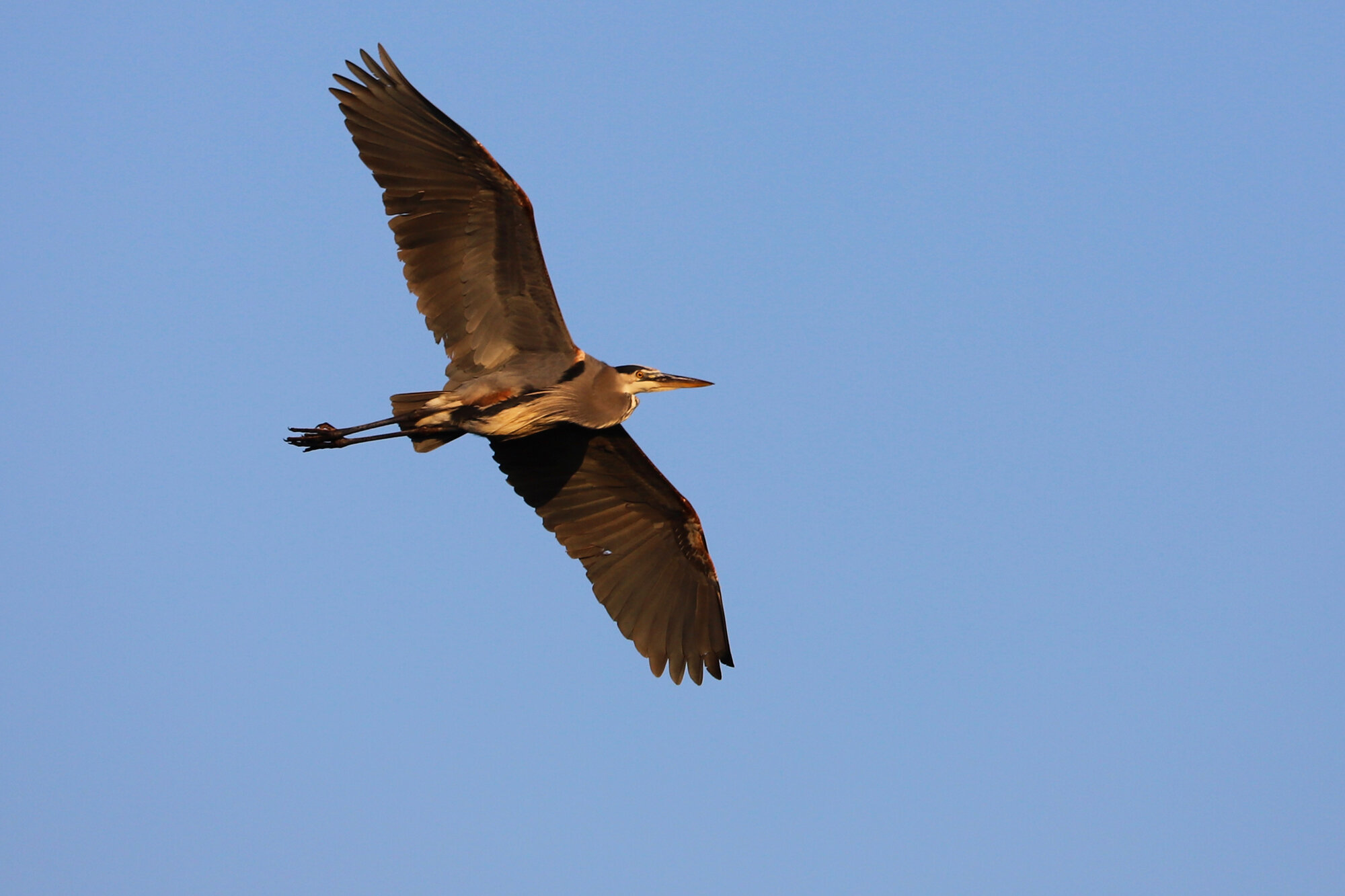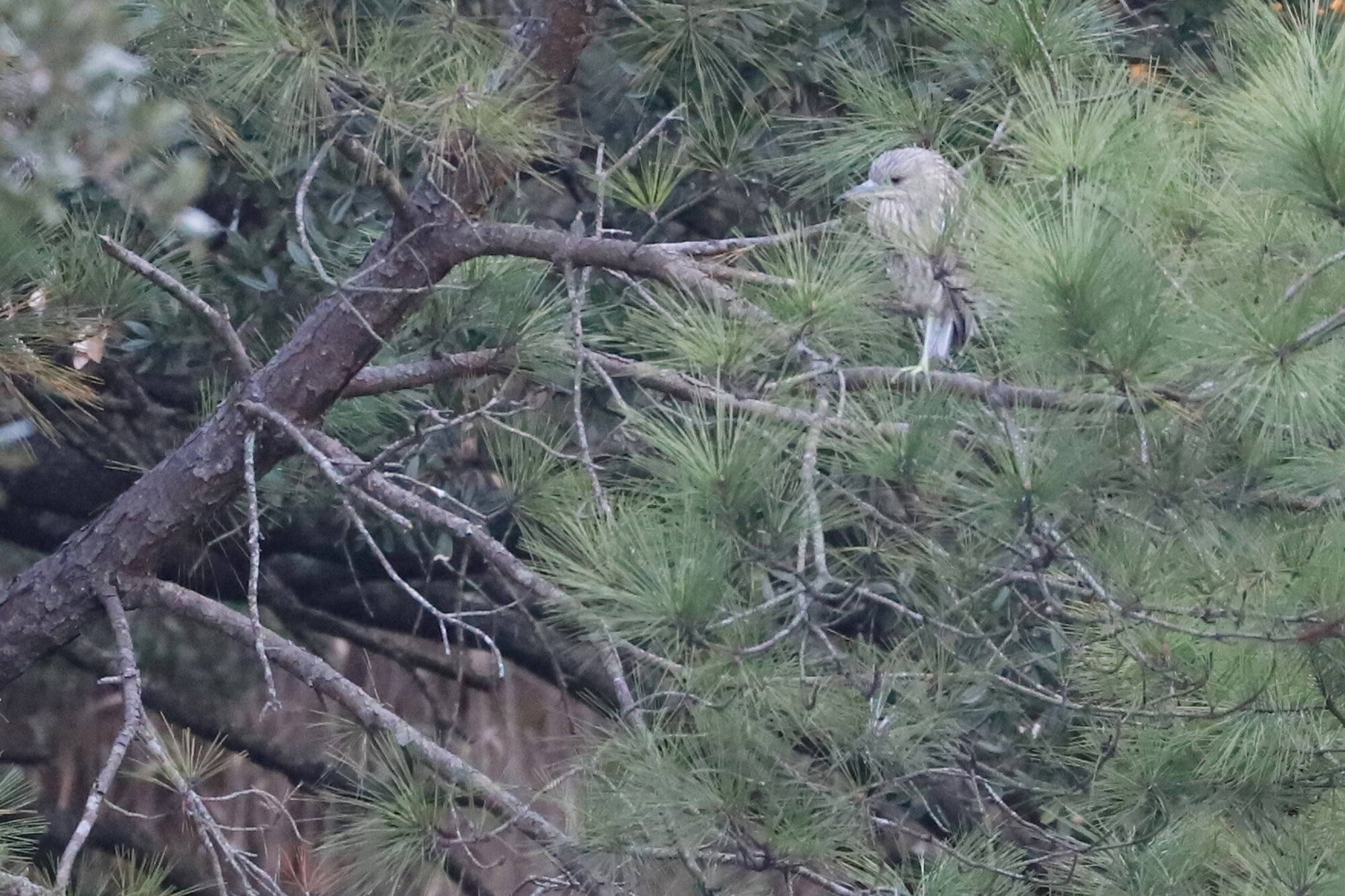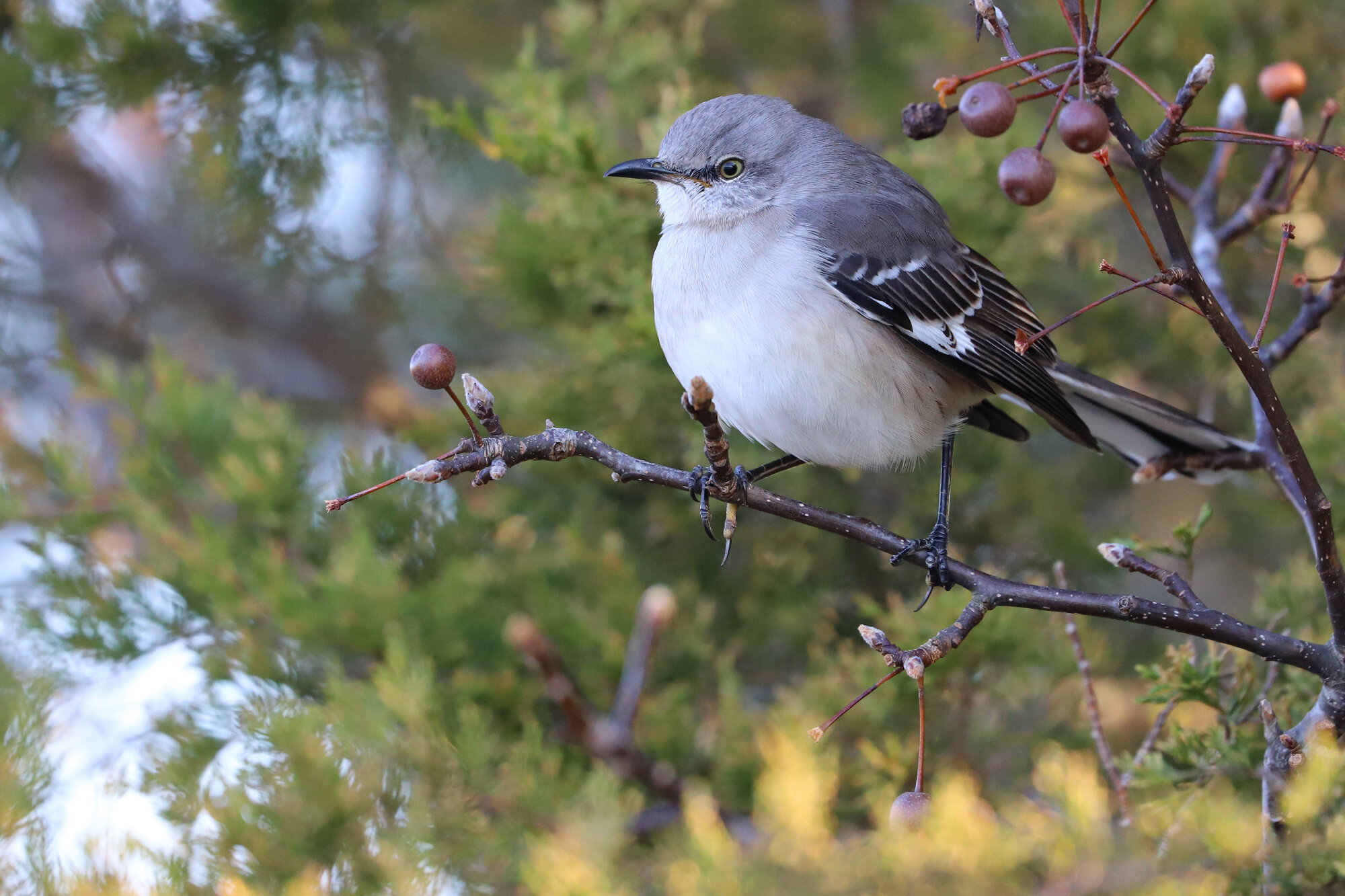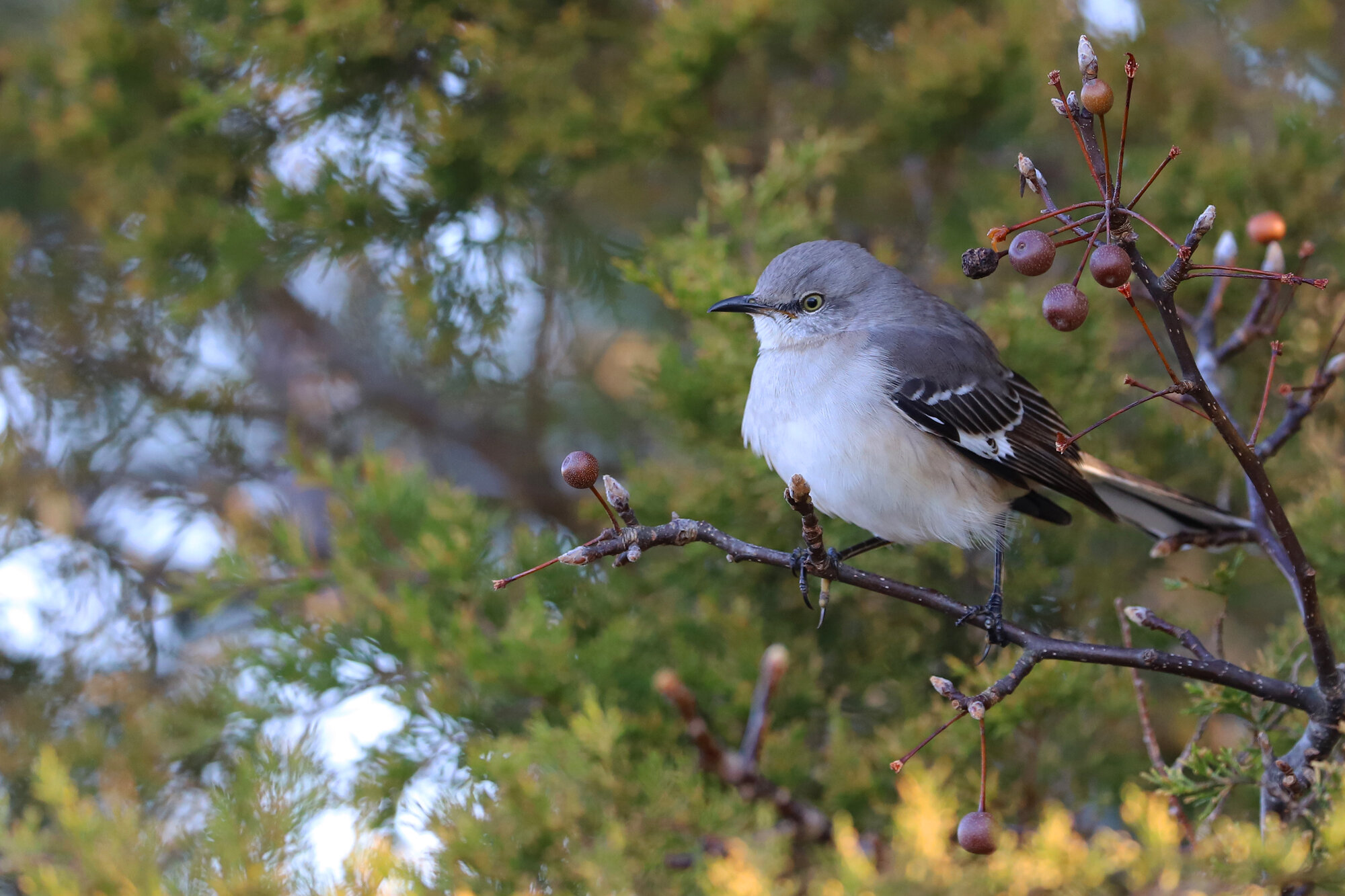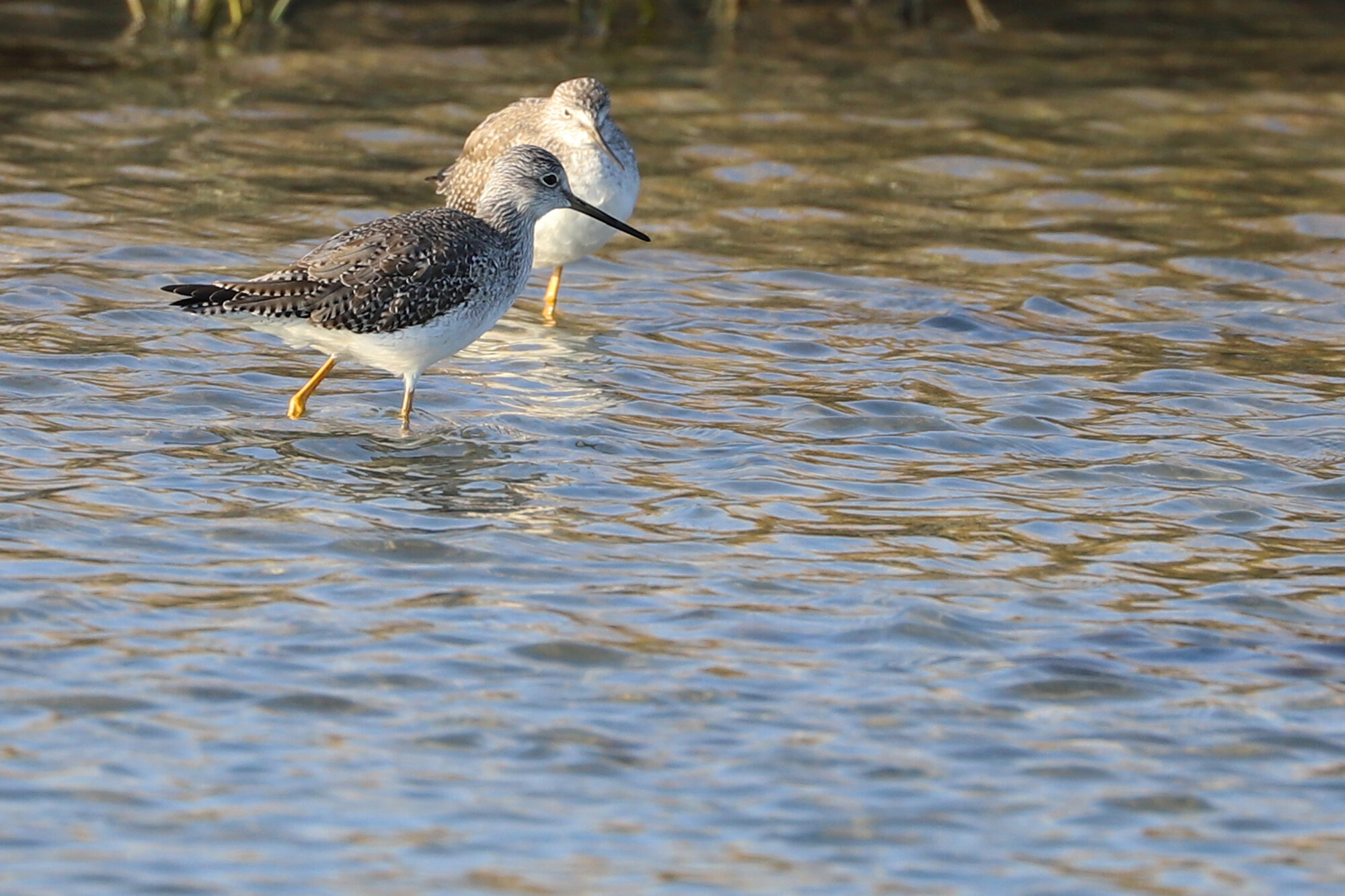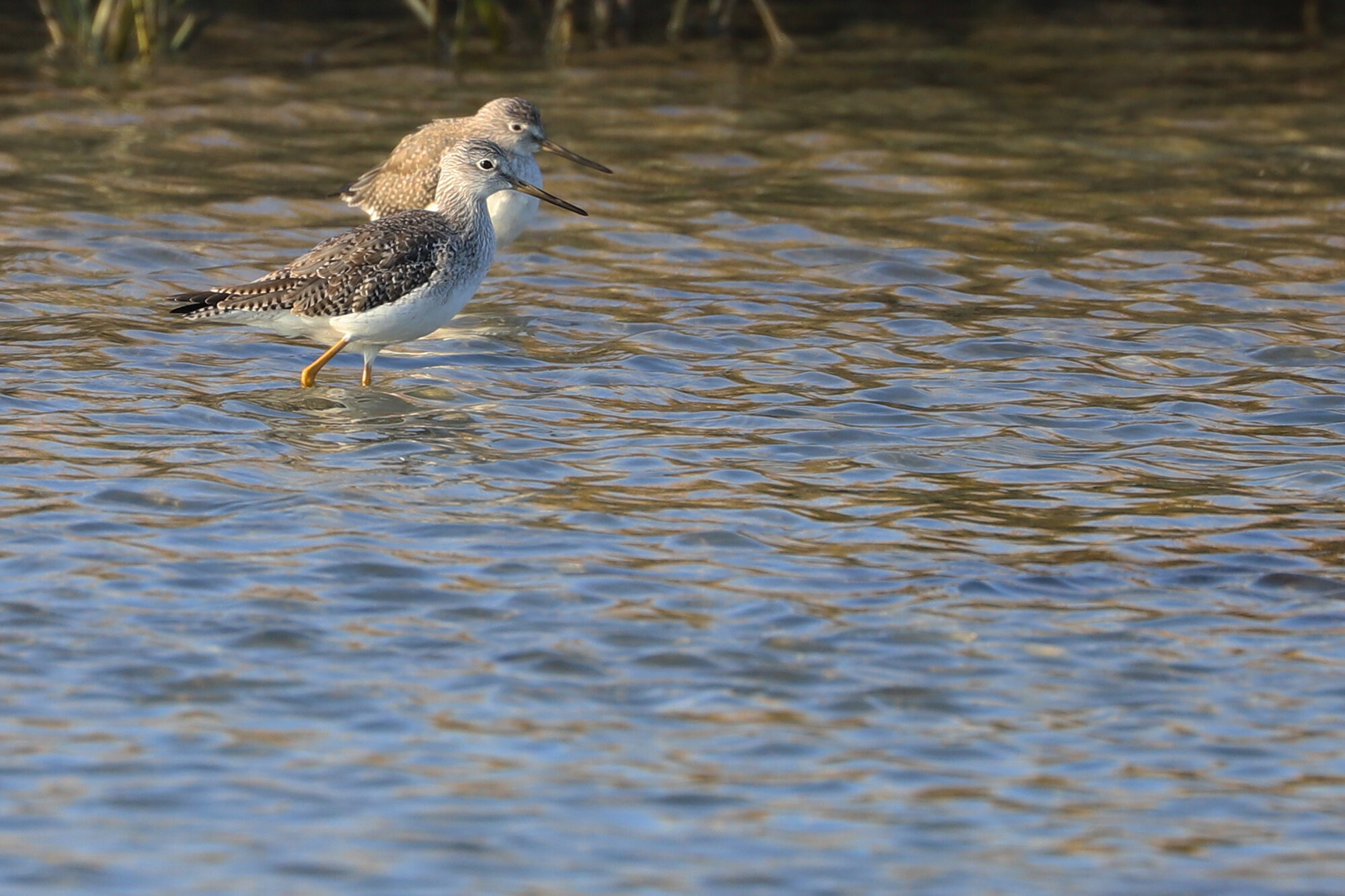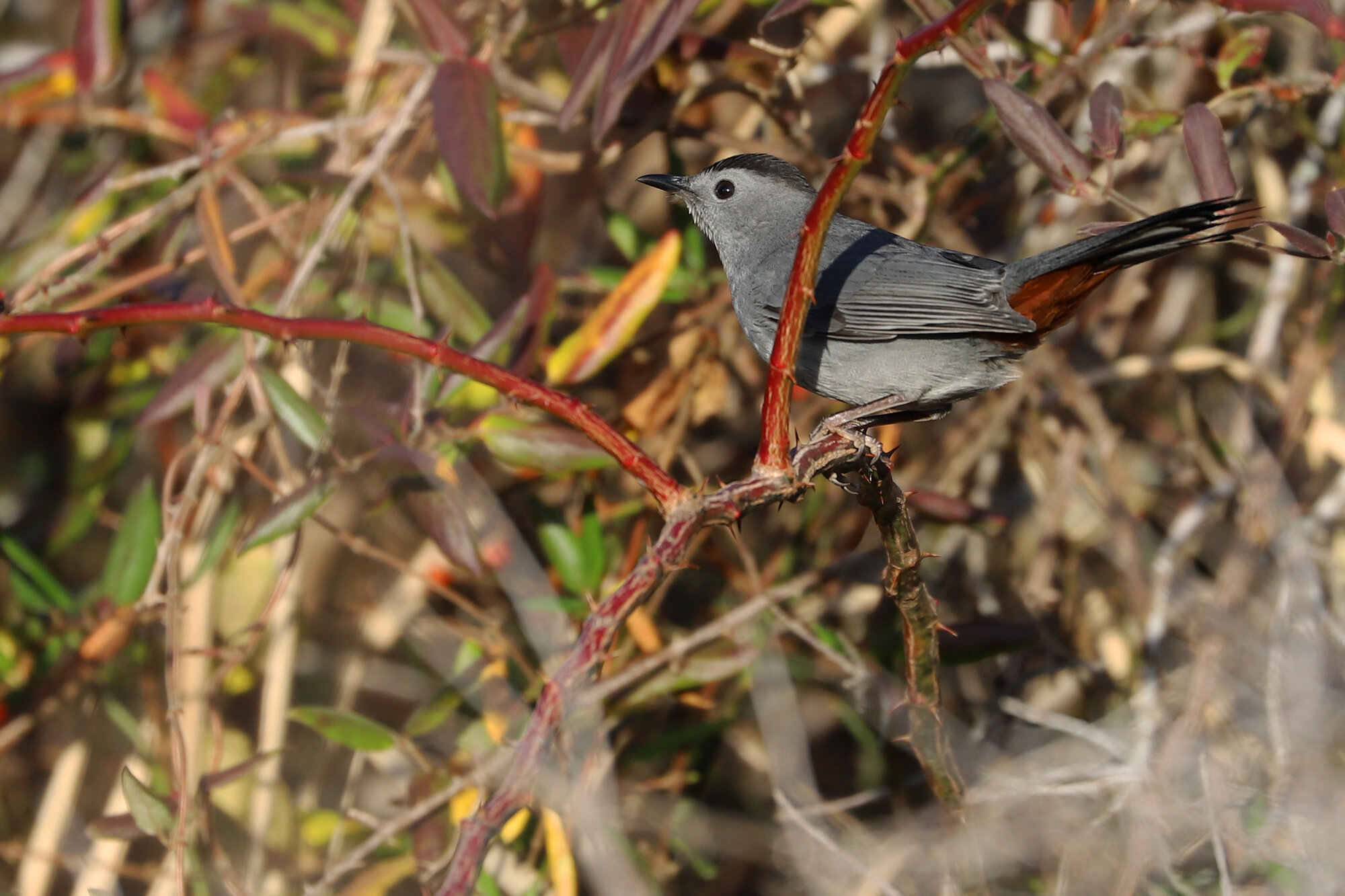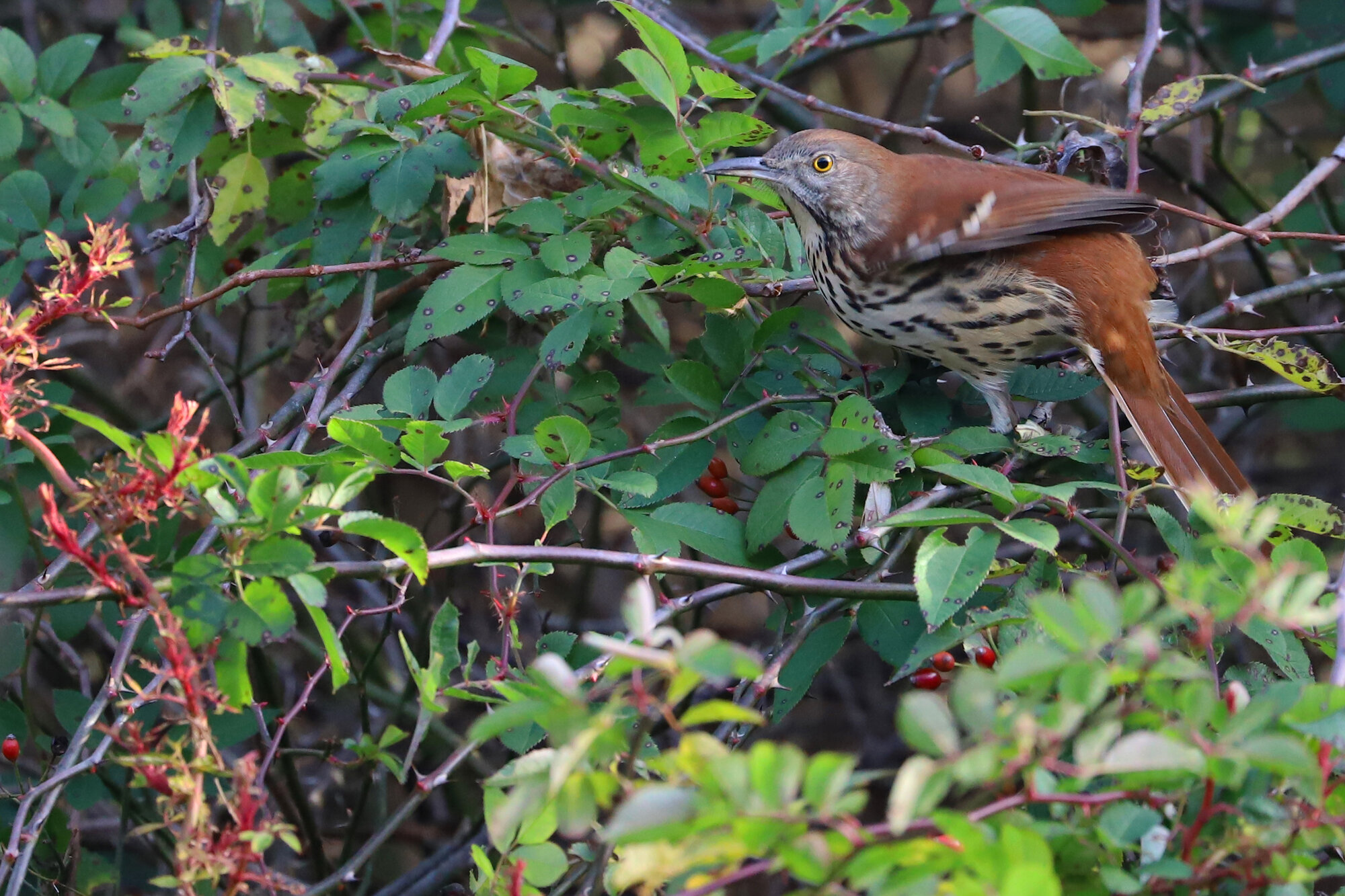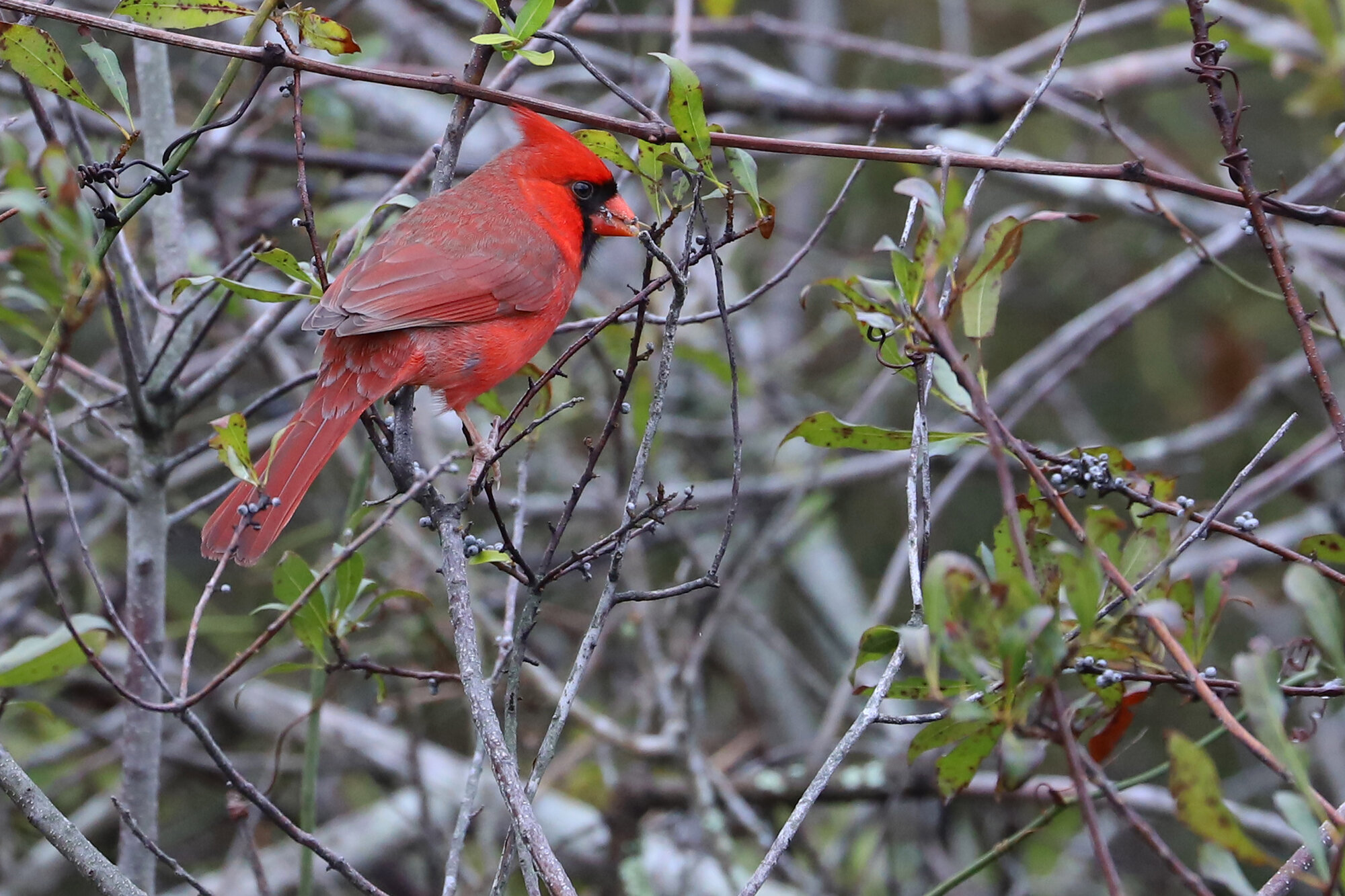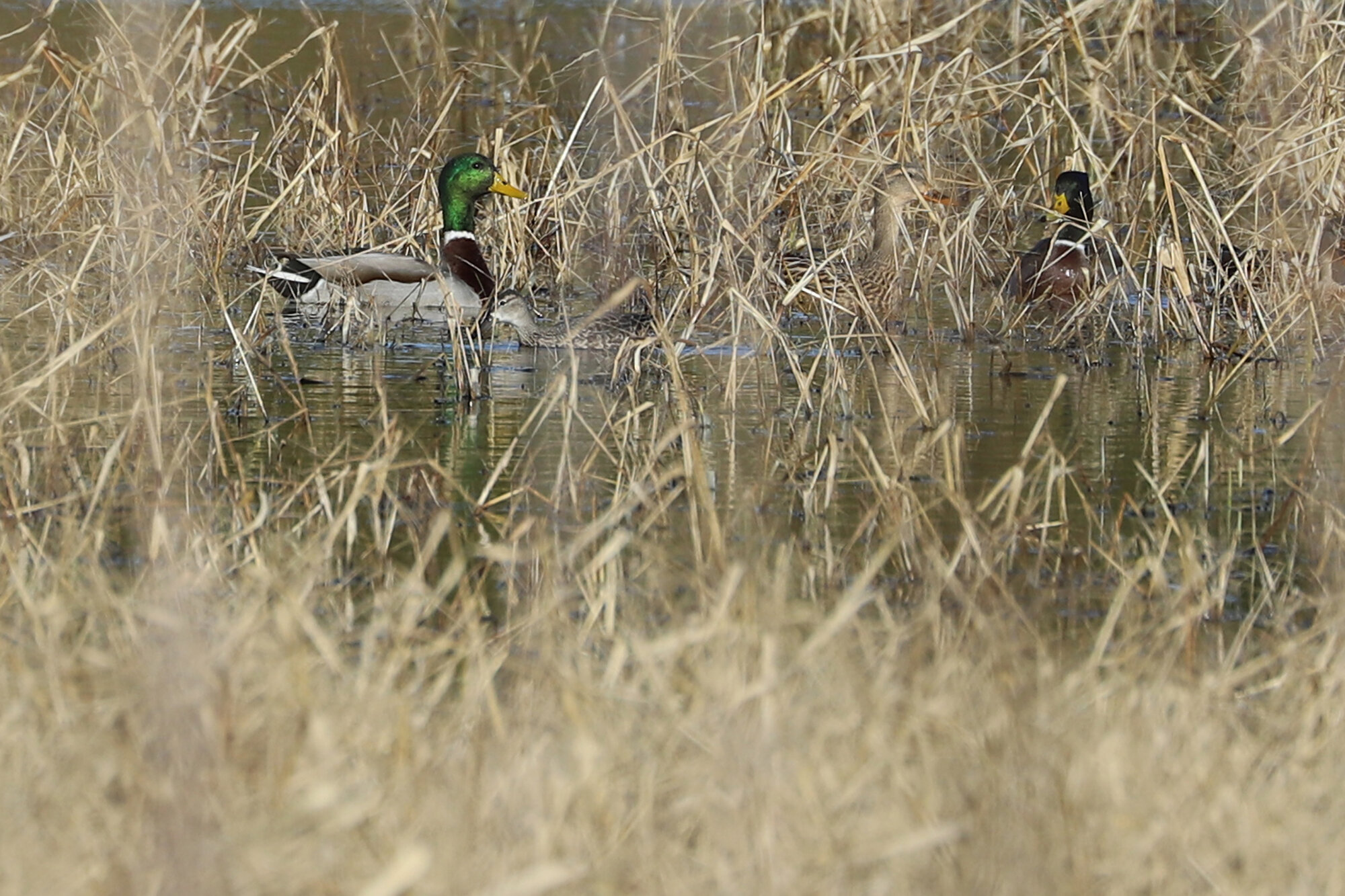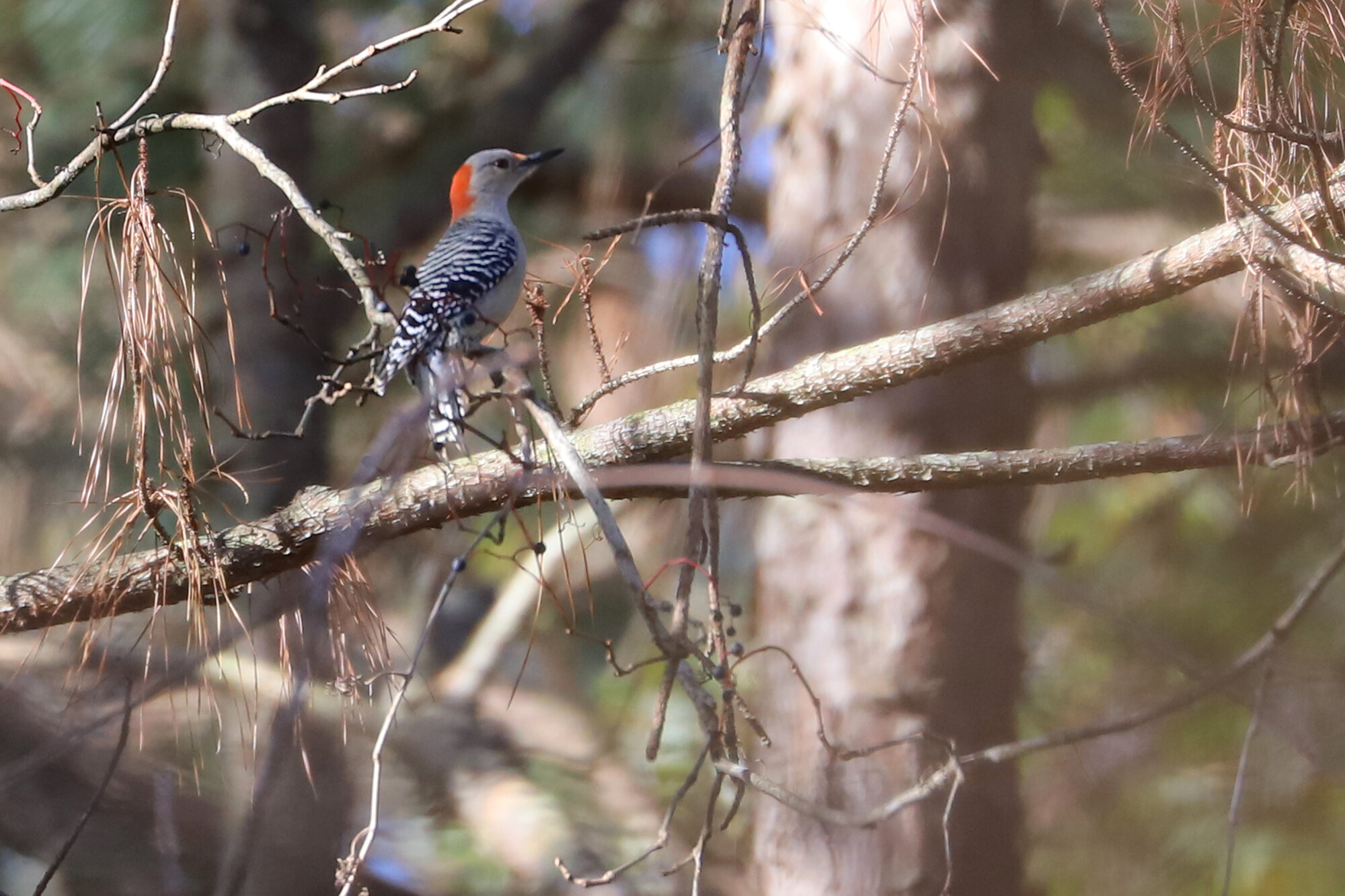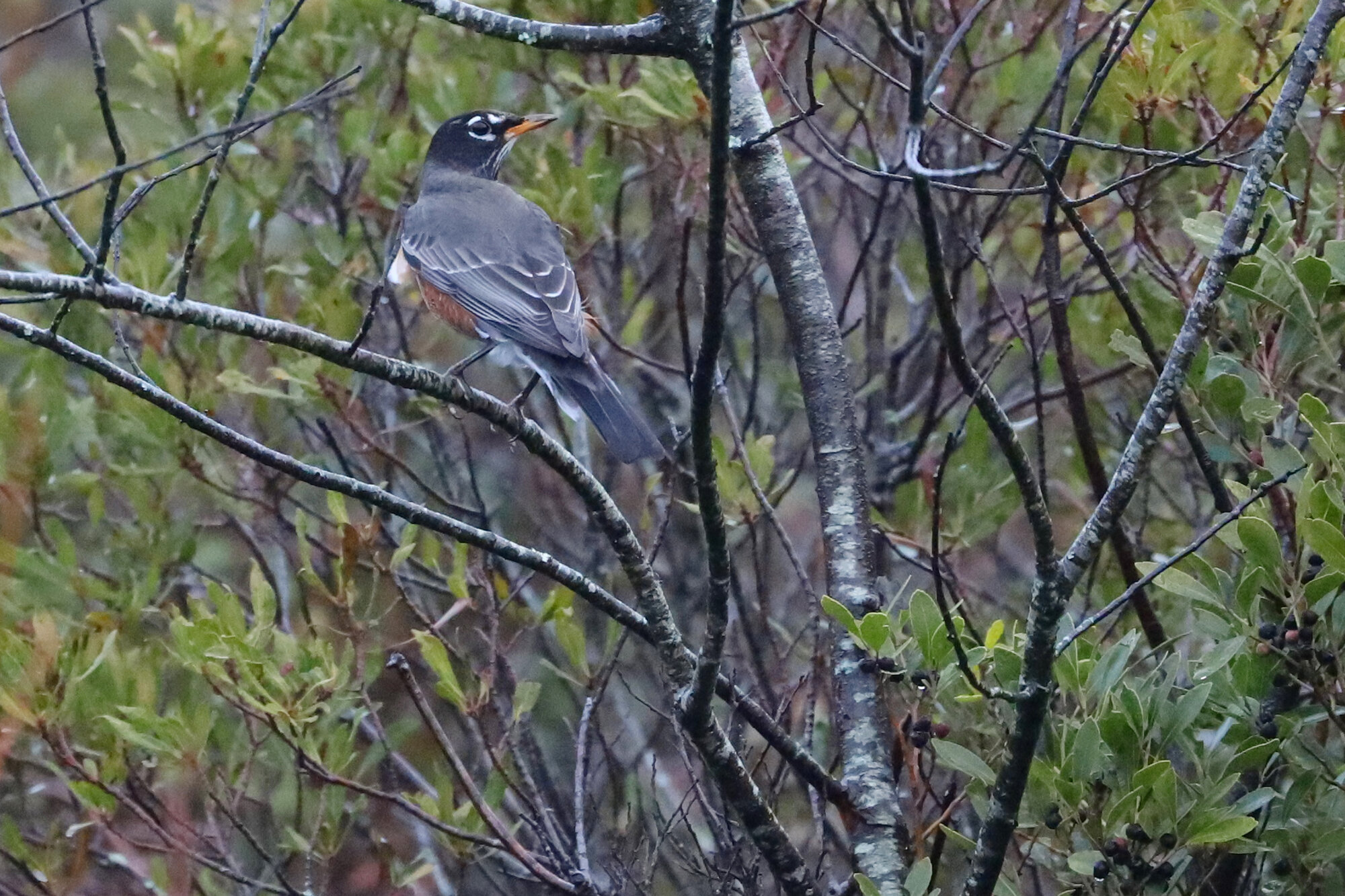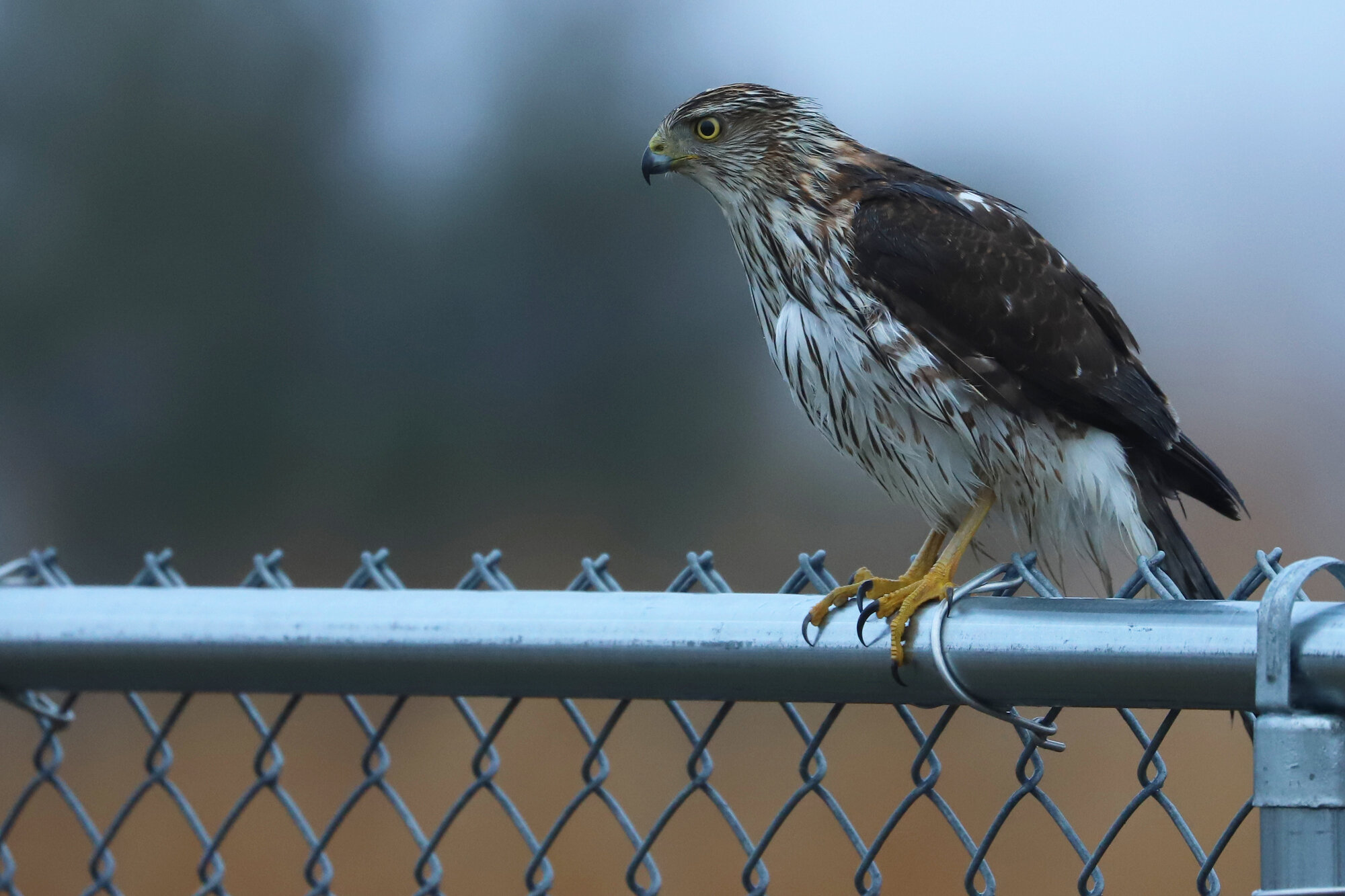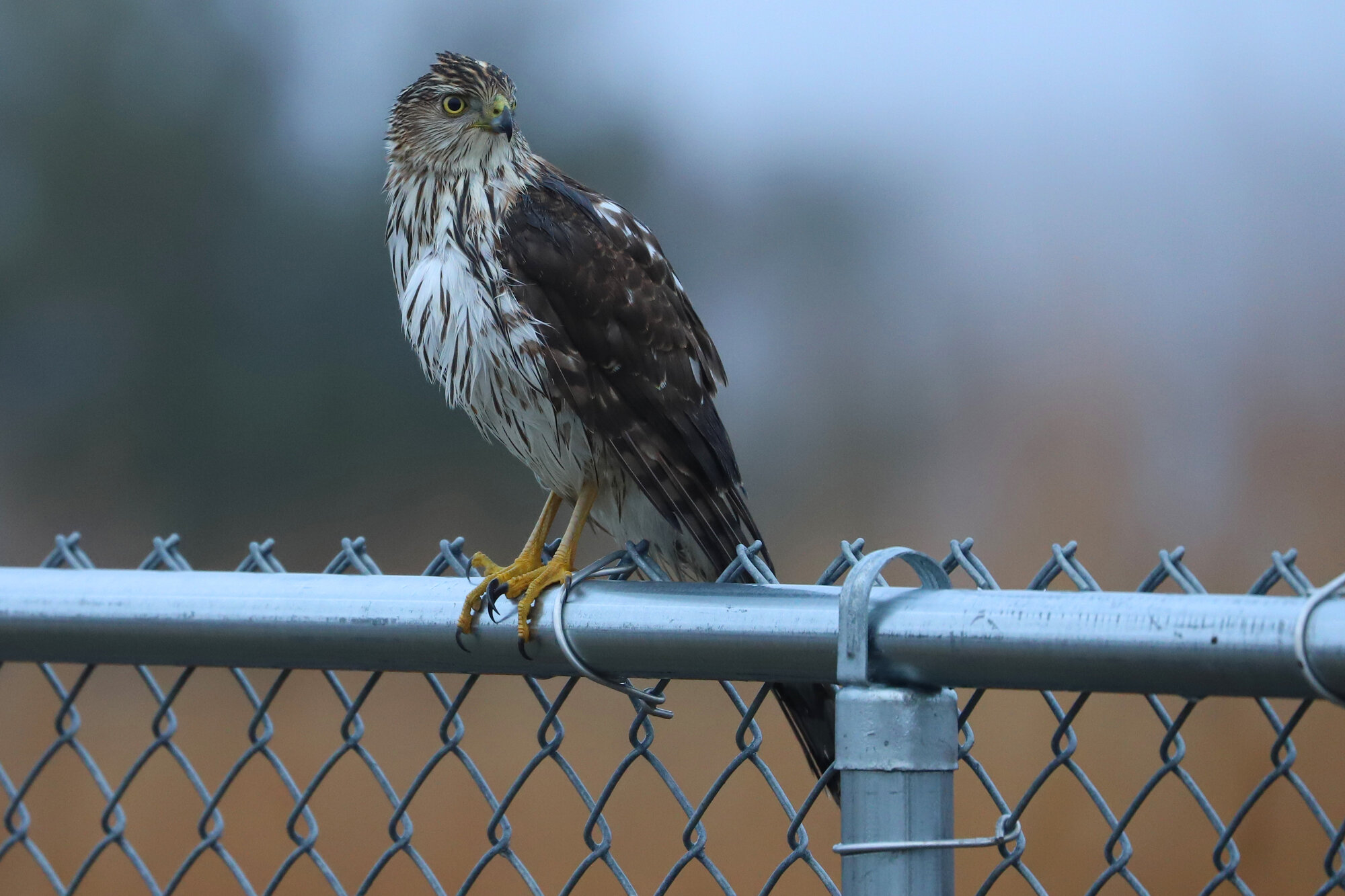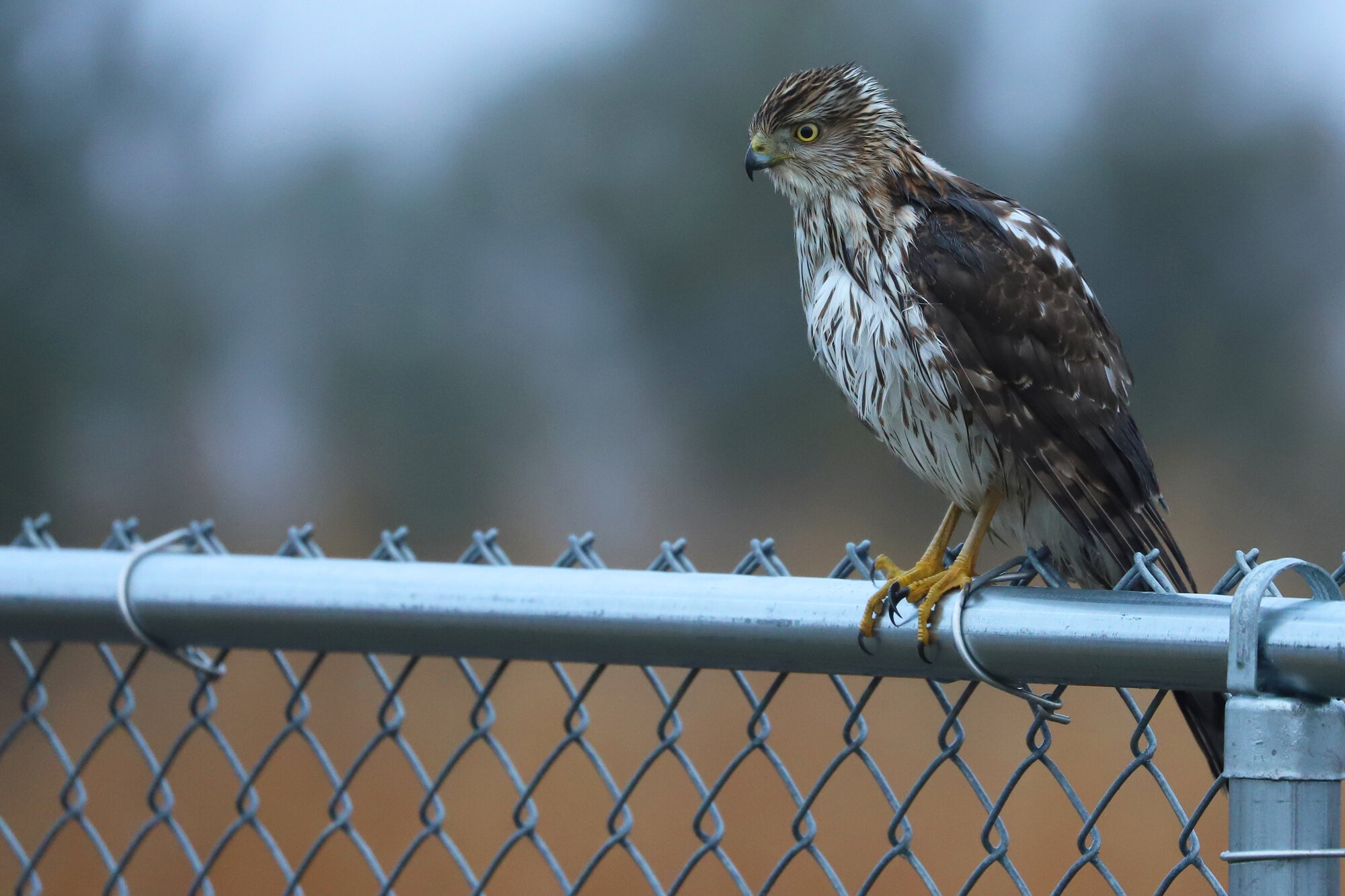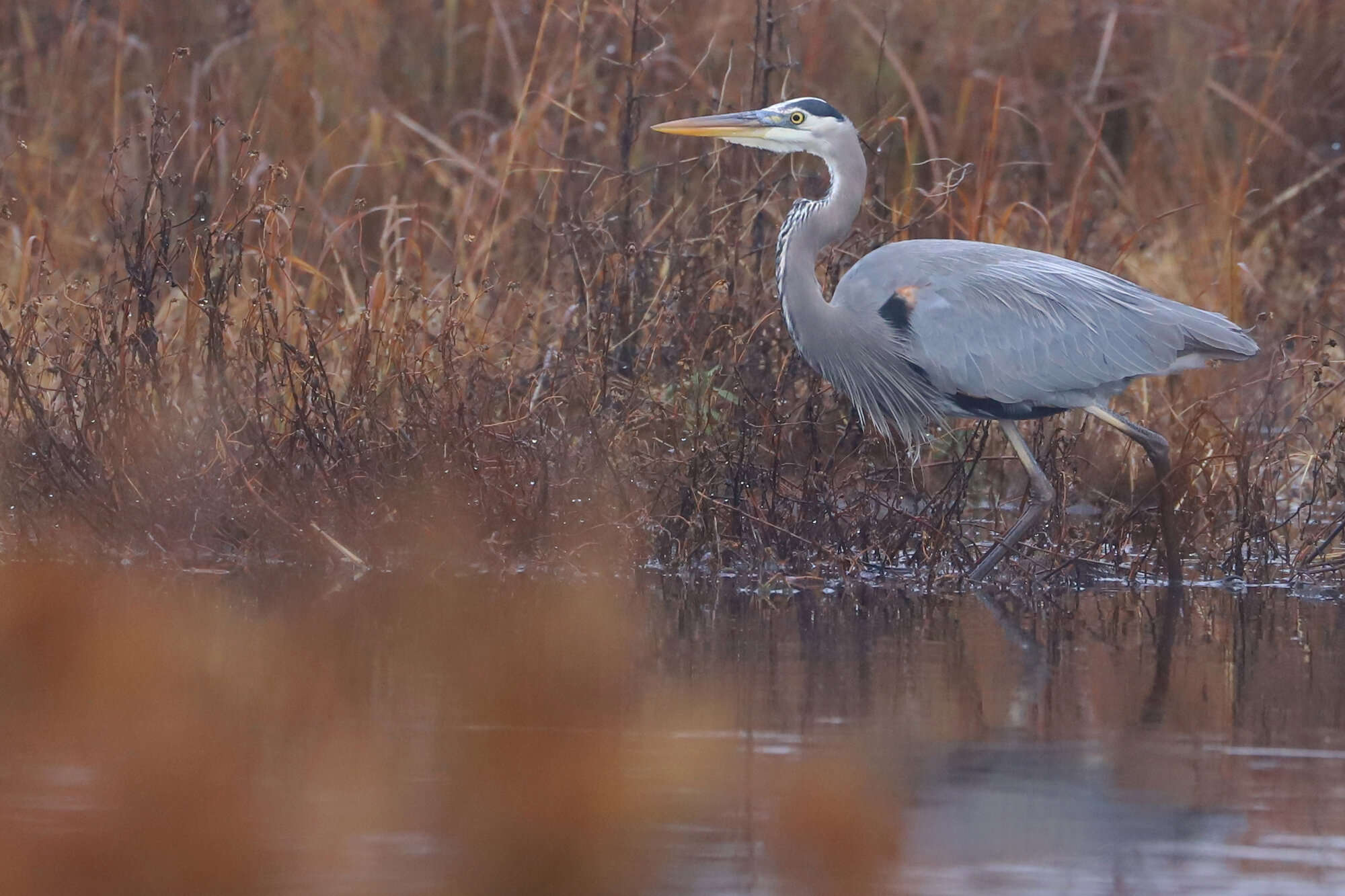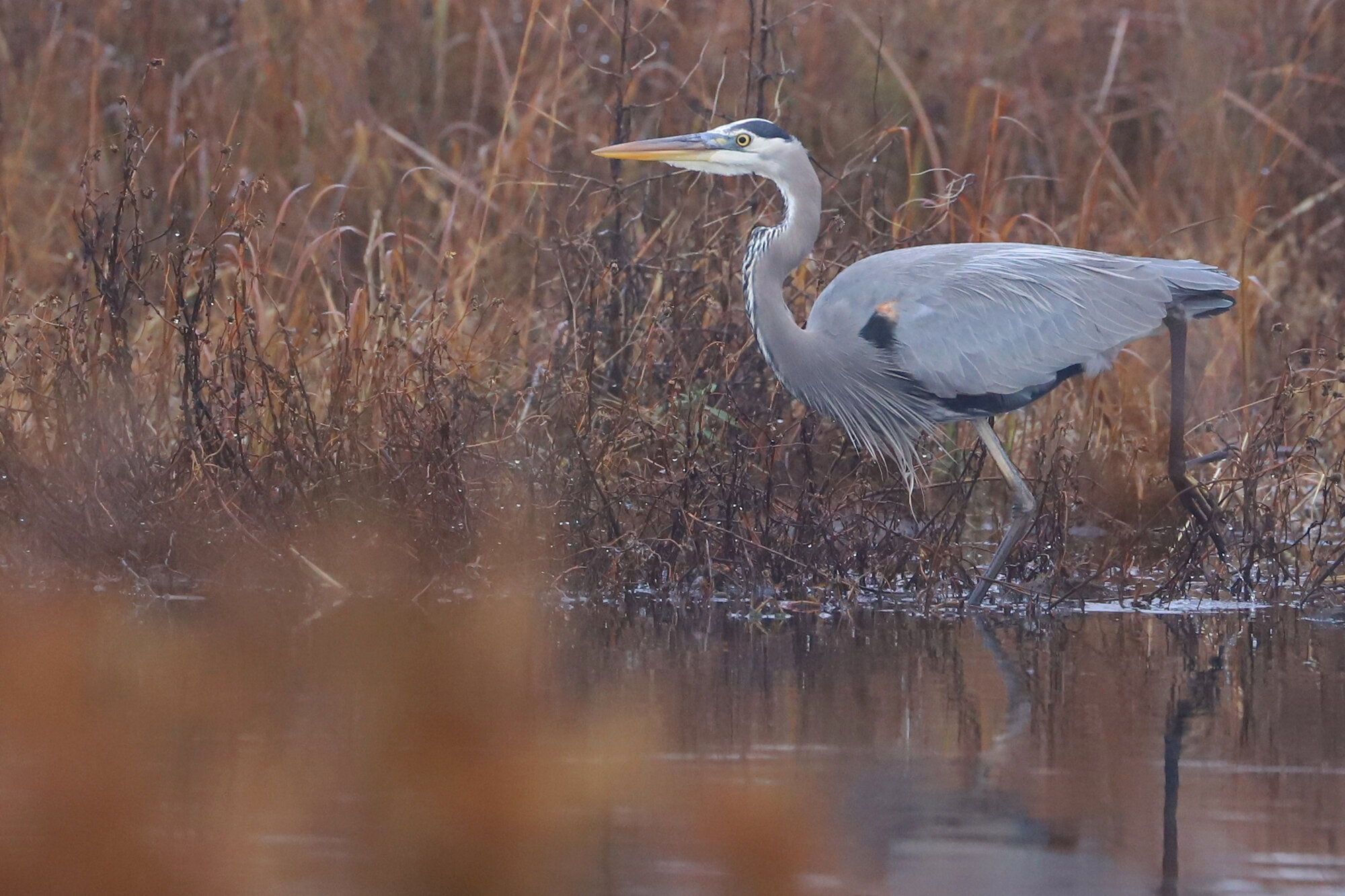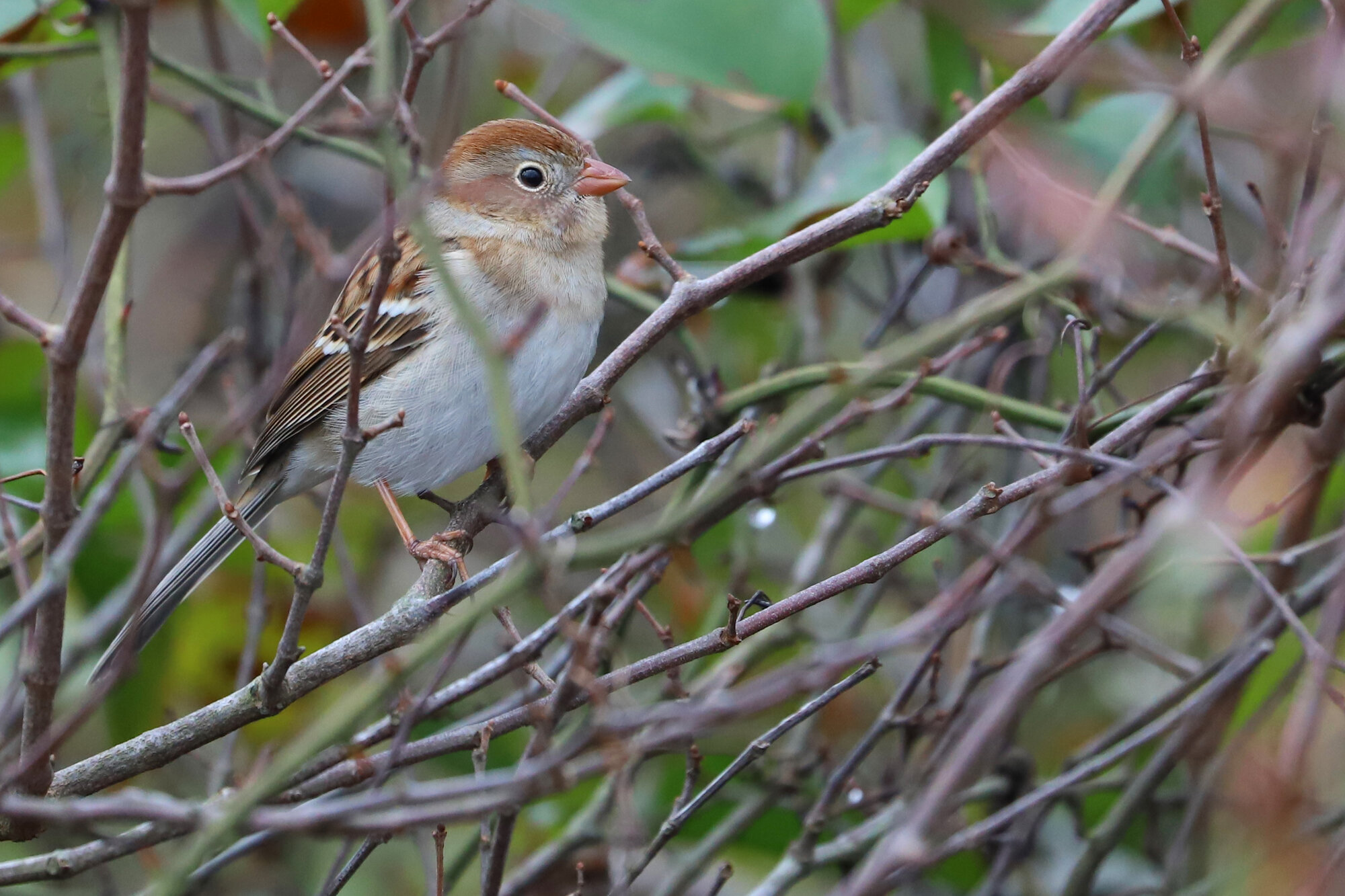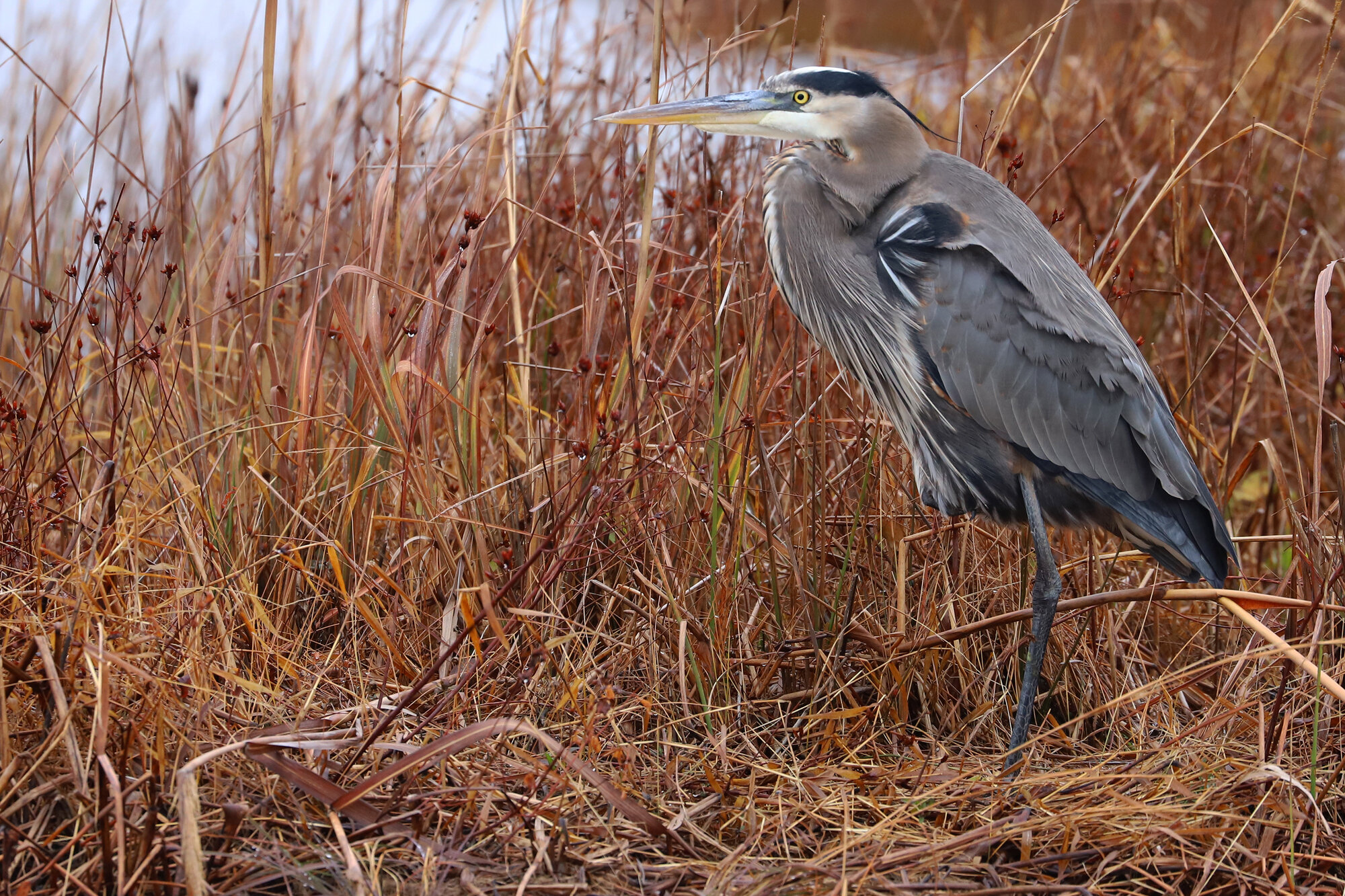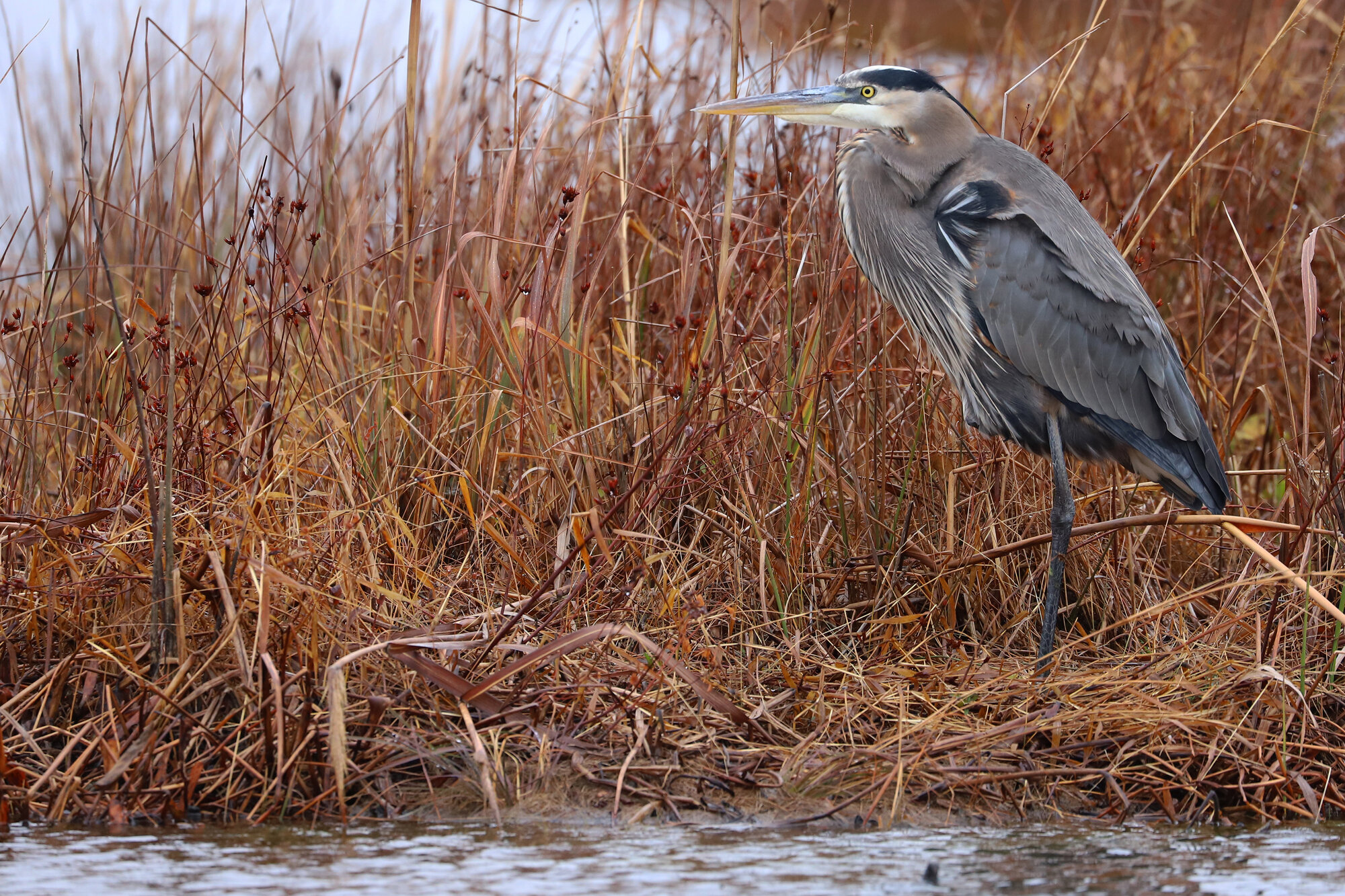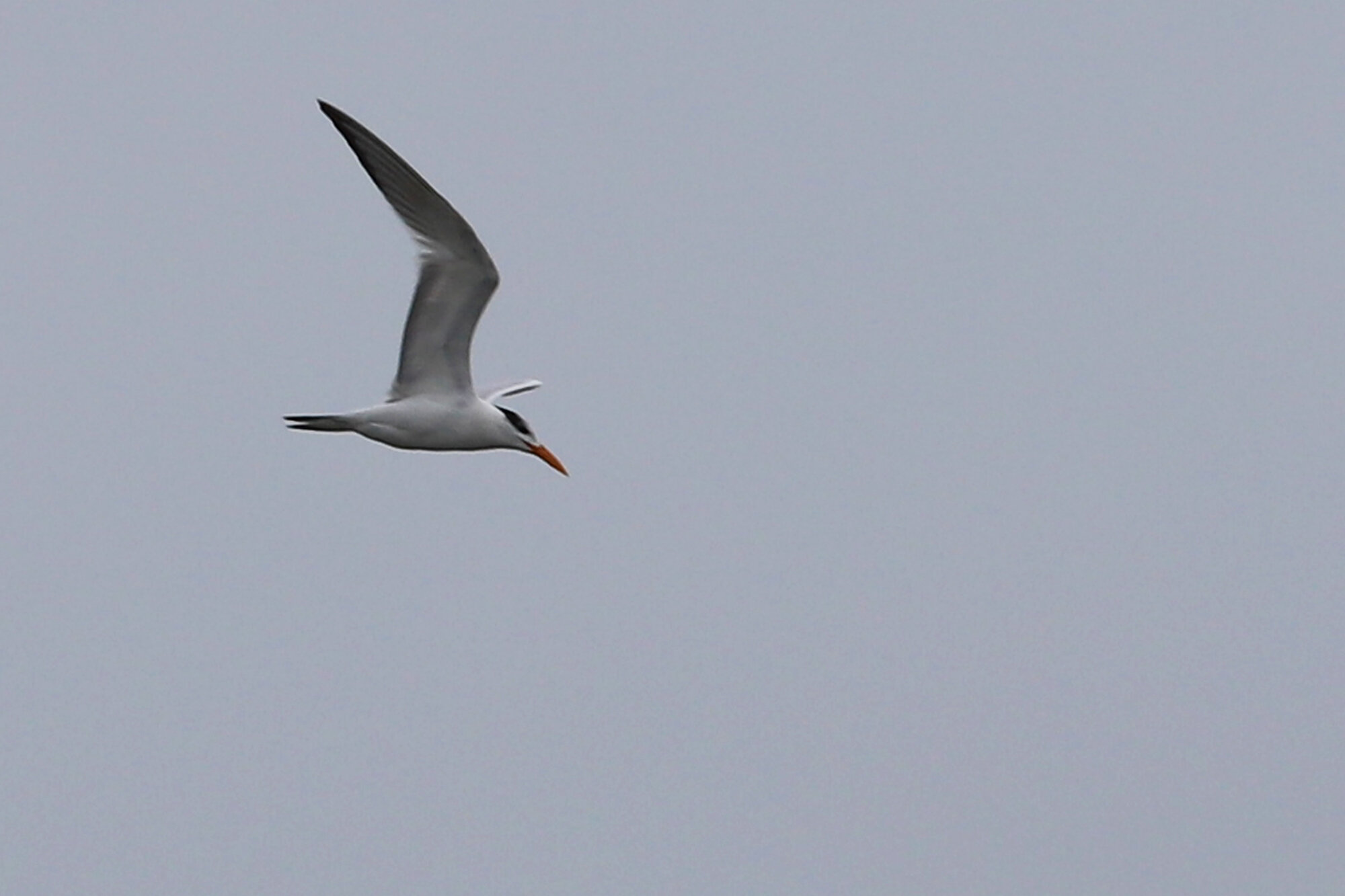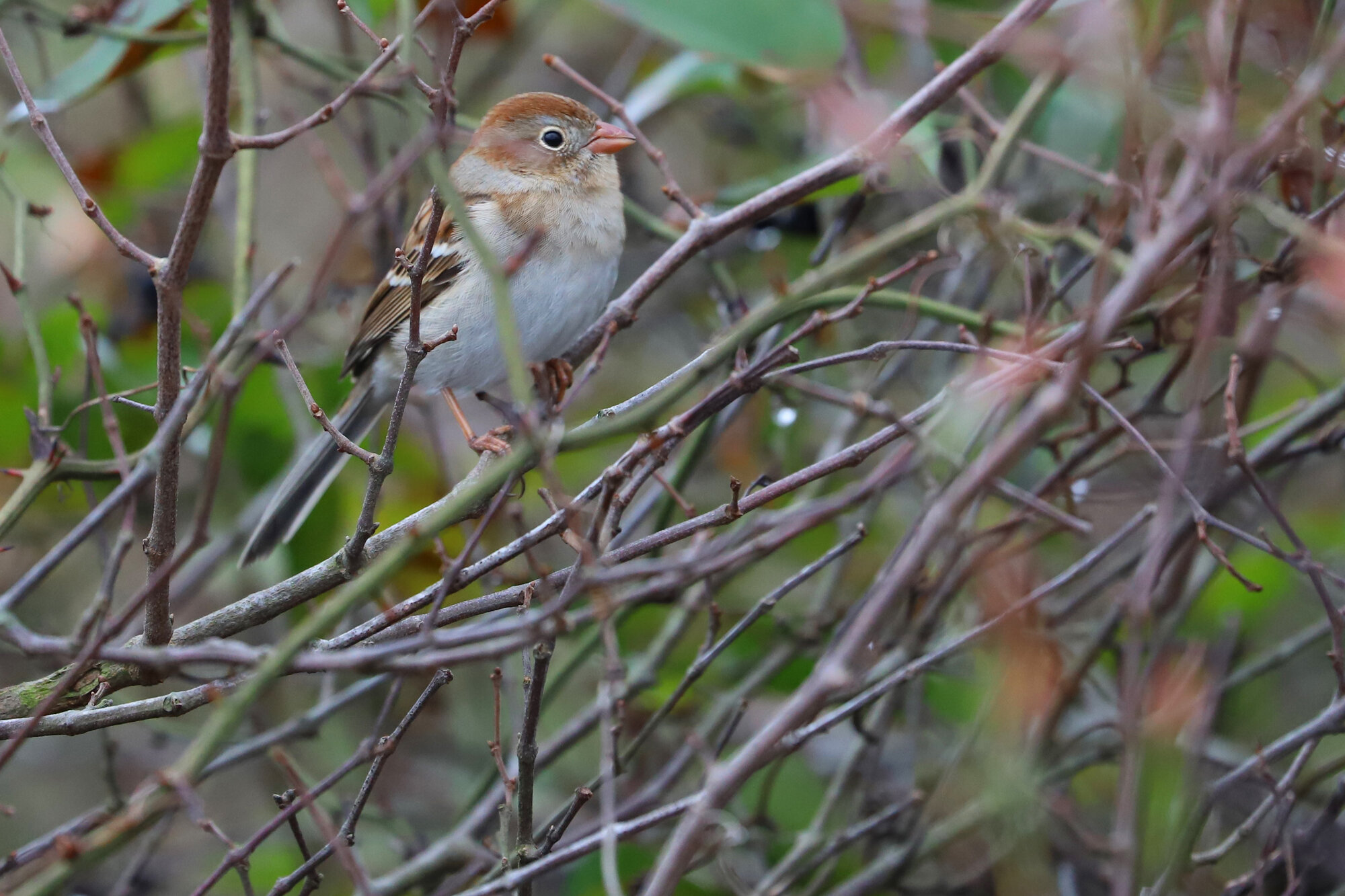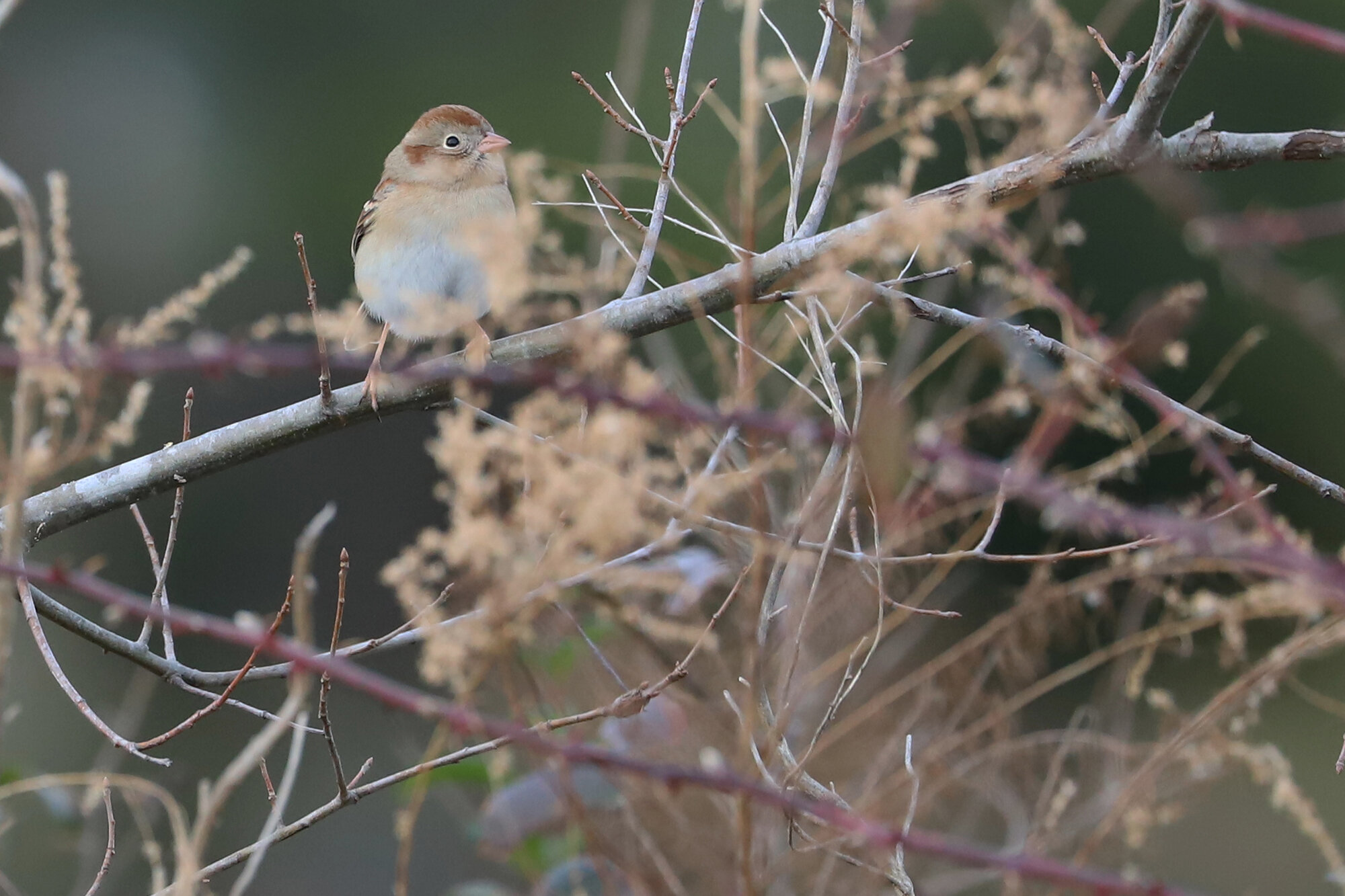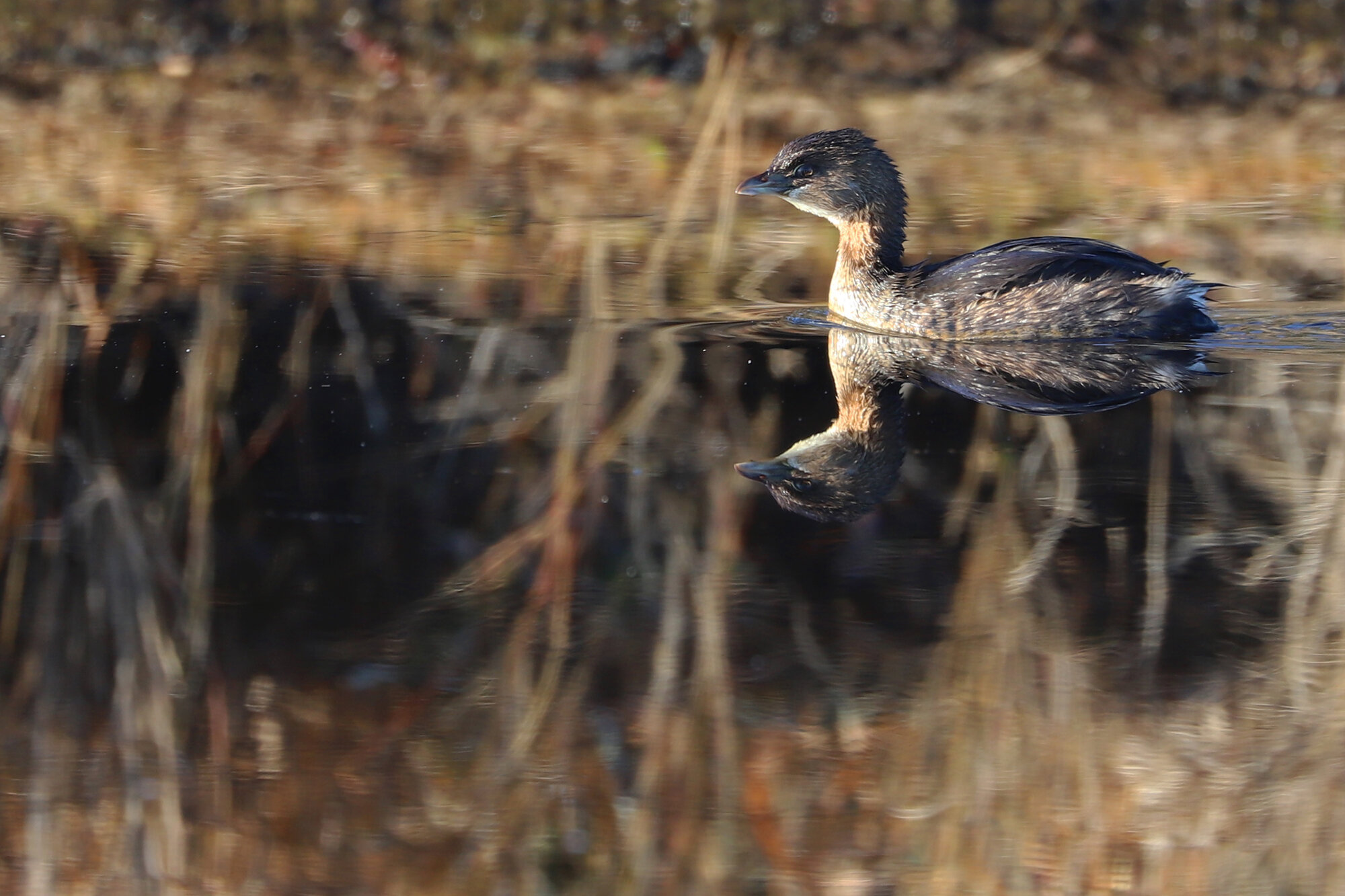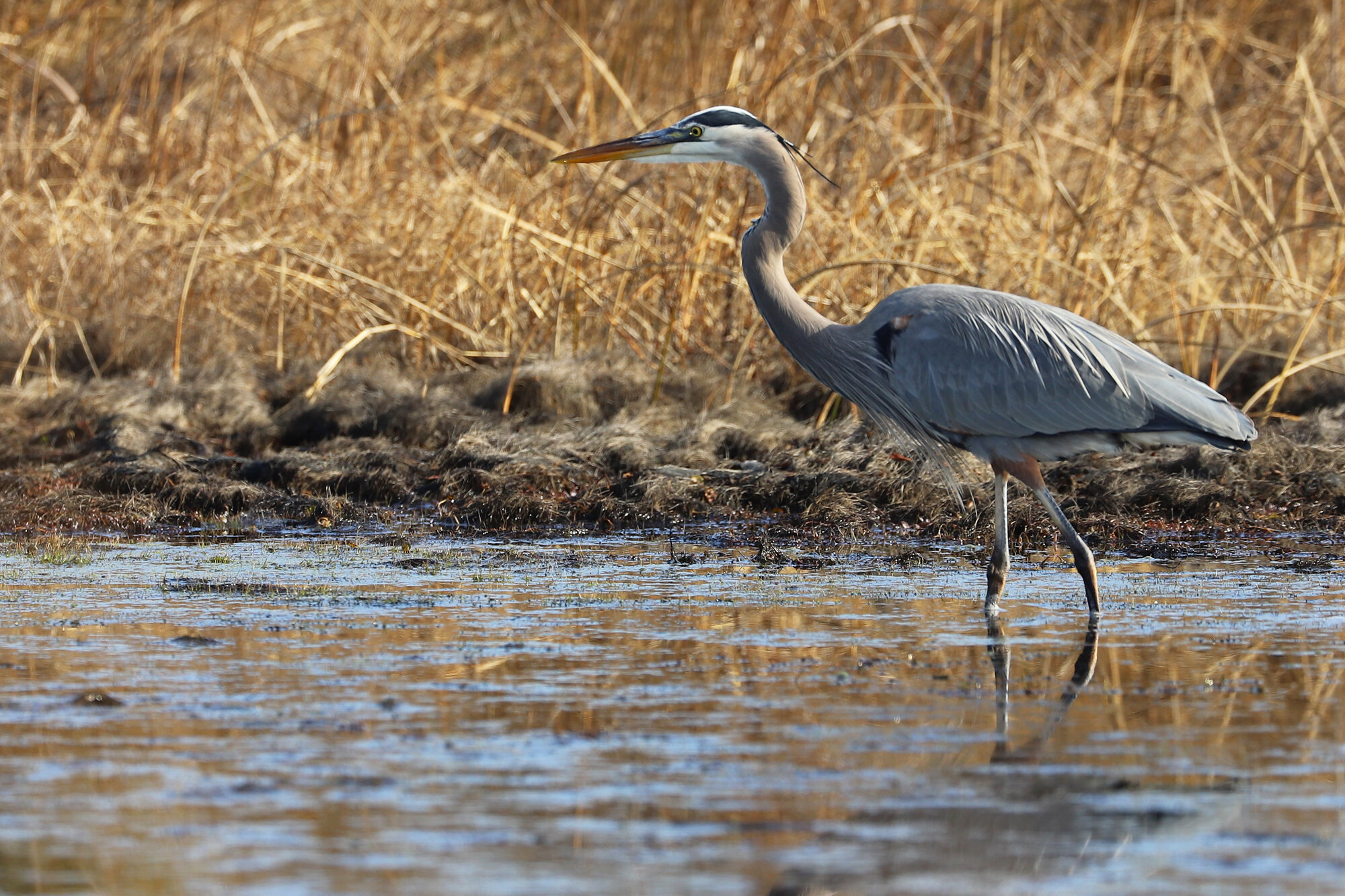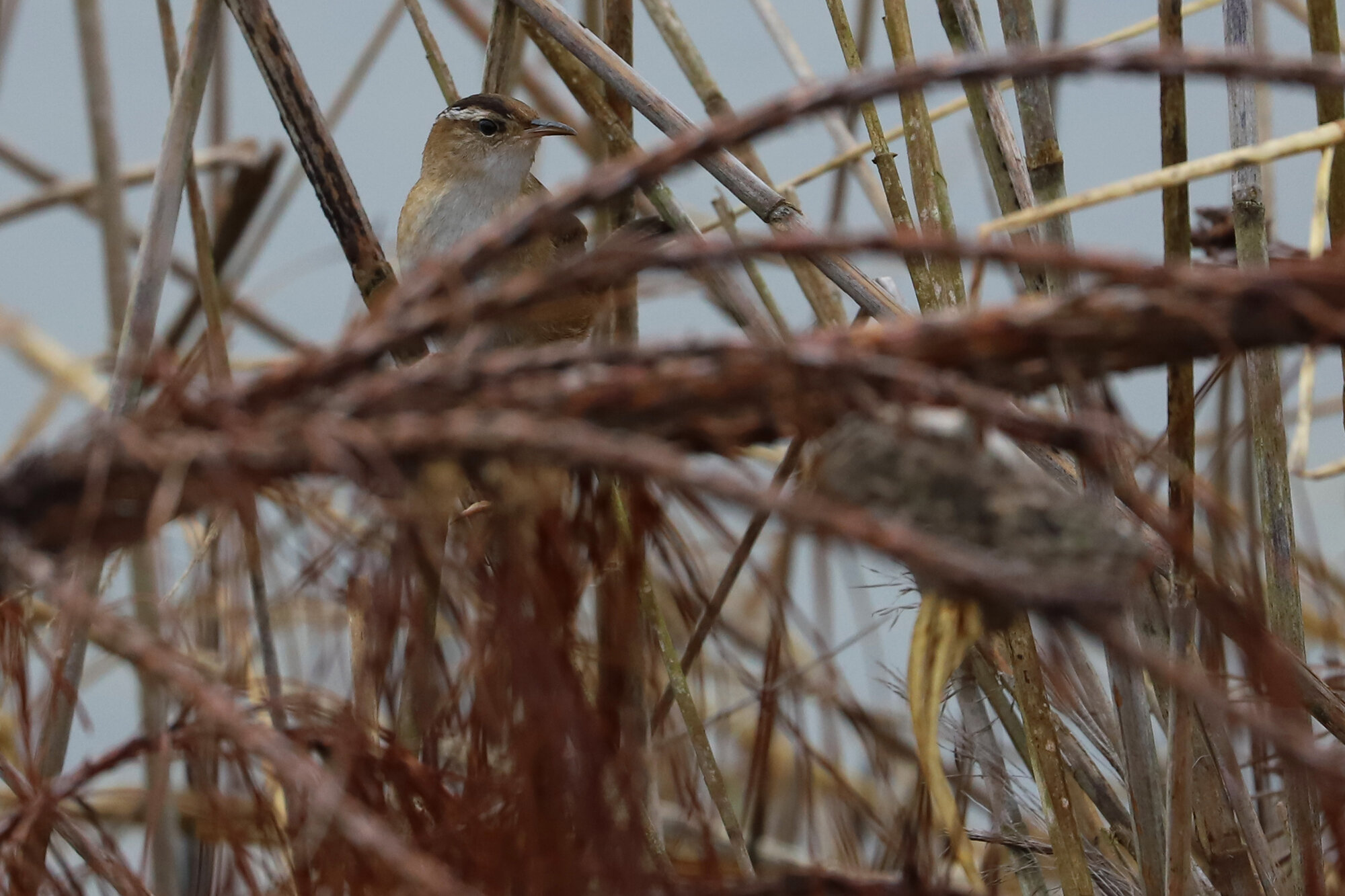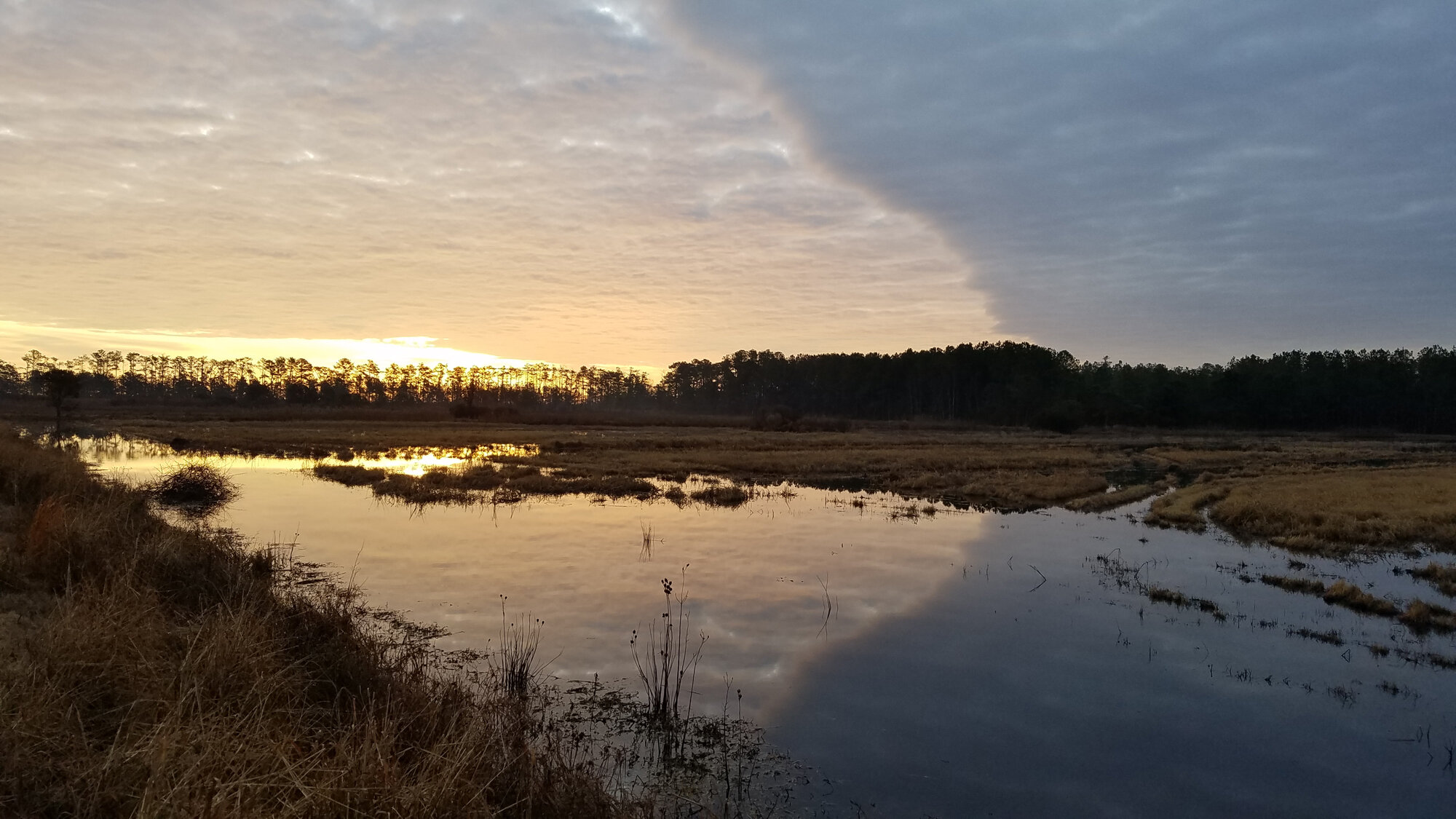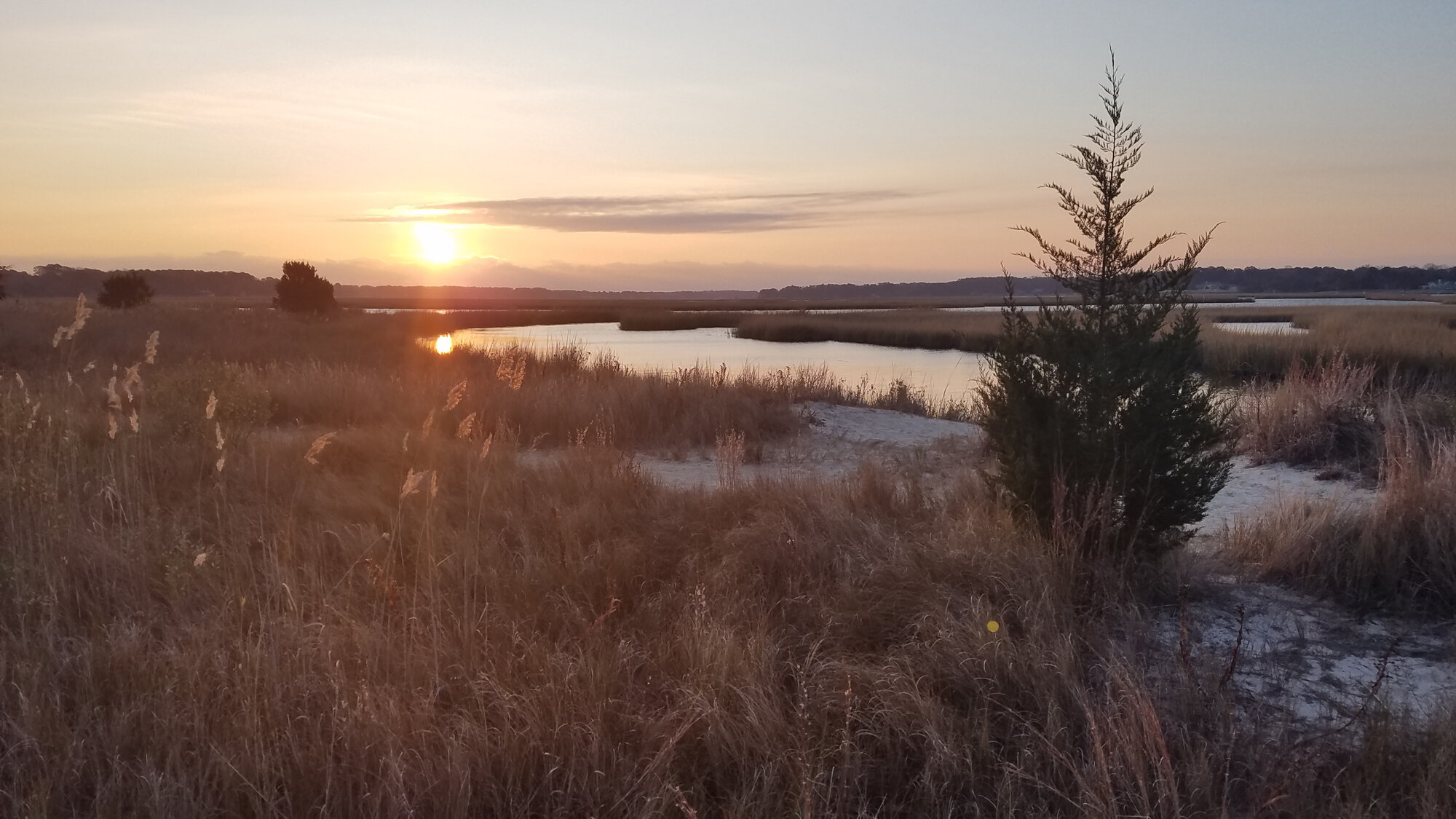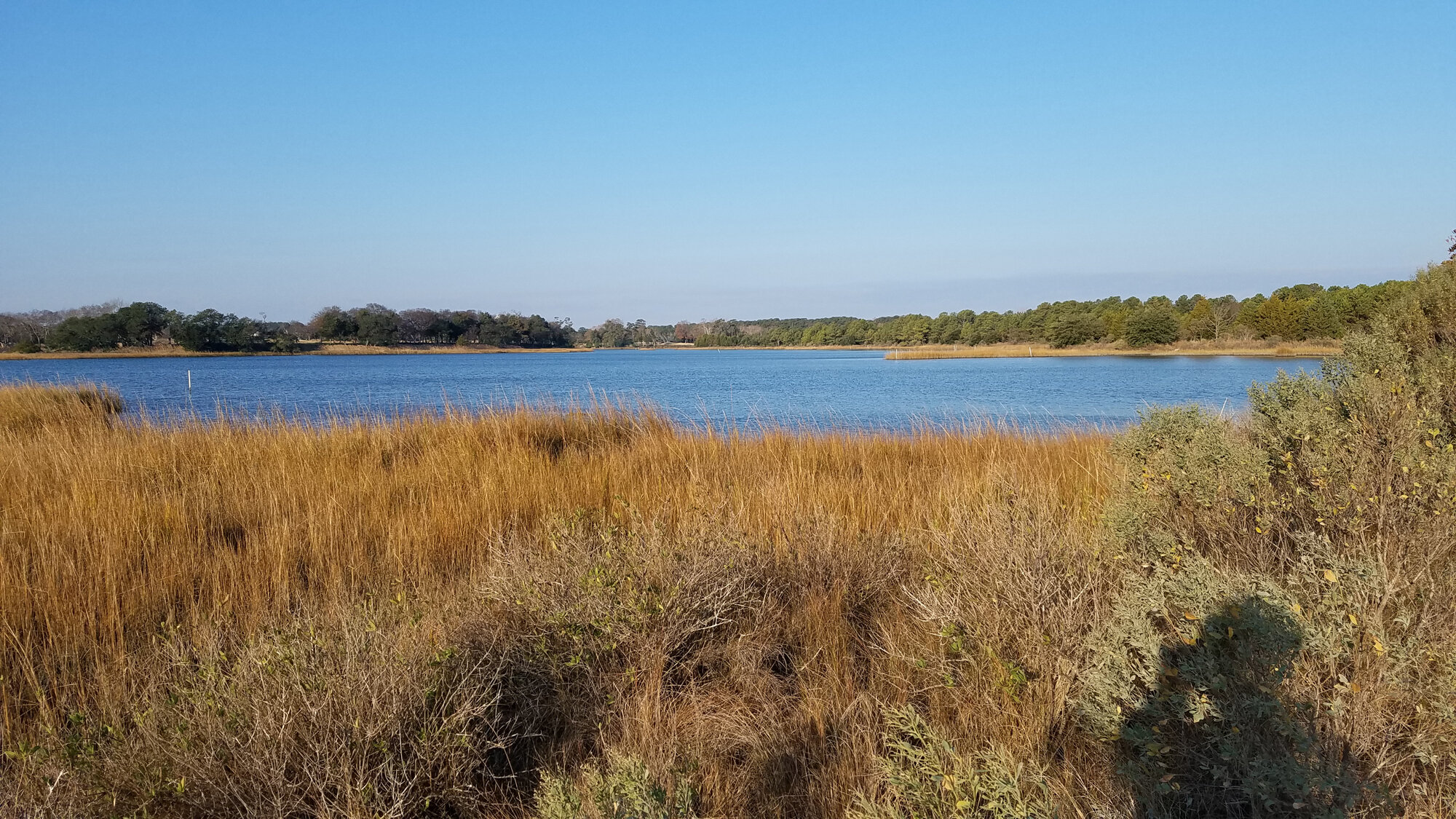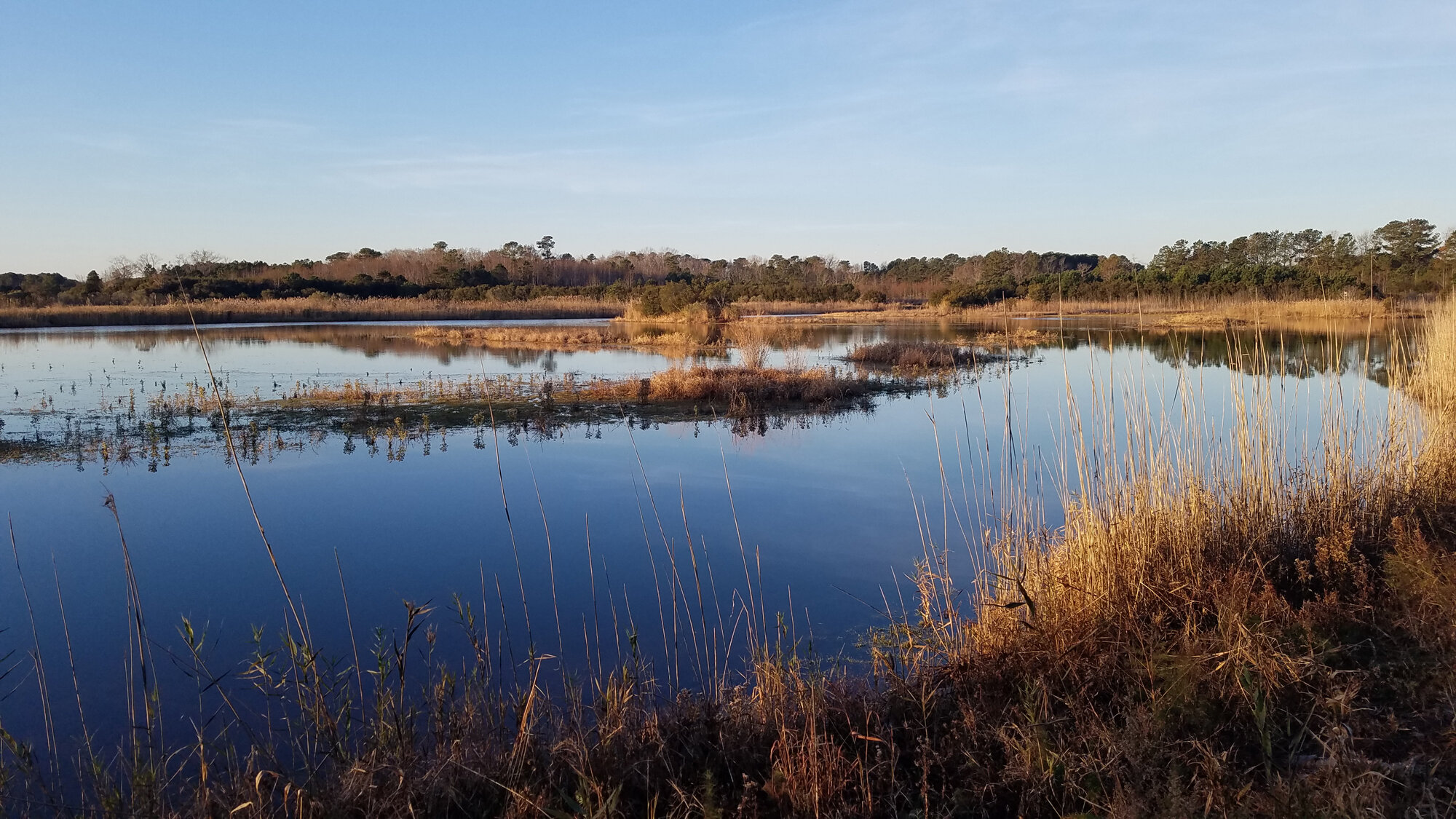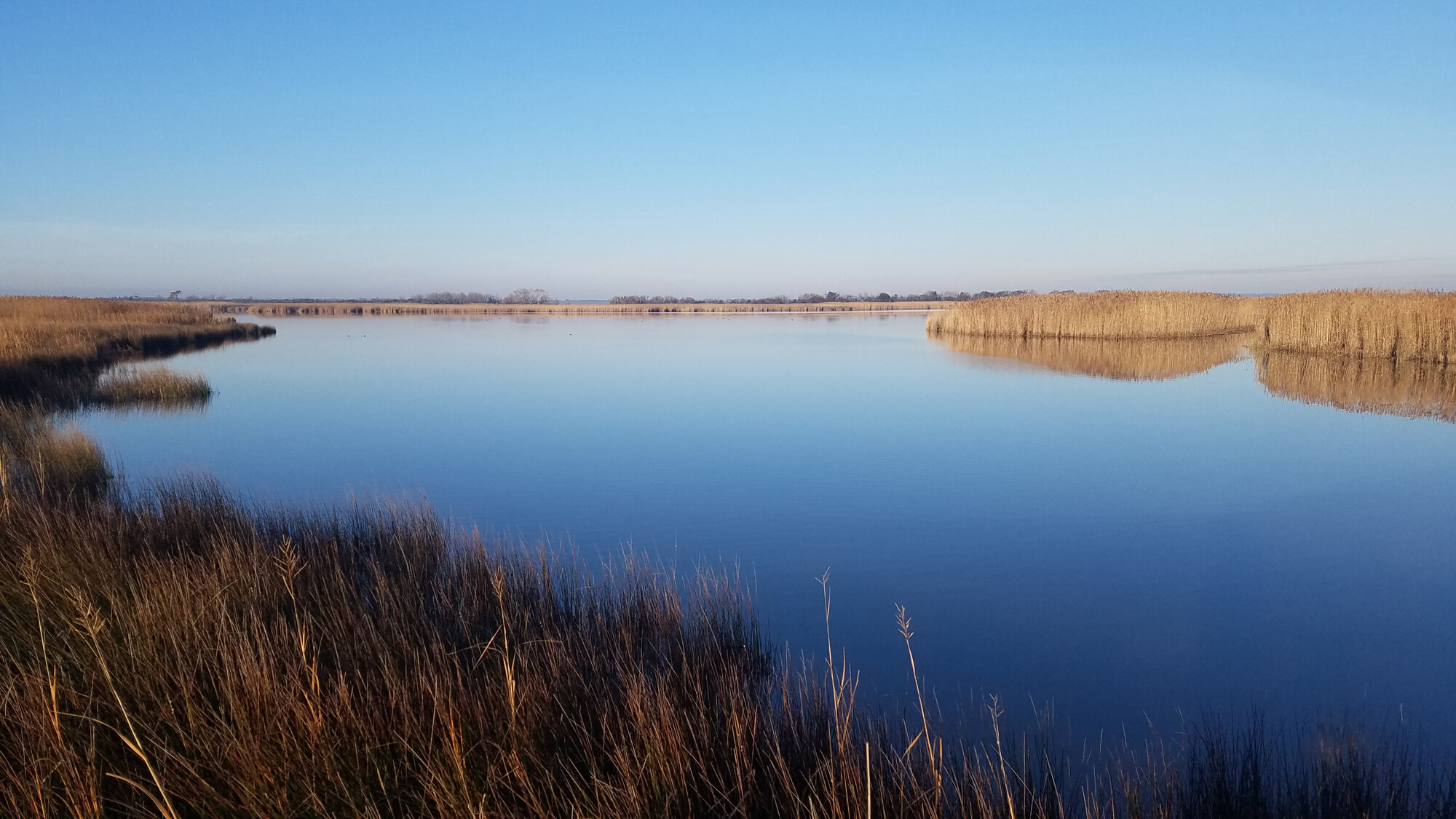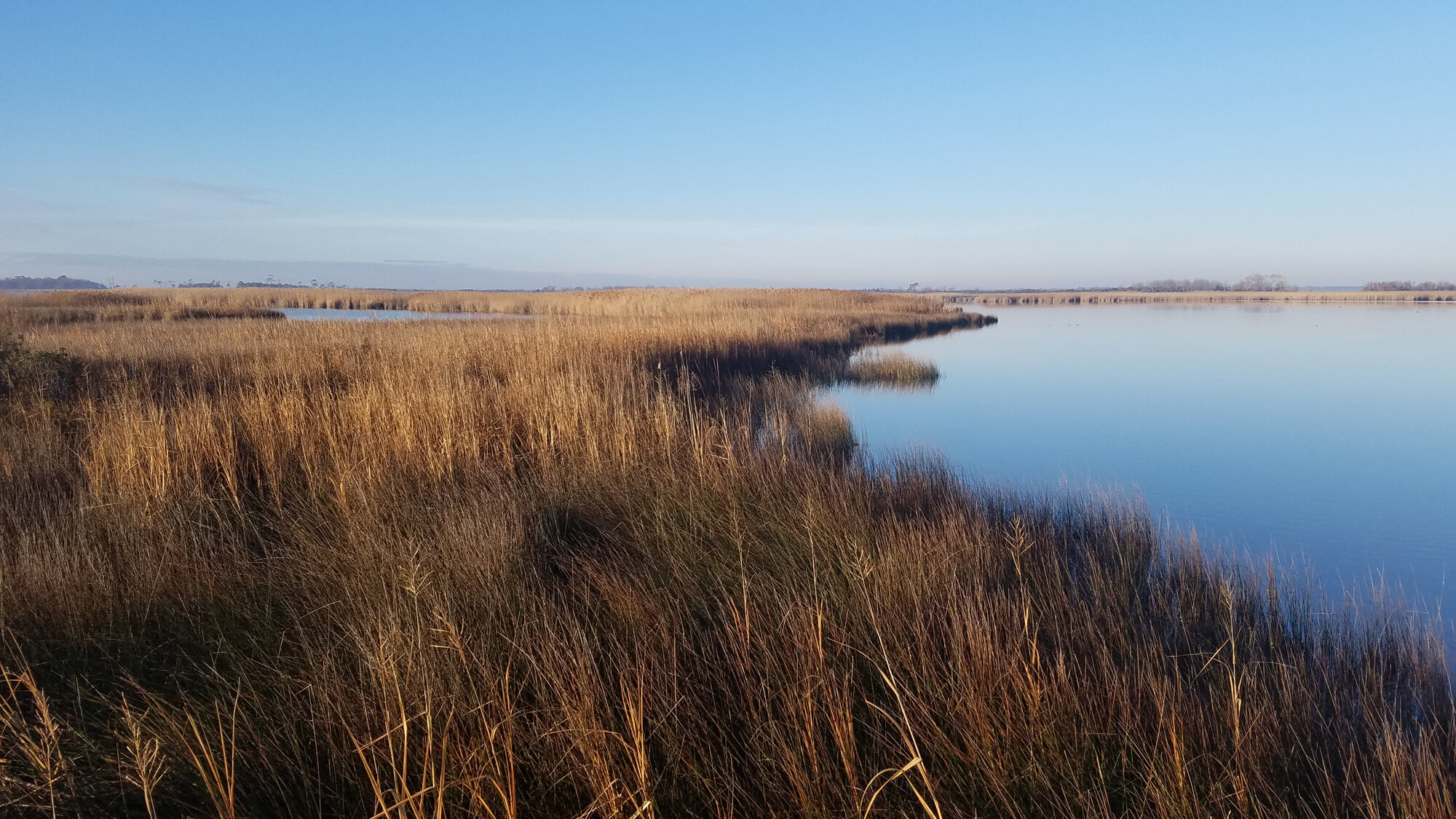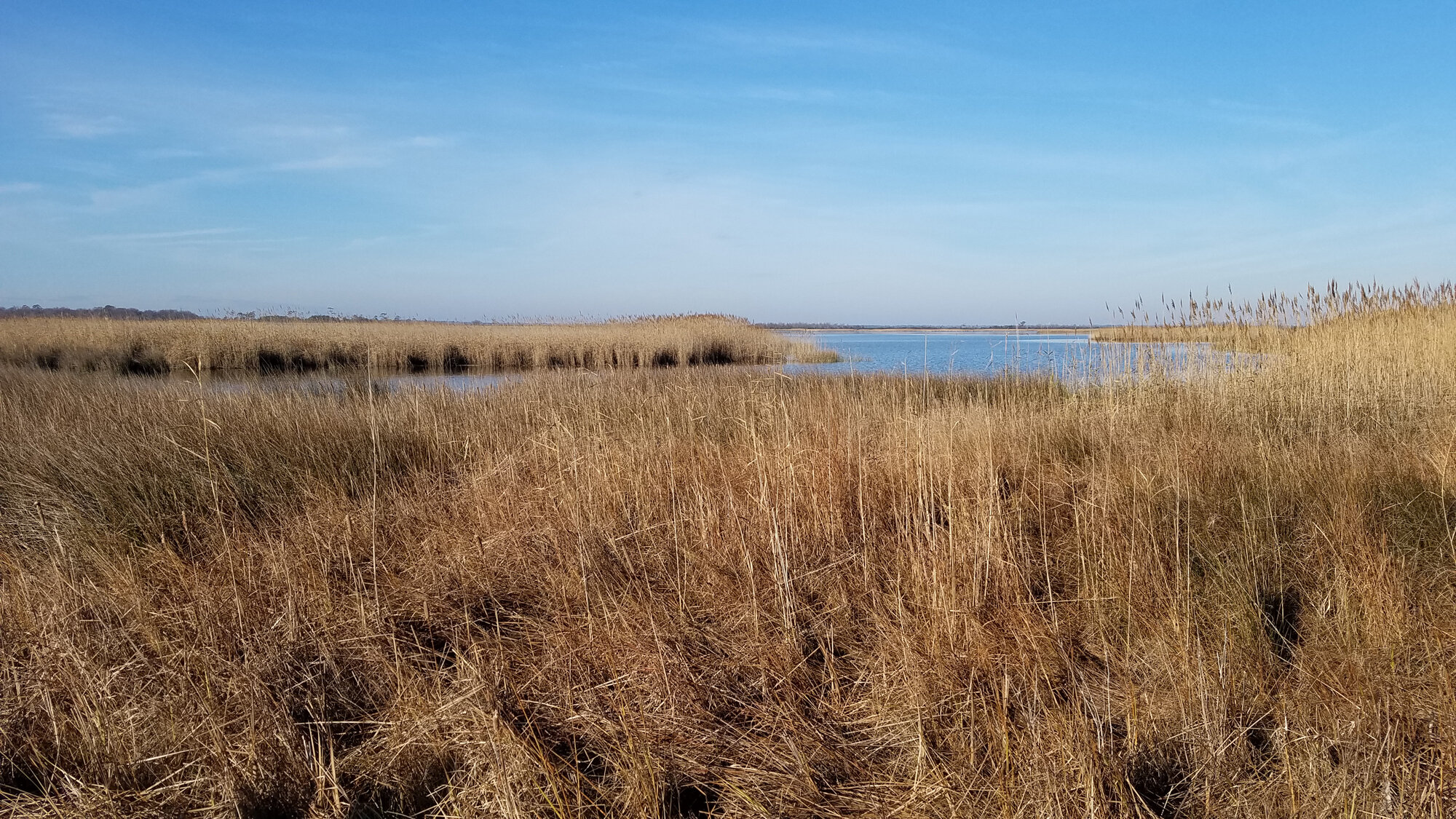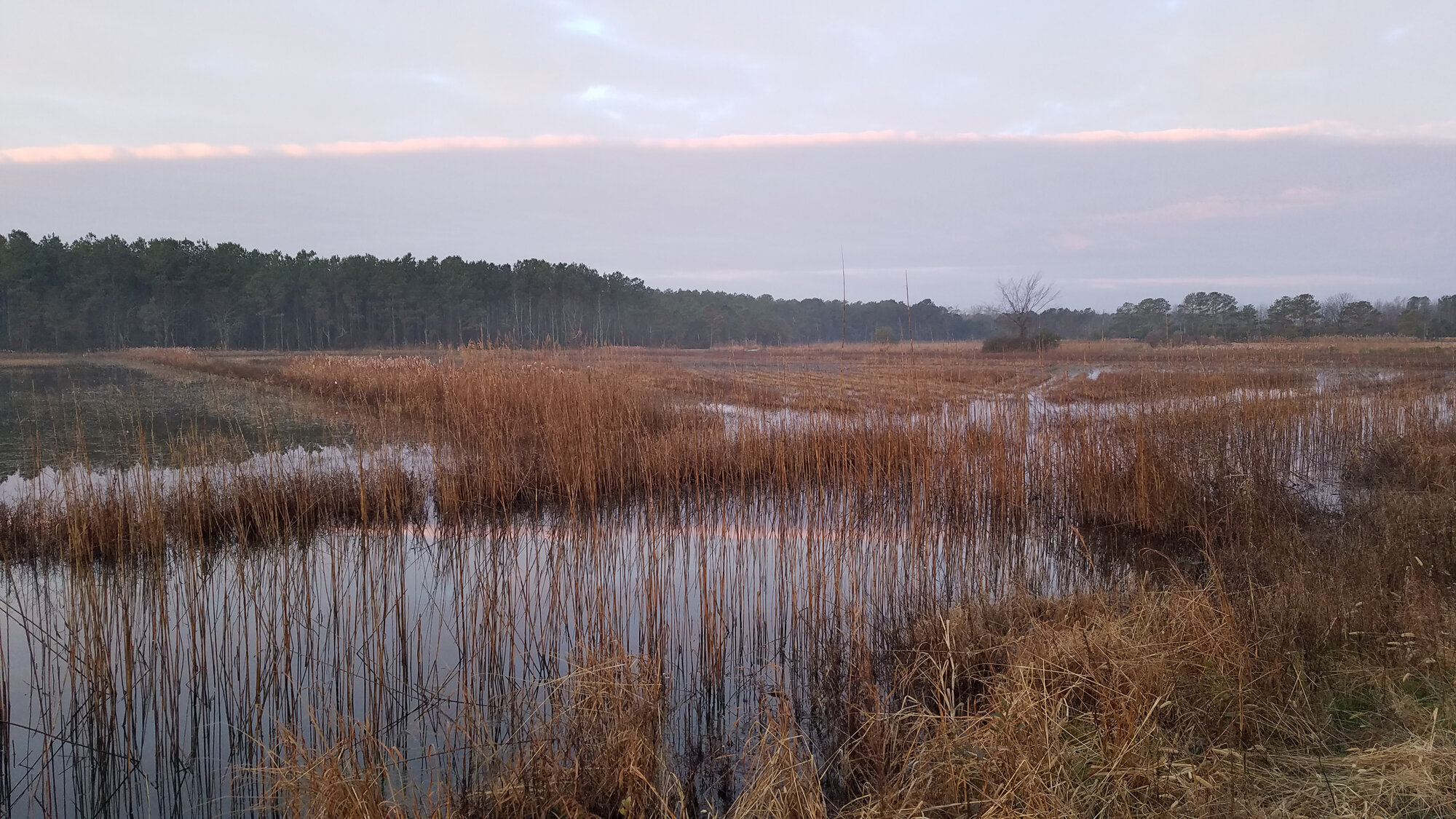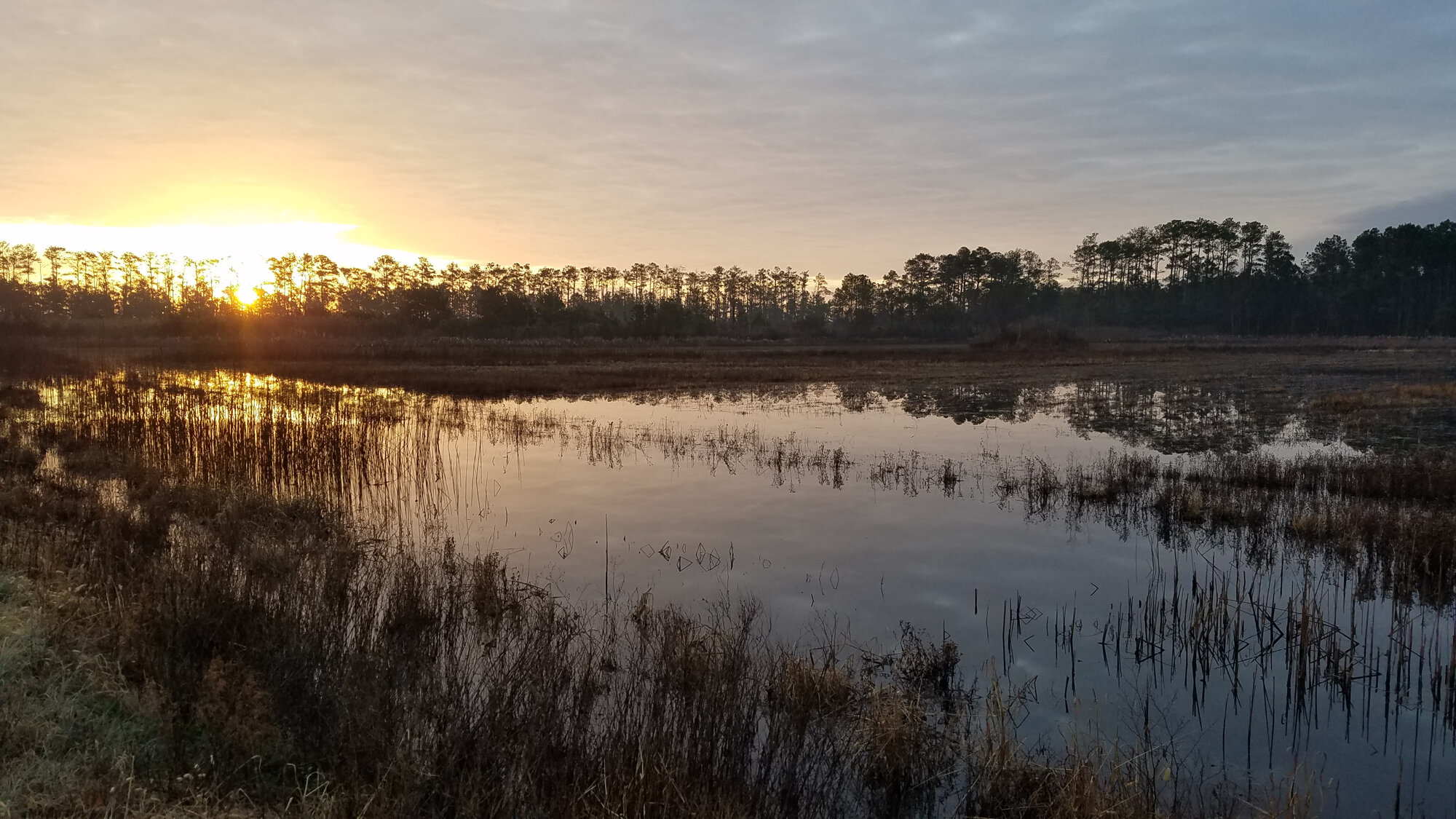December 2019
/Another calendar year has come to a close, and it was utterly incredible to experience the birding opportunities that presented themselves throughout 2019 in Virginia Beach! A great many highlights occurred over the past twelve months, and each is extensively documented on the Noteworthy Observations page of this website. As to the final month of the year, December certainly held up to the standards set throughout the rest of the year. Despite unseasonably warm weather, Virginia Beach birders managed to find most of the expected winter residents, though waterfowl numbers were certainly lower than they ought to have been at this point in the season and Common Goldeneye has yet to make its first appearance for the season. The warm weather did, however, provide unique opportunities to view lingering species, and we had some exceptional records for western vagrants as well. Over the course of its thirty-one days, a total of 177 species were logged to eBird during December, which tied the 177 species logged during November and was just barely lower than the 179 species logged during December last year. At the close of December, and of the 2019 calendar year, Virginia Beach has officially logged records for 307 species to eBird for the year (including 287 photographic or audio recorded species), a massive +17 compared with last year’s 290 species! During December, as a city we collectively surpassed 10,000 complete checklists submitted to eBird (on 29 Dec) for the first year ever, and at the year’s closing, our total reached at least 10,061, which is a mark that along with Fairfax County, makes us only the second city/county in the state to achieve thus far!
Highlights for December included: Cackling Goose, Blue-winged Teal, King Eider, Harlequin Duck, Long-tailed Duck, Common Merganser, Western Grebe, Ruby-throated Hummingbird, Black-chinned Hummingbird, Rufous/Allen’s Hummingbird, Semipalmated Plover, Pomarine Jaeger, Parasitic Jaeger, Black-headed Gull, Glaucous Gull, Manx Shearwater, American White Pelican, Yellow-crowned Night-Heron, “Northern” Red-tailed Hawk, Ash-throated Flycatcher, White-eyed Vireo, Blue-gray Gnatcatcher, Snow Bunting, Lark Sparrow, both “Dark-lored” & “Gambel’s” White-crowned Sparrow, Nelson’s Sparrow, Saltmarsh Sparrow, Yellow-breasted Chat, Orchard Oriole, Brewer’s Blackbird, Black-and-white Warbler, Nashville Warbler, Yellow-throated Warbler, Prairie Warbler, Blue Grosbeak & Painted Bunting. Additionally, December provided the city with first-of-season records for expected fall arrivals which, in order of arrival date, included: Fox Sparrow, Razorbill, American Woodcock & Canvasback! Lastly, we also had some other exciting records this month for Common Eider, Red-necked Grebe, Brown Pelican, Osprey, Horned Lark & “Ipswich” Savannah Sparrow!
Likely a continuing individual mixed in with the wintering Canada Goose flock that roams widely between the Sherwood Lakes and Firefall Drive areas, a single CACKLING GOOSE was photographed during the Back Bay CBC on 29 Dec from behind the Harris Teeter along Princess Anne Road (ph. David Epstein, Luke Fultz & Karl Suttmann)! The last several winters have seen at least one member of this species associating with this large flock, and records tend to range from Nov to Mar with some regularity. Previously, sight reports for what is probably this same individual occurred at the agricultural fields between Ocean Lakes HS & the HRSD Atlantic Treatment Plant on Firefall Drive and on the waters of the north pond at Sherwood Lakes. Any of these locations, as well as the fields off Princess Anne Lane farther south have produced records in past years, so they’re all worth checking if hoping to view this species. Separation of Cackling Goose from smaller race, or simply smaller-sized Canada Geese is sometimes difficult in the field, but a tiny goose within the flock is worth scrutinizing, with Cackling showing a very bright overall body and not the darker-toned back of Canada, as well as a much stubbier bill, steeper forehead, and shorter neck.
Scarce during the winter months anywhere in the state, a group of five BLUE-WINGED TEAL mixed with a large flock of assorted dabblers at Princess Anne WMA Beasley Tract on 8 Dec (ph. Rob Bielawski) made for an exciting record to kick off the month! Even more remarkable, a group of seventeen (four drakes, thirteen hens) was documented during the Back Bay CBC at Mill Landing Boat Launch on 29 Dec (ph. Rob Bielawski, Lisa Rose & Robert Wood, making for the highest count so late into the winter season currently input to eBird! Though this species is uncommon not too far south of Virginia Beach, we sit right on the line of where they’re expected, and where they’re not expected this time of year. The last occurrence prior to these records was of a single individual, on 22 Nov at Stumpy Lake NA and the last count higher than one was back on 26 Oct at Mt. Trashmore Park, so it is easy to see why these December records, consisting of more than simply a stray individual, are exciting to see!
The first KING EIDER to be observed in Virginia Beach for the calendar year was recorded in the form of a flyby immature male at Little Island Park on 21 Dec (vis. Andrew Baldelli & Kathy Louthan). The last record for the species in the city occurred at adjacent Back Bay NWR all the way back on last year’s Back Bay CBC, 29 Dec 2018, and it's now been several years since there was a “twitchable” King Eider in Virginia Beach with all recent records being birds on the wing.
Our second & third HARLEQUIN DUCK for the season occurred this month, with an adult male present along the beach at First Landing SP on 6 Dec (ph. June McDaniels) and a female found at Little Island Park on 16 Dec (ph. Luke Fultz). The latter made for the first time one had been photographed at this city park since 2013! With another female (or maybe the same?) present at Rudee Inlet from 25 Oct (ph. Andrew Baldelli) through 18 Nov (ph. Aylett Lipford), this has been an exceptional season for this species, for which records are difficult to come by in Virginia Beach away from the Chesapeake Bay Bridge-Tunnel islands, though one immature male did spend the 2018-19 winter season around Lynnhaven Inlet where the turbid waters provide ideal habitat for this tiny, but tough, sea duck.
Unusual away from the coastline in Virginia Beach, a female LONG-TAILED DUCK found on the north pond at Sherwood Lakes on 11 Dec (ph. Mike Collins) provided only our second “inland” record for the species this year! Another photographed in a Wawa parking lot off Virginia Beach Boulevard back on 26 Jan (ph. Lisa Kirkman), must have been a disoriented transient that mistook the asphalt for water, so it was nice to see this December record for an individual actually resting on freshwater. The larger lakes are checked often in Virginia Beach, but rarely do we see species like this on them, though Sherwood Lakes also held a White-winged Scoter earlier in the year. If we see a freeze event during January, this is a great place to look for waterfowl, as these form sandpits hold such a large volume of water, they’re the last freshwater body to start icing up.
The first COMMON MERGANSER of the season was observed on a freshwater pond along Bold Ruler Drive in Ocean Lakes on 2 Dec (ph. Tom & Tommy Maloney)! While this species is generally quite scarce in Virginia Beach, the past few winters have produced a number of records, though almost all of them have occurred at Sherwood Lakes during the peak of winter when lakes and streams to our north have frozen over, and almost all of them are of females, with adult males being quite rare here. Individuals have sometimes been observed along the coast in groups of the much more abundant Red-breasted Merganser, but saltwater records are scarce compared to those on freshwater lakes.
Present along the coast since at least 25 Nov (ph. Tracy Tate), a WESTERN GREBE was reported twice more this month, first offshore of Dam Neck NA (Restricted Access) on 8 Dec (vis. Karen & Tom Beatty) and again off Little Island Park on 20 Dec (vis. Luke Fultz). This now makes four winter seasons in a row where at least one individual of this species has been recorded in Virginia Beach, which is utterly astonishing for any single locality on the East Coast given the utter scarcity of records in the East! In fact, there has been only one other record outside Virginia along the East Coast so far this season, with a single individual present in Fairfield County, Connecticut from 24-27 Nov! Though it evaded birders during the Back Bay CBC on 29 Dec, it is very likely that this individual is still present somewhere along the immediate coastline, but given the sheer length of oceanfront habitat it has to forage among, it is simply difficult to pin down at a given time/location. Most records for this species over the last few winters have occurred at Little Island Park, not necessarily because the bird is most likely there, but because it affords the best views of the water, and if one is around, this is where birders have the best probability of actually being able to view it. Back Bay NWR’s beach would probably be the next best alternative, but time will tell if it gets observed again.
At least two confirmed RUBY-THROATED HUMMINGBIRDS were recorded during December! Most recently, an immature male was photographed at a private residence in Laurel Cove, first on 16 Dec (vis. Loretta Silvia) and with additional visits on 19, 20, 21 & 23 Dec! Additionally, at least one female was present at Camp Pendleton SMR on 8 Dec (ph. Steve Keith; later ph. Karen & Tom Beatty). At least two other unidentifiable hummingbirds were also reported, with one present simultaneously with the Camp Pendleton Ruby-throated, and another that made a quick pass through a Kings Grant backyard on 11 Dec (vis. Ron Furnish). It’s quite possible that others are out there waiting to be found!
The miraculous, immature male BLACK-CHINNED HUMMINGBIRD that dazzled many birders in November continued to be seen into December, and was banded, measured & released by Bruce Peterjohn on 7 Dec (ph. Kelly Dean & Cindy Hamilton). First observed in late October, this individual first made its way into eBird on 15 Nov (ph. Kelly Dean) and caused quite a stir amongst the local birding community! Later observations were able to capture high quality photographs that showed a few purple feathers in the gorget, an essential field mark in separating young Black-chinneds from immature Ruby-throated Hummingbirds. As of now, the most recent eBird record occurred on 24 Dec (ph. Kelly Dean), and it’s possible that this will be the last observation. However, with perhaps three or four Black-chinneds present in the state this fall/winter, there is simply no telling how many more could be out there, waiting to be identified. Any hummingbird observed between Oct and Mar is worth heavily scrutinizing, and capturing the best photographs one can get is an essential component in properly identifying this out-of-season hummingbirds. This record showcases just how one never knows what might pop up, but vigilant eyes can turn up amazing things!
Though it was never entered to eBird by the homeowner, a RUFOUS/ALLEN’S HUMMINGBIRD was present at a private residence in Kempsville this month, with photographs provided to a closed Facebook Group. The photographs however, didn’t display the pertinent field marks to be able to separate the two species, each of which have a pattern of vagrancy this time of year along the East Coast. Typically in these cases, the best way to be certain of the species is to have it captured, banded & measured, and then released, as in the case of the Black-chinned Hummingbird mentioned above. In any case, either species is highly rare, and highly sought-after, so this is an exceptional record for the city, which hasn’t had a “slash” of this nature since one was briefly present at Lago Mar backyard on 28 Sep 2017 (vis. Mary Catherine Miguez). While there are several records for Rufous Hummingbird here in the winter season, we’ve yet to have a documented Allen’s, so anyone who sees a hummingbird that has a brownish/reddish wash to it, should take another close look!
Unusual along the coast after November, a single SEMIPALMATED PLOVER was observed at Back Bay NWR on 6 Dec (vis. Robert Ake, Drew Avery & Lauren Mowbray) and likely the same individual was still present on 9 Dec (ph. Marlee Fuller-Morris)! In terms of past years with December records, only 2004, 2007 & 2017 have entries input to eBird, and this is the first year where one has a photograph attached to it, making this all the more exciting! It’s been three years since the city saw a January record, when one was at First Landing SP on 11 Jan 2017 (ph. Mary Catherine Miguez), so just something to keep in mind if you’re birding the beaches at Back Bay. With winter records occurring a bit more frequently along the Eastern Shore and even at Grandview NP in Hampton, this has always been a bit of a curious species in Virginia Beach where we seem them purely as spring & fall transients. It stands to reason that our lack of undeveloped tidal shoreline is to blame, where exposed mudflats and beaches are a favorite for this species to forage among. The immediate coast has few stretches where the birds could remain undisturbed as well, so perhaps areas north and south of Virginia Beach are just more ideal. Still, this is a species worth keeping in the back of one’s mind whenever birding in Jan/Feb, as any sighting would be noteworthy.
Our first photographic record of POMARINE JAEGER for the year occurred this month, with a light morph adult viewed in offshore waters from the Rudee Flipper on 28 Dec (ph. Steve Myers)! While most of our jaeger records tend to be of Parasitics, often times the distance and viewing conditions don’t allow for separation to species, and we see quite a few Jaeger sp. entries go into eBird. However, photographs like those included with this report can help to narrow things down. Pomarines tend to feature a more ‘barrel-chested’ appearance that Parasitics, since they’re the heaviest of the three species. The much daintier, Long-tailed Jaeger is more in line with medium-sized terns, and much more delicate in flight than the other two species, which can appear quite fierce when harassing gulls & terns to steal prey items. Pomarine is likely overlooked since shore-based observations aren’t always ideal, so getting offshore on boats is a great way to try and get better looks, so long as there’s birds in the air.
At least four PARASITIC JAEGERS were observed during December with one found offshore on the Rudee Flipper on 14 Dec (ph. Rudee Tours), and shore-based records at Back Bay NWR on 14 Dec (ph. Rob Bielawski) & during the Back Bay CBC on 29 Dec (vis. Arun Bose), as well as at Little Island Park on 10 Dec (vis. Andrew Baldelli). With most jaegers passing by our coast during the fall migration in November, records during the winter months tends to be much fewer and farther between. Typically, January reports are absent locally, but with lots of birders spending time seawatching for alcids and waterfowl at the start of the new year, we could get lucky!
On the final day of the reporting period, during the Little Creek CBC, a BLACK-HEADED GULL was spotted in flight near Lynnhaven Inlet (ph. Andrew Baldelli & Lisa Rose)! This marks the third January in a row in which this species was logged at least once at this location, with an individual photographed here 31 Jan 2018 (ph. Andrew Baldelli), and another present 12 Jan 2019 (vis. Andrew Baldelli) through 2 Feb 2019 (ph. Rob Bielawski & Steve Myers). Rare anywhere in the state, but seemingly more regular here in Virginia Beach and along the southern bayshore in Norfolk, this is now five calendar years in a row with at least one accepted record in eBird. It’s likely that this individual will linger around the inlet, and the falling tide might give the best ability to find it as gulls will move in to the tidal mudflats just off Pleasure House Point NA to roost!
The first “white-winged gull” of the season was observed in the form of a GLAUCOUS GULL flying along the bridge deck of the Chesapeake Bay Bridge-Tunnel on 30 Dec (vis. Gabriel Mapel) and was viewed again nearby the following day as well (vis. Wes Teets; later ph. Andrew Baldelli, Cindy Hamilton & Lisa Rose)! A difficult calendar year for finding this species in the state as a whole, this was only the fourth record for Virginia, and a first for 2019 in Virginia Beach! Prior records for 2019 in the state include one at Kiptopeke SP on 25 Feb (ph. Baxter Beamer), one at Claytor Lake on 16 Feb (ph. Virginia Tech Birding Club) and a lingering individual at the Prince Willaim County Landfill observed by many into January. With the first and second islands (South & North Thimble Islands) closed to the public due to the construction of a second, parallel tunnel over the last few years, we’ve unfortunately missed out on the opportunities for “gulling” that we once enjoyed on these islands. Boat trips in January and February sponsored by several bird clubs have now become the only mechanism for birding the islands, short of opportunistic views while riding passenger in vehicles traveling across the bridge, like in the case of both the 30 & 31 Dec reports. A similar situation occurred a couple of winters back when an immature male King Eider was hanging around the bridge pilings about a mile south of the first island as well.
Rarely observed in Virginia Beach waters, a single MANX SHEARWATER was photographed roughly 8 miles offshore of the Oceanfront by spotters aboard the Rudee Flipper on 14 Dec (ph. Rudee Tours) and another pair was sighted the following day, 15 Dec! Though this species is an expected/regularly-occurring winter resident in pelagic waters offshore of Virginia Beach, it is quite exciting that the records occurred so close to shore. Rarely, this species can even turn up inshore, and during the large-scale alcid movement in February 2017, several of these shearwaters were observed from our coastline by land-based birders at Back Bay NWR, Little Island Park, Rudee Inlet & Fort Story JEB. One was eve photographed from shore at Back Bay NWR on 12 Feb 2017 (ph. Andrew Baldelli & Linda Chittum), and with a Sooty Shearwater photographed this month just to our north in Northampton County (ph. Robert Ake & Edward Brinkley), it seems possible that we could be in for a good shearwater season! Certainly, if these species are being observed on boats and from the CBBT, it’s a good time to start hoping, and searching for one inshore! Mornings featuring strong easterly winds in Jan/Feb would likely be the best chance, as seasonally that is when the populations here are probably highest, and the winds could push some closer to shore than is typical.
At least a dozen AMERICAN WHITE PELICANS made an appearance this month on the impoundments at Back Bay NWR, with the first report of two individuals occurring on the 5 Dec refuge-sponsored impoundment survey (vis. Robert Ake, Drew Avery & Lauren Mowbray). Unfortunately, the impoundments are closed to the public from 1 Nov-31 Mar, but the most recent record on 15 Dec (ph. Mike Collins) occurred in the publicly-open section of the park so it is still possible to catch these birds in the air whenever they’re in motion! Unfortunately, the species was not observed during the Back Bay CBC on 29 Dec when access to the typically closed impoundments is granted to those taking part in this particular sector of the count. However, at the tail end of the month on 31 Dec, two independent observers in Sandbridge viewed large flights of this species heading northbound, with a massive flock of 45 individuals (ph. Robert Wood) and also a smaller flock of 17 (vis. Bill Oyler). Clearly, we have a good shot at seeing more of these during January if they’re moving around the coast.
For the first time ever in eBird, a YELLOW-CROWNED NIGHT-HERON lingered into December at Pleasure House Point NA, with the most recent observations occurring on 15 Dec (ph. Hugh Davenhill), 24 Dec (ph. Kathy Spencer) and miraculously on the Little Creek CBC on 31 Dec (ph. Andrew Baldelli & Lisa Rose). In a typical year, this species is present from mid-March through late October in Virginia Beach, but at least two had persisted at this location through 11 Nov (ph. Loretta Silvia), with all subsequent reports of just the single immature. There has also been an immature Black-crowned Night-Heron hanging around in reasonably close proximity to the lingering Yellow-crowned, so caution is warranted in making this identification during the winter season. Black-crowneds will show a yellow lower mandible, almost to the tip, and are a browner overall coloration with larger white teardrop markings on the wings & back. It’s actually quite exciting to have both present right now, where they can be studied intensely to see the differences firsthand. In terms of Yellow-crowned Night-Herons though, we’ve never had one recorded to eBird in January, but perhaps if the weather remains unseasonably warm, we might just see a report! This is certainly something for everyone who happens to be at Pleasure House Point NA to keep in mind as we head into 2020!
Highly unusual during the winter season anywhere in Virginia, at least two GLOSSY IBIS were recorded this month at Princess Anne WMA! With a sight report of a single individual in flight over Munden Road on 7 Dec (vis. Tommy Maloney) and later, a record for two foraging in the southernmost impoundment of the Beasley Tract during the Back Bay CBC on 29 Dec (ph. Rob Bielawski, Lisa Rose & Robert Wood) with a single individual viewed from public Munden Road the following day (vis. Bill Oyler). The latter pair of records each made for the latest occurrence for the species ever input to eBird for the city, at their respective times! Additionally, the 29 Dec record also represents the first photographically documented record for Virginia Beach after October in any calendar year. Last winter, a pair of Glossy Ibis did linger into January at Chincoteague NWR north of us in Accomack County, however, as of this writing this is the northernmost record for the species as a whole in eBird for the 2019-2020 winter season!
The rare NORTHERN RED-TAILED HAWK first observed along London Bridge Road on 18 Nov (ph. Mike Collins) made for at least two additional reports during December in the same general area, on 14 Dec (ph. Tommy Maloney) and on 24 Dec (vis. Karen & Tom Beatty). With the first report last month, this became Virginia Beach’s first eBird record for this rare subspecies, so even though it is not a full species, it is certainly a noteworthy occurrence. As mentioned in last month’s entry, The “Northern”, or abieticola, subspecies of Red-tailed Hawk is a considerably darker race overall when compared with our standard borealis race individuals present year-round throughout the city. The abieticola race shows an extensively dark, very dense band across the stomach, and a dark chest whereas the borealis race tends to show an unmarked, very clean white chest above a less dense band on the stomach. Records for the rarer race have occurred throughout Virginia, but the vast majority of our state’s records pertain to the expected borealis race. Subspecies/races are often overlooked by birders, especially those focused solely on species, or “countable” entities, but studying geographic variation among species can be quite interesting. For example, Virginia Beach has the only eBird records in the state for the “White-eyed” race of Eastern Towhee, and occasionally we’ve seen the rare “Oregon” race of Dark-eyed Junco in the city as well. Perhaps more common forms tend to get a bit more attention, as “Eastern” and “Western” Willets, or “Yellow” or “Western” Palm Warblers are reported frequently here at the subspecies level. Of course, no species exhibits more individual variation here than Red-tailed Hawk, but each one is worth looking at closely to see if it might fit the mold of one of the rarer forms!
Our first ASH-THROATED FLYCATCHER for the calendar year was recorded this month, with an individual photographed along the southern reach of Colechester Road on 12 Dec (ph. Steve Keith)! A second record occurred during the Little Creek CBC at Fort Story JEB (Restricted) on 31 Dec (vis. Karen Roberts). These marked the first records for the species in the city since December of last year, when the Back Bay CBC turned up an individual along Crags Causeway which stayed put overnight and was observed by many the following day. Unfortunately, neither 2019 individual followed suit, and despite birders searching for them, there were no further reports. October through December is prime-time for this species to pop up on the East Coast though, and we’ve now had records (all individuals) during this time frame in each year from 2015 forward!
Rarely observed during the winter season, a photographed WHITE-EYED VIREO made for some excitement along Munden Road at Princess Anne WMA Whitehurst Tract on 8 Dec (ph. Rob Bielawski; later ph. Cindy Hamilton & June McDaniels, Steve Myers) and again at the same location during the Back Bay CBC on 29 Dec (ph. Rob Bielawski, Lisa Rose & Robert Wood)! This was certainly the same individual that was observed nearby on 24 Nov (ph. Rob Bielawski), but with one marked difference, both times it was observed in December it was singing, which is quite remarkable to hear during the winter season! Another was reported from a private residence in Lake Smith Terrace on 9 Dec (vis. Tracy Tate), which makes it seem that perhaps a few individuals do try to linger through the winter here in Virginia Beach. Last year’s Back Bay CBC also turned up one in Sandbridge, so perhaps with additional effort in scrubby habitat, more will turn up into the new year, especially if we continue to experience such an above average winter in terms of daily temperatures.
With only one report in November, it was quite a surprise for BLUE-GRAY GNATCATCHERS to pop up at two different locations in December, with an individual photographed along the entrance causeway to Stumpy Lake NA on 6 Dec (ph. Rob Bielawski) and another reported in Lake Smith Terrace on 9 Dec (vis. Tracy Tate). The former marked the first record at the heavily-birded natural area going all the way back to 3 Sep! This species tends to linger in low numbers in warmer winters, at least until the first snowfall event of the winter, but most records tend to occur in scrubby habitat at Back Bay NWR so it is a bit of a surprise that there hasn’t been one there since 13 Oct! Naturally, Virginia Beach’s position in latitude, and being ocean-adjacent keeps the climate here a bit warmer than elsewhere in the state, so if one were to find this species (and many others listed in this writeup), Virginia Beach, and Back Bay NWR in particular are likely the best places to be searching. Of course, that doesn’t make them easy by any means, but it certainly stacks the odds a bit in one’s favor.
For an all too brief window from 2-6 Dec, SNOW BUNTINGS were logged at Back Bay NWR, with the first day yielding only an individual (ph. Steve Myers), and with a flyby flock nine (vis. Robert Ake, Drew Avery, Lauren Mowbray) and of fourteen occurring on the last day (vis. Mike Collins). A bit surprising, November only held two records, both of individuals, though this may have been our big ‘fall’ push for the species, which can be present in good numbers here some years and absent in others. The north end of the Oceanfront has been the most reliable location over the past few winters, along with the dunes at First Landing SP, though Back Bay NWR probably hosts them each winter, but their preferred habitat is mostly inaccessible.
Only the second for the calendar year, and with a first occurrence right at the end of the month on 31 Dec, a LARK SPARROW paid a visit to a private residence’s feeders in Bellamy Manor (ph. Una Davenhill)! A rare transient, mostly in the fall, and a rarer winter visitor/resident, this marks the first record for this species in Virginia Beach since one was briefly present along Nanney’s Creek Road on 24 Feb (ph. Andrew Baldelli). The presence of at least one Lark Sparrow during the winter months has been somewhat of a regular occurrence over the last few years here, but almost all records pertain to winterers at Back Bay NWR. Seeing a record come in from a private residence is something quite unexpected, and it’s ironic that this same property has also hosted a wintering Yellow-throated Warbler for the past two winter seasons. Additionally, this portion of the city has produced quite a few exciting records for uncommon warblers during the spring & fall migration seasons, and it is always exciting to speculate about what might show up there next!
The first winter record for WHITE-CROWNED SPARROW occurred in the latter third of the month, when an adult was found in the vegetation surround a stormwater retention pond behind the Harris Teeter near Red Mill on 27 Dec (ph. Andrew Baldelli & Mike Collins). Interestingly, an immature individual was also noted later in the day at the same location, present with an adult, both being of the Dark-lored subspecies that is the expected form in Virginia (ph. Rob Bielawski). Photographs of the initial adult, and those taken later in the afternoon (ph. Steve Myers) showed that a second adult was present & confirmed it was of the Gambel’s subspecies, which is very rare anywhere in the East. In contrast to the Dark-lored race, Gambel’s individuals do not show the black eyeline extending between the eye and the bill, and their bill itself is more orange in color than it is pink. Therefore, at least three different individuals were found to be present at this location, with the immature being observed again on 28 Dec (ph. Tommy Maloney) and the Dark-lored adult occurring again on 29 Dec during the Back Bay CBC (ph. Loretta Silvia). The Gambel’s adult was observed again on 31 Dec (vis. Mike Collins), but that report has not yet been submitted to eBird, however, it is good to know the rarer of the individuals was still present to close out the year which gives some hope for logging it in 2020!
For a second year in a row, a NELSON’S SPARROW was photographed at Back Bay NWR on 4 Dec (ph. Reuben Rohn)! This species is rarely observed away from the brackish marshes that line the Lynnhaven River and its tributaries, and any record away from Pleasure House Point NA is quite noteworthy. This individual was unfortunately reported only the one time, so it likely was a transient individual searching for proper habitat in which to spend the winter season. Some context for geographic outliers during fall & early winter has been set by past eBird records, like one at Princess Anne WMA Beasley Tract on 11 Dec 2016 (ph. Adam Bollinger, Ernie Miller & Jason Strickland), and 1-2 individuals also at Back Bay NWR from 30 Sep 2018 (ph. Marlee Morris-Fuller) through 10 Nov 2018 (ph. Steve Myers) which makes this a species certainly worth keeping in mind in marshy habitat throughout the city.
A single record for SALTMARSH SPARROW occurred this month during the Little Creek CBC on 31 Dec (vis. Andrew Baldelli, Cindy Hamilton & Lisa Rose), which made for the first record of this species in the city going all the way back to 6 Nov (ph. Sarah Gustafson). Remarkably, there was only three other documented records in the city this season, so far, with an individual present for the first time this season on 11 Oct (ph. Karl Suttmann), and with records on 21 Oct (ph. June McDaniels) and again on 4 Nov (also ph. June McDaniels). It seemed to be a tough season for the marsh sparrows in general, with mostly windy days on weekends during their peak passage in Oct/Nov likely preventing many birders from finding them. Saltmarsh continues to be the rarer of the two species formerly known as “Sharp-tailed Sparrow”, with Nelson’s being a regular fall transient and scarcer, though still expected winter resident around the Lynnhaven River. Where Nelson’s is exciting to find elsewhere near freshwater, Saltmarsh has a tendency of popping up randomly along saltwater, like on the rocks at Fort Story JEB, or at Rudee Inlet from time to time. But, the best place to look for it is certainly Pleasure House Point NA!
Very cryptic outside the breeding season, and quite rare after October anywhere in the state, a YELLOW-BREASTED CHAT at Little Island Park on 4 Dec (ph. Steve Myers) made for quite a surprise. Most easily noted by their raucous vocals, this species can be quite the skulker during non-breeding season. The last prior record for the season occurred almost two months prior, at Back Bay NWR on 14 Oct and there are only three other winter records currently input to eBird for Virginia Beach. Two winter records occurred in 2016, at False Cape SP on 4 Dec during a VSO field trip (vis. Rexanne Bruno & Mary Foster) & at Back Bay NWR on 18 Dec (ph. Rob Bielawski), and one occurred at a private residence near the Oceanfront during the Great Backyard Bird Count on 17 Feb 2018 (ph. April Mitchell). Any record for this species from Nov-Mar is cause for celebration!
Remarkable, and for the first time ever in Virginia Beach, an ORCHARD ORIOLE was observed during the month of December! The immature male first found behind the visitor contact station at Back Bay NWR on 11 Nov (ph. Charlie Bruggemann) continued to be viewed all the way through to 3 Dec (ph. Cindy Hamilton). Unusual after early September anywhere in the state, the initial find in November was already quite the surprise, but seeing a December record associated with this species is nothing short of extraordinary. The Gold Book mentions two unverified reports of individuals lingering into winter, but the only photographic record for the winter season occurred in Bedford County through 2 Dec. Given this, the 3 Dec record at Back Bay NWR now represents the latest ever photographic record for Orchard Oriole in not just Virginia Beach, but in Virginia overall!
For the fourth winter season in a row, BREWER’S BLACKBIRDS appear to be wintering on the privately owned Breeze Farms along West Gibbs Road in southwestern Virginia Beach’s Blackwater section. First noted during the Back Bay CBC at this location on 29 Dec (ph. Tommy Maloney), at least six individuals are known to be present. In terms of eBird reports, this species had been historically known to occur at cattle and horse farms in the southern portion of the city during the winter, but it wasn’t until the Back Bay CBC in 2016 where this really became widely known amongst the birding community. Birders are reminded that this farm is privately owned, and no one should be setting foot onto the property without permission from the landowners. The large trees situated near the road can often hold perched individuals, which are visible from the public roadway.
Incredibly, at least five BLACK-AND-WHITE WARBLERS were reported this month, making for quite a surprise even though the species is the most expected of our non-wintering warblers to linger into December. Ironically, this species was missed altogether during November in Virginia Beach, and even more strangely there have only been three prior Novembers with records (2014, 2017 & 2018) input to eBird. Records of individuals occurred at private residences in Blackwater on 3 Dec (ph. Kelly Dean), Great Neck Estates on 5, 29 & 31 Dec (vis. J. A.) and Dam Neck Estates on 21 Dec (vis. Jason Schatti), with an occurrence on publicly accessible property at Back Bay NWR on 20 Dec (ph. Steve Myers) and one viewed near a city pump station along Lauderdale Avenue during the Little Creek CBC on 31 Dec (ph. Andrew Baldelli, Cindy Hamilton & Lisa Rose). Last winter was a banner season for this species in Virginia Beach, and it’s possible that with the number of birders out looking, and the number of eBirders who avidly watch their backyards for unusual birds, perhaps we’re starting to realize that this species is a bit more expected than previously thought here in the southeast corner of the state. However, true winterers that continue to be reported into January, February and March, have still been few and far between, and it’s likely that our first batch of cold weather could kick these lingerers out of the area. However, any record from mid-Nov through late Mar are noteworthy, and deserve to be documented to the best of one’s ability!
Another rare lingering warbler species in Virginia Beach, NASHVILLE WARBLER produced a single report this month as well, with one present at a private residence in Ocean Lakes on 15 Dec (vis. Brandon Holland)! After Black-and-white Warbler and perhaps Prairie Warbler, this is the next-most-likely warbler species to try and spend the winter here in southeast Virginia. However, even a single record from Nov-Mar is exceptional, and with a well-documented record in Cypress Point back on 9 Nov (ph. Kristin Swanbeck), maybe this won’t be the last of our reports for the season. One did winter at a private residence in Norfolk last year, so it’s quite possible for one to pop up here in January.
An out-of-season YELLOW-THROATED WARBLER continued to visit the suet feeder at a private residence in Bellamy Manor, most recently on 27 Dec after being observed on 21 Dec & with the first observed at the same location occurring back on 22 Nov (ph. Una Davenhill). This marks the second winter season in a row that this residence has hosted an apparent wintering Yellow-throated Warbler, potentially the same individual, and remarkably it is also the fifth winter season in a row where at least one of this species has attempted to winter! Other records have occurred in recent winters in Pembroke Manor (ph. Maggee Smith), Brigadoon (ph. Stuart McCausand) & Lake Smith Terrace (ph. Tracy Tate), all at private residences, so for feederwatchers out there, this is a bird to keep looking for! Somewhat amusing, we have significantly more records input to eBird during the winter season in Virginia Beach than we do during the summer/breeding season. This starkly contrasts with the species’ distribution throughout the remainder of the state, where it is a common breeder and an absent winterer. For whatever reason, reports tend to occur reliably here only during Apr/May at Stumpy Lake NA, then despite efforts to find them by both sight & sound, they seem to vanish. It’s certainly possible that many breed along freshwater bodies of water at locations birders simply can’t get access to like at some golf courses, or along the North Landing River perhaps. But their status here is always a bit perplexing outside the spring migration season. More winter records are certainly welcomed!
Joining the force of lingering warbler species, at least one PRAIRIE WARBLER also made an appearance this month at Back Bay NWR on 6 Dec along the Dune Trail (ph. John Manger), with likely the same individual photographed again on 15 Dec (ph. Steve Myers) not far to the south nearer to the East Dike entrance gate. Last December produced two reports, one at Back Bay NWR and the other at Princess Anne WMA, but none were recorded again until migrants began popping up in April. So, this is certainly one to try and re-find if it decides to stick around, as January records are even more noteworthy than December records, however, it was not picked up later in the month despite many attempts, and it was unfortunately missed during the Back Bay CBC on 29 Dec, which would have made for quite the bird for the count!
An extremely out-of-season female BLUE GROSBEAK was observed visiting a feeder in South Shore Estates (Private Residence) on 21 Dec (vis. James Marcum)! With repeat visits on 23, 24 & 26 Dec, it’s possible this individual could linger all the way into 2020. Records after 15 Oct in Virginia Beach are reviewed in eBird, and those occurring 25 Oct or later warrant mention in the Noteworthy Observations portion of this website, so clearly, a late Dec record is nothing short of remarkable! In fact, very few winter records for this species have ever occurred in the state, with only two prior records input to eBird, one in Loudoun County and the other in Accomack County. The Gold Book lists only three others, all in the Piedmont, though it does also contain an early March record from Hopewell in 1974 that likely spent the entire winter season given arriving spring migrants don’t tend to pop up until mid-April.
At least one PAINTED BUNTING continued to visit a private residence’s feeders this month, with a female or immature plumaged individual recorded in Laurel Manor most recently on 25 Dec (vis. Tommy Maloney) after visits on 23 Nov and 15 & 24 Dec. There are likely several other Painted Buntings present right now in the city, as several neighborhoods tend to host them, but property owners tend to be quite secretive regarding this sought-after species.
In addition to all the noteworthy records observed during December and discussed in-depth above, we also saw first-of-season records for four of our annually expected species! Arrival records occurred this month for the following expected/regular species (sorted chronologically by first record):
Fox Sparrow – First Observed: 1, Lake Smith Terrace (Private Residence), 3 Dec (vis. Tracy Tate); First Photographed: 1, 5 Dec (ph. Rob Bielawski).
Razorbill – First Observed: 2, Offshore Waters, 14 Dec (vis. Rudee Tours).
American Woodcock – First Observed & Audio Recorded: 1, Lotus Garden Park, 28 Dec (a.r. Rob Bielawski).
Canvasback – First Observed: 1, Sandbridge, 31 Dec (vis. Bill Oyler).
We also had a few interesting records that warrant mention this month! This section is dedicated to the records that in any given month could be slightly early arriving or slightly late lingering species, birds found in locations of the city where they aren’t typically observed but where they aren’t truly rare, unusual individuals showing aberrant plumages, or observations of expected species that are simply difficult to pin down due to their habitat choices. Any other observations that simply strike local birders as “interesting” will be mentioned here. This month, records along those lines included:
A high count for the winter season of three Common Eiders occurred at Rudee Inlet on 21 Dec (vis. Luke Fultz & Karl Suttmann; later ph. Tommy Maloney) through 22 Dec (vis. Steve Keith)! With a peak of five individuals observed in transit during the typical migration window in November, counts above one or two individuals during the winter months tend to be quite unusual, especially now that the Chesapeake Bay Bridge-Tunnel islands are not publicly accessible. Interestingly, at least one of these three eiders was an immature male, though we’ve yet to see a drake this season, and they tend to be quite rare in most winters.
A second Red-necked Grebe for the season was observed on the Chesapeake Bay waters from Guy Avenue on 30 Dec (vis. Andrew Baldelli) and again during the Little Creek CBC on 31 Dec (vis. Andrew Baldelli, Cindy Hamilton & Lisa Rose)! A highly irruptive species which can present in good numbers here some winters during extensive freeze events to the north, the 2019-2020 winter isn’t shaping up to hold a lot of records, so this one feels worth including in this monthly entry.
Unusual to find on, or over freshwater even in Virginia Beach, an immature Brown Pelican present on Lake Trashmore on 3 Dec (ph. Rob Bielawski) made for an interesting, out-of-place record. Interestingly, this is only the second record for the species input to the Mt. Trashmore Park hotspot, and the first photographed at this location. Other records in 2019 on/over freshwater in the city hail from Stumpy Lake, Oliver’s Pond, the Chartway Credit Union pond (which hosted the Tufted Duck earlier this year), but surprisingly Sherwood Lakes never saw a pelican this year.
An Osprey viewed flying above Oceana Boulevard near Oceana NAS made for an interesting record on 16 Dec (vis. Karl Suttmann). This species tends to favor the northern fringe of Virginia Beach during the winter season, with records typically occurring within a few miles of Lynnhaven Inlet, and the vast majority hailing from Pleasure House Point NA until northbound migrants start popping up elsewhere in late February. Virginia Beach is the only locality in the state where this species is an expected winter resident, though there probably aren’t a lot of them here, but the few who do winter are often easily viewed.
The first accessible group of Horned Larks to provide good views to Virginia Beach birders all year were found foraging in an agricultural field behind Harris Teeter on Princess Anne Road on 26 Dec (ph. Karen & Tom Beatty)! Over the ensuing days, many birders made the trip out to this area, and viewing from the public sidewalk near the stormwater retention pond yielded quite a few records for this frustratingly difficult to find species in Virginia Beach! As a bonus, the White-crowned Sparrows mentioned earlier in this report were found as a direct result of these Horned Larks!
It was quite a month for “Ipswich” Savannah Sparrows, with recorded scattered along the coastline! The first individual was reported from the southern point of Pleasure House Point NA on 7 Dec (vis. Rob Bielawski), and then records started to pick up steam towards the end of the month with one present at First Landing SP’s beachfront on 26 Dec (vis. Andrew Baldelli), a pair in Sandbridge on 29 Dec (vis. Andrew Baldelli & David Epstein) and a whopping count of nine along the beach at Back Bay NWR during the Back Bay CBC on 29 Dec (vis. Arun Bose). The Back Bay record was our second highest count for this sparrow ever in Virginia Beach input to eBird, with only thirteen at the same location on 15 Mar 2011 (vis. Edward Brinkley) being higher.
In terms of “Which species did we not record this month that we should have?”, Common Goldeneye certainly sits near the top of the list, after not producing a single record in the latter half of 2019! Never common in this part of the state, this species is just more likely to be found when waterways to our north have frozen over, and given the warmth of this winter so far, that just hasn’t occurred. So this species has had little reason to flock to our region. The last time Common Goldeneye was even remotely common here was during the major freezeup of January 2018. Greater Scaup is also a tough miss in terms of waterfowl, with the last record occurring 7 Nov, though this is certainly the rarer of the two scaup species, and many observations are set, by cautious birders, to simply Greater/Lesser Scaup due to the similarities when clear looks aren’t afforded. Other tough misses this month included Wilson’s Snipe, which certainly is present at scattered locations in the city, but is a cryptic species during winter here unless conditions force them into the open. Purple Sandpiper & Ruddy Turnstone are both frustrating misses, especially knowing there are probably plenty of them on the first and seconds islands of the CBBT right now, but onshore records occurred only at Rudee Inlet in November thus far. Northern Bobwhite is another tough miss, but there’s no telling how few there are left in the city, and if any of them are truly wild, or simply released birds at this point in time. Certainly not an irruptive season for Purple Finch, Red-breasted Nuthatch or Pine Siskin, all three were missed in December, however, we didn’t really have high hopes for any of those, though we had a single Red-breasted Nuthatch report in late Oct and a photographed Purple Finch in mid-Nov, but those remain the only reports thus far for these species. At this point in the winter, we really need some colder weather to help our chances for finding all these species, but, we will see what happens as January gets rolling!
As always, a wide array of media (photos/audio/video) were submitted during the month in Virginia Beach, and eBird makes it incredibly easy to organize and browse all of these. For those hoping to view every photo/audio/video submitted for Virginia Beach during this period, please see the complete listing for the month of December located on eBird’s Media explorer by clicking here! Please remember, anyone with an eBird user account has the ability to rate these photographs/audio/video on a scale of 1-5 stars (based on these guidelines). Making use of the average rating for each media item is how eBird populates anything media-driven on the website, particularly the Illustrated Checklists. So, if you're one of the many folks who enjoy looking at photographs or watching/listening to video/audio recordings of birds, please take some time to rate their quality, it helps to make eBird more useful with each passing day!
JANUARY LOOKAHEAD: The first month of the new calendar year always brings a great deal of excitement to birders. Many of us tally ‘year lists’ of what we observe, and 1 Jan provides us all with a fresh start. Due to our location at the southernmost latitude of the state, our low elevation, and sitting adjacent to the Atlantic Ocean, our winters here tend to allow for a greater number of species to be present in Virginia Beach than in any other area of the state. As such, we have quite a few January specialties here that tend to bring in folks from out-of-town. Of course, we’re known for good numbers & variety of waterfowl, and places like Rudee Inlet, Little Island Park & Back Bay NWR are the most popular seawatch sites in the state during the winter. But there’s also a number of regularly occurring species in Virginia Beach during January that aren’t easily found elsewhere in the state. Snowy Egret is a rare species outside our borders during the height of winter, but quite a few tend to spend the season along the Lynnhaven River and its brackish tributaries. The same goes for Osprey, which aren’t expected anywhere else in the state, but are regular winterers around Lynnhaven Inlet. A third species that follows this same pattern is Black Skimmer, which can occasionally linger all the way through the month around the inlet, though they typically disappear by late January and don’t return again until April rolls around. While present at a few forested areas scattered across southeast Virginia, Blue-headed Vireo is most regular during the winter season in Virginia Beach, with First Landing SP and Stumpy Lake NA being their prime holdouts.
Waterfowl numbers should rise through January, as lakes, ponds & streams north of us begin to freeze in a southerly progression, forcing swans, geese & ducks to move towards the coast or farther south to open freshwater. Last winter, we hosted a pair of Tufted Ducks, and at least one Eurasian Wigeon. Either could occur again, and the wigeon is likely an annual winterer in the city at this point. Uncommon species like Redhead, Canvasback, Common Goldeneye and Common Merganser should be looked for on neighborhood ponds during January. Sherwood Lakes, Kings Grant Lakes and North Witchduck Lakes are all excellent locations for these species to take up residency during the winter season. Sea ducks can, and should, be watched for along the Oceanfront, the military bases, Little Island Park & Back Bay NWR. We’ve already seen a couple of reports for Harlequin Duck, with quite a few Common Eiders hanging around, and even a single King Eider was reported this month. Those species, along with perhaps White-winged Scoter (and Long-tailed Duck to a lesser extend) tend to comprise the sought after, coastal ducks in January. Seawatching may also yield good views of Razorbills, and for the fortunate individuals, perhaps a Manx Shearwater, Parasitic Jaeger, or even a Dovekie.
January is a great month to look for unusual Gulls as well, and the beaches along our coast often provide roosting grounds for large flocks. Typically the Oceanfront will yield an Iceland Gull or two, and Glaucous Gull could be present in any given winter here as well. Working the coast from Rudee Inlet north to Fort Story tends to be the best option, looking for large flocks of gulls on the beach to pick through. The Rudee Inlet dredge spoil pipe exits onto the beach at 6th Street, and when this pipe is pumping it creates a feeding frenzy for gulls. If one were to find a truly unusual species (Mew Gull, California Gull) this would be a great place to try.
Sparrows should continue to be looked for throughout January, and we could easily be hosting a Lark, White-crowned, Lincoln’s, Clay-colored or Vesper Sparrow somewhere within our borders. These are all rare winterers, but past records for each have occurred here. LeConte’s Sparrow is another that could be present at Back Bay NWR or at Princess Anne WMA, but it typically requires a concentrated effort by groups of birders to track one down. Any scrubby habitat should be thoroughly covered in January, and if we see any snowfall, any bare road edges in the southern half of the city could provide foraging grounds for rare sparrows that are pushed out of their preferred habitat.
January is also a great month to check on rarities that were uncovered during the Christmas Bird Counts at the end of December. Often times, the unusual finds during these events don’t get properly tracked afterwards. In Virginia Beach, we have a large enough birding community where continued observations of these birds can be accomplished, and it’s always interesting to see how late into the winter some will linger. Often times, these birds will vanish with the onset of snow, but some winters don’t ever produce accumulation (like last winter). If we do see snowfall this month, remember that cryptic species like Common Gallinule, Sora & Virginia Rail (and even Least Bittern if any have lingered) are much easier to view since open waterways will be few and far between, causing these species to concentrate. The same goes for American Woodcock, which will be forced out of the forests to the edge of parking lots and roadways. Wilson’s Snipe also follow suit, and the Lotus Gardens can often hold them along the water’s edge. The Early January 2018 Journal Entry covers such occurrences in depth, and is worth a look for those hoping to make the most out of a snowstorm, should it hit Virginia Beach.
Hopefully over the course of the next 31 days, each of these species, and perhaps some unexpected species, can be found in the city. For those who may want their observations to be included in this journal please remember to submit your records to www.eBird.org, where they can be reviewed for accuracy by local experts and easily found by those of us interested in such things. Thank you to those who made it through the entirety of this December entry, and be sure to check back next month to see what Virginia Beach birders will have found in January!
Next Entry | Entry Index | Previous Entry
For further information regarding this monthly, online publication, please visit the Journal Overview Page which provides an in-depth explanation of the current format, layout and composition of the journal. As always, thank you for reading, and please leave me a comment below (you may use your Facebook, Gmail or other accounts to easily do so), or just click the Heart icon to the lower right of this post to let me know you stopped in!
